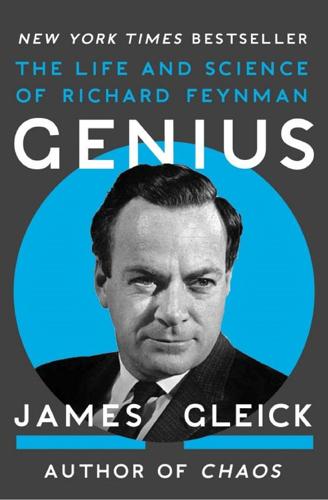
Genius: The Life and Science of Richard Feynman
by
James Gleick
Published 1 Jan 1992
F-W, 800–801. 378 THE WESTERN UNION “TELEFAX": Erik Rundberg to Feynman, 21 October 1965, PERS. 378 THE FIRST CALL HAD COME: F-W, 801; “Dr. Richard Feynman Nobel Laureate!” California Tech, 22 October 1965, 1. 378 WILL YOU PLEASE TELL US: F-W, 804. 378 WHAT APPLICATIONS DOES THIS PAPER: “Dr. Richard Feynman Nobel Laureate!” 378 LISTEN, BUDDY, IF I COULD TELL YOU: F-W, 804. 378 JULIAN SCHWINGER CALLED: Schwinger, interview. 378 I THOUGHT YOU WOULD BE HAPPY: Feynman to Lucille Feynman, n.d., PERS. 379 [FEYNMAN:] CONGRATULATIONS: “Dr. Richard Feynman Nobel Laureate!” 379 THERE WERE CABLES FROM SHIPBOARD: F-W, 806. 379 HE PRACTICED JUMPING BACKWARD: Ibid., 808–9. 380 FEYNMAN REALIZED THAT HE HAD NEVER READ: Ibid., 812. 380 HE BELIEVED THAT HISTORIANS: Feynman 1965a. 380 WE HAVE A HABIT IN WRITING: Ibid. 380 AS I WAS STUPID: Ibid. 381 THE CHANCE IS HIGH: Feynman 1965c. 381 I DISCOVERED A GREAT DIFFICULTY: Ibid. 382 THE ODDS THAT YOUR THEORY: Feynman 1965a. 382 DR.
…
Genius The Life and Science of Richard Feynman James Gleick For my mother and father, Beth and Donen I was born not knowing and have only had a little time to change that here and there. —Richard Feynman CONTENTS PROLOGUE FAR ROCKAWAY •Neither Country nor City •A Birth and a Death •It’s Worth It •At School •All Things Are Made of Atoms •A Century of Progress •Richard and Julian MIT • The Best Path • Socializing the Engineer • The Newest Physics • Shop Men • Feynman of Course Is Jewish • Forces in Molecules • Is He Good Enough? PRINCETON • A Quaint Ceremonious Village • Folds and Rhythms • Forward or Backward?
…
London: Walter Scott. Lopes, J. Leite. 1988. “Richard Feynman in Brazil: Recollections.” Manuscript. Lopes, J. Leite, and Feynman, Richard. 1952. “On the Pseudoscalar Meson Theory of the Deuteron.” Symposium on New Research Techniques in Physics, 251. Macfarlane, Gwyn. 1984. Alexander Fleming: The Man and the Myth. London: Hogarth Press. Mach, Ernst. 1960. The Science of Mechanics: A Critical and Historical Account of Its Development. Translated by Thomas J. McCormack. Lasalle, Ill.: Open Court. Maddox, John. 1988. “The Death of Richard Feynman.” Nature 331:653. Mann, Thomas. 1927. The Magic Mountain.
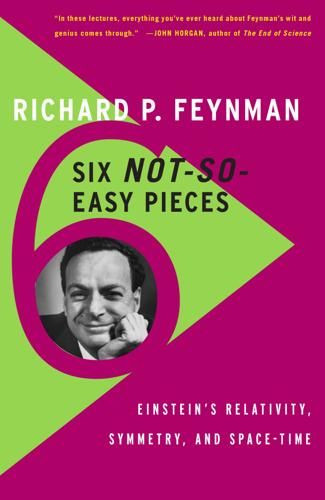
Six Not-So-Easy Pieces: Einstein’s Relativity, Symmetry, and Space-Time
by
Richard P. Feynman
,
Robert B. Leighton
and
Matthew Sands
Published 22 Mar 2011
He was a showman, certainly, sometimes even a clown; but his overriding purpose was always serious. And what more serious purpose can there be than the understanding of the nature of our universe at its deepest levels? At conveying this understanding, Richard Feynman was supreme. ROGER PENROSE December 1996 SPECIAL PREFACE (from The Feynman Lectures on Physics) Toward the end of his life, Richard Feynman’s fame had transcended the confines of the scientific community. His exploits as a member of the commission investigating the space shuttle Challenger disaster gave him widespread exposure; similarly, a best-selling book about his picaresque adventures made him a folk hero almost of the proportions of Albert Einstein.
…
He also authored a number of advanced publications that have become classic references and textbooks for researchers and students. Richard Feynman was a constructive public man. His work on the Challenger commission is well-known, especially his famous demonstration of the susceptibility of the O-rings to cold, an elegant experiment which required nothing more than a glass of ice water. Less well-known were Dr. Feynman’s efforts on the California State Curriculum Committee in the 1960s where he protested the mediocrity of textbooks. A recital of Richard Feynman’s myriad scientific and educational accomplishments cannot adequately capture the essence of the man.
…
2-8 Antimatter 2-9 Broken symmetries Chapter 3 - THE SPECIAL THEORY OF RELATIVITY 3-1 The principle of relativity 3-2 The Lorentz transformation 3-3 The Michelson-Morley experiment 3-4 Transformation of time 3-5 The Lorentz contraction 3-6 Simultaneity 3-7 Four-vectors 3-8 Relativistic dynamics 3-9 Equivalence of mass and energy Chapter 4 - RELATIVISTIC ENERGY AND MOMENTUM 4-1 Relativity and the philosophers 4-2 The twin paradox 4-3 Transformation of velocities 4-4 Relativistic mass 4-5 Relativistic energy Chapter 5 - SPACE-TIME 5-1 The geometry of space-time 5-2 Space-time intervals 5-3 Past, present, and future 5-4 More about four-vectors 5-5 Four-vector algebra Chapter 6 - CURVED SPACE 6-1 Curved spaces with two dimensions 6-2 Curvature in three-dimensional space 6-3 Our space is curved 6-4 Geometry in space-time 6-5 Gravity and the principle of equivalence 6-6 The speed of clocks in a gravitational field 6-7 The curvature of space-time 6-8 Motion in curved space-time 6-9 Einstein’s theory of gravitation INDEX ABOUT RICHARD FEYNMAN Copyright Page Also by Richard P. Feynman The Character of Physical Law Elementary Particles and the Laws of Physics: The 1986 Dirac Memorial Lectures (with Steven Weinberg) Feynman Lectures on Computation (edited by Anthony J. G. Hey and Robin Allen) Feynman Lectures on Gravitation (with Fernando B.
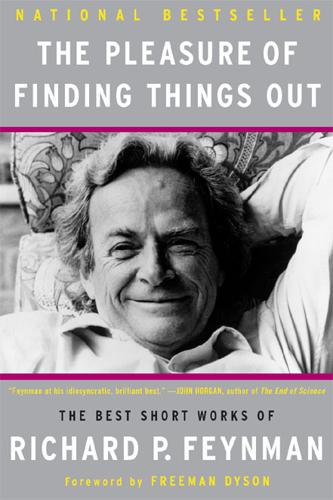
The Pleasure of Finding Things Out: The Best Short Works of Richard P. Feynman
by
Richard P. Feynman
and
Jeffrey Robbins
Published 1 Jan 1999
And I wonder what the hell it must look like to the students. 12 RICHARD FEYNMAN BUILDS A UNIVERSE In a previously unpublished interview made under the auspices of the American Association for the Advancement of Science, Feynman reminisces about his life in science: his terrifying first lecture to a Nobel laureate-packed room; the invitation to work on the first atomic bomb and his reaction; cargo-cult science; and that fateful predawn wake-up call from a journalist informing him that he’d just won the Nobel prize. Feynman’s answer: “You could have told me that in the morning.” NARRATOR: Mel Feynman was a salesman for a uniform company in New York City. On May 11, 1918, he welcomed the birth of his son Richard. Forty-seven years later, Richard Feynman received the Nobel Prize for Physics. In many ways, Mel Feynman had a lot to do with that accomplishment, as Richard Feynman relates. FEYNMAN: Well, before I was born, he [my father] said to my mother that “this boy is going to be a scientist.” You can’t say things like that in front of women’s lib these days, but that is what they said in those days.
…
Yet I must not give Nature all: Thy art, My gentle Shakespeare, must enjoy a part. For though the poet’s matter nature be, His art does give the fashion; and, that he Who casts to write a living line, must sweat, . . . For a good poet’s made, as well as born.” What have Jonson and Shakespeare to do with Richard Feynman? Simply this. I can say as Jonson said, “I did love this man this side idolatry as much as any.” Fate gave me the tremendous luck to have Feynman as a mentor. I was the learned and scholarly student who came from England to Cornell University in 1947 and was immediately entranced by the slapdash genius of Feynman.
…
To put this result in perspective, it is as if Galileo had dropped his cannonballs from the Tower of Pisa and they took two years to reach the ground. I was left breathless by the lecture (even Einstein would have been impressed, I think). For the first time in my life I felt a smidgen of what Richard Feynman called “the kick in the discovery,” the sudden feeling (probably akin to an epiphany, albeit in this case a vicarious one) that I had grasped a wonderful new idea, that there was something new in the world; that I was present at a momentous scientific event, no less dramatic or exciting than Newton’s feeling when he realized that the mysterious force that caused that apocryphal apple to land on his head was the same force that caused the moon to orbit the earth; or Feynman’s when he achieved that first grudging step toward understanding the nature of the interaction between light and matter, which led eventually to his Nobel Prize.
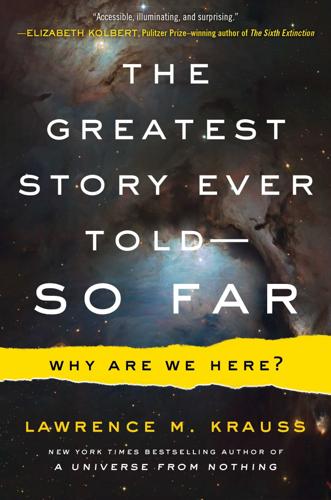
The Greatest Story Ever Told--So Far
by
Lawrence M. Krauss
Published 21 Mar 2017
While they may be strange, the connections unearthed by Einstein and Minkowski can be intuitively understood—given the constancy of the speed of light—as I have tried to demonstrate. Far less intuitive was the next discovery, which was that on very small scales, nature behaves in a way that human intuition cannot ever fully embrace, because we cannot directly experience the behavior itself. As Richard Feynman once argued, no one understands quantum mechanics—if by understand one means developing a concrete physical picture that appears fully intuitive. Even many years after the rules of quantum mechanics were discovered, the discipline would keep yielding surprises. For example, in 1952 the astrophysicist Hanbury Brown built an apparatus to measure the angular size of large radio sources in the sky.
…
It was not the proper description when relativistic effects needed to be taken into account. Ultimately Dirac succeeded where all others had failed, and the equation he discovered, one of the most important in modern particle physics, is, not surprisingly, called the Dirac equation. (Some years later, when Dirac first met the physicist Richard Feynman, whom we shall come to shortly, Dirac said after another awkward silence, “I have an equation. Do you?”) Dirac’s equation was beautiful, and as the first relativistic treatment of the electron, it allowed correct and precise predictions for the energy levels of all electrons in atoms, the frequencies of light they emit, and thus the nature of all atomic spectra.
…
He had little physical intuition to back it up, which is one reason why Dirac himself and others were initially so skeptical of his result. Clarifying the physical imperative for antimatter came through the work of one of the most important physicists of the latter half of the twentieth century, Richard Feynman. Feynman could not have been more different from Dirac. While Dirac was taciturn in the extreme, Feynman was gregarious and a charming storyteller. While Dirac rarely, if ever, intentionally joked, Feynman was a prankster who openly enjoyed every aspect of life. While Dirac was too shy to meet women, Feynman, after the death of his first wife, sought out female companions of every sort.
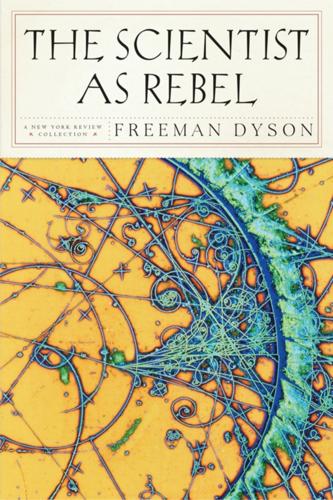
The Scientist as Rebel
by
Freeman Dyson
Published 1 Jan 2006
Review of Flo Conway and Jim Siegelman, Dark Hero of the Information Age: In Search of Norbert Wiener, the Father of Cybernetics (Basic Books, 2005), in The New York Review of Books, July 14, 2005. 23. Review of Richard Feynman, Perfectly Reasonable Deviations from the Beaten Track: The Letters of Richard P. Feynman, edited and with an introduction by Michelle Feynman (Basic Books, 2005), in The New York Review of Books, October 20, 2005. 24. Bernal Lecture given at Birkbeck College, London, May 1972, published as Appendix D, pp. 371–389, to Communication with Extraterrestrial Intelligence, edited by Carl Sagan (MIT Press, 1973). 25. Review of Richard Feynman, The Meaning of it All: Thoughts of a Citizen-Scientist (Addison-Wesley, 1998); and John Polkinghorne, Belief in God in an Age of Science (Yale University Press, 1998), in The New York Review of Books, May 28, 1998. 26.
…
Norbert Wiener (Chapter 22) was a great mathematician who refused on moral grounds to have anything to do with either industry or government. Desmond Bernal (Chapter 24) was one of the founding fathers of molecular biology, and also a faithful member of the Communist Party and a passionate believer in Marxism. Three chapters (23, 25, and 26) are devoted to my teacher Richard Feynman, the physicist who most closely resembled Eric James. Feynman was another rebellious spirit who combined a serious dedication to science with joyful adventures in the world outside. The scientist who described most eloquently the role of the rebel in science was the paleontologist Loren Eiseley.
…
On a much more humble level, my own activities as a theoretical physicist have a similar quality. When I am working, I feel myself to be practicing a craft rather than following a method. When I did my most important piece of work as a young man, putting together the ideas of Sin-Itiro Tomonaga, Julian Schwinger, and Richard Feynman to obtain a simplified version of quantum electrodynamics, I had consciously in mind a metaphor to describe what I was doing. The metaphor was bridge-building. Tomonaga and Schwinger had built solid foundations on one side of a river of ignorance, Feynman had built solid foundations on the other side, and my job was to design and build the cantilevers reaching out over the water until they met in the middle.
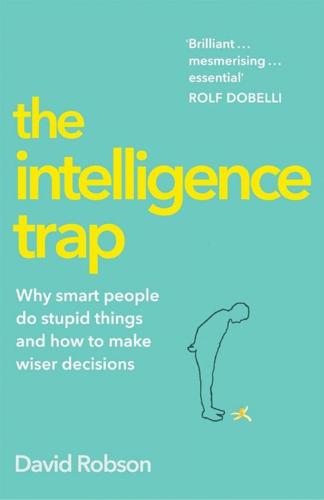
The Intelligence Trap: Revolutionise Your Thinking and Make Wiser Decisions
by
David Robson
Published 7 Mar 2019
Norton. 2 The following article, an interview with one of Feynman’s former students, offers this interpretation: Wai, J. (2011), ‘A Polymath Physicist on Richard Feynman’s “Low” IQ and Finding another Einstein’, Psychology Today, https://www.psychologytoday.com/blog/finding-the-next-einstein/201112/polymath-physicist-richard-feynmans-low-iq-and-finding-another. 3 Gleick, J. (1992), Genius: Richard Feynman and Modern Physics (Kindle Edition), pp. 30?5. 4 Gleick, J. (17 February 1988), ‘Richard Feynman Dead at 69: Leading Theoretical Physicist’, New York Times, http://www.nytimes.com/1988/02/17/obituaries/richard-feynman-dead-at-69-leading-theoretical-physicist.html?pagewanted=all. 5 The Nobel Prize in Physics 1965: https://www.nobelprize.org/nobel_prizes/physics/laureates/1965/. 6 Kac, M. (1987), Enigmas of Chance: An Autobiography, Berkeley, CA: University of California Press, p. xxv. 7 Gleick, ‘Richard Feynman Dead at 69’. 8 Feynman, R.P. (1999), The Pleasure of Finding Things Out, New York: Perseus Books, p. 3. 9 Feynman, R.P. (2006), Don’t You Have Time to Think, ed.
…
He devoured the family encyclopaedia, and as a young adolescent he soon took to teaching himself from a series of mathematics primers – filling his notebooks with trigonometry, calculus and analytic geometry, often creating his own exercises to stretch his mind.3 When he moved to the Far Rockaway High School, he joined a physics club and entered the Interscholastic Algebra League. He eventually reached the top place in New York University’s annual maths championship – ahead of students from all the city’s schools. The next year, he began his degree at MIT – and the rest is history. Schoolchildren would later learn Ritty’s full name – Richard Feynman ? as one of the most influential physicists of the twentieth century. His new approach to the field of quantum electrodynamics revolutionised the study of subatomic particles4 – research that won him a Nobel Prize in 1965 with Sin-Itiro Tomonaga and Julian Schwinger.5 (It was an accolade that none of Terman’s cohort would achieve.)
…
Once we understand what they have done, we feel certain that we, too, could have done it. It is different with magicians . . . the working of their minds is for all intents and purposes incomprehensible. Even after we understand what they have done, the process by which they have done it is completely dark . . . Richard Feynman is a magician of the highest calibre.’6 But Feynman’s genius did not end with physics. During a sabbatical from his physics research at Caltech, he applied himself to the study of genetics, discovering the ways that some mutations within a gene may suppress each other. Despite his apparent inaptitude for drawing and foreign languages, he later learnt to be a credible artist, to speak Portuguese and Japanese, and to read Mayan hieroglyphs – all with the relentlessness that had driven his education as a child.
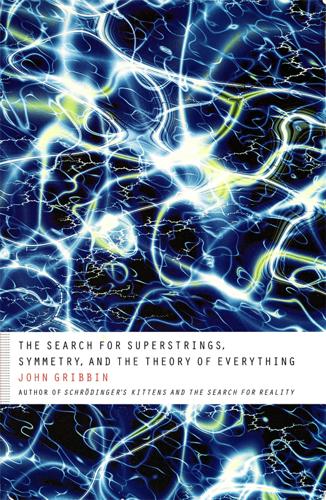
The Search for Superstrings, Symmetry, and the Theory of Everything
by
John Gribbin
Published 29 Nov 2009
We cannot know, not even in principle, both the position and momentum of a particle simultaneously. There is an inherent uncertainty about where the particle is going, and if a particle starts out at point A and is later detected at point B we cannot know exactly how it got from A to B, unless it is watched all the way along its path. Richard Feynman, a Nobel Prize-winning physicist from the California Institute of Technology, applied this quantum-mechanical view to the history of particles as presented in the kind of space-time diagrams used by relativists. These are diagrams like graphs, with one axis representing time and the other space.
…
But each path, direct or circuitous, fast or slow, has associated with it a definite probability (strictly speaking a ‘probability amplitude’), which can be calculated. The amplitudes are measured in terms of a quantity called action, which is energy×time, and which happens to be the unit Planck's constant, h, is measured in. Figure 1.5 Classical (that is Newtonian) physics says that a particle follows a definite trajectory from A to B. Richard Feynman's quantum mechanical ‘sum over histories’ approach says that we must calculate the contribution of every possible path and add them together. Also known as the ‘path integral’ approach, this explains, among other things, how a single electron (or a single photon) can pass through both holes in a double-slit experiment (see Figure 1.2) and interfere with itself.
…
He then moved to Caltech, to begin his career in research, and spent three years struggling with a high energy experiment at an accelerator called the Bevatron, before he decided to concentrate on theory and began to investigate physicists’ understanding of the nature of the material world, under the guidance of Richard Feynman. As a newcomer to the field, he perhaps lacked some of the caution, or tact, of his elders, and when he realized that the eightfold way patterns of mesons and baryons could be explained in terms of combinations of two or three sub-particles, he immediately treated these sub-particles as real entities, which he called aces, and described them as such in his work.
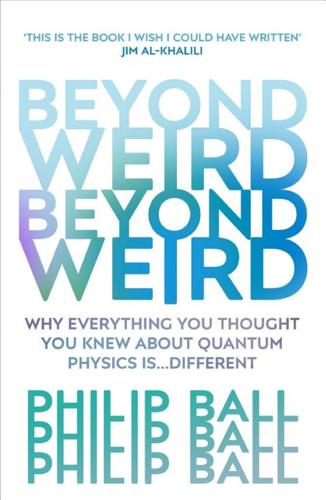
Beyond Weird
by
Philip Ball
Published 22 Mar 2018
Niels Bohr [Quantum mechanics] is a peculiar mixture describing in part4 realities of Nature, in part incomplete human information about Nature – all scrambled up by Heisenberg and Bohr into an omelette that nobody has seen how to unscramble. Edwin Jaynes Arguably the most important lesson of quantum mechanics5 is that we need to critically revisit our most basic assumptions about nature. Yakir Aharonov et al. I hope you can accept Nature as she is – absurd.6 Richard Feynman “I think I can safely say that nobody understands quantum mechanics.” Richard Feynman said that in 1965. In the same year he was awarded the Nobel Prize in Physics, for his work on quantum mechanics. In case we didn’t get the point, Feynman drove it home in his artful Everyman style. ‘I was born not understanding quantum mechanics8,’ he exclaimed merrily, ‘[and] I still don’t understand quantum mechanics!’
…
Contents Cover About the Book About the Author Title Page By way of introduction … No one can say what quantum mechanics means (and this is a book about it) Quantum mechanics is not really about the quantum Quantum objects are neither wave nor particle (but sometimes they might as well be) Quantum particles aren’t in two states at once (but sometimes they might as well be) What ‘happens’ depends on what we find out about it There are many ways of interpreting quantum theory (and none of them quite makes sense) Whatever the question, the answer is ‘Yes’ (unless it’s ‘No’) Not everything is knowable at once The properties of quantum objects don’t have to be contained within the objects There is no ‘spooky action at a distance’ The everyday world is what quantum becomes at human scales Everything you experience is a (partial) copy of what causes it Schrödinger’s cat has had kittens Quantum mechanics can be harnessed for technology Quantum computers don’t necessarily perform ‘many calculations at once’ There is no other ‘quantum’ you Things could be even more ‘quantum’ than they are (so why aren’t they)? The fundamental laws of quantum mechanics might be simpler than we imagine Can we ever get to the bottom of it? Notes Acknowledgements Bibliography Index Copyright About the Book ‘I think I can safely say that nobody understands quantum mechanics.’ Richard Feynman wrote this in 1965 – the year he was awarded the Nobel prize in physics for his work on quantum mechanics. Quantum physics is regarded as one of the most obscure and impenetrable subjects in all of science. But when Feynman said he didn’t understand quantum mechanics, he didn’t mean that he couldn’t do it – he meant that’s all he could do.
…
But neither, in that case, would be a career in fluid mechanics, population dynamics, or economics, which are equally inscrutable to the numerically challenged. No, the equations aren’t why quantum mechanics is perceived to be so hard. It’s the ideas. We just can’t get our heads around them. Neither could Richard Feynman. His failure, Feynman admitted, was to understand what the maths was saying. It provided numbers: predictions of quantities that could be tested against experiments, and which invariably survived those tests. But Feynman couldn’t figure out what these numbers and equations were really about: what they said about the ‘real world’.
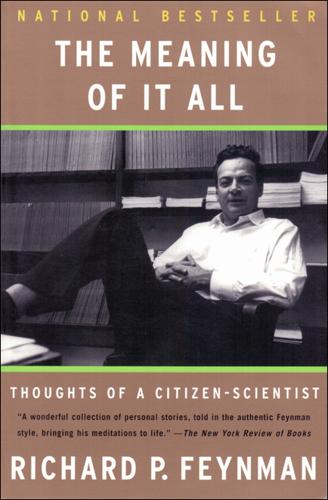
The Meaning of It All
by
Richard P. Feynman
Published 8 Jul 2012
He also authored a number of advanced publications that have become classic references and textbooks for researchers and students. Richard Feynman was a constructive public man. His work on the Challenger commission is well known, especially his famous demonstration of the susceptibility of the O-rings to cold, an elegant experiment, which required nothing more than a glass of ice water. Less well known were Dr. Feynman’s efforts on the California State Curriculum Committee in the 1960s where he protested the mediocrity of textbooks. A recital of Richard Feynman's myriad scientific and educational accomplishments cannot adequately capture the essence of the man.
…
For more information, please contact the Special Markets Department at the Perseus Books Group, 11 Cambridge Center, Cambridge, MA 02412, or call (800) 255–1514 or (617) 252–5298, or e-mail special.markets@perseusbooks.com. 05 06 07 / 10 9 8 7 6 5 4 3 2 1 CONTENTS Publisher’s Note The Uncertainty of Science The Uncertainty of Values This Unscientific Age Index About Richard Feynman PUBLISHER’S NOTE In April 1963, Richard P. Feynman was invited to give a three-night series of lectures at the University of Washington (Seattle) as part of the John Danz Lecture Series. Here is Feynman the man revealing, as only he could, his musings on society, on the conflict between science and religion, on peace and war, on our universal fascination with flying saucers, on faith healing and telepathy, on people’s distrust of politicians—indeed on all the concerns of the modern citizen-scientist.
…
Research Associates, 102, 105 Statistical sampling, 84, 89–91 Stupidity, phenomena result of a general, 95 Systems, traffic, 118 Technology applications of, 62 and science, 50 Telekinesis, 68 Telepathy, mental, 71–74 Television advertising in, 85 looker, intelligence of average, 87–88 Testing, nuclear, 106–7 Theories, allowing for alternative, 69 Thoroughness, concept of, 17 Tops, spinning, 24–26 Traffic systems, 118 Troubles and lack of information, 91 Truth of ideas, 21 writing, 56 Uncertainties admission of, 34 dealing with, 66–67, 71 relative certainties out of, 98 remaining, 70–71 of science, 1–28 scientists dealing with, 26–27 of values, 29–57 Uncertainty, 67–68 Universe contemplation of, 39 origins of, 12 Unscientific age, 59–122 Values ethical, 43 moral, 120–21 uncertainty of, 29–57 Venus flying saucers from, 75 Mariner II voyage to, 109–12 Vocabulary, 116 War, dislike of, 32 Water, and deserts, 96 Weight, as not affected by motion, 24 Western civilization, 47 Witch doctors, 114 Words, as meaningless, 20 Writing truth, 56 ABOUT RICHARD FEYNMAN Born in 1918 in Brooklyn, Richard P. Feynman received his Ph.D. from Princeton in 1942. Despite his youth, he played an important part in the Manhattan Project at Los Alamos during World War II. Subsequently, he taught at Cornell and at the California Institute of Technology. In 1965 he received the Nobel Prize in Physics, along with Sin–Itero Tomanaga and Julian Schwinger, for his work in quantum electrodynamics.
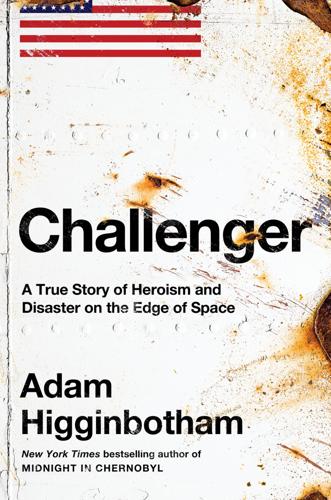
Challenger: A True Story of Heroism and Disaster on the Edge of Space
by
Adam Higginbotham
Published 14 May 2024
satisfied that everything: Weeks, R-NARA, April 7, 1986, 35. In describing his exchange with George Hardy, Weeks later told investigators, “And maybe even the ablest man I knew at the agency could err.” Separately, Weeks told Richard Feynman: “In most calamities, nature has given us a warning,” foreshadowing the physicist’s own conclusions. (Feynman personal notes dated “Sunday March 29, 1985,” http://natedsanders.com/Richard_Feynman_Handwritten_Diary_Style_Document__-LOT60358.aspx.) Back in Utah: Boisjoly, Challenger Book Material, 304–5, 307. “Hooray for the management”: Boisjoly, “Notebook #1”, September 11, 1985, JSTC, Box Two, Roger Boisjoly Material.
…
Meanwhile, the dozen: RCR, vol. I, 207–8; Feynman, “What Do You Care What Other People Think?,” 199. While continuing his work: Gleick, Genius, 426. he scribbled notes on: “Richard Feynman 4pp. Handwritten Document From the Challenger Investigation—Feynman’s Detailed Notes for 4 Days Spanning 7–10 February 1986, Leading Up to & Including Discovery of O-Ring Failure,” Nate D. Sanders Auctions, http://natedsanders.com/richard_feynman_4pp__handwritten_document_from_the-lot61780.aspx. To the growing irritation: Keel, author interview, October 21, 2020. He chose: Feynman, “What Do You Care What Other People Think?
…
Richard “Dick” Covey Bob Crippen Anna Fisher Robert “Hoot” Gibson Frederick Gregory Henry “Hank” Hartsfield Frederick “Rick” Hauck Bruce McCandless II Ron McNair Story Musgrave George “Pinky” Nelson Ellison Onizuka Judy Resnik Sally Ride Francis “Dick” Scobee Rhea Seddon Mike Smith James “Ox” van Hoften The Space Participants Jake Garn Greg Jarvis Christa McAuliffe Barbara Morgan Bill Nelson The Rogers Commission William Rogers Chairman Neil Armstrong Vice Chairman Dr. Richard Feynman Nobel Prize–winning physicist General Donald Kutyna, U.S. Air Force Former head of Pentagon shuttle operations Titles in January 1986 unless otherwise noted. PROLOGUE Flight Control Room Two Johnson Space Center, Houston January 28, 1986, 8:30 a.m. The coffee, as usual, was terrible: bitter and thin, the color of tea; almost certainly undrinkable.
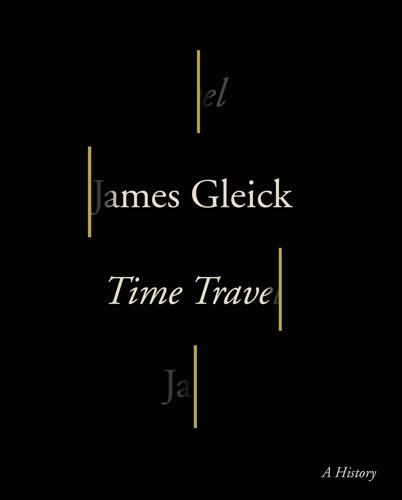
Time Travel: A History
by
James Gleick
Published 26 Sep 2016
ALSO BY JAMES GLEICK Chaos: Making a New Science Genius: The Life and Science of Richard Feynman Faster: The Acceleration of Just About Everything What Just Happened: A Chronicle from the Information Frontier Isaac Newton The Information: A History, a Theory, a Flood Copyright © 2016 by James Gleick All rights reserved. Published in the United States by Pantheon Books, a division of Penguin Random House LLC, New York, and distributed in Canada by Random House of Canada, a division of Penguin Random House Canada Limited, Toronto. Pantheon Books and colophon are registered trademarks of Penguin Random House LLC.
…
He also says, “Time is the label we stick on different moments in the life of the world.” Physicists like this bumper-sticker game. John Archibald Wheeler is supposed to have said, “Time is nature’s way to keep everything from happening all at once,” but Woody Allen said that, too, and Wheeler admitted having found it scrawled in a Texas men’s room.*3 Richard Feynman said, “Time is what happens when nothing else happens,” which he knew was a wisecrack. “Maybe it is just as well if we face the fact that time is one of the things we probably cannot define (in the dictionary sense), and just say that it is what we already know it to be: it is how long we wait.”
…
Events in our universe can be connected, such that one is the cause of the other, but, alternatively, they can be close enough in time and far enough apart that they cannot be connected and no one can even say which came first. (Outside the light cone, says the physicist.) We are more isolated, then, than we may have imagined, alone in our corners of spacetime. You know how fortune-tellers pretend to know the future? It turns out, said Richard Feynman, that no fortune-teller can even know the present. Einstein’s powerful ideas spread in the public press as rapidly as in the physics journals and disrupted the placid course of philosophy. The philosophers were surprised and outgunned. Bergson and Einstein clashed publicly in Paris and privately by post and seemed to be speaking different languages: one scientific, measured, practical; the other psychological, flowing, untrustworthy. “ ‘The time of the universe’ discovered by Einstein and ‘the time of our lives’ associated with Bergson spiraled down dangerously conflicting paths, splitting the century into two cultures,” notes the science historian Jimena Canales.
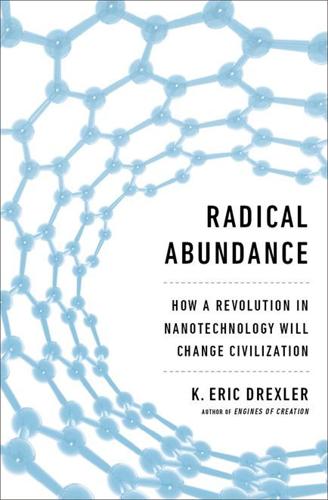
Radical Abundance: How a Revolution in Nanotechnology Will Change Civilization
by
K. Eric Drexler
Published 6 May 2013
These include favorable reaction kinetics and thermodynamics, adequate mechanical stiffness, and substantial geometrical separations between transition states leading to alternative reaction outcomes; each of these requirements stems from the need to constrain thermal fluctuations. 82The methods of organic chemistry aren’t widely understood: In his 1959 talk, Richard Feynman joked that “The chemist does a mysterious thing when he wants to make a molecule. He sees that it has got that ring, so he mixes this and that, and he shakes it, and he fiddles around. And, at the end of a difficult process, he usually does succeed in synthesizing what he wants.” (Richard Feynman, “There’s Plenty of Room at the Bottom,” Engineering and Science 23, no. 5 [1960].) Chapter 7: Science and the Timeless Landscape of Technology 90a timeless aspect of physical law, a latent structure: Scientific understanding of physical law has changed over time, but physical law itself has not, and within the accuracy of both laboratory measurement and cosmological observation, “physical constants” do indeed appear to be constant. 96Over the last four hundred or so years: Sean Carroll, “Cosmic Variance” blog at Discover Magazine, 16 June 2010 (http://blogs.discovermagazine.com/cosmicvariance/2010/06/16/reluctance-to-let-go/).
…
Over the years, more and more biomolecular structures have been mapped in atomic detail, first a few in the 1950s, and today, tens of thousands, earning Nobel Prizes for James Watson, Francis Crick, and Maurice Wilkins for their discovery of the structure of DNA and for John Kendrew and Max Perutz for their use of X-ray diffraction techniques to provide the first atomically precise maps of protein structures. This emerging knowledge of biomolecular machinery intrigued Richard Feynman. At Caltech in 1959, speaking after dinner at a meeting of the American Physical Society, Feynman discussed the physics of artificial micro- and nanoscale machinery, “inspired by the biological phenomena in which chemical forces are used in a repetitious fashion to produce all kinds of weird effects (one of which is the author).”
…
Some world leaders regard nanotechnology as a crucial part of the future and share a vision linked to my work. For example, when the president of India, Dr. Abdul Kalam, who had formerly led India’s missile and space program, delivered a series of addresses in which he spoke of nanotechnology as India’s future, he cited both Richard Feynman’s talk, “There’s Plenty of Room at the Bottom” and my technical book, Nanosystems. In 2001 I met Dmitry Medvedev, president of Russia, after he delivered an address on nanotechnology at the opening session of Rusnanotech 2011; he had read my first book, Engines of Creation. More than a decade ago, in support of a vision of atomically precise fabrication, President Clinton announced a plan for the world’s first national nanotechnology program; today, China’s program has a larger (and rapidly growing) budget.
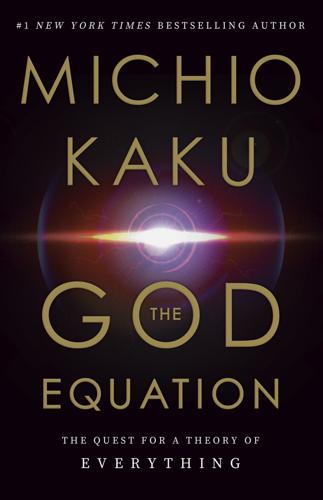
The God Equation: The Quest for a Theory of Everything
by
Michio Kaku
Published 5 Apr 2021
Even Schrödinger, who had introduced the concept of the electron wave in the first place, rejected this probabilistic interpretation of his very own equations. Even today, there are arguments among physicists debating the philosophical implications of the wave theory. How can you be two places at the same time? Nobel laureate Richard Feynman once said, “I think I can safely say that nobody understands quantum mechanics.” Ever since Newton, physicists believed in something called determinism, the philosophy that all future events can be accurately predicted. The laws of nature determine the motion of all things in the universe, making them ordered and predictable.
…
So there was an essential flaw in simply combining the Dirac equation of electrons and Maxwell’s theory of photons. This haunted physicists for nearly two decades. Many physicists worked on this problem, but little progress was made. Finally, in 1949, three young physicists working independently, Richard Feynman and Julian Schwinger in the United States, and Shin’Ichiro Tomonaga in Japan, cracked this long-standing problem. They were spectacularly successful, able to compute things like the magnetic property of the electron with enormous accuracy. But the way they did it was controversial and still causes physicists some unease and consternation even today.
…
Einstein, we recall, introduced a four-dimensional symmetry that turned space into time and vice versa. Gell-Mann introduced equations containing three quarks; when you interchanged them inside an equation, the equation remained the same. This new symmetry described the reshuffling of three quarks. Polar Opposites II The other great physicist at Caltech, Richard Feynman, who renormalized QED, and Murray Gell-Mann, who introduced the quark, were polar opposites in their personality and temperament. In the popular media, physicists are universally portrayed either as mad scientists (like Doc Brown in Back to the Future) or hopelessly inept nerds, as in The Big Bang Theory.
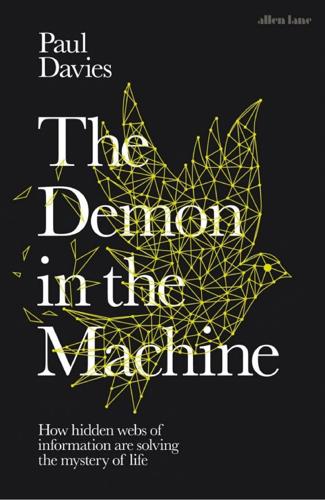
The Demon in the Machine: How Hidden Webs of Information Are Finally Solving the Mystery of Life
by
Paul Davies
Published 31 Jan 2019
Entropy is always generated: in the former case from the conversion of the driving energy into heat; in the latter from the entropy of information processing and memory erasure. There is no free lunch. But by ratcheting ahead instead of simply ‘jet-packing’ its cargo through the molecular barrage, the lunch bill for kinesin is greatly reduced. Box 5: Feynman’s ratchet An attempt to replace Maxwell’s demon by a purely passive device was made by Richard Feynman. He considered a ratchet of the sort employed by mechanical clockwork (needed so the hands don’t turn anticlockwise; see Fig. 7). It involves a toothed wheel with a spring-loaded pawl to stop the wheel slipping backwards. Critical to the operation of the ratchet is the asymmetry of the teeth: they have a steep side and a shallow side.
…
Nature also discovered digital information processing billions of years before humans invented the computer. Today, we are on the threshold of a new technological revolution, and one that promises changes as sweeping as those that followed the advent of the digital computer. I am referring to the long-sought-after quantum computer. The essential idea was captured by Richard Feynman in a futuristic lecture entitled ‘Simulating Physics with Computers’ delivered at the University of California, Berkeley, in 1982.1 Feynman pointed out that when conventional computers are used to model fundamentally quantum mechanical objects such as molecules, they struggle with the sheer computational resources needed to keep track of everything.
…
Müller (eds.), Evolution, the Extended Synthesis (MIT Press, 2010) Trygve Tollefsbol (ed.), Handbook of Epigenetics (Academic Press, 2011) Andreas Wagner, Arrival of the Fittest (Current, 2014) Robert A. Weinberg, The Biology of Cancer (Garland Science, 2007) Edward Wilson, The Meaning of Human Existence (Liveright, 2015) 5. SPOOKY LIFE AND QUANTUM DEMONS Derek Abbott, Paul Davies and Arun Patti (eds.), Quantum Aspects of Life (Imperial College Press, 2008) Richard Feynman, ‘Simulating physics with computers’, International Journal of Theoretical Physics, vol. 21, nos. 6/7 (1982) Johnjoe McFadden and Jim Al-Khalili, Life on the Edge: The Coming of Age of Quantum Biology (Bantam Press, 2014) Masoud Mohseni, Yasser Omar, Gregory S. Engel and Martin B. Plenio (eds.), Quantum Effects in Biology (Cambridge University Press, 2014) Leonard Susskind and Art Friedman, Quantum Mechanics: The Theoretical Minimum (Basic Books, 2015) Peter G.
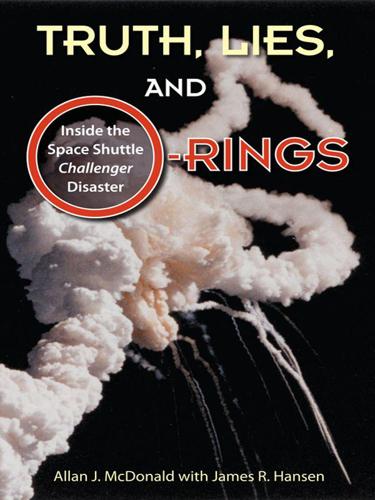
Truth, Lies, and O-Rings: Inside the Space Shuttle Challenger Disaster
by
Allan J McDonald
and
James R. Hansen
Published 25 Apr 2009
The NASA Select TV channel was broadcasting live the first meeting of the Presidential Commission on the Space Shuttle Challenger Accident. The chairman of the Presidential Commission was William P. Rogers, former Secretary of State for President Nixon. Other members were Neil Armstrong, Vice-Chairman and former astronaut and first man to walk on the Moon; Dr. Richard Feynman, a Nobel Prize winner in physics from California Institute of Technology; General Donald J. Kutyna, Commander of the U.S. Air Force Space Systems Command in Los Angeles; Dr. Sally Ride, NASA astronaut and first American woman in space; Dr. Eugene Covert, head of the Department of Aeronautics and Astronautics at the Massachusetts Institute of Technology (MIT); Robert Hotz, former publisher of Aviation Week and Space Technology magazine; Dr.
…
You recommended against a flight on one night and then have meetings with NASA people and they seem anxious to go ahead, or at least they were asking questions about it, and they gave you some data and you checked back to your home office and you got word back from home office to go-ahead because the evidence is inconclusive!” “He said something about having something,” Commission member Richard Feynman noted. “He does have some data there from the people who made the decision, I guess,” Rogers allowed. “I have some of that, but I also have the material that was reviewed at the meeting by all three parties, because I was party to that.” “Which meeting now are we talking about?” Rogers asked.
…
The flight rationale for STS-51L stated that the ability of the primary O-ring seal could be seriously degraded by the cold temperatures, but that the secondary O-ring would seal, which was in total violation of the established critical items list and should have required a waiver from the Mission Management Team prior to launch. The critical items list did not address O-ring resiliency even though it was an even more important issue relative to the ability of the O-rings to seal at the cold temperatures forecast for this launch—and this issue should also have been addressed in the waiver. Physicist Richard Feynman was very interested in the dynamics of the field-joint, particularly the pressure actuation and extrusion of the O-rings into the gap created by the motor pressure. I explained to Dr. Feynman how this occurred and why it was so important to understand the timing function in the early phases of ignition for assessing the ability of the O-rings to seal properly.
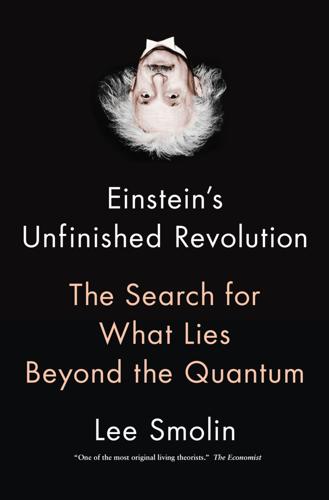
Einstein's Unfinished Revolution: The Search for What Lies Beyond the Quantum
by
Lee Smolin
Published 31 Mar 2019
Classification: LCC QC174.13 (ebook) | LCC QC174.13 .S6545 2019 (print) | DDC 530.12--dc23 LC record available at https://lccn.loc.gov/2018045679 Version_2 For Dina and Kai All a musician can do is to get closer to the sources of nature, and so feel that he is in communion with the natural laws. —JOHN COLTRANE I can safely say that nobody understands quantum mechanics. —RICHARD FEYNMAN Contents Also by Lee Smolin Title Page Copyright Dedication Epigraph Preface PART 1. AN ORTHODOXY OF THE UNREAL ONE Nature Loves to Hide TWO Quanta THREE How Quanta Change FOUR How Quanta Share FIVE What Quantum Mechanics Doesn’t Explain SIX The Triumph of Anti-Realism PART 2.
…
A nuclear theorist and a mystic, he transmitted the legacies of Albert Einstein and Niels Bohr to my generation through the stories he told us of his friendships with them. Wheeler was a committed cold warrior who worked on the hydrogen bomb even as he pioneered the study of quantum universes and black holes. He was also a great mentor who counted among his students Richard Feynman, Hugh Everett, and several of the pioneers of quantum gravity. And he might have been my mentor, had I had better judgment. A true student of Bohr, Wheeler spoke in riddles and paradoxes. His blackboard was unlike any I’d ever encountered. It had no equations, and only a few elegantly written aphorisms, each set out in a box, distilling a lifetime of seeking the reason why our world is a quantum universe.
…
A few made careers in philosophy or mathematics, others by teaching in small undergraduate colleges. It was the promise of quantum computing that began, just before the turn of this century, to open doors to people who wanted to work on quantum foundations. The idea that quantum mechanics could be used to construct a new kind of computer was broached by Richard Feynman in a lecture1 in 1981. That talk, and other early anticipations of the idea, seemed to make little impression until David Deutsch, originally a specialist in quantum gravity who held a position at Oxford, proposed in 1989 an approach to quantum computation in the context of a paper on the foundations of mathematics and logic.2 In his paper, Deutsch introduced the idea of a universal quantum computer, analogous to a Turing machine.
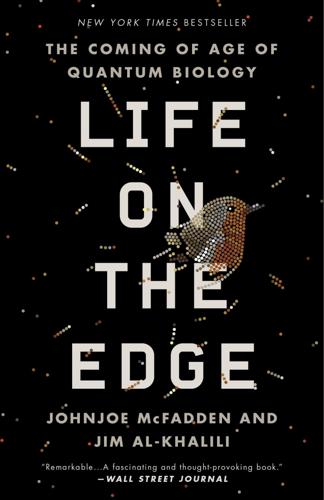
Life on the Edge: The Coming of Age of Quantum Biology
by
Johnjoe McFadden
and
Jim Al-Khalili
Published 14 Oct 2014
It is likely to yield more efficient ways to make drugs, grow crops or destroy pollutants. But in these and many other similar experiments, scientists did not create new life. Despite Venter’s achievement, life’s essential mystery continues to grin back at us. The Nobel Prize–winning physicist Richard Feynman is credited with insisting that “what we can’t make, we don’t understand.” By this definition, we do not understand life because we have not yet managed to make it. We can mix biochemicals, we can heat them, we can irradiate them; we can even, like Mary Shelley’s Frankenstein, use electricity to animate them; but the only way we can make life is by injecting these biochemicals into already living cells, or by eating them, thereby making them part of our own bodies.
…
It performed the same function in the dinosaur, and continues to perform that function in our bodies: dismantling collagen fibers to allow growth and re-formation of tissue during development and after injury. To see this enzymatic process in action, we will borrow an idea from a science-transforming lecture delivered by Richard Feynman to an audience at the California Institute of Technology in 1959 entitled “There’s Plenty of Room at the Bottom.” The lecture is generally acknowledged as having been the intellectual foundation of the field of nanotechnology: engineering on the scale of atoms and molecules. Feynman’s ideas are also said to have inspired the 1966 film Fantastic Voyage, in which a submarine and its crew were shrunk small enough to be injected into a scientist’s body to find and repair a potentially fatal blood clot in his brain.
…
Why these supposedly innocuous modifications to enzyme structure make such a dramatic difference remains something of a mystery within standard transition state theory; but it turns out that they make sense if quantum mechanics is brought into the picture. We will return to this discovery in the last chapter of the book. Yet another problem is that transition state theory has so far failed to deliver artificial enzymes that work as well as the real ones. You may remember Richard Feynman’s famous dictum, “What I cannot create, I do not understand.” This is relevant to enzymes because, despite knowing so much about enzyme mechanisms, no one has so far managed to design an enzyme from scratch that can produce anything like the rate enhancements delivered by natural enzymes.6 According to Feynman’s criterion, we do not yet understand how enzymes work.
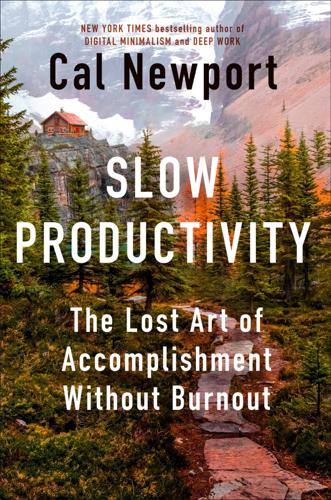
Slow Productivity: The Lost Art of Accomplishment Without Burnout
by
Cal Newport
Published 5 Mar 2024
GO TO NOTE REFERENCE IN TEXT “To do real good physics”: Here is an article from 2014 I wrote about the clip, including the identification of the excerpt cited here (the YouTube clip of the 1981 video has been taken down for copyright violation reasons): Cal Newport, “Richard Feynman Didn’t Win a Nobel by Responding Promptly to E-mails,” Cal Newport (blog), April 20, 2014, calnewport.com/blog/2014/04/20/richard-feynman-didnt-win-a-nobel-by-responding-promptly-to-e-mails. The second half of this quote can also be found in Feynman’s Los Angeles Times obituary: Lee Dye, “Nobel Physicist R. P. Feynman of Caltech Dies,” Los Angeles Times, February 16, 1988, latimes.com/archives/la-xpm-1988-02-16-mn-42968-story.html.
…
Feynman Is a Nobel Laureate, a Member of the Shuttle Commission, and Arguably the World’s Best Theoretical Physicist,” Los Angeles Times, April 20, 1986, latimes.com/archives/la-xpm-1986-04-20-tm-1265-story.html. For a good, concise history of Feynman and the commission, including the detail of his former student roping him into participation, I recommend this article: Kevin Cook, “How Legendary Physicist Richard Feynman Helped Crack the Case on the Challenger Disaster,” Literary Hub, June 9, 2021, lithub.com/how-legendary-physicist-richard-feynman-helped-crack-the-case-on-the-challenger-disaster. GO TO NOTE REFERENCE IN TEXT “This industry, visible”: Benjamin Franklin, Autobiography of Benjamin Franklin, ed. John Bigelow (Philadelphia: J. B. Lippincott, 1868; Project Gutenberg, 2006), chap. 6, https://www.gutenberg.org/ebooks/20203.
…
It follows that limiting them is critical to limiting your overall work volume. A crude approach to accomplishing this goal is to adopt the persona of someone who is eccentric and unresponsive, eventually driving your colleagues to redirect their requests and assignments elsewhere. In my book Deep Work, I pointed toward the Nobel Prize–winning theoretical physicist Richard Feynman as a canonical example of this approach. In Deep Work, I highlighted the following excerpt from a 1981 interview Feynman, then a professor at Caltech, gave to the BBC show Horizon: To do real good physics work, you do need absolute solid lengths of time . . . it needs a lot of concentration . . . if you have a job administrating anything, you don’t have the time.
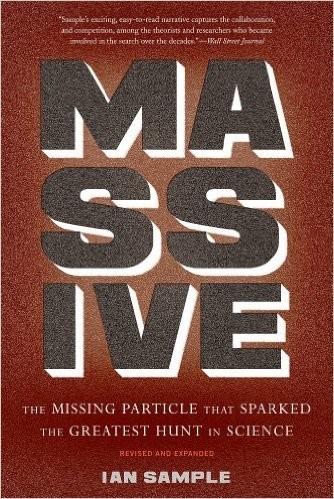
Massive: The Missing Particle That Sparked the Greatest Hunt in Science
by
Ian Sample
Published 1 Jan 2010
Oppenheimer worked out that these fleeting photons could cause infinite changes in the energy of an atom. That was impossible, which could mean only one thing: there was something badly wrong with the theory. It was fine as a rough guide, but nothing more. One of the physicists Dyson fell in with at Cornell was Richard Feynman, a self-assured and brilliant New Yorker who was determined to rescue the beleaguered quantum field theory.4 In 1947, Feynman realized that, instead of worrying about each and every particle of light that popped into existence around an electron, it was better to pull back and view the particles more as a cloud of energy.
…
He talked his options over with Charles Coulson, who warned him that quantum field theory was in a mess. “It’s the kind of field where you either achieve nothing or win a Nobel prize,” Coulson said. Higgs didn’t know it at the time, but Coulson’s fears were out of date: the problem he had in mind was the one that had been sorted out at least a year earlier by Freeman Dyson, Richard Feynman, and the others. Higgs decided to play it safe and stayed on at King’s College. His Ph.D. studies focused on theoretical problems in chemistry that were important for understanding the structure of molecules. When young scientists finish their Ph.D.s, they usually spend time in what can be an academic no-man’s-land of postdoctorate fellowships. 6 These are typically one- or two-year posts, and they serve universities well by keeping them supplied with cheap labor.
…
Scientists feared that his theory suffered from the same problem that nearly sank quantum electrodynamics in the 1940s. Their worry was that, in certain circumstances, Weinberg’s theory might churn out results that included infinities. That meant it would predict particles doing things more often than always, which was clearly impossible. Richard Feynman had solved the trouble of infinities in quantum electrodynamics by inventing a technique called renormalization, and Weinberg was sure the same could be done for his theory. The only problem was, he had no idea how to prove it. The Singel Canal curves like a warm embrace around the ancient town of Utrecht in the Netherlands.

E=mc2: A Biography of the World's Most Famous Equation
by
David Bodanis
Published 25 May 2009
Crow’s Paul Valéry and Maxwell’s Demon: Natural Order and Human Possibility (Hull, England: University of Hull Publications, 1972) brings out rich insights from a different examination of the French tradition. Richard Feynman would have had little use for Valéry or most historians, which is a pity, but for exploring the actual science of light, his writing (and research) has had few peers: along with the physics texts in the next entry, QED: The Strange Theory of Light and Matter, by Richard Feynman (Princeton, N.J.: Princeton University Press, 1985) is a fine start. Du Châtelet and “Squared” Du Châtelet hasn’t been favored by her English language biographers, but readers with some French are in for a guide to further reading treat.
…
How he and Lawrence overcame their own warinesses to become best friends—and then exhausted, dismayed enemies—is the drama in Nuel Phar Davis’s masterpiece Lawrence and Oppenheimer (London: Jonathan Cape, 1969). Richard Feynman’s best-selling reminiscences “Surely You’re Joking, Mr. Feynman!” ed. Edward Hutchings (New York: Norton, 1985) are vivid on the personal level; James Gleick’s Genius: Richard Feynman and Modern Physics (New York: Pantheon, 1992), gives a far richer story of what Feynman and others experienced on the mesa. The best overall account of the U.S. and German projects is Richard Rhodes’s The Making of the Atomic Bomb (New York: Simon & Schuster, 1986), a deserved winner of the National Book Award.
…
He knew—instantly—that the young postgraduate physicists he needed in large numbers wouldn’t pass up work at MIT’s radar lab or other famous wartime projects to head to this unknown New Mexico site, simply on the basis of salaries, or offers of future jobs. They’d come only if they thought the top physicists in America were going there. Oppenheimer, accordingly, recruited the senior physicists first; the postgrads followed fast. He even got the authority-resistant genius Richard Feynman on his side. (Tell Feynman that something was a national emergency and his country needed him, and he’d give his mocking New York snort and tell you to get lost.) But Oppenheimer understood that Feynman was 147 adulthood so hostile in large part out of furious anger: his young wife had tuberculosis, and in this era before antibiotics it was likely she would soon die.
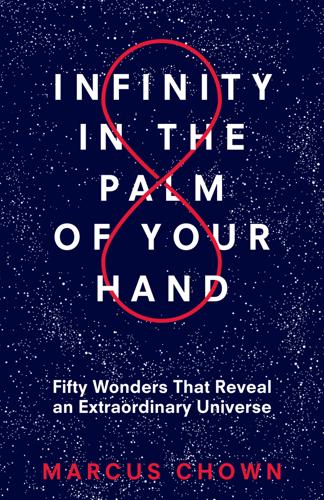
Infinity in the Palm of Your Hand: Fifty Wonders That Reveal an Extraordinary Universe
by
Marcus Chown
Published 22 Apr 2019
Consequently, exomoons, rather than planets like the earth, may be the most likely locations in our galaxy to find extraterrestrial life. 21. HEX APPEAL At the north pole of Saturn is a hurricane twice the size of the earth and the shape of a hexagon “Nature’s imagination’s so much greater than man’s. She’s never gonna let us relax.” —RICHARD FEYNMAN WHEN AIR CIRCULATES IN the earth’s atmosphere, it circulates—well—in a circle. Have you ever seen a triangular hurricane? Or a square one? Or a hexagonal one? Of course you haven’t. However, things are different at the north pole of Saturn. In 2007 NASA’s Cassini space probe flew over the ringed planet and captured the most bizarre image of a hexagonal arrangement of clouds turning around the pole.
…
The key thing is that the smaller the particle, the bigger its quantum wave.2 The smallest particle of familiar matter is the electron; it therefore has the biggest quantum wave. And it is because the electron wave needs tons of elbow room that atoms have to be so big relative to their nuclei—why they contain so much empty space.3 In fact, the wave nature of the electron is why atoms exist. As the American Nobel Prize-winning physicist Richard Feynman said: “Atoms are completely impossible from the classical point of view.” What Feynman meant is that, according to the theory of electromagnetism, an electron whirling around a nucleus in an atom should constantly broadcast “electromagnetic waves” like a tiny radio transmitter. This should cause it to lose energy and spiral into the nucleus in less than a hundred-millionth of second.
…
How we discovered this remarkable fact—that we are far more intimately connected to the stars than even astrologers dared imagine—is a long and torturous story. First came the discovery that everything is made of atoms. “If in some cataclysm all of scientific knowledge were destroyed and only one sentence passed on to succeeding generations, what statement would convey the most information in the fewest words?” asked Richard Feynman. He had absolutely no doubt about the answer: “Everything is made of atoms.” Paradoxically, the fact that nature is ultimately made of tiny indestructible grains that cannot be changed into anything else became clear only after centuries of failed attempts to change one substance into another—for instance, lead into gold.
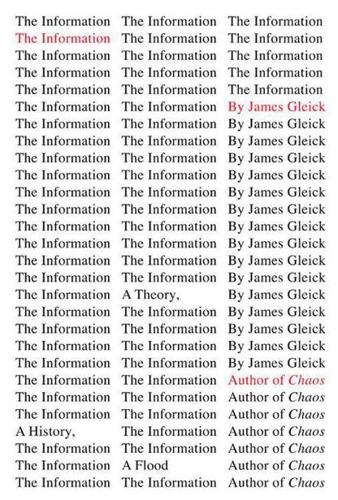
The Information: A History, a Theory, a Flood
by
James Gleick
Published 1 Mar 2011
The clever young Thomasina says in Tom Stoppard’s Arcadia, “You cannot stir things apart,” and this is precisely the same as “Time flows on, never comes back.” Such processes run in one direction only. Probability is the reason. What is remarkable—physicists took a long time to accept it—is that every irreversible process must be explained the same way. Time itself depends on chance, or “the accidents of life,” as Richard Feynman liked to say: “Well, you see that all there is to it is that the irreversibility is caused by the general accidents of life.”♦ For the box of gas to come unmixed is not physically impossible; it is just improbable in the extreme. So the second law is merely probabilistic. Statistically, everything tends toward maximum entropy.
…
A few months after that, Crick showed this to be utterly wrong: experimental data on protein sequences ruled out the diamond code. But Gamow was not giving up. The triplet idea was seductive. An unexpected cast of scientists joined the hunt: Max Delbrück, an ex-physicist now at Caltech in biology; his friend Richard Feynman, the quantum theorist; Edward Teller, the famous bomb maker; another Los Alamos alumnus, the mathematician Nicholas Metropolis; and Sydney Brenner, who joined Crick at the Cavendish. They all had different coding ideas. Mathematically the problem seemed daunting even to Gamow. “As in the breaking of enemy messages during the war,” he wrote in 1954, “the success depends on the available length of the coded text.
…
—Seth Lloyd (2006)♦ QUANTUM MECHANICS HAS WEATHERED in its short history more crises, controversies, interpretations (the Copenhagen, the Bohm, the Many Worlds, the Many Minds), factional implosions, and general philosophical breast-beating than any other science. It is happily riddled with mysteries. It blithely disregards human intuition. Albert Einstein died unreconciled to its consequences, and Richard Feynman was not joking when he said no one understands it. Perhaps arguments about the nature of reality are to be expected; quantum physics, so uncannily successful in practice, deals in theory with the foundations of all things, and its own foundations are continually being rebuilt. Even so, the ferment sometimes seems more religious than scientific.

Collider
by
Paul Halpern
Published 3 Aug 2009
To accommodate the fact that people observe only three dimensions of space and the dimension of time, theorists recalled an idea developed by Swedish physicist Oskar Klein in the 1920s and proposed that six of the dimensions are curled into a ball so tiny that it cannot physically be observed. That worked well mathematically but offered no incentive for experimenters to try to probe the theory. Given the inability to obtain experimental proof, string theory’s skeptics—Glashow and Richard Feynman, among the prominent examples—argued that it remained on shaky ground. Laboratory researchers were enticed to a greater extent by a more conservative application of supersymmetry, called the Minimal Supersymmetric Standard Model (MSSM). Proposed in 1981 by Stanford University physicist Savas Dimopoulos, along with Howard Georgi, it offered a way of extending the Standard Model to include additional fields with the goal of preparing it to be part of a greater unified theory.
…
The details of how photons, electrons, protons, neutrons, and other constituents interacted with one another in the eons before atoms, and particularly in the first moments after the Big Bang reflect the properties of the fundamental natural interactions. Therefore, like colliders, the early universe represents a kind of particle physics laboratory; any discoveries from one venue can be compared to the other. The same year that Alpher and Gamow published their alphabet paper, three physicists, Julian Schwinger and Richard Feynman of the United States and Sin-Itiro Tomonaga of Japan, independently produced a remarkable set of works describing the quantum theory of the electromagnetic interaction. (Tomonaga developed his ideas during the Second World War when it was impossible for him to promote them.) Distilled into a comprehensive theory through the vision of Princeton physicist Freeman Dyson, quantum electrodynamics (QED), as it was called, became seen as the prototype for explaining how natural forces operate.
…
Though it will crash particles together at lower energies than the SSC was supposed to—14 TeV in total instead of 20 TeV—most theoretical estimates indicate that if the Higgs is out there the LHC will find it. If all goes well, modern physics will soon have cause for celebration. 8 Crashing by Design Building the Large Hadron Collider The age in which we live is the age in which we are discovering the fundamental laws of Nature, and that day will never come again —RICHARD FEYNMAN (THE CHARACTER OF PHYSICAL LAW, 1965) Compared to the wild flume ride of American high-energy physics, CERN has paddled steadily ahead like a steam-boat down the Rhone River. Each milestone has been part of a natural progression to machines of increasing might—able to push particle energies higher and higher.
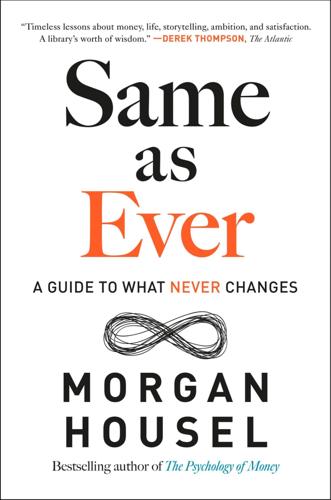
Same as Ever: A Guide to What Never Changes
by
Morgan Housel
Published 7 Nov 2023
GO TO NOTE REFERENCE IN TEXT MV Le Joola: “ ‘Africa’s Titanic’ 20 Years Later: Sinking of Le Joola Has Lessons for Ferry Safety,” SaltWire, October 3, 2022, saltwire.com/halifax/news/local/africas-titanic-20-years-later-sinking-of-le-joola-has-lessons-for-ferry-safety-100778847. GO TO NOTE REFERENCE IN TEXT “Humor is a way to show”: Ken Burns, Mark Twain. GO TO NOTE REFERENCE IN TEXT Richard Feynman, an astounding storyteller: “Richard Feynman Fire,” Nebulajr, April 15, 2009, YouTube video, youtube.com/watch?v=N1pIYI5JQLE&ab_channel=nebulajr. GO TO NOTE REFERENCE IN TEXT Part of what made: Walter Isaacson, Einstein: His Life and Universe (New York: Simon & Schuster, 2007). GO TO NOTE REFERENCE IN TEXT Steven Spielberg noted this: Anthony Breznican, “Steven Spielberg: The EW interview,” Entertainment Weekly, December 2, 2011, ew.com/article/2011/12/02/steven-spielberg-ew-interview.
…
Stories leverage ideas in the same way that debt leverages assets. Trying to explain something like physics is hard if you’re deadlifting facts and formulas. But if you can explain things like how fire works with a story about balls rolling down hills and running into one another—that’s what physicist Richard Feynman, an astounding storyteller, used to do—you can explain something complex in seconds, without much effort. Stories do more than persuade others. They can help you just as much. Part of what made Albert Einstein so talented was his imagination and ability to distill complexity into a simple scene in his head.
…
Simplicity feels like an easy walk. Complexity feels like a mental marathon. If the reps don’t hurt when you’re exercising, you’re not really exercising. Pain is the sign of progress that tells you you’re paying the unavoidable cost of admission. Short and simple communication is different. Richard Feynman and Stephen Hawking could teach math with simple language that didn’t hurt your head, not because they dumbed down the topics but because they knew how to get from A to Z in as few steps as possible. An effective rule of thumb doesn’t bypass complexity; it wraps things you don’t understand into things you do.
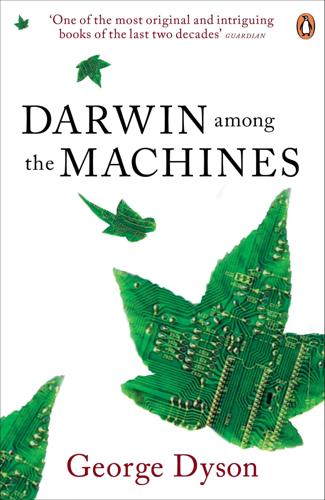
Darwin Among the Machines
by
George Dyson
Published 28 Mar 2012
At that time it was only just understood descriptively. And that became a problem that I think von Neumann became very much interested in. He wanted a real problem that you really needed computers for.”20 Software—first called “coding” and later “programming”—was invented on the spot to suit the available (or unavailable) machines. Physicist Richard Feynman served on the front lines in developing the computational methods and troubleshooting routines used at Los Alamos in early 1944, when desk calculators and punched-card accounting machines constituted the only hardware at hand. The calculations were executed by dozens of human computers (“girls” in Feynman’s terminology) who passed intermediate results back and forth, weaving together a long sequence, or algorithm, of simpler steps.
…
“Perhaps some day in the dim future, it will be possible to advance the computations faster than the weather advances,” hoped Richardson, “and at a cost less than the saving to mankind due to the information gained.”27 Richardson thereby anticipated massively parallel computing, his 64,000 mathematicians reincarnated seventy years later as the multiple processors of Danny Hillis’s Connection Machine. “We had decided to simplify things by starting out with only 64,000 processors,” explained Hillis, recalling how Richard Feynman helped him bring Lewis Richardson’s fantasy to life.28 Even without the Connection Machine, Richardson’s approach to cellular modeling would be widely adopted once it became possible to assign one high-speed digital computer rather than 64,000 human beings to keep track of numerical values and relations among individual cells.
…
We have made only limited progress in the three hundred years since Robert Hooke explained how the soul is somehow “apprehensive” of “a continued Chain of Ideas coyled up in the Repository of the Brain.”47 What mind, if any, will become apprehensive of the great coiling of ideas now under way is not a meaningless question, but it is still too early in the game to expect an answer that is meaningful to us. 10 THERE’S PLENTY OF ROOM AT THE TOP We’re doing this the way you’d plan walkways in a park: Plant grass, then put sidewalks where the paths form. —JOE VAN LONE1 “There’s Plenty of Room at the Bottom” was the title of an after-dinner talk given by physicist Richard Feynman at the California Institute of Technology on 29 December 1959. Feynman’s timing was perfect. He kept his audience awake with a series of outlandish speculations that soon turned out to be spectacularly right. “In the year 2000, when they look back at this age,” announced Feynman, “they will wonder why it was not until the year 1960 that anybody began seriously to move in this direction.”

Think Like a Rocket Scientist: Simple Strategies You Can Use to Make Giant Leaps in Work and Life
by
Ozan Varol
Published 13 Apr 2020
noredirect=on&utm_term=.b81dd6679eee; Wyatt Andrews and Anna Werner, “Healthcare.gov Plagued by Crashes on 1st Day,” CBS News, October 1, 2013, www.cbsnews.com/news/healthcaregov-plagued-by-crashes-on-1st-day; Adrianne Jeffries, “Why Obama’s Healthcare.gov Launch Was Doomed to Fail,” Verge, October 8, 2013, www.theverge.com/2013/10/8/4814098/why-did-the-tech-savvy-obama-administration-launch-a-busted-healthcare-website; “The Number 6 Says It All About the HealthCare.gov Rollout,” NPR, December 27, 2013, www.npr.org/sections/health-shots/2013/12/27/257398910/the-number-6-says-it-all-about-the-healthcare-gov-rollout; Kate Pickert, “Report: Cost of HealthCare.Gov Approaching $1 Billion,” Time, July 30, 2014, http://time.com/3060276/obamacare-affordable-care-act-cost. 2. Marshall Fisher, Ananth Raman, and Anna Sheen McClelland, “Are You Ready?,” Harvard Business Review, August 2000) https://hbr.org/2000/07/are-you-ready. 3. Fisher, Raman, and McClelland, “Are You Ready?” 4. Richard Feynman, Messenger Lectures, Cornell University, BBC, 1964, www.cornell.edu/video/playlist/richard-feynman-messenger-lectures/player. 5. NASA Jet Propulsion Laboratory, “The FIDO Rover,” NASA, https://www-robotics.jpl.nasa.gov/systems/system.cfm?System=1. 6. NASA, “Space Power Facility,” www1.grc.nasa.gov/facilities/sec. 7. The discussion on the airbag tests for the Mars Exploration Rovers is based on the following sources: Steve Squyres, Roving Mars: Spirit, Opportunity, and the Exploration of the Red Planet (New York: Hyperion, 2005); Adam Steltzner and William Patrick, Right Kind of Crazy: A True Story of Teamwork, Leadership, and High-Stakes Innovation (New York: Portfolio/Penguin, 2016). 8.
…
We put our mouths on the spigot of their seemingly clear opinions, happily removing the burden of critical thinking from our shoulders. The problem with the modern world, as Bertrand Russell put it, is that “the stupid are cocksure while the intelligent are full of doubt.” Even after physicist Richard Feynman earned a Nobel prize, he thought of himself as a “confused ape” and approached everything around him with the same level of curiosity, which enabled him to see nuances that others dismissed. “I think it’s much more interesting to live not knowing,” he remarked, “than to have answers which might be wrong.”
…
Take his third law: For every action, there is an equal and opposite reaction. Centuries before the advent of human flight, this simple law explained how rockets reach space. The mass of their fuel goes down, and the rocket goes up. “The more we understand something,” Peter Attia explained to me, “the less complicated it becomes. This is classic Richard Feynman teaching.” Attia is a mechanical engineer turned medical doctor, a renowned expert in increasing people’s life span and health span. If you’re reading a study in medicine, he said, “and you see words like multifaceted, multifactorial, complex, to explain the current understanding,” the authors are basically saying, “We don’t know what the heck we’re talking about yet.”

Possible Minds: Twenty-Five Ways of Looking at AI
by
John Brockman
Published 19 Feb 2019
I didn’t have to deal with it, because I left India when I was nineteen, but I know Indian scientists had to deal with it. Today they have access to information at the click of a button. More important, they have access to lectures. They can listen to Richard Feynman. That would have been a dream of mine when I was growing up. They can just watch Richard Feynman on the Web. That’s a big leveling in the field.” And yet . . . “Along with the benefits [of the Web], there is now a huge amount of noise. You have all of these people spouting pseudoscientific jargon and pushing their own ideas as if they were science.”
…
I was a bit puzzled when I received an invitation—a very late invitation indeed—which they explained was based on their interest in the ideas I presented in a book called Afterwords, which were very much on their wavelength. I jumped at the opportunity, the main reason being that the keynote speaker was none other than Richard Feynman. I love to spend time with physicists, because they think about the universe, i.e., everything. And no physicist was reputed to be as articulate as Feynman. I couldn’t wait to meet him. I accepted. That said, I am not a scientist, and I had never entertained the idea of getting on a stage and delivering a “lecture” of any kind, least of all a commentary on an obscure mathematical theory in front of a group identified as the world’s most interesting thinkers.
…
Since I had an MBA from Columbia Business School and a series of relative successes in business, I was dragooned into becoming an agent, initially for Gregory Bateson and John Lilly, whose books I sold quickly, and for sums that caught my attention, thus kick-starting my career as a literary agent. I never did meet Richard Feynman. THE LONG AI WINTERS This new career put me in close touch with most of the AI pioneers, and over the decades I rode with them on waves of enthusiasm, and into valleys of disappointment. In the early eighties the Japanese government mounted a national effort to advance AI. They called it the Fifth Generation; their goal was to change the architecture of computation by breaking “the von Neumann bottleneck” by creating a massively parallel computer.
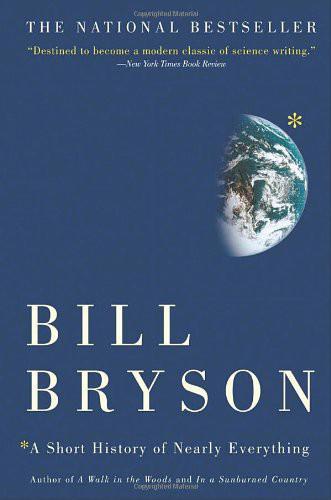
A Short History of Nearly Everything
by
Bill Bryson
Published 5 May 2003
There seemed to be a mystifying universal conspiracy among textbook authors to make certain the material they dealt with never strayed too near the realm of the mildly interesting and was always at least a long-distance phone call from the frankly interesting. I now know that there is a happy abundance of science writers who pen the most lucid and thrilling prose—Timothy Ferris, Richard Fortey, and Tim Flannery are three that jump out from a single station of the alphabet (and that's not even to mention the late but godlike Richard Feynman)—but sadly none of them wrote any textbook I ever used. All mine were written by men (it was always men) who held the interesting notion that everything became clear when expressed as a formula and the amusingly deluded belief that the children of America would appreciate having chapters end with a section of questions they could mull over in their own time.
…
For all his achievements, however, Halley's greatest contribution to human knowledge may simply have been to take part in a modest scientific wager with two other worthies of his day: Robert Hooke, who is perhaps best remembered now as the first person to describe a cell, and the great and stately Sir Christopher Wren, who was actually an astronomer first and architect second, though that is not often generally remembered now. In 1683, Halley, Hooke, and Wren were dining in London when the conversation turned to the motions of celestial objects. It was known that planets were inclined to orbit in a particular kind of oval known as an ellipse—“a very specific and precise curve,” to quote Richard Feynman—but it wasn't understood why. Wren generously offered a prize worth forty shillings (equivalent to a couple of weeks' pay) to whichever of the men could provide a solution. Hooke, who was well known for taking credit for ideas that weren't necessarily his own, claimed that he had solved the problem already but declined now to share it on the interesting and inventive grounds that it would rob others of the satisfaction of discovering the answer for themselves.
…
For a memorial you must look to the sky and the Hubble Space Telescope, launched in 1990 and named in his honor. 9 THE MIGHTY ATOM WHILE EINSTEIN AND Hubble were productively unraveling the large-scale structure of the cosmos, others were struggling to understand something closer to hand but in its way just as remote: the tiny and ever- mysterious atom. The great Caltech physicist Richard Feynman once observed that if you had to reduce scientific history to one important statement it would be “All things are made of atoms.” They are everywhere and they constitute every thing. Look around you. It is all atoms. Not just the solid things like walls and tables and sofas, but the air in between.
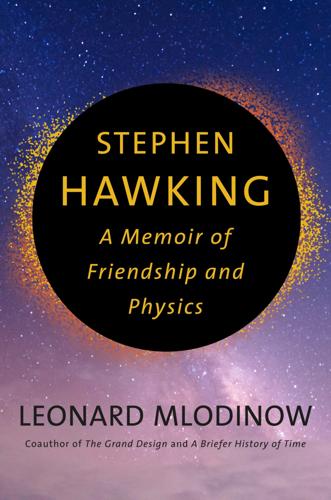
Stephen Hawking
by
Leonard Mlodinow
Published 8 Sep 2020
Due to difficulties of that sort, when Stephen moved to Cambridge the practitioners of general relativity and cosmology were mainly mathematicians whose work was detached from reality and whose models of the universe were unrealistic. That kept them occupied, but nobody paid much attention to their papers. The low quality of the work prompted Caltech physicist Richard Feynman to write his wife from a 1962 conference on gravity in Warsaw, “Because there are no experiments this field is not an active one…there are hosts of dopes here and it is not good for my blood pressure: such inane things are said and seriously discussed that I get into arguments…” Most physicists concurred that questions of the origin of the universe were dead ends, but those were the questions that had won Stephen’s heart.
…
Quantum theory made it possible for Bekenstein’s entropy theory to be correct. Stephen said that he was annoyed at what he’d discovered and kept it quiet for a while. As he wrote in A Brief History of Time, “I was afraid that if Bekenstein found out about it, he would use it as a further argument to support his ideas.” But as Richard Feynman used to say, physicists don’t tell nature how things behave, nature shows physicists. So Stephen eventually accepted that Bekenstein was correct: black holes have nonzero entropy that is proportional to the surface area of their horizon; they have a nonzero temperature; and they slowly convert the matter and energy they have swallowed up into radiation that they emit back into space, gradually shrinking in the process until they eventually disappear.
…
Kip, who was about Stephen’s age, studied classical general relativity, the original Einstein theory without quantum modifications. At the other end of the Caltech theorist spectrum were two Nobel laureates who specialized in quantum theories and for the most part ignored general relativity. They were the two most influential theoretical physicists of their era, Murray Gell-Mann and Richard Feynman. A decade after Stephen’s Fairchild year, I arrived at Caltech and had the office next to Murray, and down the hall from Feynman. Gell-Mann was “Murray” to me and to most people. He derived his greatest fame from discovering a mathematical scheme to classify and understand the properties of elementary particles.
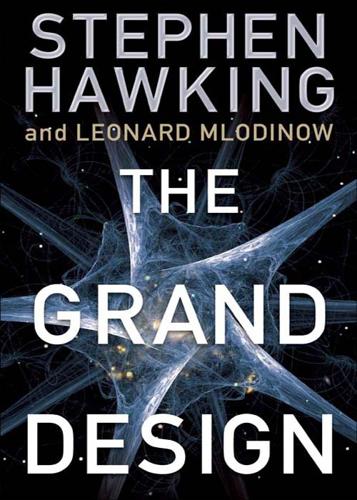
The Grand Design
by
Stephen Hawking
and
Leonard Mlodinow
Published 14 Jun 2010
As we improved our technology and expanded the range of phenomena that we could observe, we began to find nature behaving in ways that were less and less in line with our everyday experience and hence with our intuition, as evidenced by the experiment with buckyballs. That experiment is typical of the type of phenomena that cannot be encompassed by classical science but are described by what is called quantum physics. In fact, Richard Feynman wrote that the double-slit experiment like the one we described above “contains all the mystery of quantum mechanics.” The principles of quantum physics were developed in the first few decades of the twentieth century after Newtonian theory was found to be inadequate for the description of nature on the atomic—or subatomic—level.
…
Those who find those principles weird or difficult to believe are in good company, the company of great physicists such as Einstein and even Feynman, whose description of quantum theory we will soon present. In fact, Feynman once wrote, “I think I can safely say that nobody understands quantum mechanics.” But quantum physics agrees with observation. It has never failed a test, and it has been tested more than any other theory in science. In the 1940s Richard Feynman had a startling insight regarding the difference between the quantum and Newtonian worlds. Feynman was intrigued by the question of how the interference pattern in the double-slit experiment arises. Recall that the pattern we find when we fire molecules with both slits open is not the sum of the patterns we find when we run the experiment twice, once with just one slit open, and once with only the other open.
…
The strong force is the energy source for the sun and nuclear power, but, as with the weak force, we don’t have direct contact with it. The first force for which a quantum version was created was electromagnetism. The quantum theory of the electromagnetic field, called quantum electrodynamics, or QED for short, was developed in the 1940s by Richard Feynman and others, and has become a model for all quantum field theories. As we’ve said, according to classical theories, forces are transmitted by fields. But in quantum field theories the force fields are pictured as being made of various elementary particles called bosons, which are force-carrying particles that fly back and forth between matter particles, transmitting the forces.
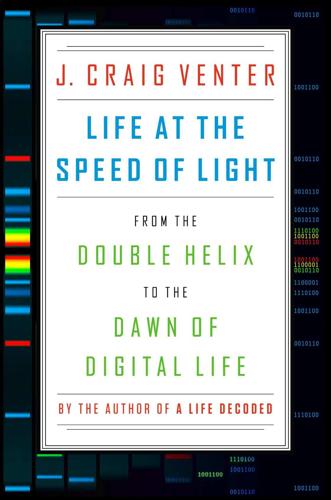
Life at the Speed of Light: From the Double Helix to the Dawn of Digital Life
by
J. Craig Venter
Published 16 Oct 2013
I wanted to take us into a new era of biology by generating a new life form that was described and driven only by DNA information that had been created in the laboratory. This would be the ultimate proof by synthesis. 8 Synthesis of the M. mycoides Genome If we want to solve a problem that we have never solved before, we must leave the door to the unknown ajar. —Richard Feynman, 19881 Many believe that the most important innovations of human creativity are the result of some kind of visionary gift, a gift associated with such extraordinary and singular geniuses as Isaac Newton, Michelangelo, Marie Curie, and Albert Einstein. I don’t doubt the incredible impact of individuals who can make great intellectual leaps, who can see further than anyone before them, and who discern patterns where others see only noise.
…
The third watermark included, alongside the names of several scientists, the second quotation: “See things not as they are, but as they might be,” attributed to one of Manhattan Project physicist J. Robert Oppenheimer’s early teachers and cited in the biography American Prometheus. The fourth watermark contained the remaining names of the forty-six scientists and a quotation from the Nobel Prize–winning quantum physicist Richard Feynman: “What I cannot create, I do not understand.” We had accomplished what had been only a wild dream almost fifteen years earlier, and had effectively come full circle. Starting with DNA from cells, we learned how to accurately read the DNA sequence. We successfully digitized biology by converting the four-letter chemical analog code (A, T, C, G) into the digital code of the computer (1s and 0s).
…
But sometimes it is just as important not to get too obsessed by them, particularly when you are venturing into a new area, as they can be distractions that hinder how you think and what you do. They can become a trap, as they did in the first half of the twentieth century, when scientists were certain that proteins were the genetic material. Richard Feynman issued a famous warning about the dangers of attempting to define anything with total precision: “We get into that paralysis of thought that comes to philosophers . . . one saying to the other: ‘You don’t know what you are talking about!’ The second one says: ‘What do you mean by “talking”? What do you mean by “you”?
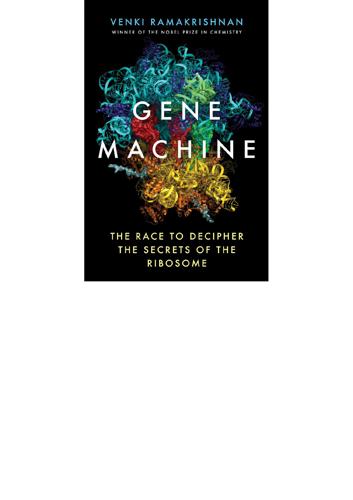
The Gene Machine
by
Venki Ramakrishnan
I was nineteen years old and had just graduated from Baroda University. It was customary to stay on to get a master’s degree in India before going abroad for a PhD, but I was eager to go to America as soon as I could. To me, it was not only the land of opportunity but also of rational heroes like Richard Feynman, whose famous Lectures on Physics had been part of my undergraduate curriculum. Besides, my parents were already there, as my father was taking a short sabbatical at the University of Illinois in Urbana. Since this was a last-minute decision, I had not taken the GRE exam that is a requirement for American graduate schools, and most universities would not even consider my application.
…
Just being able to see detail had transformed biology from the anatomy of humans to the structures inside a cell. But what were all these things inside cells made of? Like all everyday matter, cells and their components are made of molecules, which are groups of atoms that are held together in a very specific way. The atomic theory of matter took such a long time to develop and is so important that Richard Feynman, the famous physicist, said that if all scientific knowledge were to be destroyed and only one sentence could be passed on to the next generations of humans, it should be ‘all things are made of atoms – little particles that move around in perpetual motion, attracting each other when they are a little distance apart, but repelling upon being squeezed into each other.’
…
It is enormously satisfying to know that your fellow scientists think so highly of you. It is also a great tribute to the students, postdocs, and staff who had risked their own careers on the project and without whom nothing would have been accomplished. And of course, the cash is always welcome. Even Richard Feynman, who disdained awards, had accepted it. I realized then that Måns was a man of real integrity. He had obviously put aside his differences with me about one aspect of our work and considered the bigger picture. At that level of discussion, even a slight lack of enthusiasm can sink a candidate.
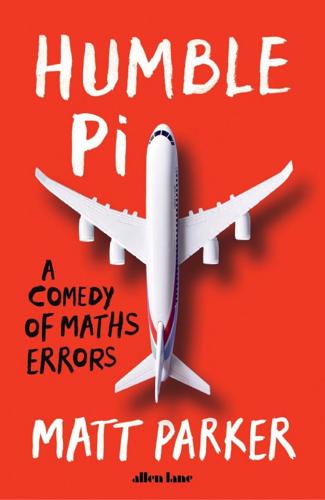
Humble Pi: A Comedy of Maths Errors
by
Matt Parker
Published 7 Mar 2019
More than just O-rings When the space shuttle Challenger exploded shortly after launch on 28 January 1986, killing all seven people onboard, a Presidential Commission was formed to investigate the disaster. As well as including Neil Armstrong and Sally Ride (the first American woman in space), the commission also featured Nobel prize-winning physicist Richard Feynman. The Challenger exploded because of a leak from one of the solid rocket boosters. For take-off, the space shuttle had two of these boosters, each of which weighed over 500 tonnes and, amazingly, used metal as fuel: they burned aluminium. Once the fuel was spent, the solid rocket boosters were jettisoned by the shuttle at an altitude of over 40 kilometres and eventually deployed a parachute so they would splash down into the Atlantic Ocean.
…
Rubber gaskets called O-rings were placed between the sections to provide a tight seal. It was these O-rings that failed during the launch of Challenger, allowing hot gases to escape from the boosters and start the chain of events which led to its destruction. Famously, during the investigation, Richard Feynman demonstrated how the O-rings lost their elasticity at low temperatures. It was vital that, as the separate sections of the booster moved about, the O-rings sprang back to maintain the seal. In front of the media, Feynman put some of the O-ring rubber in a glass of iced water and showed that it no longer sprang back.
…
In my imaginary cartoon version of human evolution, the false positives of assuming there is a danger when there isn’t are usually not punished as severely as when a human underestimates a risk and gets eaten. The selection pressure is not on accuracy. Wrong and alive is evolutionarily better than correct and dead. But we owe it to ourselves to try to work out these probabilities as best we can. This is what Richard Feynman was faced with during the investigation into the shuttle disaster. The managers and high-up people in NASA were saying that each shuttle launch had only a one in 100,000 chance of disaster. But, to Feynman’s ears, that did not sound right. He realized it would mean there could be a shuttle launch every day for three hundred years with only one disaster.
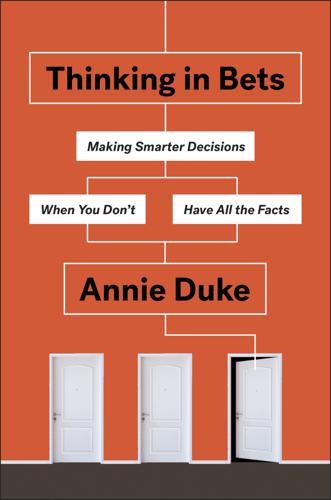
Thinking in Bets
by
Annie Duke
Published 6 Feb 2018
Researchers are entitled to keep data private until published but once they accomplish that, they should throw the doors open to give the community every opportunity to make a proper assessment. Any attempt at accuracy is bound to fall short if the truthseeking group has only limited access to potentially pertinent information. Without all the facts, accuracy suffers. This ideal of scientific sharing was similarly described by physicist Richard Feynman in a 1974 lecture as “a kind of utter honesty—a kind of leaning over backwards. For example, if you’re doing an experiment, you should report everything that you think might make it invalid—not only what you think is right about it: other causes that could possibly explain your results . . .” It is unrealistic to think we can perfectly achieve Feynman’s ideal; even scientists struggle with it.
…
Remember the thought experiment I suggested at the beginning of the book about what the headlines would have looked like if Pete Carroll’s pass call had won the 2015 Super Bowl? Those headlines would have been about his brilliance. People would have analyzed Carroll’s decision differently. Knowing how something turned out creates a conflict of interest that expresses itself as resulting. Richard Feynman recognized that in physics—a branch of science that most of us consider as objective as 2 + 2 = 4—there is still demonstrable outcome bias. He found that if those analyzing data knew, or could even just intuit, the hypothesis being tested, the analysis would be more likely to support the hypothesis being tested.
…
Thinking in bets demands the imperative of skepticism. Without embracing uncertainty, we can’t rationally bet on our beliefs. And we need to be particularly skeptical of information that agrees with us because we know that we are biased to just accept and applaud confirming evidence. If we don’t “lean over backwards” (as Richard Feynman famously said) to figure out where we could be wrong, we are going to make some pretty bad bets. If we embrace uncertainty and wrap that into the way we communicate with the group, confrontational dissent evaporates because we start from a place of not being sure. Just as we can wrap our uncertainty into the way we express our beliefs (“I’m 60% sure the waiter is going to mess up my order”), when we implement the norm of skepticism, we naturally modulate expression of dissent with others.
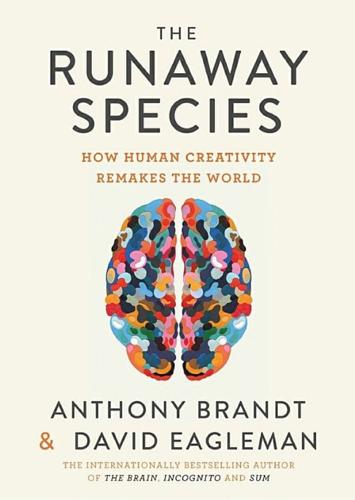
The Runaway Species: How Human Creativity Remakes the World
by
David Eagleman
and
Anthony Brandt
Published 30 Sep 2017
After participating in the sailing seeds exercise, children will appreciate Nature’s designs their whole lives, because they’ve attempted new creations themselves. Even when the answer is fixed, creative teaching encourages students to find different ways of arriving at it. In 1965, the renowned physicist Richard Feynman was asked to review math textbooks for the California State Curriculum Committee (“18 feet of shelf space, 500 pounds of books!” he complained in his report). He felt that the modern method of teaching math, in which teachers train students in a single way of solving problems, was misguided. He argued that students should be directed to find as many ways as they can of reaching the correct solution: What we want in arithmetic textbooks is not to teach a particular way of doing every problem but, rather, to teach what the original problem is, and to leave a much greater freedom in obtaining the answer … We must remove the rigidity of thought … We must leave freedom for the mind to wander about in trying to solve problems … The successful user of mathematics is practically an inventor of new ways of obtaining answers in given situations.4 When encouraging alternatives, an effective strategy is to inspire students to go different distances from the hive.
…
In Partimento and Continuo Playing in Theory and in Practice, edited by Dirk Moelants and Kathleen Snyers. Leuven: Leuven University Press, 2010. Gladwell, Malcolm. “Creation Myth.” New Yorker. May 16, 2011. Accessed May 1, 2016. <http://www.newyorker.com/magazine/2011/05/16/creation-myth> Gleick, James. Genius: The Life and Science of Richard Feynman. New York: Pantheon Books, 1992. Gogh, Vincent van, and Martin Bailey. Letters from Provence. London: Collins & Brown, 1990. Gogh, Vincent van, and Ronald de Leeuw. The Letters of Vincent van Gogh. London: Allen Lane, Penguin Press, 1996. Gold, H.L. “Ready, Aim — Extrapolate!” Galaxy Science Fiction.
…
Botía and Dimitris Charitos (Amsterdam: IOS Press Ebooks, 2013), accessed August 21, 2015, <http://ebooks.iospress.nl/volume/workshop-proceedings-of-the-9th-international-conference-on-intelligent-environments> 2 Shumei Zhang and Victor Callaghan, “Using Science Fiction Prototyping as a Means to Motivate Learning of STEM Topics and Foreign Languages,” 2014 International Conference on Intelligent Environments (Los Alamitos: IEEE Computer Society, 2014). 3 Amy Russell and Stephen Rice, “Sailing Seeds: An Experiment in Wind Dispersal,” Botanical Society of America, March 2001, accessed August 21, 2015, <http://botany.org/bsa/misc/mcintosh/dispersal.html> 4 James Gleick, Genius: The Life and Science of Richard Feynman (New York: Pantheon Books, 1992). 5 Kamal Shah et. al, “Maji: A New Tool to Prevent Overhydration of Children Receiving Intravenous Fluid Therapy in Low-Resource Settings,” American Journal of Tropical Medical Hygiene 92, no. 5 (2015), accessed May 11, 2016, <http://dx.doi.org/10.4269/ajtmh.14-0495> 6 Carol Dweck, Mindset: The New Psychology of Success (New York: Random House, 2006). 7 The school is the Renaissance Expeditionary Learning Outward Bound School.

Rationality: From AI to Zombies
by
Eliezer Yudkowsky
Published 11 Mar 2015
But a culture that sees life running inexorably downward is very different from a culture in which you can reach unprecedented heights. (I say “culture,” and not “society,” because you can have more than one subculture in a society.) You could say that the difference between e.g. Richard Feynman and the Inquisition was that the Inquisition believed they had truth, while Richard Feynman sought truth. This isn’t quite defensible, though, because there were undoubtedly some truths that Richard Feynman thought he had as well. “The sky is blue,” for example, or “2 + 2 = 4.” Yes, there are effectively certain truths of science. General Relativity may be overturned by some future physics—albeit not in any way that predicts the Sun will orbit Jupiter; the new theory must steal the successful predictions of the old theory, not contradict them.
…
Search for “heat conduction.” Taken from Joachim Verhagen, http://web.archive.org/web/20060424082937/http://www.nvon.nl/scheik/best/diversen/scijokes/scijokes.txt, archived version, October 27, 2001. 31 Guessing the Teacher’s Password When I was young, I read popular physics books such as Richard Feynman’s QED: The Strange Theory of Light and Matter. I knew that light was waves, sound was waves, matter was waves. I took pride in my scientific literacy, when I was nine years old. When I was older, and I began to read the Feynman Lectures on Physics, I ran across a gem called “the wave equation.”
…
It does seem plausible that if the Inquisition had been made up of relativists, professing that nothing was true and nothing mattered, they would have mustered less enthusiasm for their torture. They would also have been less enthusiastic if lobotomized. I think that’s a fair analogy. And yet . . . I think the Inquisition’s attitude toward truth played a role. The Inquisition believed that there was such a thing as truth, and that it was important; well, likewise Richard Feynman. But the Inquisitors were not Truth-Seekers. They were Truth-Guardians. I once read an argument (I can’t find the source) that a key component of a zeitgeist is whether it locates its ideals in its future or its past. Nearly all cultures before the Enlightenment believed in a Fall from Grace—that things had once been perfect in the distant past, but then catastrophe had struck, and everything had slowly run downhill since then: In the age when life on Earth was full . . .

Thinking in Pictures: And Other Reports From My Life With Autism
by
Temple Grandin
Published 10 Jan 2006
Gardner describes Einstein as returning to the conceptual world of a child, and says that he was not hampered by the conventional paradigms of physics. It is interesting that autism is caused by brain immaturity. In many ways I have remained a child. Even today I do not feel like a grownup in the realm of interpersonal relationships. Some scientists are strictly analytical thinkers. The physicist Richard Feynman denied the validity of poetry and art. In his biography of Feynman, Genius, James Gleick wrote, “He would not concede that poetry or painting or religion could reach a different kind of truth.” Of course, many scientists do value poetry and share traits from both the creative and scientific end of the continuum, just as some scientists, artists, and highly analytical philosophers have some autistic traits.
…
My grades in high school were poor until I became motivated in my senior year. In college I did well in biology and psychology but had great difficulty with French and math. Most of the great geniuses have had very uneven skills. They are usually terrible in one subject and brilliant in their special area. Richard Feynman had very low scores on the Graduate Record Exam in English and history. His physics score was perfect, but his art score was in the seventh percentile. Even Einstein, after graduating from the Zurich Federal Institute of Technology, was not able to obtain an academic appointment. He annoyed big important professors when he told them that their theories were wrong.
…
He went on to say in the same paper: “The road to this paradise was not as comfortable and alluring as the road to the religious paradise; but it has proved itself trustworthy, and I have never regretted having chosen it.” But my favorite of Einstein's words on religion is “Science without religion is lame. Religion without science is blind.” I like this because both science and religion are needed to answer life's great questions. Even scientists such as Richard Feynman, who rejected religion and poetry as sources of truth, concede grudgingly that there are questions that science cannot answer. I am deeply interested in the new chaos theory, because it means that order can arise out of disorder and randomness. I've read many popular articles about it, because I want scientific proof that the universe is orderly.

The Burning Answer: The Solar Revolution: A Quest for Sustainable Power
by
Keith Barnham
Published 7 May 2015
There are a few disappointed and hyperactive children, excluded from the game, like the electrons in the next, empty orbit. Why are full electron orbits so stable? There was still one more question for the physicists. How come electron orbits with two or eight outer electrons are so stable they can bond atoms together? One of my heroes from my particle physics days, the late Richard Feynman, provided the most stimulating mathematical account of quantum bonding using the simplest example: two hydrogen atoms forming a hydrogen molecule. When two hydrogen atoms share two electrons the total energy is lower than when the two atoms are separate, each with one electron. As noted earlier, when faced by two options, a high energy one and a low energy one, nature chooses the lower energy option.
…
Quantum bonding demonstrated by a quantum revolutionary? While a young postdoc in Berkeley I missed out on an opportunity to meet one of the greats of quantum physics. One of the highlights of my two years there was going to be presenting some results at a conference in Caltech, where I hoped to get the chance to hear one of my scientific heroes, Richard Feynman. In fact, the conference turned out to be one of the most traumatic in my research career. I was presenting work trying to reconcile apparently inconsistent data from different experimental teams with a quantum model. This model had been developed by my then boss and subsequent, long-term friend: the late Gerson Goldhaber.
…
The speaker was giving the impression to his listeners that he knew it all. I was some way past the group before it struck me … I had seen a photo of that face … he did know it all! I was too embarrassed to retrace my steps to join the throng to find what he was talking about. I like to think, however, that by reclining over a number of seats in the auditorium, Richard Feynman was illustrating the subtleties of quantum bonding. Quantum bonding and fossil fuels Quantum bonding explains the cornucopia of carbon-based molecules that make up our plastics, our fossil fuels and the even more complex molecules of life. The way quantum bonding explains all these amazingly different molecules was first worked out in the 1930s by another of my heroes, the American Linus Pauling.
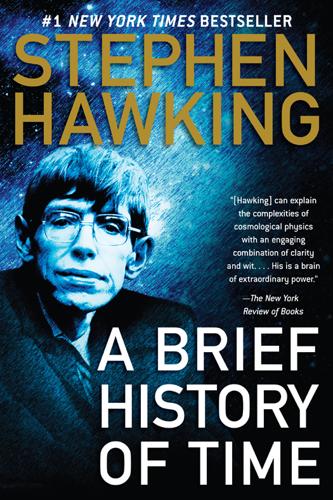
A Brief History of Time
by
Stephen Hawking
Published 16 Aug 2011
However, for orbits whose lengths were not a whole number of wavelengths, each wave crest would eventually be canceled out by a trough as the electrons went round; these orbits would not be allowed. A nice way of visualizing the wave/particle duality is the so-called sum over histories introduced by the American scientist Richard Feynman. In this approach the particle is not supposed to have a single history or path in space-time, as it would in a classical, nonquantum theory. Instead it is supposed to go from A to B by every possible path. With each path there are associated a couple of numbers: one represents the size of a wave and the other represents the position in the cycle (i.e., whether it is at a crest or a trough).
…
This was the first indication that quantum mechanics might remove the singularities that were predicted by general relativity. However, the methods that I and other people were using in 1974 were not able to answer questions such as whether singularities would occur in quantum gravity. From 1975 onward I therefore started to develop a more powerful approach to quantum gravity based on Richard Feynman’s idea of a sum over histories. The answers that this approach suggests for the origin and fate of the universe and its contents, such as astronauts, will be described in the next two chapters. We shall see that although the uncertainty principle places limitations on the accuracy of all our predictions, it may at the same time remove the fundamental unpredictability that occurs at a space-time singularity.
…
Thus they can act freely, without the constraint of consistency with their previous history. Steven Spielberg had fun with this notion in the Back to the Future films: Marty McFly was able to go back and change his parents’ courtship to a more satisfactory history. The alternative histories hypothesis sounds rather like Richard Feynman’s way of expressing quantum theory as a sum over histories, which was described in Chapters 4 and 8. This said that the universe didn’t just have a single history: rather it had every possible history, each with its own probability. However, there seems to be an important difference between Feynman’s proposal and alternative histories.
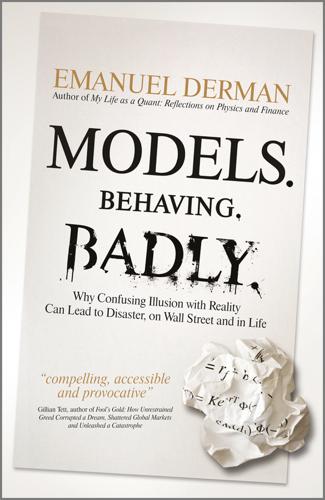
Models. Behaving. Badly.: Why Confusing Illusion With Reality Can Lead to Disaster, on Wall Street and in Life
by
Emanuel Derman
Published 13 Oct 2011
Like the vacuum cleaner and washing machine that promised to liberate suburban housewives of the 1950s from drudgery, models provide easy and automated ways of letting other people do the thinking for you. When I worked on my PhD thesis to test the Weinberg-Salam Model in the early 1970s, I carried out each calculation using Feynman diagrams, the cartoonlike representations invented by Richard Feynman in the late 1940s to systematize and enumerate the ways particles interact during collisions. Using a formal set of rules that Feynman developed with his inimitable blend of mathematics and intuition, rules that were later justified by the more rigorous mathematics of Freeman Dyson,13 I elaborated and drew all the possible diagrams that could occur in the Standard Model, and then, using Feynman’s rules, translated each picture into a mathematical formula and evaluated it.
…
MAXWELL MODELS THE LINES From a long view of the history of mankind—seen from, say, ten thousand years from now—there can be little doubt that the most significant event of the 19th century will be judged as Maxwell’s discovery of the laws of electrodynamics. The American Civil War will pale into provincial insignificance in comparison with this important scientific event of the same decade. —Richard Feynman, Lectures on Physics The historic achievement of James Clerk Maxwell, a Scottish mathematician and theoretical physicist with a very practical streak, was the unification of electricity and magnetism into a consistent set of equations for electromagnetic theory. Feynman, no mean achiever himself, is accurate about the magnitude of Maxwell’s discovery, which was the midpoint on the trajectory from Newton’s discovery of the laws of mechanics to Einstein’s theories of relativity.
…
New developments in mathematics, from calculus to topology, have often been initiated by physicists who, by means of intuition and persistence, have sneakily but sloppily invented new kinds of mathematics that were only later made rigorous by purists. Newton invented the calculus in the seventeenth century to handle mechanics, and its foundations were satisfactorily cleaned up years later by Augustin-Louis Cauchy and his contemporaries. In the late 1940s, reconnoitering around the technical difficulties of the Dirac sea, Richard Feynman, Julian Schwinger, and Shin’ichiro Tomonaga found an ingenious way to suppress the technical infinities of quantum electrodynamics by means of a judicious combination of extreme care and chicanery. Their starting point was never to forget that the normal quotidian electron we “see” every day is not the bare electron.

Neutrino Hunters: The Thrilling Chase for a Ghostly Particle to Unlock the Secrets of the Universe
by
Ray Jayawardhana
Published 10 Dec 2013
In Britain, Klaus Fuchs, a physicist at the same Harwell laboratory where Pontecorvo worked, confessed to spying for the Russians while employed by the Manhattan Project, and was swiftly convicted in a high-profile trial. In the United States, the FBI investigated others who worked at Los Alamos, including the colorful physicist Richard Feynman, who was known for his brilliance as well as his mischievous deeds, including picking locks of secure cabinets just to prove that he could. Feynman was cleared, but the federal agents found that a chemist named Harry Gold had acted as a courier for Fuchs. Gold, in turn, led them to Ethel and Julius Rosenberg, who were arrested on suspicion of espionage along with Ethel’s younger brother David Greenglass, a former machinist at Los Alamos.
…
To detect any solar neutrinos at all, to peer into the heart of a star for the first time, would have been a remarkable feat—but what made headlines was the large discrepancy between theory and observation. Bahcall feared that Davis’s results meant his solar model was wrong. The young theorist appeared so glum at the Caltech meeting that the legendary physicist Richard Feynman, who had received a share of the physics Nobel Prize three years earlier for his work on the theory of quantum electrodynamics, asked him whether he would like to go for a walk. The two strolled around the campus, making small talk. Eventually, as recalled by Bahcall, Feynman tried to console him: “Look, I saw that after this talk you were depressed, and I just wanted to tell you that I don’t think you have any reason to be depressed.
…
Other useful sources include Randy Kennedy’s New York Times obituary (September 28, 1993), and Luisa Bonolis, “Bruno Pontecorvo: From Slow Neutrons to Oscillating Neutrinos,” American Journal of Physics 73, no. 6 (June 2005): 487–99. 58 “It occurred to me”: Quoted in Bruno Pontecorvo, “Fifty Years of Neutrino Physics: A Few Episodes,” in Neutrino Physics and Astrophysics, ed. Ettore Fiorini (New York: Plenum Press, 1982). 60 Klaus Fuchs: See “The Atom Spy Case” on the FBI website at www.fbi.gov/about-us/history/famous-cases/the-atom-spy-case. 60 Richard Feynman: See “The Feynman Files” at www.muckrock.com/news/archives/2012/jun/06/feynman-files-professors-invitation-past-iron-curt/. 61 newspapers at the time: The commotion and suspicions surrounding Pontecorvo’s disappearance were reflected in media reports at the time, including “Atom Man Flies Away” in Daily Express (London; October 21, 1950), “Atomic Expert Missing” in The Manchester Guardian (October 21, 1950), “Top Atom Expert Flees to Russia” in The Mail (Adelaide, Australia; October 21, 1950) and “Atom Scientist Mystery” in The Sydney Morning Herald (October 23, 1950). 62 Even the BBC: From “On This Day 1950: Hunt for missing atomic scientist,” online at http://news.bbc.co.uk/onthisday/hi/dates/stories/october27/newsid_3091000/3091390.stm. 63 Pontecorvo revealed that: As recounted in Charles Richards, “Confessions of an Atom Spy,” The Independent, August 2, 1992. 64 Fred Reines: Biographical details of Fred Reines are based on his own recollections at www.nobelprize.org/nobel_prizes/physics/laureates/1995/reines-autobio.html, and on William Kropp, Jonas Schultz, and Henry Sobel, Frederick Reines, 1918–1998: A Biographical Memoir (Washington, D.C.: National Academy of Sciences, 2009). 67 With this design: Primary sources for describing the project are Fred Reines’s 1995 Nobel Prize Lecture, “The Neutrino: From Poltergeist to Particle” (online at www.nobelprize.org/nobel_prizes/physics/laureates/1995/reines-lecture.html); E.
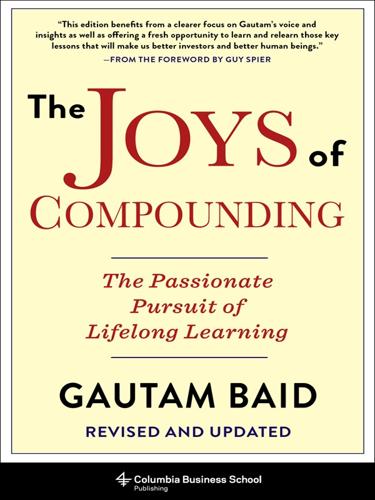
The Joys of Compounding: The Passionate Pursuit of Lifelong Learning, Revised and Updated
by
Gautam Baid
Published 1 Jun 2020
Elon Musk once referred to knowledge as a semantic tree: “Make sure you understand the fundamental principles, i.e., the trunk and big branches, before you get into the leaves/details or there is nothing for them to hang onto.”12 When you want to learn a new subject, first identify the fundamental principles and learn those in a clear and deep manner. Is there a way for us to do this effectively? It turns out that, indeed, a simple way to do this exists. It’s simple but not easy. The Feynman Technique The Feynman technique, named after Nobel Prize–winning physicist Richard Feynman, is a great method for learning anything in a clear and deep manner and for improving retention. The Feynman technique has four simple steps: 1. Pick and study a topic. 2. Take out a blank sheet of paper and write at the top the subject you want to learn. Write out what you know about the subject as if you were teaching it to someone who is unfamiliar with the topic—and not your smart adult friend but rather a ten-year-old child who can understand only basic concepts and relationships. 3.
…
When you can use your skills to make a difference in someone’s life and get paid for it, that’s a happy life. When you’re passionate about it as well, that’s a calling. The feeling is almost divine. —Ed Latimore The only way to deep happiness is to do something you love to the best of your ability. —Richard Feynman Your goal in life is to find out the people who need you the most, to find out the business that needs you the most, to find the project and the art that needs you the most. There is something out there just for you. —Naval Ravikant According to Gordon Matthews, professor of anthropology at the Chinese University of Hong Kong, how people understand ikigai can, in fact, often be mapped to two other Japanese ideas—ittaikan and jiko jitsugen.
…
A tree that wants to touch the sky must extend its roots into the earth. The more it wants to rise upward, the more it has to grow downward. Similarly, to rise in life, we need to be down to earth and humble. I was born not knowing and have had only a little time to change that here and there. —Richard Feynman Always question what you think you know, and remember that every subject probably is more complex than we currently recognize. Such self-awareness creates a more accurate mental map of reality, which in turn results in adopting language that more closely reflects the nuances of the world. This is particularly true when we encounter absolutist words—such as “never” instead of “seldom,” “all” instead of “many,” and “always” instead of “usually” (even “etc.” is a powerful reminder that we are leaving things out).
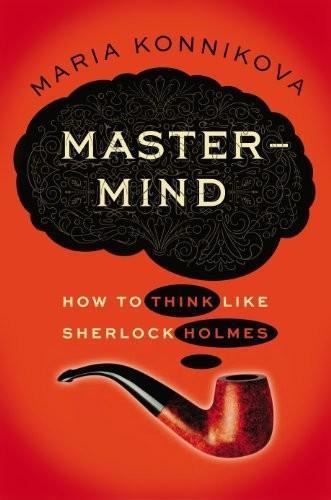
Mastermind: How to Think Like Sherlock Holmes
by
Maria Konnikova
Published 3 Jan 2013
When a physicist dreams up a new experiment or a biologist decides to test the properties of a newly isolated compound, he doesn’t always realize that his specific question, his approach, his hypothesis, his very view of what he is doing would be impossible without the elemental knowledge at his disposal, that he has built up over the years. Indeed, he may have a hard time telling you from where exactly he got the idea for a study—and why he first thought it would make sense. After World War II, physicist Richard Feynman was asked to serve on the State Curriculum Commission, to choose high school science textbooks for California. To his consternation, the texts appeared to leave students more confused than enlightened. Each book he examined was worse than the one prior. Finally, he came upon a promising beginning: a series of pictures, of a windup toy, an automobile, and a boy on a bicycle.
…
Why, of all things to mention to Lestrade, does Holmes focus on this particular feature, and what is it doing in something as strict-sounding as the scientific method of the mind? Lestrade isn’t the first to turn his nose up at the thought of imagination playing a role in good old scientific reason, nor is Holmes alone in his insistence to the contrary. One of the greatest scientific thinkers of the twentieth century, Nobel-winning physicist Richard Feynman, frequently voiced his surprise at the lack of appreciation for what he thought was a central quality in both thinking and science. “It is surprising that people do not believe that there is imagination in science,” he once told an audience. Not only is that view patently false, but “it is a very interesting kind of imagination, unlike that of the artist.
…
When Ofey first started to paint, he was a middle-aged physicist who hadn’t drawn a day in his life. He wasn’t sure he’d ever learn how. But learn he did, going on to have his own one-man show and to sell his art to collectors all over the world. Ofey, of course, is not your typical case. He wasn’t just any physicist. He happens to have been the Nobel Prize–winning Richard Feynman, a man of uncommon genius in nearly all of his pursuits. Feynman had created Ofey as a pseudonym to ensure that his art was valued on its own terms and not on those of his laurels elsewhere. And yet there are multiple other cases. While Feynman may be unique in his contributions to physics, he certainly is not in representing the brain’s ability to change—and to change in profound ways—late in life.
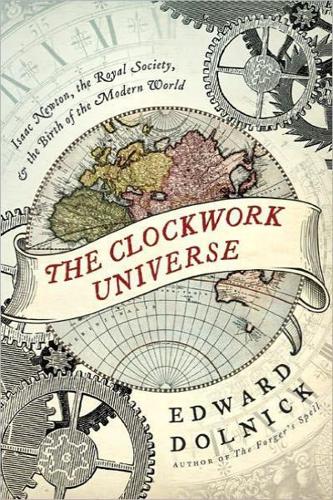
The Clockwork Universe: Saac Newto, Royal Society, and the Birth of the Modern WorldI
by
Edward Dolnick
Published 8 Feb 2011
How fast are they traveling when they hit the ground? Aristotle’s why explained the world, Galileo’s how described it. The new scientists began, that is, by dismissing the very question that all their predecessors had taken as fundamental. (Modern-day physicists often strike the same impatient tone. When someone asked Richard Feynman to help him make sense of the world as quantum mechanics imagines it, he supposedly snapped, “Shut up and calculate.”) Aristotle had an excellent answer to the question why do rocks fall when you drop them? Galileo proposed not a different answer or a better one, but no answer at all. People do not “know a thing until they have grasped the ‘why’ of it,” Aristotle insisted, but Galileo would have none of it.
…
Jardine writes that the unnamed showman with his arm in the pump was “almost certainly Hooke.” 60 one Arthur Coga: Weld, History of the Royal Society, vol. 1, p. 220. 60 a perfect subject: I owe this insight to Steven Shapin, “The House of Experiment in Seventeenth-Century England,” p. 376. 61 “to be the Author of new things”: Boorstin, The Discoverers, p. 409, quoting Thomas Sprat, History of the Royal Society, (London: 1734), p. 322. 62 “old wood to burn”: Cohen, Revolution in Science, p. 87. 62 “not to discover the new”: Boorstin, The Discoverers, p. 409. 62 In the fourteenth century Oxford: John Barrow, Pi in the Sky (New York: Oxford University Press, 1992), p. 205. 63 “the hallmark of the narrow-minded”: Daston and Park, Wonders and the Order of Nature, p. 61. 63 “For God is certainly called”: Ibid., p. 39. 63 The “lust to find out”: William Eamon, Science and the Secrets of Nature, p. 60. 63 “what the Lord keeps secret”: Ecclesiastes 3:22–23, quoted in Eamon, Science and the Secrets of Nature, p. 60. 64 “If the wisest men”: Westfall, Science and Religion in Seventeenth-Century England, p. 22. 64 How could anyone draw: Shapin, The Scientific Revolution, p. 82. 64 “absorbing, classifying, and preserving”: Allan Chapman, England’s Leonardo: Robert Hooke and the Seventeenth-Century Scientific Revolution, p. 40. 65fn Bacon’s zeal for experimentation: John Aubrey, Brief Lives (Woodbridge, Suffolk: Boydell, 1982), entry for “Francis Bacon.” 65 Nature must be “put to the torture”: Ibid., p. 40. 65 dizzy and temporarily deaf: Jardine, Ingenious Pursuits, p. 56. CHAPTER 11. TO THE BARRICADES! 66 “I swear to you by God’s”: David Berlinski, Infinite Ascent, p. 66. 67 “like torches, that in the lighting”: Eamon, Science and the Secrets of Nature, p. 330. 68 “I’ve known since yesterday”: Simon Singh, Big Bang (New York: Harper, 2004), p. 302. Richard Feynman tells the story in its classic, romantic form in his Feynman Lectures on Physics (Reading, MA: Addison-Wesley, 1963), pp. 3–7, almost as soon as he begins. 68 For decades Hooke argued: Eamon, Science and the Secrets of Nature, p. 347. 68 “Nothing considerable in that kind”: Ibid., p. 347. 68 “Do not throw your pearls”: Paolo Rossi, The Birth of Modern Science, p. 18. 69fn The historian Paolo Rossi: Rossi, The Birth of Modern Science, p. 15. 70 “to improve the knowledge”: Eamon, Science and the Secrets of Nature, p. 348. 70 “not by a glorious pomp”: Ibid., p. 25, quoting Sprat, History of the Royal Society, pp. 62–63. 70 “a close, naked, natural way”: Sprat, History of the Royal Society, p. 113. 71 “All that I mean”: Carey, John Donne, p. 58.
…
Donald Olson, a Texas State University astronomer, has carried out similar work, notably a study of Edvard Munch’s The Scream. 93 “The falling body moved more jubilantly”: Herbert Butterfield, The Origins of Modern Science, p. 6. 93 “a book written in mathematical characters”: The passage is from Galileo’s Assayer (1623), available at http://www.princeton.edu/∼hos/h291/assayer.htm. 94fn Galileo’s intellectual offspring: Richard Feynman, The Character of Physical Law, p. 58. 94 “the actuality of a potentiality”: Quoted in Joe Sachs, “Aristotle: Motion and Its Place in Nature,” at http://www.iep.utm.edu/aris-mot/. The remark is quoted in slightly different form in Oded Balaban, “The Modern Misunderstanding of Aristotle’s Theory of Motion,” at http://tinyurl.com/y24yvwo. 94 “If the ears, the tongue”: Galileo, The Assayer. 95 “communicate in the language”: Charles Coulston Gillispie, The Edge of Objectivity, p. 43. 95 “Do not all charms fly”: John Keats, Lamia, part 2. 95 “When I heard the learn’d astronomer”: Walt Whitman, “When I Heard the Learn’d Astronomer.” 96 “Shut up and calculate”: The remark is nearly always attributed to Feynman, it seems to have been coined by the physicist David Mermin.
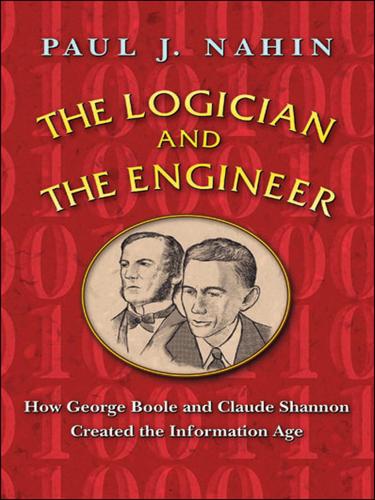
The Logician and the Engineer: How George Boole and Claude Shannon Created the Information Age
by
Paul J. Nahin
Published 27 Oct 2012
Shannon displayed an early interest in “how things work,” building model airplanes, a radio-controlled boat, and a telegraph system linking his house to a friend’s a half-mile distant (with the help of a strategically located wire fence). He earned pocket money during high school by delivering telegrams and fixing radios at a local department store. (This was common among many youngsters in the 1920s and 1930s who went on to technical careers; a similar story is told by Richard Feynman in his famous 1985 autobiographical Surely You’re Joking, Mr. Feynman!) Following in the footsteps of his sister, he enrolled at the University of Michigan, from which he graduated in 1936 with double bachelor’s degrees in mathematics and electrical engineering. It was in a class there that Shannon was introduced to Boole’s algebra of logic.
…
With his PhD in hand, and after spending the summer of 1940 back at Bell Labs, Shannon used a National Research Council Fellowship for a year’s stay at the Institute for Advanced Study in Princeton, New Jersey, where he worked under the great mathematician Hermann Weyl. Also there were such luminaries as John von Neumann and Albert Einstein. He might even have bumped into Richard Feynman, who was working on his PhD in physics at Princeton. Also there with Shannon was his first wife, Norma Levor (born 1920), whom he had married in 1939. Theirs was an intense, passionate, but ultimately doomed brief marriage, and Norma left him in June 1941. With all that going on in his life, it isn’t surprising that writing up his doctoral dissertation wasn’t high on Shannon’s list of things to do.
…
Bennett and Rolf Landauer, “The Fundamental Limits of Computation,” Scientific American, July 1985, pp. 48–56. The opening quotation to this chapter comes from this paper. 6. In Feynman Lectures on Computation (edited by A.J.G. Hey and R.W. Allen), Addison-Wesley, 1996, the American physicist Richard Feynman (1918–1988) says of this conservation property (p. 39): “Fredkin … demanded that not only must a gate be reversible, but the number of 1s and 0s should never change. There is no good reason for this [my emphasis], but he did it anyway.” Contrary to Feynman, you’ll see in the last section of this chapter that there can be, in fact, a very good reason for preserving parity. 7.
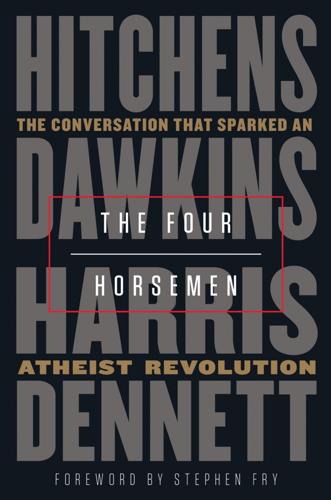
The Four Horsemen
by
Christopher Hitchens
,
Richard Dawkins
,
Sam Harris
and
Daniel Dennett
Published 19 Mar 2019
Or anyone willing to place their reputation and, as it were, their life on the idea that it would be. DAWKINS: I was once asked at a public meeting, ‘Don’t you think that the mysteriousness of quantum theory is just the same as the mysteriousness of the Trinity or transubstantiation?’ And the answer of course is, [it] can be answered, in two quotes from Richard Feynman. One, Richard Feynman said, ‘If you think you understand quantum theory, you don’t understand quantum theory.’ He was admitting that it’s highly mysterious. The other thing is that the predictions in quantum theory experimentally are verified to the equivalent of predicting the width of North America to the width of one human hair.
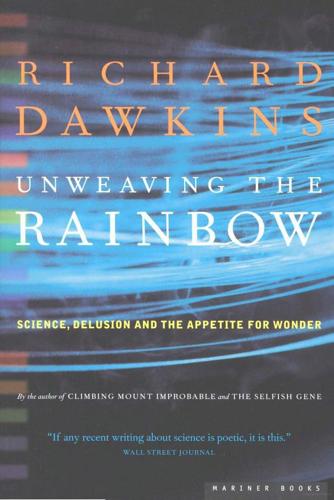
Unweaving the Rainbow
by
Richard Dawkins
Published 7 Aug 2011
What is so threatening about reason? Mysteries do not lose their poetry when solved. Quite the contrary; the solution often turns out more beautiful than the puzzle and, in any case, when you have solved one mystery you uncover others, perhaps to inspire greater poetry. The distinguished theoretical physicist Richard Feynman was charged by a friend that a scientist misses the beauty of a flower by studying it. Feynman responded: The beauty that is there for you is also available for me, too. But I see a deeper beauty that isn't so readily available to others. I can see the complicated interactions of the flower.
…
The color of the flower is red Does the fact that the plant has color mean that it evolved to attract insects? This adds a further question. Can insects see color? Do they have an aesthetic sense? And so on. I don't see how studying a flower ever detracts from its beauty. It only adds. from 'Remembering Richard Feynman', The Skeptical Inquirer (1988) Newton's dissection of the rainbow into light of different wavelengths led on to Maxwell's theory of electromagnetism and thence to Einstein's theory of special relativity. If you think the rainbow has poetic mystery, you should try relativity. Einstein himself openly made aesthetic judgements in science, and perhaps went too far.
…
Sometimes I imagine that I have some appreciation of the poetry of quantum theory, but I have yet to achieve an understanding deep enough to explain it to others. Actually, it may be that nobody really understands quantum theory, possibly because natural selection shaped our brains to survive in a world of large, slow things, where quantum effects are smothered. This point is well made by Richard Feynman, who is also supposed to have said, 'If you think you understand quantum theory—you don't understand quantum theory!' I think I have been brought closest to understanding by Feynman's published lectures, and by David Deutsch's astonishing and disturbing book, The Fabric of Reality (1997). (I find it additionally disturbing because I cannot tell when I am reading generally accepted physics, versus the author's own daring speculations).
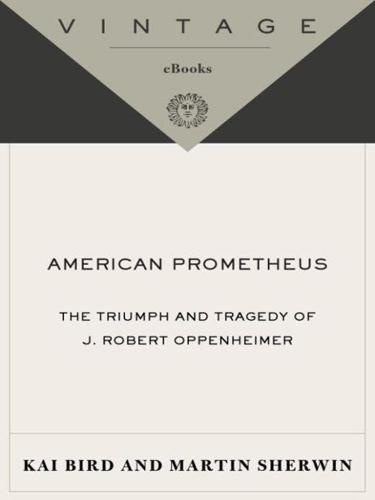
American Prometheus: The Triumph and Tragedy of J. Robert Oppenheimer
by
Kai Bird
and
Martin J. Sherwin
Published 18 Dec 2007
In these early years he was also able to achieve breakthroughs in the calculation of the absorption coefficient of X rays and the elastic and inelastic scattering of electrons. And what could any of this mean, in a practical sense, for humanity? However weirdly unintelligible—today as much as then—to the average citizen, quantum physics nevertheless explains our physical world. As the physicist Richard Feynman once observed, “[Quantum mechanics] describes nature as absurd from the point of view of common sense. And it fully agrees with experiment. So I hope you can accept nature as She is— absurd.” Quantum mechanics seems to study that which doesn’t exist—but nevertheless proves true. It works. In the decades to come, quantum physics would open the door to a host of practical inventions that now define the digital age, including the modern personal computer, nuclear power, genetic engineering, and laser technology (from which we get such consumer products as the CD player and the bar-code reader commonly used in supermarkets).
…
When Rabi warned him that “morale is sinking” among the group of physicists working in Princeton, Oppenheimer decided to import the entire Princeton team of twenty scientists to Los Alamos. This turned out to be a particularly serendipitous decision, as the Princeton group included not only Robert Wilson but a brilliant and cheerfully mischievous twenty-four-year-old physicist named Richard Feynman. Oppenheimer had immediately recognized the genius in Feynman and knew he wanted him at Los Alamos. However, Feynman’s wife, Arline, was battling tuberculosis and Feynman made it clear he could not move to Los Alamos without her. Feynman thought that had ended the matter, but one day in the winter of early 1943 he received a long-distance phone call from Chicago.
…
“Talk as if you had too many drinks. . . . I don’t care how you manage it, say we are building an electric rocket.” Accompanied by John Manley and Priscilla Greene, Bob and Charlotte Serber soon drove down to Santa Fe and tried to spread the rumor. But no one was interested, and G-2 never picked up any talk about electric rockets. Richard Feynman, an incorrigible practical joker, had his own way of dealing with security regulations. When the censors complained that his wife, Arline, now a patient at a tuberculosis sanatorium in Albuquerque, was sending him letters in code and asked for the code, Feynman explained that he didn’t have the key to it—it was a game he played with his wife to practice his code-breaking.

The Age of Spiritual Machines: When Computers Exceed Human Intelligence
by
Ray Kurzweil
Published 31 Dec 1998
Time, March 16, 1998. 3 Hans Moravec, Mind Children: The Future of Robot and Human Intelligence (Cambridge, MA: Harvard University Press, 1988), p. 108. 4 Ralph Merkle’s comments on nanotechnology can be found in an overview at his web site at the Xerox Palo Alto Research Center <http://sandbox.xerox.com/nano>. His site contains links to important publications on nanotechnology, such as Richard Feynman’s 1959 talk and Eric Drexler’s dissertation, as well as links to various research centers that focus on nanotechnology. 5 Richard Feynman presented these ideas on December 29, 1959, at the annual meeting of the American Physical Society at the California Institute of Technology (Cal Tech). His talk was first published in the February 1960 issue of Cal Tech’s Engineering and Science.
…
To rein-vent our cells, we look to one of the twenty-first century’s primary technologies: nanotechnology. NANOTECHNOLOGY: REBUILDING THE WORLD, ATOM BY ATOM The problems of chemistry and biology can be greatly helped if... doing things on an atomic level is ultimately developed—a development which I think cannot be avoided. —Richard Feynman, 1959 Suppose someone claimed to have a microscopically exact replica (in marble, even) of Michelangelo’s David in his home. When you go to see this marvel, you find a twenty-foot-tall, roughly rectilinear hunk of pure white marble standing in his living room. “I haven’t gotten around to unpacking it yet,” he says, “but I know it’s in there.”
…
Just as our human-created computational technology will ultimately exceed the capacity of natural computation (electronic circuits are already millions of times faster than human neural circuits), our twenty-first-century physical technology will also greatly exceed the capabilities of the amino acid—based nanotechnology of the natural world. The concept of building machines atom by atom was first described in a 1959 talk at Cal Tech titled “There’s Plenty of Room at the Bottom,” by physicist Richard Feynman, the same guy who first suggested the possibility of quantum computing.5 The idea was developed in some detail by Eric Drexler twenty years later in his book Engines of Creation.6 The book actually inspired the cryonics movement of the 1980s, in which people had their heads (with or without bodies) frozen in the hope that a future time would possess the molecule-scale technology to overcome their mortal diseases, as well as undo the effects of freezing and defrosting.
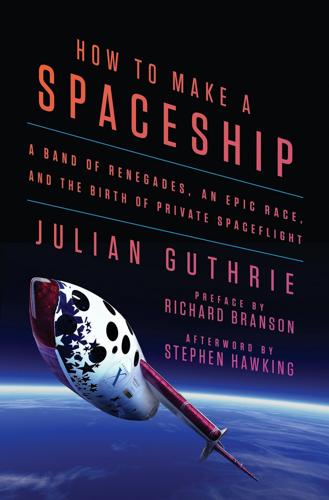
How to Make a Spaceship: A Band of Renegades, an Epic Race, and the Birth of Private Spaceflight
by
Julian Guthrie
Published 19 Sep 2016
He and his mom passed buildings 10 and 11 and stopped at building 8, the physics department. Created in the nineteenth century by MIT founder William Barton Rogers, the department had among its faculty and graduates a dazzling array of Nobel Prize winners and some of the field’s greatest minds, from Richard Feynman (quantum electrodynamics), Murray Gell-Mann (elementary particles), Samuel Ting and Burton Richter (subatomic particles), to Robert Noyce (Fairchild Semiconductor, Intel), Bill Shockley (field-effect transistors), George Smoot (cosmic microwave background radiation), and Philip Morrison (Manhattan Project, science educator).
…
The space shuttle Challenger had disintegrated seventy-three seconds after liftoff on January 28, 1986, killing the seven astronauts, including a high school teacher, on board. The accident was found to be part mechanical failure, part management failure. Members of the Rogers Commission, appointed to determine the causes of the disaster, found among other things that NASA managers had not accurately calculated the flight risks. Commissioner Richard Feynman, the Caltech physicist and Nobel laureate, concluded, “The management of NASA exaggerates the reliability of its product, to the point of fantasy.” Burt had followed the commission’s findings only from afar. One of the more memorable things to come out of it was something he heard from test pilot Chuck Yeager, who would swing by to visit on occasion.
…
Where no government filled the need and no immediate profit could fill the bill, the Orteig Prize stimulated multiple different attempts. Where $25,000 was offered, nearly $400,000 was spent to win the prize—because it was there to be won. Peter wanted to do for space what Orteig—through Lindbergh—did for aviation. He now had everyone’s attention. Peter told the cautionary story of Richard Feynman giving a Caltech lecture to the American Physical Society entitled “There’s Plenty of Room at the Bottom,” where he spoke of building atomic- and molecular-size machinery. To promote the idea, Feynman offered $1,000 to the first person who could build a working electric motor no larger than one sixty-fourth of an inch on each side.
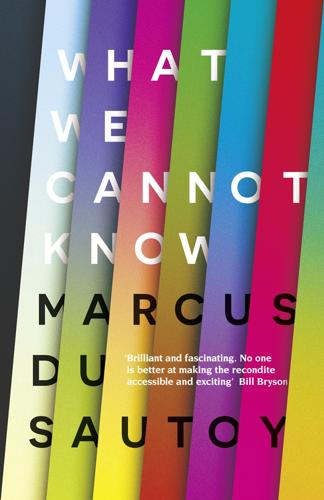
What We Cannot Know: Explorations at the Edge of Knowledge
by
Marcus Du Sautoy
Published 18 May 2016
As I try to divide my dice more and more, at some point I run up against a barrier beyond which I cannot pass, as my next Edge reveals. THIRD EDGE: THE POT OF URANIUM 5 It is absolutely necessary, for progress in science, to have uncertainty as a fundamental part of your inner nature. Richard Feynman It’s extraordinary what you can buy over the Internet. Today a small pot of radioactive uranium-238 arrived in the post. ‘Useful for performing nuclear experiments,’ the advert assured me. I rather enjoyed the comments from other people who purchased a pot: ‘So glad I don’t have to buy this from Libyans in parking lots at the mall anymore.’
…
Lewis Carroll, Alice’s Adventures in Wonderland I must admit that I am having real trouble with the counterintuitive nature of the quantum world. Apparently, this is a good sign. The quantum physicist Niels Bohr once declared: ‘If quantum physics hasn’t profoundly shocked you, you haven’t understood it yet.’ Richard Feynman went even further, declaring that ‘no one understands quantum physics’. During a keynote address he made in his sixties he admitted: ‘Might I say immediately that we have always had (secret, secret, close the doors!) we have always had a great deal of difficulty in understanding the world view that quantum mechanics represents.
…
If I was going to get anywhere in my attempts to understand whether a God could hide in the equations of quantum physics, I needed to talk to someone who was as much at home in a laboratory as in a cathedral. So I made a trip to Cambridge. THE VEGETARIAN BUTCHER John Polkinghorne learned his physics at the feet of Paul Dirac in Cambridge and then with Richard Feynman and Murray Gell-Mann at Caltech. You can’t ask for better teachers than that. His research has, among other things, helped to confirm the existence of the quarks that many believe are the last step as I zoom in on my casino dice. Polkinghorne is back at his alma mater, so I arranged to meet him at his home in Cambridge.
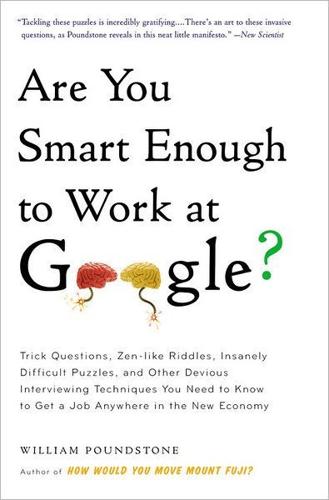
Are You Smart Enough to Work at Google?: Trick Questions, Zen-Like Riddles, Insanely Difficult Puzzles, and Other Devious Interviewing Techniques You ... Know to Get a Job Anywhere in the New Economy
by
William Poundstone
Published 4 Jan 2012
Born in London in 1959, Wolfram had been a child prodigy and had published an important paper on quarks at the age of seventeen. Three years later he had a PhD in particle physics from Caltech. In the 1980s, Wolfram received a MacArthur grant, worked at the Institute for Advanced Study, and collaborated with Richard Feynman. In 1987 he cofounded Wolfram Research to market Mathematica, the globally used calculating program for scientists and engineers. It took Wolfram just a single line of Mathematica code to solve the billboard’s puzzle. Let me explain what the billboard was asking. Start inside the brackets with the italicized lowercase letter e.
…
You have N companies and want to merge them into one big company. How many different ways are there to do it? ? What is the most beautiful equation you have ever seen? Explain. Five Engineers and How Not to Think Like Them The Value of Keeping Things Simple The great physicist Richard Feynman once applied for a job at Microsoft (so runs the guaranteed-apocryphal story). “Well, well, Dr. Feynman,” the interviewer began. “We don’t get many Nobel Prize winners, even at Microsoft! But before we can hire you, there’s a slight formality. We need to ask you a question to test your creative reasoning ability.
…
Dirac was notoriously eccentric and socially awkward, partly the result of autism. As a theoretical physicist, he saw the world as a puzzle to which beautiful equations were the key. To a remarkable degree, contemporary science (and many job interviewers) accept Dirac’s view of the world. For an amusing rebuttal, see Richard Feynman in the second volume of The Feynman Lectures on Physics, in which he makes the amazing claim that all of physics can be reduced to a single equation. The equation is U = 0 That’s it! That’s everything about the universe! Feynman was half-serious. Take an equation like E = mc2. It is said to be deep.
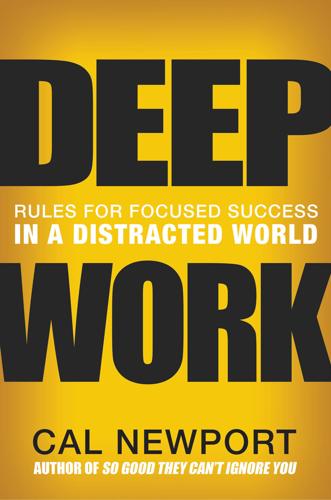
Deep Work: Rules for Focused Success in a Distracted World
by
Cal Newport
Published 5 Jan 2016
“To do real good physics work”: comes around the 28:20 mark in a 1981 TV interview with Richard Feynman for the BBC Horizon program (the interview aired in the United States as an episode of NOVA). The YouTube video of this interview that I watched when researching this book has since been removed due to a copyright complaint by the BBC (https://www.youtube.com/watch?v=Bgaw9qe7DEE). Transcripts of the relevant quote, however, can be found at http://articles.latimes.com/1988-02-16/news/mn-42968_1_nobel-prize/2 and http://calnewport.com/blog/2014/04/20/richard-feynman-didnt-win-a-nobel-by-responding-promptly-to-e-mails/ and http://www.worldcat.org/wcpa/servlet/DCARead?
…
Google Scholar, a tool popular among academics for finding research papers, even calculates your h-index automatically so you can be reminded, multiple times per week, precisely where you stand. (In case you’re wondering, as of the morning when I’m writing this chapter, I’m a 21.) This clarity simplifies decisions about what work habits a professor adopts or abandons. Here, for example, is the late Nobel Prize–winning physicist Richard Feynman explaining in an interview one of his less orthodox productivity strategies: To do real good physics work, you do need absolute solid lengths of time… it needs a lot of concentration… if you have a job administrating anything, you don’t have the time. So I have invented another myth for myself: that I’m irresponsible.
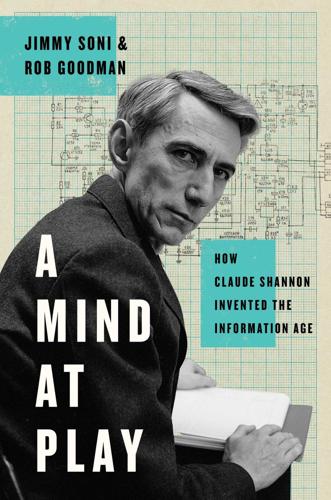
A Mind at Play: How Claude Shannon Invented the Information Age
by
Jimmy Soni
and
Rob Goodman
Published 17 Jul 2017
His best ideas waited years for publication, and his interest drifted across problems on a private channel of its own. Having completed his pathbreaking work by the age of thirty-two, he might have spent his remaining decades as a scientific celebrity, a public face of innovation: another Bertrand Russell, or Albert Einstein, or Richard Feynman, or Steve Jobs. Instead, he spent them tinkering. An electronic, maze-solving mouse named Theseus. An Erector Set turtle that walked his house. The first plan for a chess-playing computer, a distant ancestor of IBM’s Deep Blue. The first-ever wearable computer. A calculator that operated in Roman numerals, code-named THROBAC (“Thrifty Roman-Numeral Backward-Looking Computer”).
…
* * * In truth, the Institute for Advanced Study proved unhealthy for Shannon. For some, it was a land of academic lotus-eating, an island where the absence of the ordinary worries of the job—students, deadlines, publication pressure—proved enervating rather than invigorating. The physicist Richard Feynman, who was working on his doctorate at Princeton while Shannon was at the IAS down the street, observed the inertia firsthand: “A kind of guilt or depression worms inside of you, and you begin to worry about not getting any ideas. . . . You’re not in contact with the experimental guys. You don’t have to think how to answer questions from the students.
…
Along with Shannon, the resulting list included a twenty-six-year-old, boyish-looking molecular biologist working at the Cavendish Laboratory in Cambridge, England. Eight years later, at the age of thirty-four, James Watson won the Nobel Prize, along with Francis Crick and Maurice Wilkins, for discovering the double helix of DNA. Another of Bello’s profilees was a thirty-six-year-old wunderkind physicist. Richard Feynman, too, shared a Nobel in 1965 for his work on quantum electrodynamics. In fact, one-quarter of the twenty scientists Bello singled out for recognition would go on to win that honor. With similar encomia in Time, Life, and a host of other major publications, Shannon had reached the heights of scientific celebrity—in a postwar era in which the figure of “the Scientist” had itself reached its apex of cultural prestige.
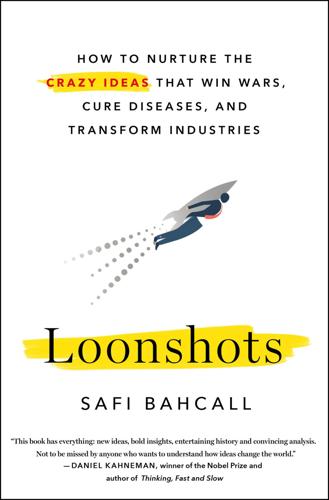
Loonshots: How to Nurture the Crazy Ideas That Win Wars, Cure Diseases, and Transform Industries
by
Safi Bahcall
Published 19 Mar 2019
Those of modest fortunes, in their younger and more aggressive years, may travel widely in the pursuit of fame, wealth, and glory. Let’s call that force “entropy.” Those of greater fortune, in their older and gentler years, want to settle down with a partner. They seek family, stability, and cable TV. Let’s call that force “binding energy.” The physicist Richard Feynman once said, “Learn by trying to understand simple things in terms of other ideas—always honestly and directly.” His disciple Lenny Susskind, my former graduate advisor, took that advice seriously. Lenny once explained to me a complex idea in topology, the study of surfaces, by saying, “Imagine an elephant, then take its trunk and shove it up its a—.
…
And we have seen how these ideas have come together, in a handful of examples, to win wars, cure diseases, and transform industries. So now, to close, let’s turn to another small topic: the history of our species. PART THREE THE MOTHER OF ALL LOONSHOTS When you have learned to explain simpler things, so you have learned what an explanation really is, you can then go on to more subtle questions. —Richard Feynman 9 Why the World Speaks English THE NEEDHAM QUESTION On a sunny day in August 1937, on the campus of Cambridge University in England, an attractive 33-year-old visitor knocked on the door of a renowned biochemist. Joseph Needham’s three-volume study of how embryos form and grow had been compared by reviewers to Darwin’s Origin of Species.
…
Reprinted with permission from AAAS. Tug-of-war: Antar Dayal, AntarWorks LLC. Launch of Sputnik: By permission of the Marcus family. Library of Congress, Prints & Photographs Division, LC-DIG-ds-04944. The DARPA team prepares: DARPA. Shredding the Dead Sea Scrolls: Antar Dayal, AntarWorks LLC. Richard Feynman: Tamiko Thiel, via Wikimedia Commons. Einstein and Kepler: Antar Dayal, AntarWorks LLC. Shen Kuo: Antar Dayal, AntarWorks LLC. Hooke, Boyle, and air pump: Rita Greer, via Wikimedia Commons. Papin’s discovery: Public domain. SOURCE NOTES Because sources mostly do not overlap between chapters, a bibliography is provided for each chapter, to make it easier for the reader to browse related subjects.
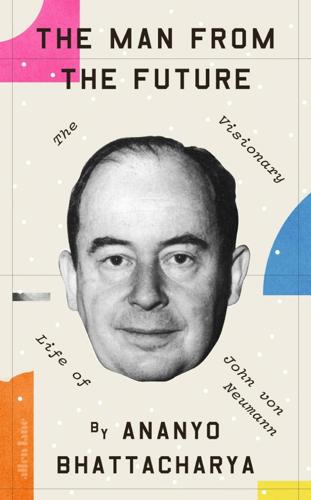
The Man From the Future: The Visionary Life of John Von Neumann
by
Ananyo Bhattacharya
Published 6 Oct 2021
Envious Princetonians dubbed the moneyed academy a stone’s throw away ‘the Institute for Advanced Salaries’ and ‘the Institute for Advanced Lunch’. Unused to the gilded existence, some professors would lapse into somnolence. ‘These poor bastards could now sit and think clearly all by themselves, OK?’ wrote one critic, the Nobel Prize-winning physicist Richard Feynman. ‘They have every opportunity to do something, and they’re not getting any ideas … Nothing happens because there’s not enough real activity and challenge: You’re not in contact with the experimental guys. You don’t have to think how to answer questions from the students. Nothing!’3 Einstein would spend his Princeton years in unfruitful attempts to merge his theory of gravity with the laws of electromagnetism.
…
He loved the camaraderie, the poker games and the glorious booze- and cigarette-fuelled discussions, which could go on until all hours.32 The Hungarian contingent was there in force, along, now, with his good friend Stanisław Ulam. That was no coincidence: von Neumann had recruited his fellow mathematician shortly after he had joined the project himself. Von Neumann at Los Alamos in 1949. Here with Richard Feynman (middle) and Stanisław Ulam (right). Photograph by Nicholas Metropolis; Courtesy of Los Alamos National Laboratory. In between the fun and games, von Neumann was helping to perfect the implosion bomb. The theorists assigned to the programme purchased ten electrical punch-card machines from IBM to help solve the hydrodynamic equations that would reveal whether the explosive lenses would compress the plutonium core quickly enough to detonate the bomb.
…
Much like the wooden replicators Penrose designed link up in precise configurations when shaken together, the protein parts of a complex structure like the outer shell of a virus bounce off each other until complementary chemical forces pull them together and make them stick. These soft biological machines will then serve as a stepping stone to second-generation nanomachines made of tougher stuff, such as ceramics, metals and diamond. Drexler had come across the transcript of a provocative talk entitled ‘There’s Plenty of Room at the Bottom’ given by Richard Feynman in 1959. ‘What would happen’, Feynman asks, ‘if we could arrange the atoms one by one the way we want them?’ Fired up by the idea, which was consistent with his own thinking at the time, Drexler wanted to realize Feynman’s vision. In Engines of Creation, he proposes an ‘assembler’ a few billionths of a metre long that is able to both replicate itself and make other machines, atom by atom.
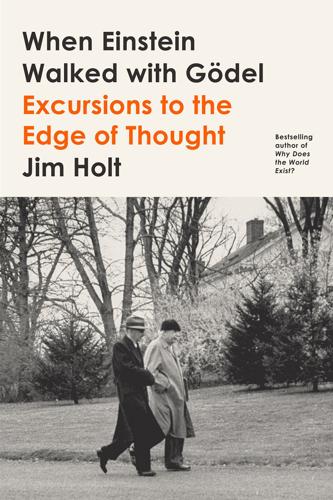
When Einstein Walked With Gödel: Excursions to the Edge of Thought
by
Jim Holt
Published 14 May 2018
Behind this triumph of human reason, however, lay an idea that still struck many as occult and untrustworthy. Newton himself was more than a little qualmish. In presenting his proof of the law of ellipses in the Principia, he purged it insofar as possible of the infinitesimal calculus; the resulting exposition, cast in a Euclidean mold, is impossible to follow. (Even the Nobel laureate Richard Feynman lost his way in the middle of Newton’s argument when presenting it in a lecture to his students at Caltech.) In his later writings, Newton was careful never to consider infinitesimals in isolation but only in ratios, which were always finite. By the end of his life, he had renounced the idea of the infinitely small altogether.
…
So which is it: the best of times or the worst of times? This is, after all, theoretical physics, not a Victorian novel. If you are a casual reader of science articles in the newspaper, you are probably more familiar with the optimistic view. But string theory has always had a few vocal skeptics. Almost three decades ago, Richard Feynman dismissed it as “crazy,” “nonsense,” and “the wrong direction” for physics. Sheldon Glashow, who was awarded a Nobel Prize for making one of the last great advances in physics before the beginning of the string-theory era, has likened string theory to a “new version of medieval theology” and campaigned to keep string theorists out of his own department at Harvard.
…
Similarly, if the theory is symmetric under time translation, that implies the law of conservation of energy. Symmetry under shifts in orientation implies the law of conservation of angular momentum. Other, more subtle symmetries imply still more subtle conservation laws. The intimate connection between symmetry and conservation is “a most profound and beautiful thing,” in the words of Richard Feynman, one that “most physicists still find somewhat staggering.” Laws that were once thought to be brute facts about the natural world—like the first law of thermodynamics, which says that energy can be neither created nor destroyed—turn out to be, in effect, preconditions of the possibility of objective knowledge.
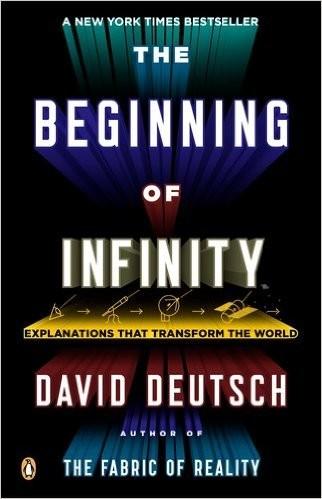
The Beginning of Infinity: Explanations That Transform the World
by
David Deutsch
Published 30 Jun 2011
: Everett, Quantum Theory, and Reality (Oxford University Press, 2010) David Deutsch, ‘It from Qubit’, in John Barrow, Paul Davies and Charles Harper, eds., Science and Ultimate Reality (Cambridge University Press, 2003) David Deutsch, ‘Quantum Theory of Probability and Decisions’, Proceedings of the Royal Society A455 (1999) David Deutsch, ‘The Structure of the Multiverse’, Proceedings of the Royal Society A458 (2002) Richard Feynman, The Character of Physical Law (BBC Publications, 1965) Richard Feynman, The Meaning of It All (Allen Lane, 1998) Ernest Gellner, Words and Things (Routledge & Kegan Paul, 1979) William Godwin, Enquiry Concerning Political Justice (1793) Douglas Hofstadter, Gödel, Escher, Bach: An Eternal Golden Braid (Basic Books, 1979) Douglas Hofstadter, I am a Strange Loop (Basic Books, 2007) Bryan Magee, Popper (Fontana, 1973) Pericles, ‘Funeral Oration’ Plato, Euthyphro Karl Popper, In Search of a Better World (Routledge, 1995) Karl Popper, The World of Parmenides (Routledge, 1998) Roy Porter, Enlightenment: Britain and the Creation of the Modern World (Allen Lane, 2000) Martin Rees, Just Six Numbers (Basic Books, 2001) Alan Turing, ‘Computing Machinery and Intelligence’, Mind, 59, 236 (October 1950) Jenny Uglow, The Lunar Men (Faber, 2002) Vernor Vinge, ‘The Coming Technological Singularity’, Whole Earth Review, winter 1993 *The term was coined by the philosopher Norwood Russell Hanson.
…
But it does not matter what terminology you use, so long as it does not lead you to conclude that there is something worthwhile about the Persephone myth, or the prophet’s apocalyptic theory or the gambler’s delusion, just because it is testable. Nor is a person capable of making progress merely by virtue of being willing to drop a theory when it is refuted: one must also be seeking a better explanation of the relevant phenomena. That is the scientific frame of mind. As the physicist Richard Feynman said, ‘Science is what we have learned about how to keep from fooling ourselves.’ By adopting easily variable explanations, the gambler and prophet are ensuring that they will be able to continue fooling themselves no matter what happens. Just as thoroughly as if they had adopted untestable theories, they are insulating themselves from facing evidence that they are mistaken about what is really there in the physical world.
…
In quantum physics, variables are typically discrete, and how they change from one value to another is a multiversal process involving interference and fungibility. 12 A Physicist’s History of Bad Philosophy With Some Comments on Bad Science By the way, what I have just outlined is what I call a ‘physicist’s history of physics’, which is never correct… Richard Feynman, QED: The Strange Theory of Light and Matter (1985) READER: So, I am an emergent, quasi-autonomous flow of information in the multiverse. DAVID: You are. READER: And I exist in multiple instances, some of them different from each other, some not. And those are the least weird things about the world according to quantum theory.
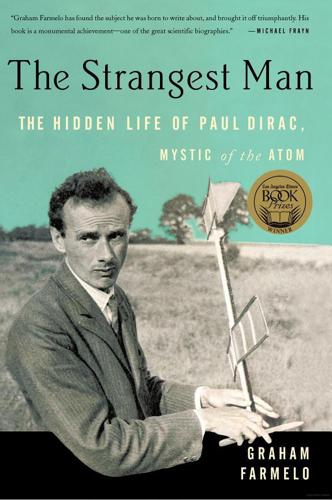
The Strangest Man: The Hidden Life of Paul Dirac, Mystic of the Atom
by
Graham Farmelo
Published 24 Aug 2009
Interview with Lew Kowarski by Charles Weiner, 3 May 1970, AIP. 3 The typed manuscript of Dirac’s talk is in the Mudd Library, PRINCETON. 4 In Feynman’s theory, the probability that a quantum such as an electron will make a transition from one point in space-time to another can be calculated from a mathematical expression related to the action involved in moving between the two points, summed over all possible routes between them. 5 Interview by Charles Weiner of Richard Feynman, 27 June 1966 (CALTECH). See also Feynman’s Nobel Lecture and Gleick (1992: 226) and its references. 6 Interview with Freeman Dyson, 27 June 2005. Dyson noted that Feynman made the point repeatedly. 7 Quoted by Oppenheimer in Smith and Weiner (1980: 269). Wigner was one of the examiners of Feynman’s Ph.
…
Dirac looked rather more resolute in the two chalk drawings by Howard Morgan in 1980, commissioned by the National Portrait Gallery. 50 Feynman’s drawing is reproduced in the frontispiece of Kursunoglu and Wigner (1987). An example of Feynman’s ‘I’m no Dirac’ is in interview by Charles Weiner of Richard Feynman, 28 June 1966, p. 187 (CALTECH). 51 Lord Waldegrave points out that ‘the award was largely the result of the intervention of Victor Rothschild, the late Lord Rothschild, who was well placed at that time as a Permanent Secretary in the Cabinet Office as Head of the Central Policy Review Staff of Prime Minister Edward Heath’ (interview with Lord Waldegrave, 2 June 2004). 52 Letter from Manci to Barbara Gamow, 1 May 1973, LC. 53 Salaman and Salaman (1986: 70).
…
Extract from a letter from Dirac to his friend Manci Balazs, 9 May 1935 Dirac and Manci on their honeymoon, Brighton, January 1937 The Dirac family in the garden of their Cambridge home, c.1946. Left to right: Dirac, Monica, Manci, Gabriel, Mary and Judy. Dirac and Manci (on the far left) with a party during a crossing of the Atlantic on the SS America, 2 April 1963 Dirac and Richard Feynman at a conference on relativity, Warsaw, July 1962 Dirac at the Institute for Advanced Study, Princeton, c.1958 The Diracs’ home in Tallahasse, 223 Chapel Drive Kapitza and Dirac at the Hotel Bad Schachen, Lindau, summer 1982 One of the last photographs taken of Dirac, Tallahassee, c.1983 Abbreviations in Notes AHQP Archives for the History of Quantum Physics, multiple locations, provided by Niels Bohr Library & Archives, American Institute of Physics, College Park, Maryland., USA (http://www.amphilsoc.org/library/guides/ahqp/).

The Future of the Professions: How Technology Will Transform the Work of Human Experts
by
Richard Susskind
and
Daniel Susskind
Published 24 Aug 2015
As Abraham Maslow, a leading psychologist, has noted: ‘I suppose it is tempting, if the only tool you have is a hammer, to treat every problem as if it were a nail.’88 However, real-life problems do not always arise neatly labelled as the province of one professional or another. Everyday problems are messier than this—the life events that incline people to seek professional help might, ideally, call for the input of many experts, and not just one. Physics Nobel Laureate Richard Feynman makes an analogous point, relating to the way we chunk up the world around us: if we look at a glass of wine closely enough we see the entire universe. … If our small minds, for some convenience, divide this glass of wine, this universe, into parts—physics, biology, geology, astronomy, psychology, and so on—remember that nature does not know it!
…
They often work with informal, approximations of fields of knowledge. The purist may find these untenable (and they may be theoretically flawed), but they do seem to work in practice. For a stimulating related discussion, see David Bloor, Knowledge and Social Imagery (1991). 88 Abraham Maslow, The Psychology of Science (1966), 15. 89 Richard Feynman, The Feynman Lectures on Physics, Vol. 1 (1964), ch. 3.7 <http://www. feynmanlectures.caltech.edu/I_toc.html> (accessed 27 March 2015). 90 Discussed in Alex Frame, Salmond: Southern Jurist (1995), 30. 2 From the Vanguard In this chapter we change pace. We run through a group of different professions and offer a glimpse of the many ways in which they are changing, largely because of technology.
…
Now it costs a few thousand dollars.48 Companies like 23andMe, Navigenics, and deCODE offer commercial testing services from $99.49 In the field of ‘genome editing’, scientists search for problematic genes and actively intervene to change or remove them. Nanomedicine, the use of nanotechnology in a medical setting, is another field. Nobel Laureate Richard Feynman’s seventy-year-old prediction that we might one day ‘swallow the surgeon’50 has come true—there are already small nanobots that are able to swim through our bodies, relaying images, delivering targeted drugs, and attacking particular cells with a precision that makes even the finest of surgeons’ blades look blunt.
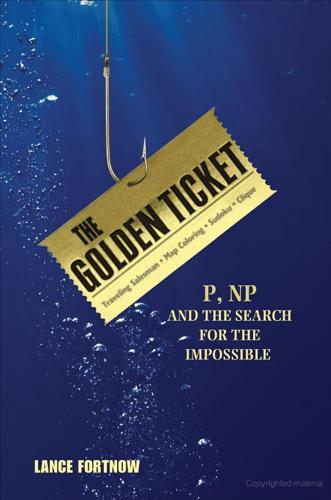
The Golden Ticket: P, NP, and the Search for the Impossible
by
Lance Fortnow
Published 30 Mar 2013
A hacker might damage part of the system, such as by sticking a smart card in a microwave, and hope the resulting damaged computation may no longer keep secrets. We may have unbreakable codes, but building systems that will always keep secrets a secret may never come to be. Chapter 9 QUANTUM IN 1982, THE NOBEL PRIZE–WINNING PHYSICIST Richard Feynman noticed there was no simple way of simulating quantum physical systems using digital computers. He turned this problem into an opportunity—perhaps a computational device based on quantum mechanics could solve problems more efficiently than more traditional computers. In the decades that followed, computer scientists and physicists, often working together, showed in theory that quantum computers can solve certain problems, such as factoring numbers, much faster.
…
Craig Gentry, “Fully Homomorphic Encryption Using Ideal Lattices,” in Proceedings of the 41st Annual ACM Symposium on Theory of Computing (New York: ACM, 1979), 169–78. Ronald Rivest, Adi Shamir, and Leonard Adleman, “A Method for Obtaining Digital Signatures and Public-Key Cryptosystems,” Communications of the ACM 21, no. 2 (February 1978): 120–26. Chapter 9 My account of Richard Feynman’s role in quantum computing draws on David Deutsch’s work, “Quantum Computation,” Physics World, January 6, 1992. Works Cited Charles Bennett and Gilles Brassard, “Quantum Cryptography: Public Key Distribution and Coin Tossing,” Proceedings of the IEEE International Conference on Computers, Systems, and Signal Processing (Amsterdam: Elsevier, 1984), 175–79.
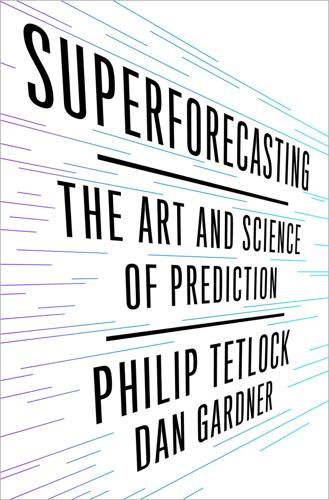
Superforecasting: The Art and Science of Prediction
by
Philip Tetlock
and
Dan Gardner
Published 14 Sep 2015
Druin Burch, Taking the Medicine: A Short History of Medicine’s Beautiful Idea, and Our Difficulty Swallowing It (London: Vintage, 2010), p. 4. 5. Ibid., p. 37. 6. Ira Rutkow, Seeking the Cure: A History of Medicine in America (New York: Scribner, 2010), p. 98. 7. Ibid., p. 94. 8. Burch, Taking the Medicine, p. 158. 9. Richard Feynman, commencement address at the California Institute of Technology, Pasadena, 1974. 10. Richard Feynman, The Meaning of It All: Thoughts of a Citizen-Scientist (New York: Basic Books, 2005), p. 28. 11. Ibid., p. 27. 12. Cochrane with Blythe, One Man’s Medicine, pp. 46, 157, 211, 190. 13. Daniel Kahneman, Thinking, Fast and Slow (New York: Farrar, Straus and Giroux, 2011), p. 209. 14.
…
True, it had occasionally reaped the fruits of science like the germ theory of disease and the X-ray. And it dressed up as a science. There were educated men with impressive titles who conducted case studies and reported results in Latin-laden lectures at august universities. But it wasn’t scientific. It was cargo cult science, a term of mockery coined much later by the physicist Richard Feynman to describe what happened after American airbases from World War II were removed from remote South Pacific islands, ending the islanders’ only contact with the outside world. The planes had brought wondrous goods. The islanders wanted more. So they “arranged to make things like runways, to put fires along the sides of the runways, to make a wooden hut for a man to sit in, with two wooden pieces on his head like headphones and bars of bamboo sticking out like antennas—he’s the controller—and they wait for the planes to land.”9 But the planes never returned.
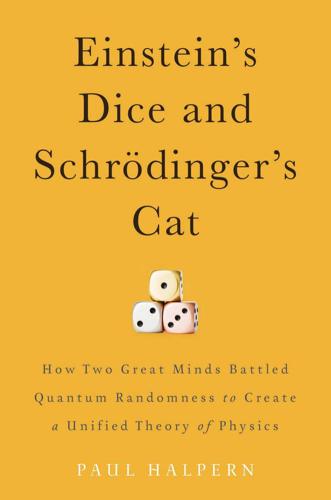
Einstein's Dice and Schrödinger's Cat: How Two Great Minds Battled Quantum Randomness to Create a Unified Theory of Physics
by
Paul Halpern
Published 13 Apr 2015
The equation Gμν = 8πTμν (which can be written in various ways) is considered one of Einstein’s most important contributions, along with E = mc2 and the equation for the photoelectric effect. All three equations are carved into the Einstein Memorial in Washington, D.C., as testimony to his brilliance. An anecdote once told by acclaimed physicist Richard Feynman illustrates the ubiquity of Einstein’s field equations in modern discussions of gravitation. Feynman was invited to the first American conference on general relativity, in Chapel Hill, North Carolina, in 1957. When he arrived at the airport and was about to take a taxi to the conference, he didn’t know whether it was being held at the University of North 59 Einstein’s Dice and Schrödinger’s Cat Carolina or North Carolina State.
…
(He didn’t respond to the O’Nolan piece, which he probably didn’t even hear about.) However, it would be three more years until he resumed his correspondence with his old friend. Milestones In 1948, Princeton physicist John Wheeler, who lived near Einstein and often visited him, brought him exciting news. Wheeler’s brilliant student Richard Feynman had developed a unique approach to quantum mechanics, called “sum over histories,” that generalized Hamilton’s least-action principle to the study of how photons transfer between electrons and other charged particles to generate the electromagnetic force. In creating a force, the photon acts as what is called an “exchange particle.”
…
Don Howard, trans. Anna Beck (Princeton, NJ: Princeton University Press, 1995), Doc. 421. 7. Carl Seelig, Albert Einstein: A Documentary Biography, trans. Mervyn Savill (London: Staples Press, 1956), 108. 8. Albert Einstein to Paul Ehrenfest, January 1916, in Seelig, Albert Einstein, 156. 9. Richard Feynman, “Surely You’re Joking, Mr. Feynman!”: Adventures of a Curious Character (New York: Norton, 2010), 58. 10. Walter Moore, Schrödinger: Life and Thought (New York: Cambridge University Press, 1982), 105. 11. Erwin Schrödinger, translated and quoted in Alex Harvey, “How Einstein Discovered Dark Energy,” 2012, http://arxiv.org/abs/1211.6338. 12.

The Knowledge Machine: How Irrationality Created Modern Science
by
Michael Strevens
Published 12 Oct 2020
Murray Gell-Mann, the discoverer of quarks, called quantum mechanics a “mysterious, confusing discipline.” According to Roger Penrose, one of the late twentieth century’s foremost mathematical physicists, quantum mechanics “makes absolutely no sense.” “I think I can safely say that nobody understands quantum mechanics,” remarked Richard Feynman. How can a theory be widely regarded both as incomprehensible and also as the best explanation we have of the physical world we live in? The answer lies in the shallow conception of causal explanation, in which it is derivation rather than comprehension that is paramount. To inspect that answer more closely, let me take you wading in the shallows of quantum explanation.
…
CHAPTER 8 The Supremacy of Observation How the iron rule ejects everything from scientific debate but a theory’s ability to explain observable phenomena—and how that came to be (the iron rule’s fourth innovation) ONLY EMPIRICAL TESTING COUNTS. Across the world of science, this thought is expressed over and over in some form or other. “Experiment is the sole judge of scientific truth” (physicist Richard Feynman). “Take nobody’s word for it” (motto of the Royal Society). “To experience we refer, as the only ground of all physical enquiry” (nineteenth-century man of science John Herschel). “Observation is the generative act in scientific discovery” (biologist Peter Medawar). “All I’m concerned with is that the theory should predict the results of measurements” (physicist Stephen Hawking).
…
III WHY SCIENCE TOOK SO LONG CHAPTER 9 Science’s Strategic Irrationality Why did science take so long to invent? Because the iron rule looks like a terrible idea. “CREDIT MUST BE GIVEN . . . to theories only if what they affirm agrees with the observed facts.” That sounds as scientific as anything said by Isaac Newton or Richard Feynman. It was written by Aristotle in the fourth century BCE. Aristotle was a systematic observer, an innovative theorist, and a first-rate intellect. He put the highest priority on a theory’s ability to explain the phenomena. What stopped him from inventing modern science two thousand years before the Scientific Revolution?
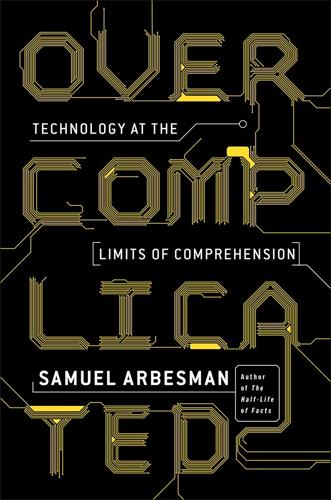
Overcomplicated: Technology at the Limits of Comprehension
by
Samuel Arbesman
Published 18 Jul 2016
Despite all the overcomplication of the systems we vitally depend on, I’m ultimately hopeful that humanity can handle what we have built. This book is why. Chapter 1 WELCOME TO THE ENTANGLEMENT On a winter day early in 1986, less than a month after the Challenger disaster, the famous physicist Richard Feynman spoke during a hearing of the commission investigating what went wrong. Tasked with determining what had caused the space shuttle Challenger to break apart soon after takeoff, and who was to blame, Feynman pulled no punches. He demonstrated how plunging an O-ring—a small piece of rubber used to seal the joints between segments of the shuttle’s solid rocket boosters—into a glass of ice water would cause it to lose its resilience.
…
because of its creation by some perfect, infinite mind: “The worship of the algorithm” is discussed further in Ian Bogost, “The Cathedral of Computation,” The Atlantic, January 15, 2015, http://www.theatlantic.com/technology/archive/2015/01/the-cathedral-of-computation/384300/. CHAPTER 1: WELCOME TO THE ENTANGLEMENT the Challenger disaster: James Gleick, “Richard Feynman Dead at 69; Leading Theoretical Physicist,” The New York Times, February 17, 1988, http://www.nytimes.com/books/97/09/21/reviews/feynman-obit.html. car began accelerating uncontrollably: For further information on “unintended acceleration” in Toyota vehicles, see Ken Bensinger and Jerry Hirsch, “Jury Hits Toyota with $3-million Verdict in Sudden Acceleration Death Case,” Los Angeles Times, October 24, 2013, http://articles.latimes.com/2013/oct/24/autos/la-fi-hy-toyota-sudden-acceleration-verdict-20131024; Ralph Vartabedian and Ken Bensinger, “Runaway Toyota Cases Ignored,” Los Angeles Times, November 8, 2009, http://www.latimes.com/local/la-fi-toyota-recall8-2009nov08-story.html#page=1; Margaret Cronin Fisk, “Toyota Settles Oklahoma Acceleration Case After Verdict,” Bloomberg Business, October 25, 2013, http://www.bloomberg.com/news/articles/2013-10-25/toyota-settles-oklahoma-acceleration-case-after-jury-verdict; Associated Press, “Jury Finds Toyota Liable in Fatal Wreck in Oklahoma,” New York Times, October 25, 2013, http://www.nytimes.com/2013/10/25/business/jury-finds-toyota-liable-in-fatal-wreck-in-oklahoma.html.
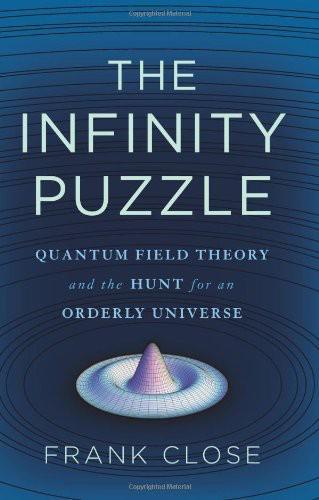
The Infinity Puzzle
by
Frank Close
Published 29 Nov 2011
The baton was being passed to a new generation of theorists. The gurus would be the two youngest members of the audience at Shelter Island: Still under thirty, and already veterans of the scientific war just ended, they were Julian Schwinger and Richard Feynman. Only later would it become known that in Japan, completely independently, Sin-Itiro Tomonaga had already solved the puzzle. schwinger and feynman Julian Schwinger and Richard Feynman were exact contemporaries. Born in 1918, in New York City, both were brilliant theorists, but there the comparisons end. Schwinger, from Upper Manhattan, was a small, heavy man, a natty dresser who spoke eloquently without notes, filling the board with equations written deftly with both hands.
…
In Cambridge, England, in the 1930s, astronomer Sir Arthur Eddington, seduced by this numerology, inspired a Pythagorean cult.23 There have been spoofs connecting 137 to the biblical book of Revelation;24 one of the fathers of Quantum Electrodynamics—Julian Schwinger—had 137 as the vanity license plate on his sports car;25 and eighty years on, many of us continue to receive unsolicited papers from people who believe that they have found the true path to enlightenment with an explanation of this number. Physicist Wolfgang Pauli collaborated with Carl Jung, the psychologist, in a fruitless attempt to find deep significance in its value.26 The Point of Infinity 27 Richard Feynman himself described it as “one of the greatest damn mysteries of physics: a magic number that comes to us with no understanding by man,” adding that if the “hand of God” wrote that number, “we don’t know how He pushed his pencil.”27 This glimpse of the “hand of God” has tantalized physicists, and mystics, for eighty years.
…
The experiments claiming S or T turned out to be flawed, and new experiments favored a combination of V and A. Marshak discussed the matter with several colleagues, including Murray Gell-Mann, a young theorist who would almost single-handedly redefine the frontiers of particle physics. However, that would come later, as we shall see. Meanwhile, unaware of these developments, Richard Feynman had been traveling in Brazil that summer and also had realized that V – A offered a mathematically tantalizing, though apparently empirically useless, possibility. On his return he asked some of his Cal Tech experimental colleagues to brief him on developments in the weak interaction, and they told him that Gell-Mann thought that the evidence for the S interpretation looked doubtful and that the data pointed more toward the correct classification being V.

Physics of the Future: How Science Will Shape Human Destiny and Our Daily Lives by the Year 2100
by
Michio Kaku
Published 15 Mar 2011
Inside the refrigerator, entropy decreases as the temperature drops. But to lower the entropy, you have to have a motor, which increases the heat generated behind the refrigerator, increasing the entropy outside the machine. That is why refrigerators are always hot in the back. As Nobel laureate Richard Feynman once said, “There is nothing in biology yet found that indicates the inevitability of death. This suggests to me that it is not at all inevitable and that it is only a matter of time before biologists discover what it is that is causing us the trouble and that this terrible universal disease or temporariness of the human’s body will be cured.”
…
All the arguments mentioned in this chapter, as we have seen, involved the manipulation of genes, proteins, and molecules. Then the next question naturally arises: How far can we manipulate individual atoms? The principles of physics, as far as I can see, do not speak against the possibility of maneuvering things atom by atom. —RICHARD FEYNMAN, NOBEL LAUREATE Nanotechnology has given us the tools to play with the ultimate toy box of nature—atoms and molecules. Everything is made from these, and the possibilities to create new things appear limitless. —HORST STORMER, NOBEL LAUREATE The role of the infinitely small is infinitely large.
…
The solution to the problem may come from nanotechnology. Nanotechnology might also, perhaps by the end of this century, create a machine that only the gods can wield, a machine that can create anything out of almost nothing. THE QUANTUM WORLD The first to call attention to this new realm of physics was Nobel laureate Richard Feynman, who asked a deceptively simple question: How small can you make a machine? This was not an academic question. Computers were gradually becoming smaller, changing the face of industry, so it was becoming apparent that the answer to this question could have an enormous impact on society and the economy.
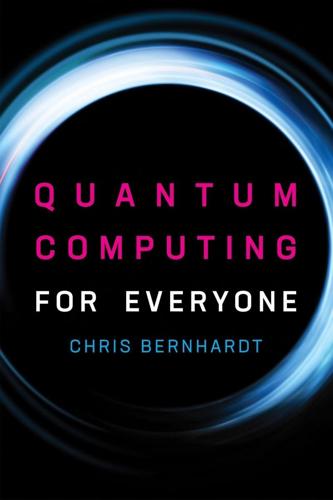
Quantum Computing for Everyone
by
Chris Bernhardt
Published 19 Mar 2019
The chapter concludes with Fredkin’s billiard-ball computer. This is not really needed for the rest of our story, but its sheer ingenuity demands that it be included. This computer consists of balls colliding with one another and off various walls. It conjures up images of particles interacting. This is one of the ideas that inspired Richard Feynman to become interested in the idea of quantum computing. Feynman wrote some of the earliest papers on the subject. Chapter 7. This chapter begins the study of quantum computing using quantum circuits. Quantum gates are defined. We see how a quantum gate acts on a qubit and realize that we have been considering these ideas all along.
…
We will begin by studying boolean functions in terms of logic; then we will show how to translate everything into circuits and gates. The material, up to this point, is now considered standard and is contained in every introductory computer science text. But after this we look at some ideas that are usually not part of the standard introduction. In the 1970s, the Nobel Prize–winning physicist Richard Feynman became interested in computing and, for a few years in the early 1980s, he gave a course on computation at the California Institute of Technology. These lectures were eventually written up as Feynman Lectures on Computation. Feynman’s interest in computation was partly due to his interaction with Edward Fredkin and Fredkin’s idiosyncratic views of physics and computation.

This Will Make You Smarter: 150 New Scientific Concepts to Improve Your Thinking
by
John Brockman
Published 14 Feb 2012
Then there’s what we do with the information we have. The core of a scientific lifestyle is to change your mind when faced with information that disagrees with your views, avoiding intellectual inertia, yet many of us praise leaders who stubbornly stick to their views as “strong.” The great physicist Richard Feynman hailed “distrust of experts” as a cornerstone of science, yet herd mentality and blind faith in authority figures is widespread. Logic forms the basis of scientific reasoning, yet wishful thinking, irrational fears, and other cognitive biases often dominate decisions. What can we do to promote a scientific lifestyle?
…
A better understanding of the meaning of “probability”—and especially realizing that we don’t need (and never possess) “scientifically proved” facts but only a sufficiently high degree of probability in order to make decisions—would improve everybody’s conceptual toolkit. Uncertainty Lawrence Krauss Physicist, Foundation Professor, and director, Origins Project, Arizona State University; author, Quantum Man: Richard Feynman’s Life in Science The notion of uncertainty is perhaps the least well understood concept in science. In the public parlance, uncertainty is a bad thing, implying a lack of rigor and predictability. The fact that global warming estimates are uncertain, for example, has been used by many to argue against any action at the present time.
…
The person who has access to his unconscious processes and mines them without getting mired in them can try new approaches, can begin to see things in new ways, and, perhaps, can achieve mastery of his pursuits. In a word: Relax. It was ARISE that allowed Friedrich August Kekulé to use a daydream about a snake eating its tail as inspiration for his formulation of the structure of the benzene ring. It’s what allowed Richard Feynman to simply drop an O-ring into a glass of ice water, show that when cold the ring loses pliability, and thereby explain the cause of the space shuttle Challenger disaster. Sometimes it takes a genius to see that a fifth-grade science experiment is all that is needed to solve a problem. In another word: Play.
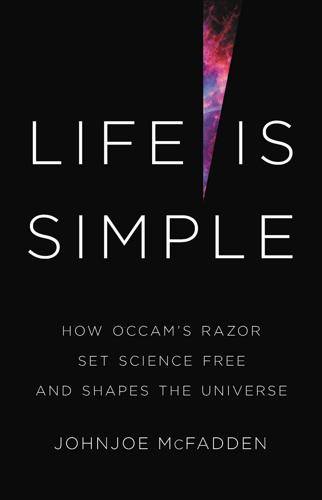
Life Is Simple: How Occam's Razor Set Science Free and Shapes the Universe
by
Johnjoe McFadden
Published 27 Sep 2021
Boyle was here recommending that theories should make predictions (‘forshow The Events’) that could be checked in ‘welmade Tryals’, that is, in experiments. These criteria are the touchstone by which most scientific theories are usually judged to stand or fall today. As the twentieth-century physicist Richard Feynman insisted, ‘it doesn’t matter how beautiful, or even how simple, your theory is, if it doesn’t make correct predictions, it’s wrong.’ Although they are essential to it, these principles are not confined to science nor do they define it. Defendants in the dock are found innocent or guilty based on evidence.
…
For example, considering the motion of classical objects such as arrows or cannonballs, minimising action delivers precisely the trajectories predicted by Newton’s three laws of motion. When applied to quantities such as energy, momentum or angular momentum, then it uncovers the classical conservation laws as well as Noether’s theorem and the gauge theories of particle physics. For quantum particles, such as photons, the principle of least action delivers Richard Feynman’s path integral method of calculating particle motion.i When light rays bend between a submerged stick and your eye, they do so along the path of least action. The same law ensures that stars, planets or even black holes follow their paths of least action through gravitational fields, the same as those predicted by Einstein’s theory of general relativity.
…
Smolin points out that the nineteenth-century American philosopher Charles Sanders Peirce (1839–1914), who was profoundly influenced by Darwinism, proposed that the laws of physics might, like living organisms, evolve. The English mathematician and philosopher William Kingdon Clifford (1845–79) made a similar claim. Even medieval theologians, such as William of Occam, argued that God might have created worlds different from our own. The physicists John Archibald Wheeler, Richard Feynman and Seth Lloyd have all proposed that the laws of physics may be subject to change10 both in space and time. Yet the case for changing laws within our own universe is weak because, as far as we can tell, precisely the same laws operate, both at its earliest moments and the furthest edges of our universe.
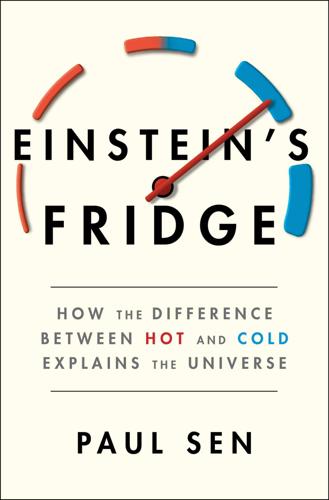
Einstein's Fridge: How the Difference Between Hot and Cold Explains the Universe
by
Paul Sen
Published 16 Mar 2021
Boltzmann’s explanation for the original low-entropy state of our universe therefore leads to the solipsistic conclusion that all that exists is one brain, which holds the entire cosmos as a figment of its imagination. Scientists now refer to this hypothetical entity as a Boltzmann brain. Few favor such an explanation, although no one has yet come up with a definitive explanation for why the universe did begin in such an unlikely low-entropy state. As the great American physicist Richard Feynman, speaking in the 1950s during his now-famous lectures on physics, put it: “For some reason, the universe at one time had a very low entropy for its energy content, and since then the entropy has increased. So that is the way toward the future. That is the origin of all irreversibility, that is what makes the processes of growth and decay.”
…
When Einstein read Noether’s work, he wrote to Hilbert, “I’m impressed that such things can be understood in such a general way. The old guard at Göttingen should take some lessons from Miss Noether. She seems to know her stuff.” Since 1915, Noether’s discovery has become a guiding principle for physicists. When the American physicist Richard Feynman gave his now-famous public lectures on science in 1963, he declared the link between symmetry and conserved quantities to be “a fact that most physicists still find somewhat staggering, a most profound and beautiful thing.” Unfortunately, he didn’t credit Noether for her discovery, wasting an opportunity to raises awareness of her work with the wider public.
…
For many common purposes, the conveniences of this method more than compensate for any inconsistencies. generates in units called PUFFs: For the purposes of this illustration, the value of a PUFF is unimportant. It could be, say, the work required to raise a weight of one kilogram by one meter. This engine can operate as a thermometer: For a more technical explanation see Richard Feynman’s lecture “The Laws of Thermodynamics,” https://www.feynmanlectures.caltech.edu/I_44.html. Clausius remained hard at work: Clausius was the first chair in physics at the Eidgenössische Technische Hochschule, Zurich, which was founded in 1855. Albert Einstein was a student there from 1896 to 1900.

Boom: Bubbles and the End of Stagnation
by
Byrne Hobart
and
Tobias Huber
Published 29 Oct 2024
The field’s obsession with citation-based metrics to measure scientific productivity has spawned a plethora of peer-reviewed journals, some of which are of low quality. The scientific method itself has become a metaphysical abstraction that figures as an almost mystical source of epistemic authority—a process that is believed to automatically generate truth, understanding, and control. The eminent physicist Richard Feynman compared the blind evocation of the scientific method to “cargo cult science”—a ritual masquerading as science. 124 Many papers submitted to journals ritualistically evoke elements of the scientific method, such as the arbitrary p<0.05 significance test that is dogmatically summoned in most scientific papers.
…
Camerer et al., “Evaluating the Replicability of Social Science Experiments in Nature and Science Between 2010 and 2015,” Nature Human Behaviour 2, no. 9 (2018): 637–644. 123 Florian Prinz, Thomas Schlange, and Khusru Asadullah, “Believe It or Not: How Much Can We Rely on Published Data on Potential Drug Targets?” Nature Reviews Drug Discovery 10, no. 9 (2011): 712–712; C. Glenn Begley and Lee M. Ellis, “Raise Standards for Preclinical Cancer Research,” Nature 483, no. 7391 (2012): 531–533. 124 Richard Feynman, “Cargo Cult Science,” in “Surely You’re Joking, Mr. Feynman!”: Adventures of a Curious Character (New York City: WW Norton & Company, 2018). 125 The “follow the science” meme, which emerged during the Covid-19 pandemic, had the paradoxical effect of decreasing public trust in science. According to a 2023 Pew Research poll, since the start of the pandemic, the share of Americans who believe that science has a mostly positive effect on society is down 16 points.
…
When Oppenheimer relocated from Berkeley to Los Alamos, Serber followed. Oppenheimer represented one end of the Manhattan Project’s collection of geniuses: a cultured Europhile who came from a moneyed Manhattan family, he saw his role as both doing physics and organizing physicists. At the opposite end of the spectrum was Richard Feynman, born 25 miles and a world away in blue-collar Far Rockaway. If Oppenheimer was a force for calm and cooperation, Feynman was an endless source of novel ideas, brilliant contraptions, and practical jokes. Feynman contributed to both the rebellious spirit of the program (learning safecracking to demonstrate his attitude toward the military’s security theater) and its outcome (modeling the payloads of different bomb configurations).
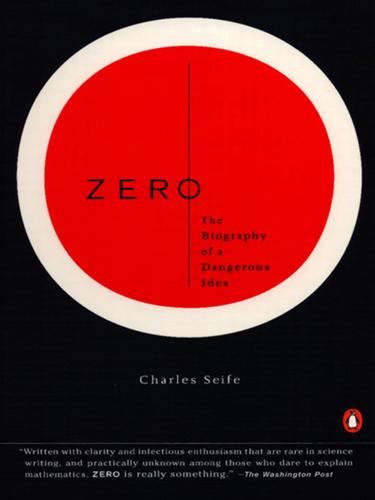
Zero: The Biography of a Dangerous Idea
by
Charles Seife
Published 31 Aug 2000
Zero Banished: String Theory The problem is, when we try to calculate all the way down to zero distance, the equation blows up in our face and gives us meaningless answers—things like infinity. This caused a lot of trouble when the theory of quantum electrodynamics first came out. People were getting infinity for every problem they tried to calculate! —RICHARD FEYNMAN General relativity and quantum mechanics were bound to be incompatible. The universe of general relativity is a smooth rubber sheet. It is continuous and flowing, never sharp, never pointy. Quantum mechanics, on the other hand, describes a jerky and discontinuous universe. What the two theories have in common—and what they clash over—is zero.
…
They don’t go all the way to zero distance from the electron when they calculate the electron’s true mass and charge; they stop short of zero at an arbitrary distance. Once a scientist chooses a suitably close distance, all the calculations using the “true” mass and charge agree with one another. This is a process called renormalization. “It is what I would call a dippy process,” wrote physicist Richard Feynman, even though Feynman won his Nobel Prize for perfecting the art of renormalization. Just as zero punches a hole in the smooth sheet of general relativity, zero smooths and spreads out the sharp point charge of the electron, covering it in a fog. However, since quantum mechanics deals with zero-dimensional particle-points such as the electron, technically all particle-particle interactions in quantum theory deal with infinities: they are singularities.
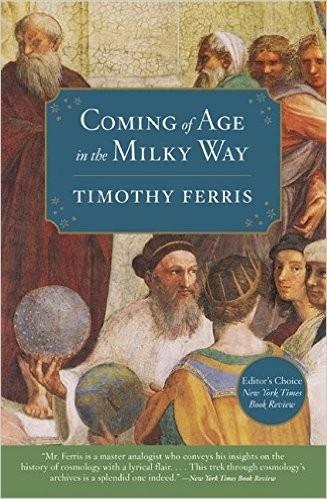
Coming of Age in the Milky Way
by
Timothy Ferris
Published 30 Jun 1988
The Pythagoreans discovered irrational numbers, and are said to have been so unsettled by them that they prescribed the death penalty to any of their sect who revealed their existence to the untutored multitudes. Hippasus was banished for defying the ban. He drowned at sea, a fate that the Pythagoreans ascribed to divine retribution. *Richard Feynman, Gell-Mann’s chief competitor for the title of World’s Smartest Man but a stranger to pretension, once encountered Gell-Mann in the hall outside their offices at Caltech and asked him where he had been on a recent trip; “Moon-TRW-ALGH!” Gell-Mann responded, in a French accent so thick that he sounded as if he were strangling.
…
As quantum physics sees it, every “real” particle is surrounded by a corona of virtual particles and antiparticles that bubble up out of the vacuum, interact with one another, and then vanish, having lived on borrowed, Heisenberg time. (“Created and annihilated, created and annihilated—what a waste of time,” mused Richard Feynman.)3 A free proton, say, is not alone in its travels, but is surrounded by a corona of virtual protons, the existence of which influences its behavior in ways that are not only observable but are, indeed, fundamental to the interactions of the proton as we know it. One example of the reality of virtual particles resides in the fact that the stars shine: To revisit the Coulomb barrier one last time, it is the structure of the virtual particle clouds surrounding protons that makes it possible for protons at the centers of stars to tunnel through one another’s electrical fields often enough for nuclear fusion to be maintained.
…
In his postdoctoral days Hawking and his colleague Roger Penrose demonstrated that general relativity implies that the universe began in a “singularity,” a state of infinitely curved space in which the laws of relativity break down; this proved, as Hawking put it, that “relativity predicts its own downfall.”10 But quantum theory might function where relativity did not, and in later years Hawking began to explore the prospect of understanding the origin of the universe in terms of quantum probabilities. His tools included “imaginary time”—a kind of time measured in terms of imaginary numbers—and Richard Feynman’s “sum over histories” method of doing quantum mechanics. Imaginary numbers make no sense when handled by customary mathematical rules. An example is the square root of —1, which will produce an “error” message if demanded of an electronic calculator. They work quite well, however, according to their own rules; imaginary numbers have been employed to excellent effect, for instance, in hydrodynamics.

Turing's Cathedral
by
George Dyson
Published 6 Mar 2012
“He was in the right place at the right time with the right connections with the right idea,” remembers Willis Ware, fourth to be hired to join the engineering team, “setting aside the hassle that will probably never be resolved as to whose ideas they really were.”1 As World War II drew to a close, the scientists who had built the atomic bomb at Los Alamos wondered, “What’s next?” Some, including Richard Feynman, vowed never to have anything to do with nuclear weapons or military secrecy again. Others, including Edward Teller and John von Neumann, were eager to develop more advanced nuclear weapons, especially the “Super,” or hydrogen bomb. Just before dawn on the morning of July 16, 1945, the New Mexico desert was illuminated by an explosion “brighter than a thousand suns.”
…
Abraham Flexner (1866–1959): American schoolteacher, educational reformer, and founding director of the IAS, 1930–1939. Simon Flexner (1863–1946): American philanthropist, Rockefeller Foundation officer, and older brother of Abraham Flexner. Stanley P. Frankel (1919–1978): American physicist, student of Robert Oppenheimer, and Los Alamos colleague of Richard Feynman; member of the original ENIAC and IAS thermonuclear calculation team; minicomputer design pioneer. Kurt Gödel (1906–1978): Moravian-born Austrian logician; arrived at the IAS in 1933. Herman Heine Goldstine (1913–2004): American mathematician, U.S. Army officer, ENIAC administrator, and associate director of the IAS ECP during 1946–1956.
…
IBM was asked for the name of their best technician who had been drafted into the army, who was immediately given a security clearance and reassigned to Los Alamos, but this took time. In the interim, Stanley Frankel, a Berkeley graduate student of Oppenheimer’s who had been put in charge of the hand computing group, and Richard Feynman, a graduate student (and amateur safecracker) from Princeton who was game for any unauthorized challenge, managed to uncrate the machines and get them to work. Feynman and Frankel were hooked. “Mr. Frankel, who started this program, began to suffer from the computer disease that anybody who works with computers now knows about,” Feynman later explained.

Human Frontiers: The Future of Big Ideas in an Age of Small Thinking
by
Michael Bhaskar
Published 2 Nov 2021
As with his contemporary, Pasteur, it's difficult to imagine any individual or team, perhaps even any institution, having a proportionate impact today: not just one big idea, but reams of them, again and again entirely reorienting disciplines and worldviews. Even giants of mid-to-late twentieth century physics, field-shapers like Richard Feynman or Murray Gell-Mann, couldn't have such universal impact. Will it ever again be possible for one researcher to alter the nature and trajectory of their field so profoundly, as Darwin, Pasteur, and later Freud, Poincaré, Turing or Einstein did? So far it looks like yet another example of the breakthrough problem.
…
Just as goldfish aren't equipped to understand the germ theory of disease, Maxwell's equations or the novels of James Joyce, perhaps we aren't equipped to solve ancient and apparently intractable philosophical conundrums like the mind/body problem or the fundamentals of the universe. After a point, we may neither be able to find new theories, nor even if we get close, really understand how they work. Some questions are ‘cognitively closed’. Richard Feynman said that ‘nobody really understands quantum mechanics.’ 40 What if that is the norm in future? If we scrape against the ceiling of our limitations? Although the notion is controversial, if there are limits to what the brain can know or do, we are surely getting closer to those limits. Similarly, given the complexity of our built systems or the detail of found systems, it's not hard to imagine that, should such limits exist, they are getting closer.
…
Far from inhibiting research, done correctly it would create the necessary societal space and institutional foundation. Get it right and we secure the future – and set the ground for the last recommendation. Go bolder It's notable how many scientists with major discoveries to their name are also musicians, writers, philosophers, activists and communicators. Physicists like Einstein, Richard Feynman and Werner Heisenberg were accomplished musicians; Marie Curie, Fritz Haber and Erwin Schrödinger wrote poetry; biological and medical researchers from Louis Pasteur and Joseph Lister to Alexander Fleming, Howard Florey and Dorothy Hodgkin were artists. Is there a connection? Looking at hundreds of discoveries and significant scientists from the UK, France, Germany and the US over the twentieth century gave J.
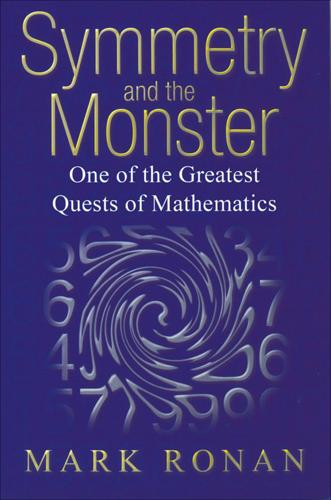
Symmetry and the Monster
by
Ronan, Mark
Published 14 Sep 2006
Mathematicians are very careful about this. An important result, one that will be used elsewhere, has to be proved to everyone’s satisfaction. Theorems are essential, and this is how mathematics makes progress. It is rather different from theoretical physics in this sense. As the famous physicist Richard Feynman said, ‘The whole purpose in physics is to work out a number, with decimal points, etc.! Otherwise you haven’t done anything.’* Well, in mathematics, the whole point is to state and prove a theorem. Some theorems, of course, are more important than others, and most are rather specialized results that map out the mathematical landscape.
…
You can never get only part of an electron. Quantum theory is a mysterious business, and as Niels Bohr himself said, ‘Anyone who is not shocked by quantum theory has not understood it.’ With the passing of time one might expect that the subject would become easier to comprehend, but as the late Richard Feynman said in a comment in 1967, ‘I think I can safely say that nobody understands quantum mechanics.’* The wave nature of an electron means that as it orbits the nucleus of an atom, it is not at all like a planet orbiting the sun. It has to be treated as a wave encircling the nucleus, and that brings Lie groups into the picture.
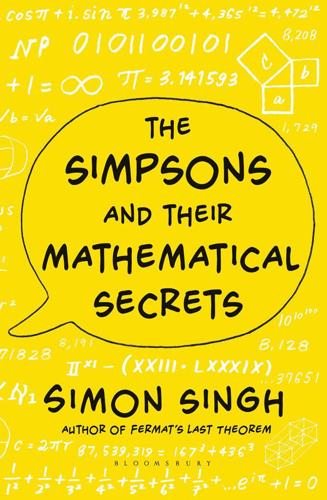
The Simpsons and Their Mathematical Secrets
by
Simon Singh
Published 29 Oct 2013
Keats believes that rational analysis will “unweave a rainbow,” thereby destroying its inherent beauty. By contrast, Lisa Simpson would argue that such analysis turns the sight of a rainbow into an even more exhilarating experience. Perhaps Lisa’s worldview was best articulated by the physicist and Nobel laureate Richard Feynman: I have a friend who’s an artist and he’s sometimes taken a view which I don’t agree with very well. He’ll hold up a flower and say, “Look how beautiful it is,” and I’ll agree, I think. And he says—“you see, I as an artist can see how beautiful this is, but you as a scientist, oh, take this all apart and it becomes a dull thing.”
…
Moreover, I also appear to have a Sabbath number, which is generated as a result of musical collaborations linking me to a member of the rock band Black Sabbath. Indeed, according to the Erdős Bacon Sabbath Project (http://ebs.rosschurchley.com), I have an Erdős-Bacon-Sabbath number of 10, giving me the world’s eighth-lowest Erdős-Bacon-Sabbath number, on a par with Richard Feynman, among others! 9. Remember, Poindexter was the boy genius from Felix the Cat who inspired the name poindextrose, given to the pheromone discovered by Lisa in the episode “Bye, Bye, Nerdie” (2010). 10. Incidentally, when Lisa is in Moe’s Tavern talking to Professor Frink, he uses his laptop to show her an online video of Bill James, voiced by the real Bill James. 11.

Dawn of the New Everything: Encounters With Reality and Virtual Reality
by
Jaron Lanier
Published 21 Nov 2017
Recent immigrants from Africa walking in the land of cars, purchases from electronics stores balanced on their heads, looking as out of place as I was. Cynthia, my obsession, turned out to be the daughter of the head of the physics department at Caltech. So that’s where we would hang out. She was the darling of the marvelous minds who huddled there, like Richard Feynman and Murray Gell-Mann. I was never a student at Caltech, but rather the weird boyfriend of the department head’s charming daughter. It’s a kind of status. Feynman was generous with me, showing me how to form geometrical designs with one’s fingers to think about chirality; things like that. He was also a fun drummer and we’d play.
…
I remember experiences in terms of ideas; how a story I lived through illuminated a deeper question. My experiences become allegories. I recall minutiae about conversations with people from decades ago that turned out to be important to me. The eccentric heiress, the Mexican general: all colorful, but also characters in the allegories that make up my personal cosmos. I remember Richard Feynman teaching me to make a tetrahedron with my fingers, Steve Jobs demonstrating how to amass the mysterious quality we call power by humiliating a hardware engineer while I shriveled at the spectacle, Marvin Minsky showing me how to predict when a technology would become cheap and mature (he used genomics as an example).
…
I was a pretty freaky and psychedelic guy, I suppose. Tim Leary had a nickname for me: “the control group.” I was the only person around the scene who had not taken drugs, so maybe I was the baseline. Maybe drugs made people straighter. Someone needed to be the control group. Many years later, when Richard Feynman knew his cancer was starting to overtake him, he decided it was time to experiment with LSD. The plan was to hang out with some hippie women in a hot tub at the edge of an unfenced cliff high above the waves in Big Sur.4 He asked the control group to be there, keeping a discreet distance to make sure he didn’t fall to the rocks.

From eternity to here: the quest for the ultimate theory of time
by
Sean M. Carroll
Published 15 Jan 2010
Once there, the system basically has nowhere else to go; it’s in the kind of configuration that is most natural for it to be in. Such a system has no arrow of time, as the entropy is not increasing (or decreasing). To a macroscopic observer, a system in equilibrium appears static, not changing at all. Richard Feynman, in The Character of Physical Law, tells a story that illustrates the concept of equilibrium.129 Imagine you are sitting on a beach when you are suddenly hit with a tremendous downpour of rain. You’ve brought along a towel, but that also gets wet as you dash to cover. Once you’ve reached some cover, you start to dry yourself with your towel.
…
Strictly speaking, that certainly is possible, but it’s cognitively unstable in the same sense that we discussed in the last chapter. There is no sensible way to live and think and behave if that is the case, so there is no warrant for believing it. Better to accept the universe around us as it appears (for the most part) to be. This point was put with characteristic clarity by Richard Feynman, in his famous Lectures on Physics: [F]rom the hypothesis that the world is a fluctuation, all of the predictions are that if we look at a part of the world we have never seen before, we will find it mixed up, and not like the piece we just looked at. If our order were due to a fluctuation, we would not expect order anywhere but where we have just noticed it . . .
…
In addition to Bekenstein, Wheeler was the Ph.D. supervisor for an impressive fraction of the scientists who are now leading researchers in gravitational physics, including Kip Thorne, Charles Misner, Robert Wald, and William Unruh—not to mention Hugh Everett, as well as Wheeler’s first student, one Richard Feynman. So Princeton in the early 1970s was a fruitful environment to be thinking about black holes, and Bekenstein was in the thick of it. In his Ph.D. thesis, he made a simple but dramatic suggestion: The relationship between black-hole mechanics and thermodynamics isn’t simply an analogy; it’s an identity.
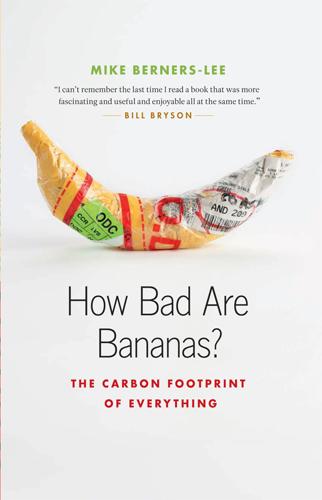
How Bad Are Bananas?: The Carbon Footprint of Everything
by
Mike Berners-Lee
Published 12 May 2010
That is about as efficient as hydrogen generation ever gets, and frankly I would be surprised if energy efficiency was NASA’s number one priority. I would be even more surprised if the manufacturing of the solid fuel was that efficient. Much more significantly, it might have been reasonable to add on a large chunk of footprint of NASA itself. Richard Feynman, the Nobel Prize–winning physicist who helped to investigate the Challenger disaster, describes the shuttle project as NASA’s somewhat unjustifiable raison d’être after the lunar landings.10 My third major omission is that I haven’t included any kind of weighting factor to take account of the high altitude at which the emissions are released.
…
Other figures in my calculations were: 31 MJ per kg (14 MJ per lb.) for the solid fuel, 143 MJ per kg (65 MJ per lb.) for the hydrogen. I used 70 g CO2e per MJ as a general figure for emissions from the burning of fossil fuels and added 10 percent for their supply chains up to the point of combustion. 10. “What do you care what other people think?” (Richard Feynman, 1989) is a fascinating and entertaining account of the technical and management failures behind the disaster. Also recommended for anyone who is trying to get some clear thinking into a bureaucracy. 11. 4.6 tons per return trip if you live in Hong Kong. Flying London to Hong Kong is about the same as Los Angeles to Barcelona, see Flying from Los Angeles to Barcelona return. 1 million tons and beyond 1.
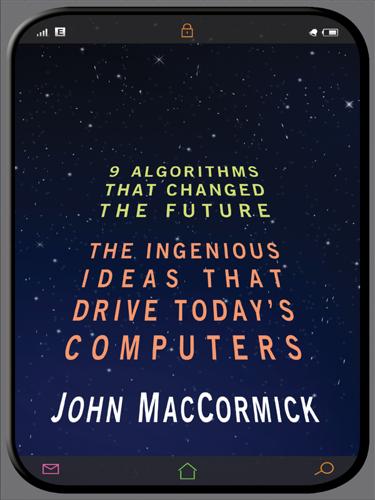
Nine Algorithms That Changed the Future: The Ingenious Ideas That Drive Today's Computers
by
John MacCormick
and
Chris Bishop
Published 27 Dec 2011
Data could still be exchanged securely using cryptography, but it would be far more difficult to verify the source of any data received. This combination of a profound idea with such wide practical impact means that digital signatures are, without doubt, one of the most spectacular achievements of computer science. 10 What Is Computable? Let me remind you of some of the problems of computing machines. —RICHARD FEYNMAN (1965 Nobel Prize in physics) We've now seen quite a number of clever, powerful, and beautiful algorithms—algorithms that turn the bare metal of a computer into a genius at your fingertips. In fact, it would be natural to wonder, based on the rhapsodic rhetoric in the preceding chapters, if there is anything that computers cannot do for us.
…
Digital signatures (chapter 9). Gail Grant's Understanding Digital Signatures provides a great deal of information about digital signatures and is reasonably accessible to those without a computer science background. Computability (chapter 10). The chapter's opening quotation is from a talk given by Richard Feynman at Caltech on December 29,1959. The title of the talk is “There's Plenty of Room at the Bottom,” and it was later published in Caltech's Engineering & Science magazine (February 1960). One unconventional, but very interesting, presentation of the concepts surrounding computability and undecidability is in the form of a (fictional) novel: Turing (A Novel about Computation), by Christos Papadimitriou.
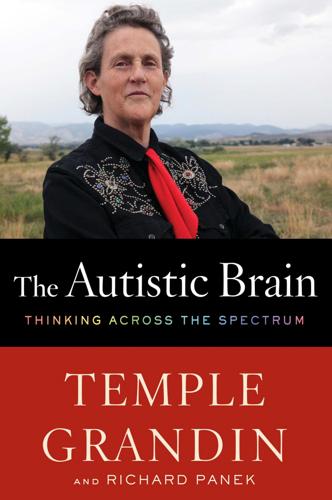
The Autistic Brain: Thinking Across the Spectrum
by
Temple Grandin
and
Richard Panek
Published 15 Feb 2013
And the relationship between art and science can go the other way too; scientists can use art to understand math. The physicist Richard Feynman revolutionized his field in the 1940s when he devised a simple way to diagram quantum effects: A straight, solid line represented particles of matter or antimatter, which traveled through space and time. Wavy or dashed lines represented force-carrying particles. When an electron moving in a straight line emitted a photon in a wavy line, the straight line recoiled to the right. Equations that took months to calculate could suddenly be understood, through diagrams, in a matter of hours. Richard Feynman taught physicists a new way to “see” quantum effects simply by deploying straight lines and wavy lines.
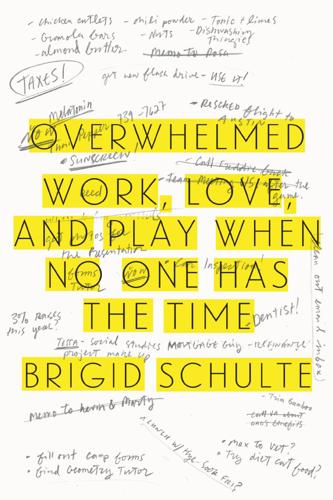
Overwhelmed: Work, Love, and Play When No One Has the Time
by
Brigid Schulte
Published 11 Mar 2014
Once managers at Caltech’s Jet Propulsion Lab discovered that the best engineers had the richest play experiences—building soapbox derby racers, taking apart clocks, working with their hands—they began to include questions about a candidate’s play history in standard interviews.20 The Nobel Prize–winning physicist Richard Feynman was a master of “serious play,” Brown says, who approached his work with a playful attitude. “I’d invent things and play with things for my own entertainment,” Feynman wrote in his autobiography. In the same spirit, he watched students in the cafeteria goof off by spinning plates. “For the fun of it,” he began to make calculations of the wobbles—“piddling around,” he said, which led to developing the “Feynman diagrams” to explain quantum electrodynamics and ultimately resulted in his Nobel Prize.21 In animal studies, life without play is bleak.
…
And what he finds in those who do not make time for play—in either attitude or activity—is often joylessness, rigidity, addiction, workaholism, diminished curiosity, and, at the core, depression. To help people reclaim their playful natures, he takes them back to their earliest memories of play, to remember what they loved doing as children so they can begin to build on it and figure out how to use it as adults—to bring creativity and passion to their work, like Richard Feynman, to foster intimacy, connection, and playfulness in their relationships at home with their partners and children and to make time to just have lighthearted fun for the soul. That’s what Brown saw Barbara Brannen, a woman he met in Colorado, do. Brannen was a successful executive in Denver with two kids and a busy life who, over time, found herself feeling increasingly overwhelmed, unsatisfied, sad, and so stressed-out from working all the time that she lost the use of her left arm.
…
Sergio Pellis,” University of Lethbridge, Research & Innovation Services (biography), www.uleth.ca/research/research_profiles/dr-sergio-pellis. Brown, Play, 33–42. 20. Brown, Play, 9–11. 21. Rebecca Abrams, The Playful Self: Why Women Need Play in Their Lives (London: Fourth Estate, 1997), 190–91. A hilarious video of Feynman playing the bongos with abandon will make you smile: “Richard Feynman Playing Bongos,” YouTube. 22. Stuart Brown, interview with author, March 9, 2012. Brown also referred to the experiment in his talk at the Aspen Ideas Festival in 2010, “The Neuroscience of Play: What Play Does for You and Your Brain, and What Happens to You if You Don’t Play,” www.aspenideas.org/session/neuroscience-play-what-play-does-you-and-your-brain-and-what-happens-you-if-you-dont-play.
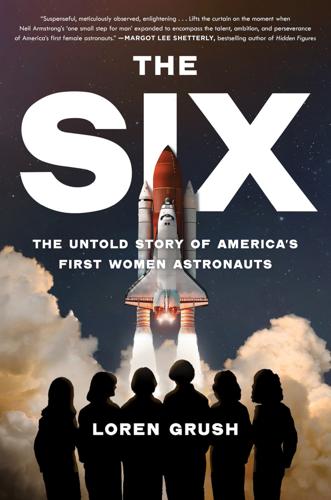
The Six: The Untold Story of America's First Women Astronauts
by
Loren Grush
Published 11 Sep 2023
She and thirteen others would be responsible for deciphering what had caused Challenger to explode a little more than a minute into liftoff. She’d be the only current astronaut on the panel, though she’d be working with some of spaceflight’s biggest names, including Neil Armstrong and Chuck Yeager. Controversial theoretical physicist Richard Feynman, who’d helped develop the atomic bomb, would also serve as a member. It was an enormous ask. But Sally put down the phone and turned to her friends. “I need to do this,” she said. * * * A LITTLE OVER a week later, on February 10, Sally found herself sitting at a conference table with the other members of the commission—all male—in an office building next to the White House.
…
It took Don a few moments to process what he was reading, but he soon grasped the gravity of the numbers. Just like Sally, Don knew he needed to pass this information on to someone on the commission, preferably someone with fewer ties to the government. Don settled on a target accomplice: the eccentric physicist Richard Feynman. He’d understand the science, and he wouldn’t be afraid to speak about it, loudly. The general decided to invite him for dinner to relay the news. After the meal, Don took the physicist out to his garage to see his 1973 Opel GT. He then removed the vehicle’s carburetor, feigning that he was cleaning it.
…
“I took this stuff that I got out of your seal and I put it in ice water, and I discovered that when you put some pressure on it for a while and then undo it, it doesn’t stretch back,” he said. “It stays the same dimension.” He’d just demonstrated to a stunned room what NASA’s managers had been reluctant to admit: the O-rings lose their flexibility when they get cold. “I believe that has some significance to our problem,” Richard concluded. It was a small science experiment that Richard Feynman would become famous for. But it all began with a game of telephone in which Sally Ride was a key participant. * * * SALLY MAY HAVE helped crack the case of the O-rings, but the four remaining women in the Six all did their part in the wake of Challenger, whatever it took to keep the space program afloat.
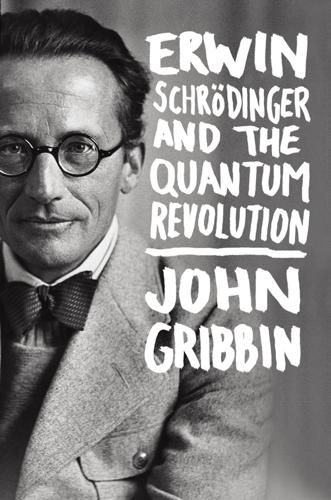
Erwin Schrodinger and the Quantum Revolution
by
John Gribbin
Published 1 Mar 2012
Historically, the work of both men is of equal importance; but I shall concentrate on one key experiment, carried out by Young, because it later played a crucial part in the development of an understanding of quantum physics. It is called, for reasons that will become obvious, the “double slit experiment” or, more colloquially, “the experiment with two holes.” Much later, the great American physicist Richard Feynman (1918–88) said that the experiment with two holes encapsulates the “central mystery” of quantum physics. We will see why later. In Young’s experiment, a beam of light (ideally, a single pure colour) is shone through a narrow slit in a thin sheet of card in a dark room, to produce a narrow beam.
…
I have described Cramer’s “transactional interpretation” of quantum mechanics fully in my book Schrödinger’s Kittens, but it is worth going into a little detail here since it shows just how deep Schrödinger’s insight was. Although Cramer was unaware of this particular insight, one of the ideas that had set him thinking about waves travelling backwards in time was nearly as old. In 1940, Richard Feynman was a graduate student at Princeton University, working under the supervision of John Wheeler (1911–2008). He became interested in a problem known as radiation resistance, which in simple language means that it is hard to push charged particles like electrons around—they resist, more strongly than uncharged particles resist, and at the same time they radiate electromagnetic waves.

How to Speak Money: What the Money People Say--And What It Really Means
by
John Lanchester
Published 5 Oct 2014
Many fields of thought have ideas that are far more difficult to understand, but that don’t have the same sense of a linguistic perimeter around them. In physics, for instance, there are an enormous number of ideas of a complexity so great that they can’t really be grasped at all in ordinary language, but are available only to someone with an advanced level of math. Even then they are very hard to understand. The great physicist Richard Feynman, who knew his subject as well as anyone who’s ever lived, and who explained it better than anyone who ever lived, said in The Character of Physical Law, “I think I can safely say that no one understands quantum mechanics.” But you can still get a sense of what these fields of thought are about.
…
There’s a permanent invitation to take them apart and put them together again in a form that works better. People in the business know this perfectly well. They’re not stupid. But there is an inbuilt tendency for that definition creep, for Lego models to start turning into equations that have, in the great phrase of Richard Feynman, “the character of physical law.” There’s a visual metaphor for the process in the form of an amazing device called the Phillips machine, the creation of a remarkable New Zealander called Bill Phillips. After a roundabout route to the world of economics via a spell in a Japanese prisoner-of-war camp, Phillips set up a workshop in a south London garage.
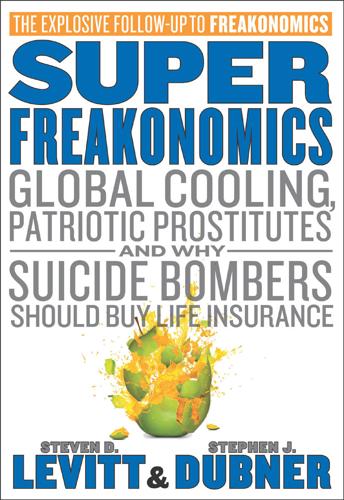
SuperFreakonomics
by
Steven D. Levitt
and
Stephen J. Dubner
Published 19 Oct 2009
Laboratory experiments are of course a pillar of the physical sciences and have been since Galileo Galilei rolled a bronze ball down a length of wooden molding to test his theory of acceleration. Galileo believed—correctly, as it turned out—that a small creation like his could lead to a better understanding of the greatest creations known to humankind: the earth’s forces, the order of the skies, the workings of human life itself. More than three centuries later, the physicist Richard Feynman reasserted the primacy of this belief. “The test of all knowledge is experiment,” he said. “Experiment is the sole judge of scientific ‘truth.’” The electricity you use, the cholesterol drug you swallow, the page or screen or speaker from which you are consuming these very words—they are all the product of a great deal of experimentation.
…
Minty, “Media Coverage and Charitable Giving After the 2004 Tsunami,” Southern Economic Journal 75, no. 1 (2008). THE VALUE OF LAB EXPERIMENTS: Galileo’s acceleration experiment is related in Galileo Galilei, Dialogue Concerning Two New Sciences, trans. Henry Crew and Alfonso de Salvio, 1914. Richard Feynman’s point about the primacy of experimentation comes from his Lectures on Physics, ed. Matthew Linzee Sands (Addison-Wesley, 1963). ULTIMATUM AND DICTATOR: The first paper on Ultimatum as it is commonly known is Werner Guth, Rolf Schmittberger, and Bernd Schwarze, “An Experimental Analysis of Ultimatum Bargaining,” Journal of Economic Behavior and Organization 3, no. 4 (1982).
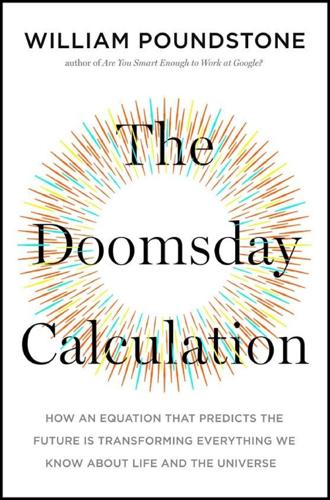
The Doomsday Calculation: How an Equation That Predicts the Future Is Transforming Everything We Know About Life and the Universe
by
William Poundstone
Published 3 Jun 2019
Perhaps the greatest irony of quantum mechanics is that if the MWI is correct, then the situation is quite analogous if once you feel ready to die, you repeatedly attempt quantum suicide: you will experimentally convince yourself that the MWI is correct, but you can never convince anyone else! Mallah says that the “total amount of consciousness” diminishes along with amplitude. Perhaps the message is that we shouldn’t care so much about super-improbable worlds, nor stand too much on the distinction between zero probability and a vanishingly small probability. 1/137 Richard Feynman once suggested that physicists ought to post a sign with the number “1/137” in their offices. It would be a reminder of how much they don’t know. A physicist will recognize 1/137 as the approximate value of the fine-structure constant—in Feynman’s words, “one of the greatest damn mysteries of physics.”
…
The fine-structure constant is a measure of how strong electromagnetic forces are. It is important because electromagnetic forces govern atoms, chemistry, and life. If the constant were much different from its observed value, there would be no atoms. That would mean no stars, no planets, no life, and no Richard Feynmans to contemplate it all. The fine-structure constant remains a mystery, though, because our physical theories have so far been unable to account for its value. This seems to cry out for an explanation. Several twentieth-century thinkers sacrificed their reputations on that altar, most notoriously Arthur Eddington.
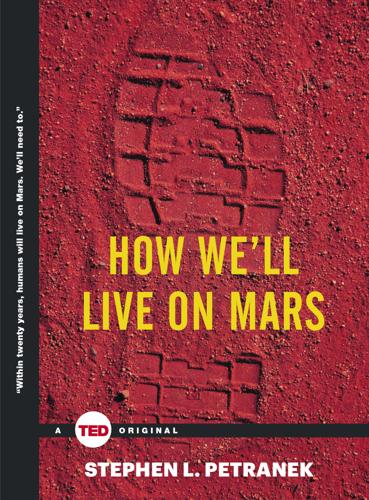
How We'll Live on Mars (TED Books)
by
Stephen Petranek
Published 6 Jul 2015
Solar and cosmic radiation will be a concern for plants, but as we warm the planet and the atmosphere becomes denser—albeit with carbon dioxide—radiation damage will be greatly reduced. As noted in the previous chapter, although the massive amount of CO2 on Mars is a huge disadvantage to humans, it can be a boon to plants. Plants consume CO2 and expel oxygen. The late physicist Richard Feynman was fond of saying that trees aren’t really land plants—they grow from the air. They rely mostly on sunlight and carbon dioxide to grow, although most also need water from the ground. Plants should thrive in the Martian CO2 environment, and our genetic engineering abilities should allow us to re-create plants that grow far better and faster on Mars than anywhere else.
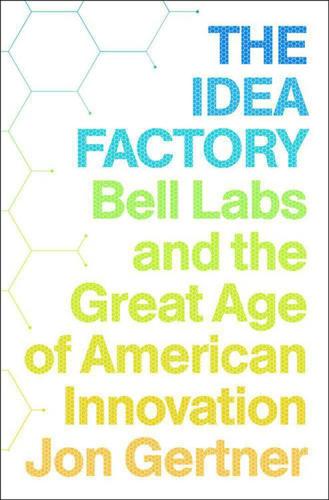
The Idea Factory: Bell Labs and the Great Age of American Innovation
by
Jon Gertner
Published 15 Mar 2012
More often than not, his writings addressed the behavior of matter and energy at the tiny, molecular—that is, quantum—level. Quantum mechanics, as it was beginning to be called, was a science of deep surprises, where theory had largely outpaced the proof of experimentation. Some years later the physicist Richard Feynman would elegantly explain that “it was discovered that things on a small scale behave nothing like things on a large scale.” In the quantum world, for instance, you could no longer say that a particle has a certain location or speed. Nor was it possible, Feynman would point out, “to predict exactly what will happen in any circumstance.”
…
The precise reasons for the shift remained ambiguous, though some Labs members later reflected that by 1940 the specter of war had trumped the Bell System’s ugly traditions of bigotry. A slightly different explanation was that a meritocratic organization such as the Labs could perceive a competitive disadvantage of passing over the best scientists on religious grounds, an error they might have already made with the young Richard Feynman, a former colleague of Shockley’s at MIT who would eventually be drafted into the Manhattan Project.9 Whatever the explanation, some of the older and most hidebound scientists at the Labs found discomfort in this aspect of the Labs’ evolution, as well as in Kelly’s war mobilization effort. Lloyd Espenschied, for example, an inventor of the thick coaxial cables that carried phone conversations between major cities and a senior advisor to Oliver Buckley, was an avowed isolationist.
…
Nuclear Regulatory Commission, http://www.nrc.gov/materials/fuel-cycle-fac/ur-enrichment.html. 5 Interview of James Fisk by Lillian Hoddeson, June 24, 1976, Niels Bohr Library & Archives, American Institute of Physics, College Park, MD; www.aip.org/history/ohilist. 6 Charles Townes, How the Laser Happened (New York: Oxford University Press, 1999), p. 39. 7 Though Mervin Kelly used the words “scramble” and “unscramble” in his description of multiplexing and quartz filters, Bob Lucky points out that those terms erroneously suggest encrypted transmissions. It might be more precise to think of the telephone conversations of the era as “stacked” atop one another during the transmission process. 8 “Artificial Quartz Is Produced Here,” New York Times, September 19, 1947. 9 James Gleick, Genius: The Life and Science of Richard Feynman (New York: Vintage, 1993), p. 85. 10 Lloyd Espenschied, “Memo: Visit by a Young Investigator of the War Department,” January 25, 1944, 4:50 p.m. AT&T archives. 11 Buckley and Jewett traded memos on the Espenschied incident between late January 1944 and November 1944. 12 There is no evidence as to Mervin Kelly’s personal feelings, yet Kelly was the first Bell Labs executive to hire Jews—for the Labs’ efforts in radar and wartime development.
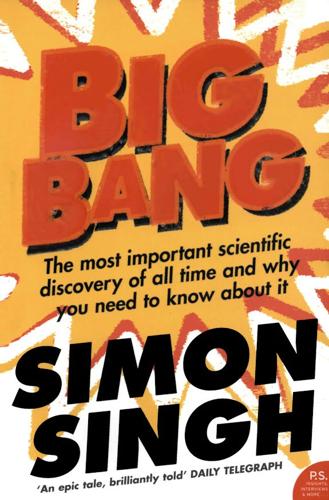
Big Bang
by
Simon Singh
Published 1 Jan 2004
Compare the consequences to experience. If it disagrees with experience, the guess is wrong. In that simple statement is the key to science. It doesn’t matter how beautiful your guess is or how smart you are or what your name is. If it disagrees with experience, it’s wrong. That’s all there is to it. RICHARD FEYNMAN There were now two dominant theories fighting for control of the universe. In one corner was the Big Bang model, which had evolved out of Einstein’s theory of general relativity, thanks to Lemaître and Friedmann. It proposed a unique moment of creation followed by a rapid expansion, and sure enough Hubble had observed that the universe was expanding and the galaxies were receding.
…
JOHN DEWEY (1859-1952), American philosopher Four stages of acceptance: i) this is worthless nonsense, ii) this is an interesting, but perverse, point of view, iii) this is true, but quite unimportant, iv) I always said so. J.B.S. HALDANE (1892-1964), English geneticist Philosophy of science is about as useful to scientists as ornithology is to birds. RICHARD FEYNMAN (1918-88), American physicist A man ceases to be a beginner in any given science and becomes a master in that science when he has learned that he is going to be a beginner all his life. ROBIN G. COLLINGWOOD (1889-1943), English philosopher GLOSSARY Terms in italics have their own entry in the glossary.
…
Even if I stopped writing for a decade, I could begin to explore some of these other interests. And many of these interests still relate to communicating science and mathematics, so to a large extent my answer to the previous question still holds true. TOP TEN Simon Singh’s Top Ten Favourite Books: Surely You’re Joking, Mr Feynman! Richard Feynman The Making of the Atomic Bomb Richard Rhodes Chaos James Gleick Flatland Edwin A. Abbott A Mathematician’s Apology G.H. Hardy Our Final Century Martin Rees The Surgeon of Crowthorne Simon Winchester Dr Tatiana’s Sex Advice to All Creation Olivia Judson Interpreter of Maladies Jhumpa Lahiri The Phantom Tollbooth Norton Juster LIFE at a Glance Simon Singh was born in Somerset in 1964.

Tools of Titans: The Tactics, Routines, and Habits of Billionaires, Icons, and World-Class Performers
by
Timothy Ferriss
Published 6 Dec 2016
After limited success with open monitoring or mindfulness meditation, he was introduced to Transcendental Meditation by a friend, Dan Loeb, billionaire and founder of Third Point LLC, a $17 billion asset management firm. ✸ Most-gifted or recommended books Surely You’re Joking, Mr. Feynman! by Richard Feynman Mistakes Were Made (But Not by Me) by Carol Tavris and Elliot Aronson. The latter is a book about cognitive dissonance that looks at common weaknesses and biases in human thinking. Peter wants to ensure he goes through life without being too sure of himself, and this book helps him to recalibrate
…
and it’s interesting, because a lot of them will take a step back and they’ll fumble, because they’re so indoctrinated into the algorithm of ‘All I really need to do is identify high cholesterol and treat it’ versus understanding what purpose it serves in the human body.” TF: There is a big difference between understanding something (what you want in a physician) and simply knowing its name or labeling it. This is also one of the lessons that Nobel Prize winner Richard Feynman’s father taught him. The story is contained in Surely You’re Joking, Mr. Feynman!, the most-gifted book of several people in this book, as well as in a wonderful short documentary called The Pleasure of Finding Things Out. “The rule is: The basics are the basics, and you can’t beat the basics.”
…
In zoology, you can predict the mood and behavior patterns of any chimp by which five chimps they hang out with the most. Choose your five chimps carefully.” Lessons From Physics and the Russian Mob “I learned [the importance of honesty] from a couple of different places. One is, when I grew up, I wanted to be a physicist and I idolized Richard Feynman. I read everything by him, technical and non-technical, that I could get my hands on. He said: ‘You must never, ever fool yourself, and you are the easiest person to fool.’ “So the physics grounding is very important because in physics, you have to speak truth. You don’t compromise, you don’t negotiate with people, you don’t try and make them feel better.
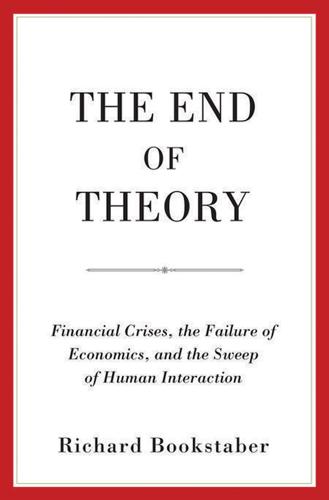
The End of Theory: Financial Crises, the Failure of Economics, and the Sweep of Human Interaction
by
Richard Bookstaber
Published 1 May 2017
If I had escorted you into one of the cavernous rooms filled with “computers” during World War II’s Manhattan Project, you would have found scores of women toiling away with rudimentary calculators, being handed sheets of instructions and handing back other sheets with the results. (The person developing those instructions and devising the method for compiling the results was none other than the famed physicist Richard Feynman.) The women were like clerks, and were called computers because that is what they did. They did not need to know the nature of the underlying task; they simply had to execute a set of instructions without error. Hilbert argued for a large-scale mathematical initiative to devise mechanical procedures that they could follow by rote, that in the end could lead to the proof of any mathematical proposition, giving a decided yes or no to the question.
…
Eric Beinhocker, the executive director of the Institute for New Economic Thinking, opines that the error of economics is not “in trying to be too much like the other sciences” but rather that “it has made too little effort.” Economics has “developed an axiomatic internally consistent self-contained theory” that is “more like theology than science.” Crises are messy and complex. The physicist Richard Feynman understood this; looking back at the 1987 crash, he reflected on how difficult physics would be if we had to worry about what the electrons were thinking. To understand and manage crises, economists must give up the myth that the economy is a simple mechanical equilibrium system. So what do we make of today’s standard neoclassical approach?
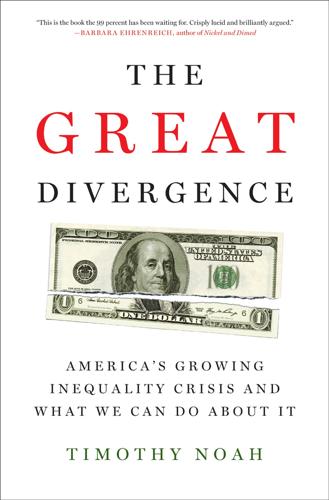
The Great Divergence: America's Growing Inequality Crisis and What We Can Do About It
by
Timothy Noah
Published 23 Apr 2012
The earliest radios required home installation, and purchasers needed to be shown how to use them. Radio sales clerks doubled as yesterday’s equivalent to the Geek Squad, competing with radio hobbyists who hired themselves out for installation and repair work. As a boy growing up in Far Rockaway, Queens, the Nobel physicist Richard Feynman earned money during the Depression by fixing radios—tinkering with vacuum tubes, removing a burned-out resister, climbing onto neighbors’ roofs and fixing their antennae.22 Simple work for a budding genius, it required from mere mortals a high school education. High school education was better than vocational training because the general knowledge it imparted allowed for more flexibility.
…
But as production processes streamlined further, machines replaced the unskilled workers and higher-skilled workers were sought to manipulate the machines (Goldin and Katz, Education and Technology, 122). 19. Goldin and Katz, Education and Technology, 140, 161, 185. 20. Ibid., 198. 21. Ibid., 113, 177. 22. Ibid., 114, 118; Richard Feynman, quoted in Surely You’re Joking, Mr. Feynman! Adventures of a Curious Character, ed. Edward Hutchings (New York: W. W. Norton, 1997; originally published in 1985), 18–21. 23. Goldin and Katz, Education and Technology, 178–80, 248–49, 264. 24. Albert Parker Fitch, The College Course and the Preparation for Life: Eight Talks on Familiar Undergraduate Problems (Boston: Houghton Mifflin, 1914), 177–78. 25.
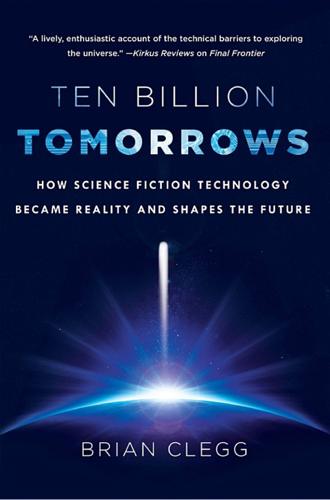
Ten Billion Tomorrows: How Science Fiction Technology Became Reality and Shapes the Future
by
Brian Clegg
Published 8 Dec 2015
As well as the nanoparticles in sunscreens, we are starting to use nanotubes and nanofibers, which can be incredibly strong and electrically conductive, and sheets of materials a single atom thick like graphene, which have amazing properties that are quite different from more familiar bulky materials. If we were to build actual devices on this scale, we have to be able to undertake something far more complex. In fact, the only thing that is likely to be able to build a nanoscale machine is another such machine. The physicist Richard Feynman, one of the earliest to think about nanotechnology in a fascinating talk called “There’s Plenty of Room at the Bottom,” suggested we could manage this by producing very small machines, which we could then use to make even smaller machines, which could then make smaller still, and so on. But even if this is the case we do have to be wary of the issues that face natural replication on this scale.
…
For more on the science fiction portrayal of the nanotechnology threat, see Michael Crichton, Prey (New York: Harper Collins, 2002). For more on nanotechnology, nanobots, and assemblers, see K. Eric Drexler, Engines of Creation (New York, Bantam, 1986). A transcript of Feynman’s talk is available at Richard Feynman (1959), Plenty of Room at the Bottom [online] MSU Department of Physics and Astronomy. Available at www.pa.msu.edu/~yang/RFeynman_plentySpace.pdf, accessed February 12, 2015. 6. DINOSAUR CONSTRUCTION The quote on grinding dinosaur bones is from Michael Crichton, Jurassic Park (London: Random House, 1993), p. 63.
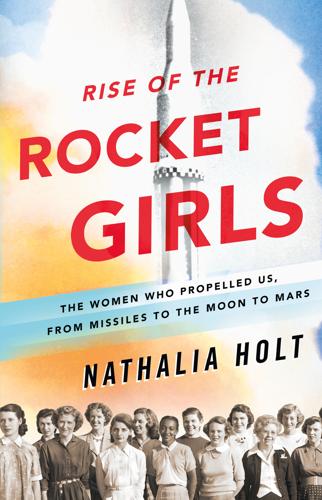
Rise of the Rocket Girls: The Women Who Propelled Us, From Missiles to the Moon to Mars
by
Nathalia Holt
Published 4 Apr 2016
JANUARY 1958 Launch Day The young woman’s heart was pounding. Her palms were sweaty as she gripped the pencil. She quickly scribbled down the numbers coming across the Teletype. She had been awake for more than sixteen hours but felt no fatigue. Instead, the experience seemed to be heightening her senses. Behind her she could sense Richard Feynman, the famous physicist, peeking at her graph paper. He stood looking over her shoulder, occasionally sighing. She knew that her every move was being carefully watched, her calculations closely studied. Her work would inform mission control if the first American satellite would be a success or a crushing failure.
…
The rocket was out of their hands, and they could only hope it would be a success. Success or failure would be ascertained by those at JPL. Back in Pasadena, data began to come across the Teletype. Barbara started her calculations, her pencil moving furiously across the paper. Sitting at the light table, she could sense three very intimidating men towering over her: Richard Feynman, the famed physicist, now at Caltech; Feynman’s former PhD student Al Hibbs, now director of Space Science at JPL; and Lee DuBridge, the president of Caltech. Feynman stood behind her and peeked over her shoulder as she calculated the satellite’s velocity leaving Earth. He was unnaturally calm, a departure from his usually jumpy behavior.
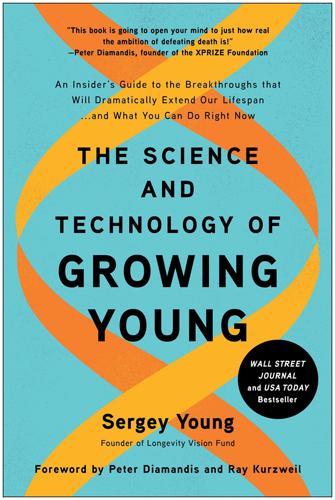
The Science and Technology of Growing Young: An Insider's Guide to the Breakthroughs That Will Dramatically Extend Our Lifespan . . . And What You Can Do Right Now
by
Sergey Young
Published 23 Aug 2021
Likewise, cochlear implants will give you superhuman hearing and allow you to understand, record, and store conversations in any language. Microchips embedded under your skin will record vital health statistics and administer drugs, automatically, and out of sight. But perhaps the most significant physical union of man and machine will be even less obvious. That, of course, is the idea that Nobel Prize–winning physicist Richard Feynman dreamed of back in 1959, and which I alluded to early in this book. In a now-famous lecture called “Plenty of Room at the Bottom,” Feynman envisioned a world where “you could swallow the surgeon. You put the mechanical surgeon inside the blood vessel and it goes into the heart and ‘looks’ around . . .
…
With the help of quantum computing and AGI, it could become so accurate that the emulated you would be indistinguishable from the original you. Using advanced scanning technology, microscopes, and mathematics, Anders believes this is entirely possible. These whole-brain emulations could be deployed anywhere—even in multiple places simultaneously. Want to understand quantum physics? Summon up Richard Feynman or Albert Einstein for a chat. Need a visionary business genius to help your company through its next transformation? Download Steve Jobs or Tony Robbins. Throwing a big bash for your 150th birthday party? The members of Aerosmith are at your service, indistinguishable in looks and performance from the originals!
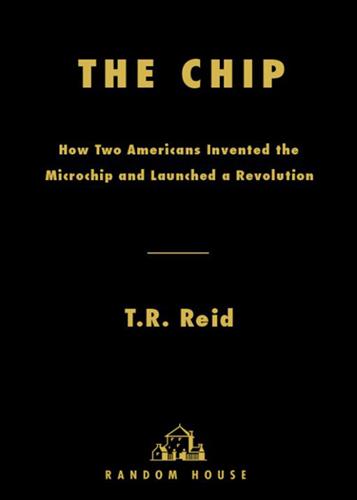
The Chip: How Two Americans Invented the Microchip and Launched a Revolution
by
T. R. Reid
Published 18 Dec 2007
There are just as many basic tools of modern life—the electric light, the telephone, vitamin pills, the Internet—that resulted from a clearly focused effort to solve a particular problem. In a sense, this distinction between basic and directed research encompasses the difference between science and engineering. Scientists, on the whole, are driven by the thirst for knowledge; their motivation, as the Nobel laureate Richard Feynman put it, is “the joy of finding things out.” Engineers, in contrast, are solution-driven. Their joy is making things work. The monolithic idea was an engineering solution. It worked around the tyranny of numbers by reducing the numbers to one: a complete circuit would consist of just one part—a single (“monolithic”) block of semiconductor material containing all the components and all the interconnections of the most complex circuit designs.
…
.”: Interview with Robert Noyce. “It was a situation . . .”: Ibid. “The things that . . .”: Interview with Kilby. “A large segment . . .”: Noyce, in Scientific American, September 1977, p. 64. “There was just . . .”: Interview with Kilby. “It was clear . . .”: Scientific American, September 1977, p. 64. Richard Feynman put it: Feynman, The Pleasure of Finding Things Out, (Cambridge, Mass.: Perseus, 1999), chap. 1. “Second Industrial Revolution”: National Academy of Sciences, Microstructure Science, Engineering & Technology, 1979, p. 1. “the most remarkable . . .”: In Tom Forester, ed., The Microelectronics Revolution, (Cambridge, Mass.: MIT Press, 1981), p. 1.

Good to Go: What the Athlete in All of Us Can Learn From the Strange Science of Recovery
by
Christie Aschwanden
Published 5 Feb 2019
It’s human nature to want your work to succeed, and I’ll admit, I not-so-secretly hoped that our study would prove that running and beer were a good mix. In other words, I was primed to believe in (and overstate) our result. My enthusiasm for our study created a credulous spirit that, left unchecked, could have easily overridden any doubt. As the late Nobel Laureate physicist Richard Feynman once said, “The first principle is that you must not fool yourself—and you are the easiest person to fool.”3 Once you’ve got your sexy result, it’s really easy to come up with a story to explain it. In our case, we came up with some possible reasons having to do with sex hormones and glycogen replenishment rates.
…
Martin Pöchmüller, Lukas Schwingshackl, Paolo C. Colombani, and Georg Hoffmann, “A Systematic Review and Meta-Analysis of Carbohydrate Benefits Associated with Randomized Controlled Competition-Based Performance Trials,” Journal of the International Society of Sports Nutrition 14 (2016): 1–12, https://doi.10.1186/s12970-016-0139-6. 3. Richard Feynman made his famous comment about how easily people fool themselves in a 1974 commencement address at Caltech. 4. John P. A. Ioannidis, “Why Most Discovered True Associations Are Inflated,” Epidemiology 19, no. 5 (2008): 640–48, https://doi.10.1097/EDE.0b013e31818131e7. 5. Marjan Bakker, Annette van Dijk, and Jelte M.
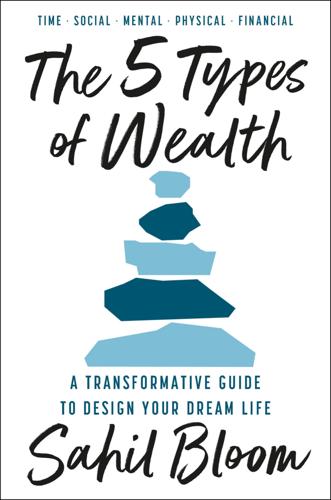
The 5 Types of Wealth: A Transformative Guide to Design Your Dream Life
by
Sahil Bloom
Published 4 Feb 2025
Choosing the right pursuits is a direct path to a more purpose-filled, fulfilling, productive, and successful life. Learn to follow your energy and you won’t be led astray. Conduct the pursuit-map exercise and slowly start to work toward a world where your time is invested in the pursuits that provide the greatest rewards. How to Learn Anything: The Feynman Technique Pillar: Growth Richard Feynman was an American theoretical physicist born in 1918 in New York City. Feynman was a very late talker—he didn’t utter a word until he was three—but it was clear even when he was young that he was extremely observant and intelligent. His parents valued non-consensus thinking; they constantly encouraged young Richard to ask questions and think independently.
…
Feynman taught himself advanced mathematics in his teens and went on to earn a BS from the Massachusetts Institute of Technology and a PhD from Princeton University. He became famous for his work in quantum electrodynamics and received the Nobel Prize in Physics in 1965 for his contributions to the field. Richard Feynman was certainly intelligent. But there are a lot of intelligent people in the world. Feynman’s true genius was his ability to convey complex ideas in simple, elegant ways. He observed that complexity and jargon are often used to mask a lack of deep understanding. The Feynman technique is a learning model that leverages teaching and prioritizes simplicity to help you develop a deep understanding of any topic.

The Singularity Is Near: When Humans Transcend Biology
by
Ray Kurzweil
Published 14 Jul 2005
Wolfram postulates that the universe itself is a giant cellular-automaton computer. In his hypothesis there is a digital basic for apparently analog phenomena (such as motion and time) and for formulas in physics, and we can model our understanding of physics as the simple transformation of a cellular automaton. Others have proposed this possibility. Richard Feynman wondered about it in considering the relationship of information to matter and energy. Norbert Wiener heralded a fundamental change in focus from energy to information in his 1948 book Cybernetic and suggested that the transformation of information, not energy, was the fundamental building block of the universe.60 Perhaps the first to postulate that the universe is being computed on a digital computer was Konrad Zuse in 1967.61 Zuse is best known as the inventor of the first working programmable computer, which he developed from 1935 to 1941.
…
Nanotechnology: The Intersection of Information and the Physical World The role of the infinitely small is infinitely large. —LOUIS PASTEUR But I am not afraid to consider the final question as to whether, ultimately, in the great future, we can arrange the atoms the way we want; the very atoms, all the way down! —RICHARD FEYNMAN Nanotechnology has the potential to enhance human performance, to bring sustainable development for materials, water, energy, and food, to protect against unknown bacteria and viruses, and even to diminish the reasons for breaking the peace [by creating universal abundance]. —NATIONAL SCIENCE FOUNDATION NANOTECHNOLOGY REPORT Nanotechnology promises the tools to rebuild the physical world—our bodies and brains included—molecular fragment by molecular fragment, potentially atom by atom.
…
The revolution in nanotechnology, however, will ultimately enable us to redesign and rebuild, molecule by molecule, our bodies and brains and the world with which we interact.70 These two revolutions are overlapping, but the full realization of nanotechnology lags behind the biotechnology revolution by about one decade. Most nanotechnology historians date the conceptual birth of nanotechnology to physicist Richard Feynman's seminal speech in 1959, "There's Plenty of Room at the Bottom," in which he described the inevitability and profound implications of engineering machines at the level of atoms: The principles of physics, as far as I can see, do not speak against the possibility of maneuvering things atom by atom.
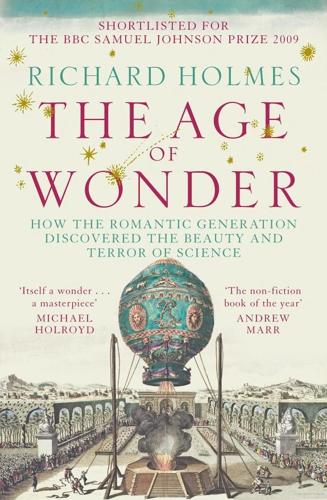
The Age of Wonder
by
Richard Holmes
Published 15 Jan 2008
Against this, it is interesting to read the defence of the necessary and dynamic notion of ‘mystery’ by Humphry Davy in his lectures (see my Prologue), or by the great twentieth-century American physicist Richard Feynman in The Meaning of it All (posthumously published in 1999). Though not a religious man, Feynman believed that science was driven by a continual dialogue between sceptical enquiry and the sense of inexplicable mystery, and that if either got the upper hand true science would be destroyed. See James Gleick, Richard Feynman and Modern Physics (1992). ♣ This is possibly the first scientific identification of the famous ‘placebo effect’, although it would not be properly tested and defined until the 1950s.
…
Watson, The Double Helix: A Personal Account of the Discovery of the Structure of DNA, 1968/2001 Arthur Koestler, The Act of Creation, Danube edition, 1969 Jacob Bronowski, The Ascent of Man, 1973 Adrian Desmond and James Moore, Darwin, Penguin, 1992 Lewis Wolpert, The Unnatural Nature of Science, Faber, 1992 James Gleick, Richard Feynman and Modern Physics, Pantheon Books, 1992 Michael J. Crowe, Modern Theories of the Universe from Herschel to Hubble, Chicago UP, 1994 Gale Christianson, Edwin Hubble: Mariner of the Nebulae, Farrar, Straus & Giroux, 1995 Peter Whitfield, The Mapping of the Heavens, The British Library, 1995 John Carey (editor), The Faber Book of Science, Faber, 1995 Janet Browne, Charles Darwin: Volume I: Voyaging, and Volume 2: The Power of Place, Pimlico, 1995 and 2000 Michael Shortland and Richard Yeo, Telling Lives in Science: Essays in Scientific Biography, CUP, 1996 Dava Sobel, Longitude, Fourth Estate, 1996 Roy Porter, The Greatest Benefit to Mankind: A Medical History of Humanity from Antiquity to the Present, HarperCollins, 1997 John Gascoigne, Science in the Service of Empire, CUP, 1998 Richard Dawkins, Unweaving the Rainbow: Science, Delusion and the Appetite for Wonder, Allen Lane, Penguin Press, 1998 Lisa Jardine, Ingenious Pursuits: Building the Scientific Revolution, Little, Brown, 1999 Jonathan Bate, The Song of the Earth, Picador, 2000 Ludmilla Jordanova, Defining Features: Scientific and Medical Portraits 1660-2000, National Portrait Gallery, London, 2000 Patricia Fara, Newton: The Making of Genius, Macmillan, 2000 Mary Midgley, Science and Poetry, Routledge, 2001 Thomas Crump, A Brief History of Science as Seen Through the Development of Scientific Instruments, Constable, 2001 Oliver Sacks, Uncle Tungsten: Memories of a Chemical Boyhood, Picador, 2001 Carl Djerassi and Roald Hoffmann, Oxygen (a play in 2 acts), Wiley, New York, 2001 Anne Thwaite, Glimpses of the Wonderful: The Life of P.H.
…
.): Romanticism and Science, 249n Furneaux, Captain Tobias, 49 Fuseli, Henry, 105-6 galaxies see nebulae Galignani, Giovanni Antonio, 385 Galileo Galilei, 77, 86n, 171, 428 Galvani, Luigi, 296, 314, 444 Galvanic Society, 317 galvanism, 273, 285-6, 328-9 Gambia, river, 214-16, 221 Garland, Private William, 224 Garnerin, Jacques, 159 Garnett, Thomas, 292 gas lighting, 382 gases: in medical treatment, 251, 257, 272 Gay-Lussac, Joseph, 159, 297, 299, 345, 353-4, 398, 403n Geneva: Davy in, 433; see also Diodati, Villa Gentleman’s Magazine, 136, 408, 460 Geological Society, foundation, xix, 393 geology: Davy lectures on, 294; Davy on limits of knowledge in, 356; and religious belief, 451, 459; Lyell on deep time and, 454-5, 459 George II, King, 65, 68 George III, King: Banks meets on return from Tahiti, 42-3; Banks advises at Kew, 49; Omai presented to, 50; sends condolences to Banks for gout, 57; interest in astronomy, 99, 168; summons Herschel to court, 109-10; appoints Herschel King’s Personal Astronomer, 110-11; remark on Herschel, 110, 409; buys Herschel telescopes as royal gifts, 114; proposes sponsoring ballooning, 133; sees Lunardi’s balloon flight, 138; meets Lunardi, 139; finances Herschel’s forty-foot telescope project, 164, 176, 178, 180, 190; visits Herschel’s telescope project at The Grove, 177-8; mental decline, 180-1; praises Herschels to Lalande, 188; death, 395; bequeathes books to British Museum library, 404 George, Prince of Wales (later King George IV): interest in ballooning, 137-8; gives watch to Lunardi, 139; grants and honours to Herschel, 181; confers knighthood on Davy, 342; awards baronetcy to Davy, 369; accession to throne, 395 Gerard, John: Herbal, 8 Germany: as inspiration for Frankenstein, 328-30 Gibbon, Edward, 110 Giddy, Davies: letters from Davy, 199, 259, 274, 277; lends books to Davy, 251; Beddoes writes to on Davy, 252; Anna Beddoes runs away to, 280, 286; as guardian of Anna Beddoes’s children, 302; marries and changes name to Davies Gilbert, 302; supports Davy’s candidature for presidency of Royal Society, 397; supports Faraday’s election to Royal Society Fellowship, 402 Gilbert, Davies see Giddy, Davies Gillman, Dr John, 308, 321 Gillray, James, 277, 292 Gleick, James: Richard Feynman and Modern Physics, 313n Godwin, William: on property, 16n; published by Johnson, 106, 271; and Davy, 267-8; and authorship of Frankenstein, 325 Goethe, Johann Wolfgang von: on solitary scientific genius, xvii; essays on meteorology, 160; on nature of science, 247; in Jena circle, 315; on Newton’s Optics, 319; Jane Davy meets, 412; Humboldt praises, 440; ‘Empirical Observation and Science’, 249n, 443n; Treatise on Colour, 443n Goree (island), West Africa, 223 Gosse, Sir Edmund: Father and Son, 451n Göttingen: acquires Herschel telescope, 114, 168 Gray, Robert (later Bishop of Bristol), 351, 361, 365 Great Barrier Reef (Australia), 38n, 39 Great Reform Bill (1832), 437 Green, Joseph Henry, 306-7, 321-3; Spiritual Philosophy, 322 Green, William, 5-6, 10, 40 Grove, The (house), Slough, 165-6, 174-5, 188, 194 Guiccioli, Teresa, 380 Hachette, Pierre, 401 Haiti, 386-7 Hale-Bopp comet, 172n Hallam, Arthur, 451n Halley, Edmund: comet, 171-2 Hamblyn, Richard: The Invention of Clouds, 160n Hamilton, Sir William, 46n, 55, 221 Hamilton, Sir William Rowan, 447 Handel, George Frederic, 69 Hanover: Herschel family in, 65-9, 75; Caroline returns to, 409 Hardy, Thomas: Two on a Tower, 118n Harrington, Robert, 413; ‘The Death Warrant of the French Theory of Chemistry’, 273 Harrison, John, 47, 77, 109, 373n, 438n Hastenbeck, battle of (1757), 69 Hatchett, Charles, 339, 374 Hawkesworth, John: Account of Voyages Undertaken…for Making Discoveries in the Southern Hemisphere…by…Captain Cook, 44 Hawking, Stephen: images, 465n; A Brief History of Time, 88n Haydn, Joseph: The Creation, 107, 199 Haydon, Benjamin Robert: hosts ‘Immortal Dinner’, 318-19, 321n, 327; Christ’s Entry into Jerusalem, 318-19 Hayes, Charlotte, 54 Hazlitt, William, 209 Heaton, James, 372 Heaven’s Gate cult, 172n Hebburn colliery, 368 Hecla, HMS, 396 Hector, Edmund, 145 Henderson, Thomas, 90n Henslow, John, 460-1 Hepworth, Dame Barbara, 237n Herapath, William, 284 Herculaneum: Davy investigates calcinated papyri rolls from, 376, 378, 380 Herodotus, 217 Heron, Ralph, 143, 155 Herschel, Alexander (William’s brother): home life in Hanover, 71, 75; moves to England, 80; moves to Datchet, 111, 114; accompanies William to Göttingen, 168; wife irritates Caroline, 169; and construction of William’s giant telescope, 177; wife’s death, 183; unhappy pre-marital love affairs, 195 Herschel, Anna (née Moritzen; William’s mother), 65-6, 68-71, 80, 89 Herschel, Caroline (William’s sister): passion for astronomy, 60, 63-4, 66, 82; keeps journal, 64, 71-2; upbringing, 65-7, 70-1; feels Lisbon earthquake, 68, 383; on William’s return to Hanover from England, 69, 75-6; stunted and disfigured by ill health, 71, 75, 80-1; joins William in England, 80-2; singing lessons, 80-2, 89; relations with William, 82-3, 86, 89, 174, 176, 196, 403n; as William’s assistant and helpmeet, 85-6, 89, 95, 117-18; millinery business in Bath, 89, 95; solo singing, 90; on Watson’s meeting with Herschel, 93; and William’s discovery of Uranus, 95-8, 104; and successful trial of William’s telescope at Greenwich, 109-10; moves to Datchet with William, 111, 114; keeps visitors’ book at Datchet, 114; describes astronomical observations, 115-17; compiles index of William’s remarks on practical observation, 116-17; William trains for independent observation, 117; on hazards of astronomical observation, 119-20; injures leg, 120-1; William credits with discovering small ‘associate nebula’, 124; and construction of William’s forty-foot telescope, 163, 175; moves house to The Grove, Slough, 165, 165-6; and visitors to The Grove, 168-9; and William’s absence in Göttingen, 168-9; concentrates on astronomical work, 169-70; operates Newtonian reflector (’small sweeper’), 169-70; Observation Book, 170, 173; discovers and observes new comets, 171-4, 176, 188, 193; published in Philosophical Transactions, 173; Fanny Burney visits, 175; large Newtonian sweeper telescope, 175; Maskelyne’s correspondence and friendship with, 175, 189, 193-5; reputation, 176, 193; on William’s single-mindedness, 176-7; secures royal stipend, 178-80, 384; and George III’s financial stipulations for telescope project, 180-1; affected by William’s courtship and marriage to Mary Pitt, 182-8; celebrates mounting of giant telescope, 182; destroys ten years of journals, 186-7; leaves Grove apartment for rooms in Slough, 188, 194-5; Lalande’s correspondence with, 189, 196; and dangers from forty-foot telescope, 191; astronomical achievements, 193; and birth of William’s son, 193; depicted in cartoon, 193; rides to visit Maskelyne in Greenwich, 193-4; confesses to loneliness, 195; on nebulae and galaxies, 196-7, 205, 208; Lalande praises, 201n; affection for nephew John, 202-3; imagination, 276; and nephew John’s career, 387, 389-90; assists nephew John in astronomical work, 406-7; cares for William in old age, 406-8; health problems, 407; returns to Hanover after William’s death, 409-11; awarded Astronomical Society’s Gold Medal, 410-11; recalculates new Star Catalogue, 410; writes to nephew John, 410; fantasy on comet travelling, 426; lack of religious expression, 450; correspondence with John and family in South Africa, 462-4; public relations in old age, 463-4; ‘Book of Work Done’, 168, 171; Memoirs, 64 & n, 68, 121, 195, 410; Star Catalogue, 193-5 Herschel, Dietrich (William’s brother), 68, 71-2, 80 Herschel, Isaac (William’s father), 64-6, 68-71, 75-6 Herschel, Jacob (William’s brother), 65-71, 75-7, 79-80, 89, 166-7 Herschel, Sir John (William’s son): names Uranus’s moons, 102n; birth, 193; on solar system and nebulae theory, 198; in Paris as boy, 201; aunt Caroline’s devotion to, 202-3; Brighton holiday with father, 209; excels at Cambridge, 381-2; and founding of Astronomical Society, 384; career, 387-90; misgivings over Davy’s character, 397-8, 402; supports Wollaston for presidency of Royal Society, 397-8; awarded Copley Medals, 399-400, 464; Davy acknowledges in presidential speech to Royal Society, 399; Continental tour with Babbage, 405-6; Davy recommends for Athenaeum club, 405; favours women in science, 407; composes epitaph to father, 408; and Caroline’s return to Hanover, 409-11; Caroline sends Memoirs to in instalments, 410; contributes papers to Royal Society, 410; correspondence with Caroline, 410, 462-5; Davy appoints Secretary at Royal Society, 413; refers to Davy’s Consolations in Travel, 430, 455; candidacy for presidency of Royal Society (1829), 436-7; marriage and family, 436, 461; knighted, 437; investigates Fraunhofer’s lines on spectrum, 440; in debate on state of British science, 441-5; literary qualities, 442; attends British Association meetings, 447; Mary Somerville writes on, 458; search for unifying laws, 458; astronomical expedition to southern hemisphere (Cape Town), 461-5; Charles Darwin studies, 461; wealth from inheritances, 462; busy life, 463; reportedly discovers life on moon, 464-6; baronetcy and election to presidency of Royal Society, 465; portrait photograph, 465; achievements, 468; A Preliminary Discourse on the Study of Natural Philosophy, 441-5, 448, 461 Herschel, Margaret Brodie, Lady (née Stewart; John’s wife), 46n, 64n, 186-7, 436, 447, 462-5 Herschel, Mary, Lady (earlier Pitt; née Baldwin), 165, 182-6, 389, 409, 462 Herschel, Sophie (William’s sister), 65-6, 76 Herschel, Sir William: discoveries and theories, xx, 63-4, 88, 90-1, 93; in Bath, 60, 75-7, 80, 95; constructs own telescopes, 60, 63, 83-7, 94; musicianship, 60, 67 & n, 72, 75-7, 89-90, 115, 188; self-taught astronomy, 60-1, 74, 77; Watson meets, 60-1, 92-3; background and family, 61, 63-7; studies and speculations on moon, 61-3, 87, 92-5; character and temperament, 65, 209-10; practical skills, 66, 87; serves in Hanoverian army, 67-70; moves to England, 68-70, 72-4; discharged from army, 71; linguistic skills, 72, 75; revisits Hanover, 72, 75-6; philosophical and religious reflections, 73; appearance, 75; Astronomical Observation Journal, 77, 87-8, 94, 96-7; brings Caroline to England, 80-2; relations with Caroline, 82-3, 86, 89, 120, 174, 196, 403n; Caroline assists, 85-6, 117-18; and double stars, 87, 90, 95; on nebulae and galaxies, 88, 123, 192-3, 196-8, 205, 208-9; membership of Bath Philosophical Society, 93; reading of night sky, 95, 115-16; discovers new planet (Uranus), 96-103, 208; meets British astronomers in London, 101-2; elected to Royal Society and awarded Copley Gold Medal, 102-3, 105; denies accidental discovery of Uranus, 103-4, 108, 367; correspondence with European astronomers about metal specula, 107-8; power of telescopes doubted, 108-9; summoned to meet George III, 109-10; telescope tried and proved at Greenwich, 109-10; appointed King’s Personal Astronomer, 111; commercial manufacture of reflector telescopes, 114; on physics and psychology of night observation, 115-16; ‘sweeping’ method, 115, 118, 120; and hazards of observation, 119-20; writes on celestial system and universe, 121-4, 191-2, 197-8, 204-5, 209-10, 391; catalogue of nebulae, 123, 176; interest in balloons, 135-6; proposes and builds forty- foot telescope, 163, 175-7, 181-2; moves to The Grove, Slough, 165-7; absence installing telescope in Göttingen, 167-8; and Caroline’s celebrity for discovering comet, 174; publishes papers with Royal Society, 176; single-mindedness, 176-7; requests and secures royal stipend for Caroline, 178-9; account book for telescope project, 180; and George III’s financial stipulations for telescope project, 180-1; knighthood, 181; personal finances, 181; courtship and marriage to Mary Pitt, 182-7; and operation of forty-foot telescope, 190; theoretical work, 191, 208; birth of son John, 193; domestic and married life, 193; discovers infra-red light, 199, 328; interest in extraterrestrial life, 199; studies sun, 199, 391; commissioned by War Office to provide spy telescope, 200; meets Napoleon in Paris, 200-1; on philosophical significance of astronomy, 203; on Time, 203-5; on objective observation, 249n; Davy cites, 288; in Walker’s composite portrait, 303; Keats on, 306-8, 323; Jane Apreece dines with, 340; isolation from Banks, 381; disagreement with son over career, 387-90; influence on Shelley, 390-1; reputation, 390, 399, 438; decline and death, 405, 407-8, 435; obituaries, 408-9; Davy writes on ideas of ever-evolving universe, 430; religious scepticism, 450; Brewster summarises work in life of Newton, 456; Mary Somerville writes on, 458; will and bequests to son, 462; ‘An Account of a Comet’, 100; ‘Astronomic Observations Relating to the Sidereal Path of the Heavens’, 208, 407; ‘Astronomical Observations Relating to the Construction of the Heavens’, 204; ‘Catalogue of Second Thousand Nebulae with Remarks on the Construction of the Heavens’, 191, 204; ‘The Description of a Forty Foot Reflecting Telescope’, 196; ‘An Investigation of the Construction of the Heavens’, 122; ‘Observations tending to investigate the Nature of the Sun’, 204; ‘On the Construction of the Heavens’, 122, 191, 197, 204; ‘On the Nature and Construction of the Sun’, 199; ‘On Nebulae Stars, Properly So-called’, 196-7; ‘On the Proper Motion of the Solar System’, 204; ‘One Thousand New Nebulae’, 118; Scientific Papers, 64n; ‘A Series of Observations on the Georgian Planet’, 191; ‘A Third Catalogue of the Comparative Brightness of Stars’, 196 Herschel-Shorland, John, 64n Hicks, Zachary, 40 Hodgson, Revd John, 351 Holmes, J.H., 372 Holmes, Oliver Wendell, 190 Holmes, Richard: lectures at Royal Institution, 467; Shelley: The Pursuit, 121n Home, Sir Everard, 7-8 Homer: Iliad, 206-7 Hooke, Robert: Micrographia, 249n Hornemann, Friedrich, 212, 233 horse-dung: used for casting metal mirrors, 84 & n Hoskin, Michael, 94n; Caroline Herschel’s Autobiographies, 64n Houghton, Major Daniel, 212, 216 Household Words (magazine), 454 Houssa (mythical city), 220 Houssa (West African people), 228 Howard, Luke: Barometrographia, 160; On the Modification of Clouds, 159 Hubble, Edwin, 84n, 88, 90, 119n, 403n; The Realm of the Nebulae, 205n Hubble Telescope, 135 Humboldt, Alexander von, 43n, 232n, 310, 324, 370, 406, 439-40, 447, 458; Personal Narrative, 406, 445, 461 Hunt, Leigh, 353, 404 Hunter, John, 51, 308-9, 316, 320 Hunterian Collection, 307; Hunterian Museum, London, 309 Hunterian Orations, 308 Hutton, James, 104, 208, 294, 356, 455 Huygens, Christiaan, 77, 83, 93, 167, 200, 324 hydrogen: discovered, 127-8; in balloons, 131, 144, 146, 158; cheap production method, 156 Hypatia of Alexandria, 201n, 248 Iceland: Banks visits, 47, 54, 121n Illyria, 377-8, 419, 421, 428, 432 Inchbald, Elizabeth: A Magical Tale, or the Descent of the Balloon (play), 143 infra-red light, 199, 328 inoculation, 50 Institut de France: awards Prix Napoléon to Davy, 352 iodine, 354, 373 Ireland: attempted balloon crossing to England from, 157-8 Italy: Davy visits with Jane, 355, 377-8; Romantic wanderers in, 425 J, Miss (of Bristol), 263 Jackson’s Oxford Journal, 144 James, Frank A.J.L.: ‘How Big is a Hole?’

WTF?: What's the Future and Why It's Up to Us
by
Tim O'Reilly
Published 9 Oct 2017
It is precisely this training in how to look at the world directly, not simply to reshuffle the maps, that is at the heart of original work in science—and as I try to make the case in this book, in business and technology. As recounted in his autobiography, Surely You’re Joking, Mr. Feynman, fabled physicist Richard Feynman was appalled by how many students in a class he visited during his sabbatical in Brazil couldn’t apply what they had been taught. Immediately after a lecture about the polarization of light, with demonstrations using strips of polarizing film, he asked a question whose answer could be determined by looking through the film at the light reflected off the bay outside.
…
Stuart Firestein, in his book Ignorance, makes the case that science is not the collection of what we know. It is the practice of investigating what we don’t know. Ignorance, not knowledge, drives science. There’s also an essential element of play in both science and learning. In his autobiography, physicist Richard Feynman described the origin of the breakthrough that led to his Nobel Prize. He was burned-out and found himself unable to concentrate on work. Physics was no longer fun. But he remembered how it used to be. “When I was in high school, I’d see water running out of a faucet growing narrower, and wonder if I could figure out what determines that curve,” he wrote.
…
For Gibson’s account of its origin, see “The future has arrived,” Quote Investigator, retrieved March 30, 2017, http://quoteinvestigator.com/2012/01/24/future-has-arrived/. 21 a tin of biscuits wrapped in brown paper: I believe I first heard this story from George Simon. It is also recounted in “Alfred Korzybski,” Wikipedia, retrieved March 30, 2017, https://en.wikipedia. org/wiki/Alfred_Korzybski#cite_note-4. 22 sufficiently to use them in real life: Richard Feynman, Surely You’re Joking, Mr. Feynman (New York: Norton, 1984), 212. 22 “Their knowledge is so fragile!”: Ibid., 36. CHAPTER 2: TOWARD A GLOBAL BRAIN 23 “The Open Source Paradigm Shift”: Tim O’Reilly, “The Open Source Paradigm Shift,” in Perspectives on Free and Open Source Software, ed. J. Feller, B.
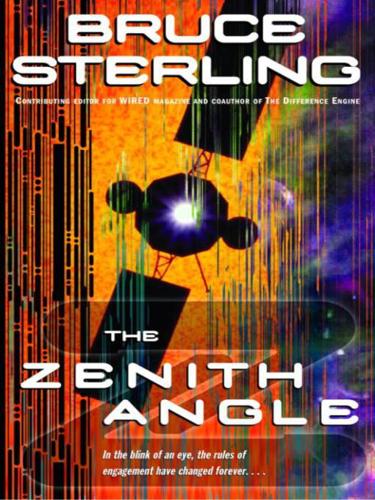
The Zenith Angle
by
Bruce Sterling
Published 27 Apr 2004
Realistically speaking, how could one computer-science professor cure an ailing multibillion-dollar spacecraft? But Van also knew that the job was not hopeless. Such things sometimes happened in real life. For instance: Richard Feynman was just a physicist. But Feynman had dropped a chunk of rubber O-ring into a glass of ice water, and he had shown the whole world, on TV, how a space shuttle could blow up. If Van somehow solved Hickok’s zillion-dollar problem, that would prove that he, Derek Vandeveer, had a top-notch, Richard Feynman kind of class. Van had sacrificed a lot to get his role in public service. He’d given up his happy home, his family life, his civilian career, his peace of mind, and a whole, whole lot of his money.
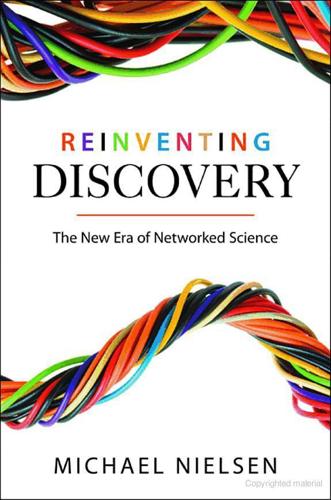
Reinventing Discovery: The New Era of Networked Science
by
Michael Nielsen
Published 2 Oct 2011
Pauling may have been widely acknowledged as the world’s leading chemist, but other chemists could see just as surely as Watson and Crick that Pauling’s structure was simply wrong. This strong shared praxis makes science well suited to collective intelligence. This strong shared praxis doesn’t mean that science is a clean and simple process. The actual day-to-day process of doing science is messy and speculative and filled with error and argument. The scientist Richard Feynman was so full of irrepressible brainwaves and “great” ideas, most of which later proved to be wrong, that according to his biographer James Gleick his cannier colleagues developed a rule of thumb: “If Feynman says it three times, it’s right.” The same could be said for many scientists. Often a scientist begins an investigation with little more than a whiff of an idea, a suspicion that some hypothesis is true.
…
Nature, 445:347, February 1, 2007. [71] Jeremy Ginsberg, Matthew H. Mohebbi, Rajan S. Patel, Lynnette Brammer, Mark S. Smolinski, and Larry Brilliant. Detecting influenza epidemics using search engine query data. Nature, 457:1012–1015, February 19, 2009. [72] James Gleick. Genius: The Life and Science of Richard Feynman. Toronto: Random House of Canada, 1993. [73] Sharad Goel, Jake M. Hofman, Sébastien Lahaie, David M. Pennock, and Duncan J. Watts. What can search predict? http://www.cam.cornell.edu/~sharad/papers/searchpreds.pdf, 2009. [74] Ben Goldacre. An intrepid, ragged band of bloggers. Guardian, July 29, 2009. http://www.badscience.net/2009/07/we-are-more-possible-than-you-can-powerfully-imagine/

Physics in Mind: A Quantum View of the Brain
by
Werner Loewenstein
Published 29 Jan 2013
However, we are still not quite home free. Missing from the definition is an objective measure. But how does one measure something ethereal like meaning? This question has preoccupied generations of philosophers, but for a scientist there isn’t much to take home from their musings in that regard. The physicist Richard Feynman liked to say—and did so with only the slightest twinkle in his eye—that the philosophy of science is about as useful to scientists as ornithology is to birds. To be fair, classical information theory isn’t of much help either, and if you expect an answer from its books, you will be disappointed.
…
But if we cut across the morphological trivia, we can rustle up a definition in a few words: a quantum computer is a device that extracts information from quantum waves in superposition. So those haunting poltergeists in Ψ have their use after all, But I doubt that Schrödinger would have thought it would ever be that way. But so it goes. Eventually, once quantum theory had gotten over its long birth pangs, in the 1980s Richard Feynman, Paul Benioff, and David Deutsch advanced the notion that those superposed quantum states might be harnessed to store bits of information. Just as in a standard digital computer a set of capacitors obeying the rules of classical physics can store information, so in principle could a set of atoms—say, a string of hydrogen atoms—obeying the rules of quantum mechanics.
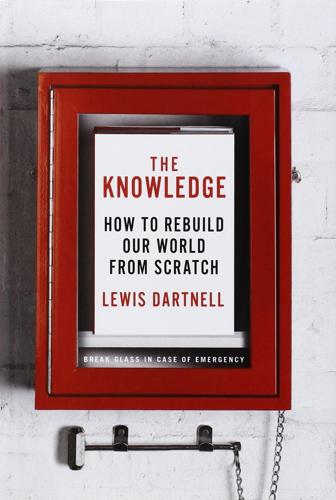
The Knowledge: How to Rebuild Our World From Scratch
by
Lewis Dartnell
Published 15 Apr 2014
Moreover, a hard copy would be unfeasibly large—and how could you ensure post-apocalyptic survivors would be able to get hold of a copy? In fact, I believe you can help society recover much better by taking a slightly more elegant approach. The solution can be found in a remark made by physicist Richard Feynman. In hypothesizing about the potential destruction of all scientific knowledge and what might be done about it, he allowed himself a single statement, to be transmitted securely to whichever intelligent creatures emerged after the cataclysm: What sentence holds the most information in the fewest words?
…
Also see the rebuttal to Lovelock’s proposal, “How Not to Save Science,” in Greer (2006), as well as more recent proposals for collating and preserving crucial knowledge in Kelly (2006), Raford (2009), Rose (2010), and Kelly (2011), and the humorous essential T-shirt for time travelers at http://www.topatoco.com/bestshirtever. the encyclopedia as a safe repository of human knowledge: Yeo (2001). Apollo program: http://www.nasa.gov/centers/langley/news/factsheets/Apollo.html. 100 million man-hours devoted to Wikipedia: Shirky (2010). Richard Feynman quote: “Atoms in Motion,” Chapter 1 in The Feynman Lectures on Physics (1964), now available free at http://feynmanlectures.caltech.edu/I_01.html. “These fragments I have shored against my ruins”: T. S. Eliot (1922), The Waste Land. fantasy of starting from scratch: In addition to the novels Robinson Crusoe and The Swiss Family Robinson already mentioned, a number of other fiction books explore the theme of using crucial knowledge to start over.

Beyond: Our Future in Space
by
Chris Impey
Published 12 Apr 2015
The frontier of telepresence is its merger with artificial intelligence, a development foreseen by computer science pioneer Marvin Minsky in 1980.7 A robot doesn’t need to be just a remote extension of a human; it can process information and make its own decisions. This will be exciting, but it will raise fascinating moral and ethical questions, especially if these semiautonomous robots come into contact with each other. Here Come the Bots Richard Feynman was an iconic physicist who won a Nobel Prize for his work in quantum theory. His delight in understanding how nature worked was infectious. In 1959, he wrote an influential essay titled “There’s Plenty of Room at the Bottom,” in which he argued that miniaturization of computers still had a long way to go.
…
Kennedy Space Center, the Smithsonian National Air and Space Museum, the California Science Center, and the Intrepid Sea-Air-Space Museum in New York City were the lucky recipients. 18. After the Challenger disaster, President Reagan formed the Rogers Commission to investigate. In their televised hearings, physicist Richard Feynman had a memorable moment when he dipped an O-ring into a cup of ice water to show how it became less resilient at the low temperatures at the time of launch. He was scathing about the wildly unrealistic estimates of reliability from NASA engineers and the stark failures of NASA management: “For a successful technology, reality must take precedence over public relations, for nature cannot be fooled.”
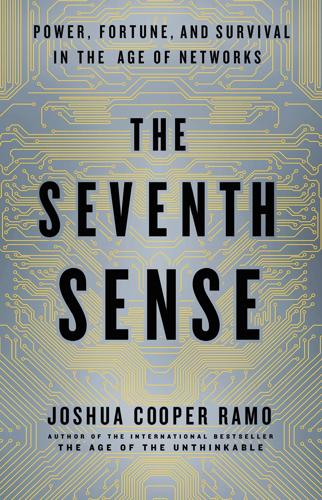
The Seventh Sense: Power, Fortune, and Survival in the Age of Networks
by
Joshua Cooper Ramo
Published 16 May 2016
Faced with the urbane, powerful eighty-one-year-old founder of the largest radio and TV network in America, Danny jumped right into a passionate introduction of his ideas about connection and networks. Paley, coolly: “I didn’t understand a word you said.” Then he wrote Hillis a check for $4 million. Or there was the time that Danny asked the Nobel Prize–winning physicist Richard Feynman to tip him off about smart young scientists Thinking Machines might hire. Feynman, sixty-five years old, volunteered himself. For the next few years, he passed his summer vacations working alongside Hillis and his team. When it came time to test the first Connection Machine, it was some of Feynman’s data that helped reveal just how well the black box was doing its job.
…
Chris Turner (London: Verso Books, 2000), 141. “Someday, perhaps”: William Daniel Hillis, “The Connection Machine” (PhD diss., MIT, 1985), 2. Adding, in case: Ibid., 19. He drove: Po Bronson, “The Long Now: Time-Traveling with Danny Hillis,” Wired, May 1, 1998. Feynman, sixty-five: W. Daniel Hillis, “Richard Feynman and the Connection Machine,” Physics Today 42, no. 2 (February 1989): 78. “At times”: Michael J. Black, review of The Connection Machine, by W. Daniel Hillis, AI Magazine 7, no. 3 (1986): 169. You can solve: Adam Beberg, “Distributed Systems: Computation with a Million Friends” (lecture, Stanford University Computer Systems Colloquium, April 30, 2008), at https://www.youtube.com/watch?

Only Humans Need Apply: Winners and Losers in the Age of Smart Machines
by
Thomas H. Davenport
and
Julia Kirby
Published 23 May 2016
Meanwhile, even for those who perform the outsourced tasks that require minimal training, these mechanisms make it increasingly possible to concentrate on a certain type of work, develop real strength at it, and become known for mastery of some very specialized work—thus, to excel by stepping narrowly—because demand for it can be aggregated from all around the world. In short, it’s possible to think of narrow-stepping as taking the filet of work—it’s the satisfying stuff situated in the middle, with boring project management process above it and boring paperwork and other ancillary tasks below it. Richard Feynman, in his time one of the world’s best-known physicists, was capable of slicing out this filet back in his days at MIT. He simply refused to participate in all the usual housekeeping of a university academic department—the committee memberships, the candidate interviewing, the grant application writing, and so forth.
…
This allows them to keep seeing problems and opportunities in new ways. Reflecting on findings in personality psychology, he reports that three basic traits are key. Original thinkers are “low self-monitors,” so they don’t pick up on social cues dictating how they should act. Second, they avoid contact with coworkers. (Richard Feynman is a favorite example of Sutton’s.) And third, they have very high self-esteem. We suspect most people who choose to step narrowly today would match these criteria pretty closely. And while the technology and communications enablers we’ve described will swell their ranks and include many more people, probably those people will have more than just a touch of these tendencies, as well.
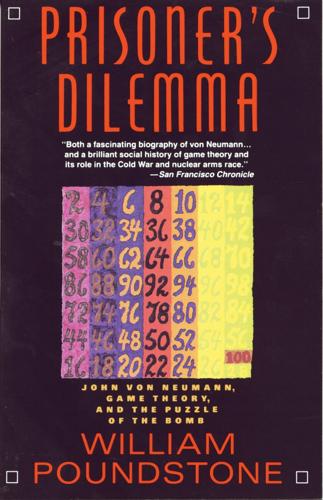
Prisoner's Dilemma: John Von Neumann, Game Theory, and the Puzzle of the Bomb
by
William Poundstone
Published 2 Jan 1993
Archives): “Neumann is one of the two or three top mathematicians in the world, is totally without national or race prejudice, and has an enormously great gift for inspiring younger men and getting them to do research.... The Neumanns rather like to hit the high spots socially. You know Princeton life is a bit fast and ‘cocktail partyish.’ On the other hand, Neumann is not high-hat in any way, and is most accessible to young students.” A flip and rather puzzling comment on von Neumann occurs in physicist Richard Feynman’s popular book Surely You’re Joking, Mr. Feynman! (1985). Feynman says that “Von Neumann gave me an interesting idea: that you don’t have to be responsible for the world that you’re in. So I have developed a very powerful sense of social irresponsibility as a result of Von Neumann’s advice. It’s made me a very happy man ever since.
…
He was an expert on isotope diffusion, the process by which radioactive elements are purified for use in the bomb. Fuchs was formally accused of transmitting atomic secrets to the Soviets four times between 1943 and 1947. For this he received only token payment, the largest amount being $400. As spies must be, Fuchs was pleasant and did not stand out in a crowd. He once lent his car to Richard Feynman so he could visit his wife in the hospital. In The Legacy of Hiroshima (1962) Teller wrote of Fuchs, “He was by no means an introvert, but he was a quiet man. I rather liked him.... Fuchs was popular at Los Alamos because he was kind, helpful and much interested in the work of others.” History has downplayed the military significance of Fuchs’s spying.
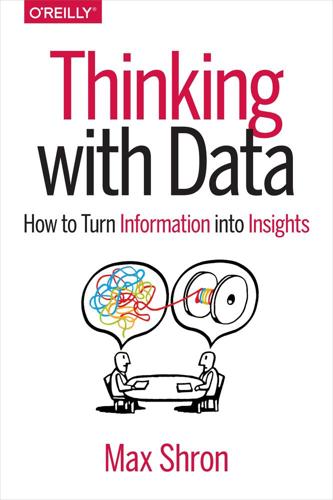
Thinking with Data
by
Max Shron
Published 15 Aug 2014
The ideas we will be able to come up with will mostly be variations on things that we have seen before. It is tremendously useful to acquire a good mental library of examples by reading widely and experimenting with new ideas. We can expand our library by talking to people about the problems they’ve solved, reading books on data science or reading classics (like Edward Tufte and Richard Feynman), following blogs, attending conferences and meetups, and experimenting with new ideas all the time. There is no shortcut to gaining experience, but there is a fast way to learn from your mistakes, and that is to try to make as many of them as you can. Especially if you are just getting started, creating things in quantity is more important than creating things of quality.
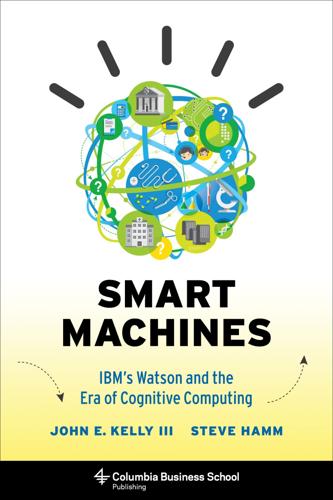
Smart Machines: IBM's Watson and the Era of Cognitive Computing (Columbia Business School Publishing)
by
John E. Kelly Iii
Published 23 Sep 2013
These devices, theoretically, could be packed densely on a chip and would require much less energy than today’s transistors—about ten times less power.4 Taking a longer view, there’s great potential in applying the principles of quantum mechanics to create a new kind of computational device. Quantum computing has been a Holy Grail for researchers ever since Nobel Prize–winning physicist Richard Feynman challenged the scientific community in 1981 to build computers based on quantum mechanics. A classical von Neumann–type computer makes use of bits, where each bit represents either a one or a zero. In contrast, a quantum bit, or qubit, can represent a one, a zero, or both at once. Therefore, two qubits can be in the states 00, 01, 10, and 11 at the same time.
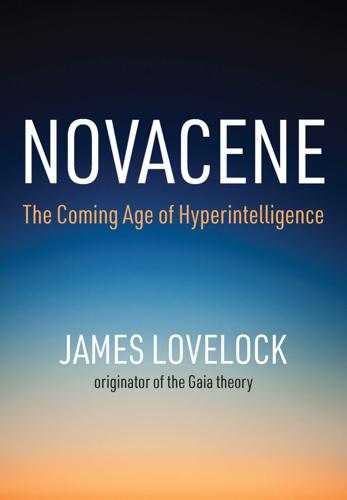
Novacene: The Coming Age of Hyperintelligence
by
James Lovelock
Published 27 Aug 2019
Of course, we already live in a quantum world, the world of the infinitesimal, which we have glimpsed but not yet grasped because it does not accord with our step-by-step logic. Curiously, physicists, apart from Einstein, do not seem to be bothered by their inability to explain quantum theory. In a lecture, that greatest of late-twentieth-century physicists, Richard Feynman, drew diagrams that described the dynamic behaviour of atomic and smaller objects and then made just one step further towards what appears to be an explanation. But he ended by saying, ‘Anyone who says they understand quantum theory probably does not.’ The simple truth is we are inconveniently large and slow beings and quantum phenomena exist tantalizingly just beyond our common experience.
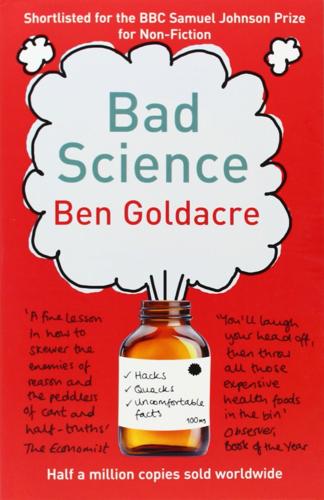
Bad Science
by
Ben Goldacre
Published 1 Jan 2008
A statement that is referenced to the second issue of a magazine called Earthletter. Fair enough, if that’s what you want to read—I’m bending over to be reasonable here—but it’s clearly not a suitable source to reference that claim. This is her PhD, remember. To me this is cargo-cult science, as Professor Richard Feynman described it over thirty years ago, in reference to the similarities between pseudoscientists and the religious activities on a few small Melanesian islands in the 1950s: During the war they saw aeroplanes with lots of good materials, and they want the same thing to happen now. So they’ve arranged to make things like runways, to put fires along the sides of the runways, to make a wooden hut for a man to sit in, with two wooden pieces on his head as headphones and bars of bamboo sticking out like antennas—he’s the controller—and they wait for the aeroplanes to land.
…
I was coming here, on the way to the lecture, and I came in through the parking lot. And you won’t believe what happened. I saw a car with the license plate ARW 357. Can you imagine? Of all the millions of license plates in the state, what was the chance that I would see that particular one tonight? Amazing… Richard Feynman It is possible to be very unlucky indeed. A nurse called Lucia de Berk has been in prison for six years in Holland, convicted of seven counts of murder and three of attempted murder. An unusually large number of people died when she was on shift, and that, essentially, along with some very weak circumstantial evidence, is the substance of the case against her.

Is the Internet Changing the Way You Think?: The Net's Impact on Our Minds and Future
by
John Brockman
Published 18 Jan 2011
Some not unrealistic possibilities: friendlier high-temperature superconductors that would enable lossless power transmission, levitated supertrains, and computers that aren’t limited by the heat they generate; superefficient photovoltaics and batteries that would enable cheap capture and flexible use of solar energy and wean us off carbon burning; superstrong materials that could support elevators running directly from Earth to space. The prospects we can presently foresee, exciting as they are, could be overmatched by discoveries not yet imagined. Beyond technological targets, we can aspire to a comprehensive survey of physical reality’s potential. In 1964, Richard Feynman posed this challenge: “Today, we cannot see whether Schrödinger’s equation contains frogs, musical composers, or morality—or whether it does not. We cannot say whether something beyond it like God is needed, or not. And so we can all hold strong opinions either way.” How far can we see today?
…
Using the Internet, I was able to find raw data on electron interference, which I used to test the many-worlds formula. Most theorists can tell a similar story. But I sometimes wonder if later generations of theorists will be able to tell such a story. Discoveries can be made by analyzing raw data posted online today, but will this always be true? The great physicist Richard Feynman often claimed that “there will be no more great physicists.” Feynman believed that the great physicists were those who looked at reality from a point of view different from that of other scientists. He argued, in Surely You’re Joking, Mr. Feynman, that all of his own achievements were due not to an IQ higher than other physicists’ but to his having a “different bag of tricks.”

Rise of the Robots: Technology and the Threat of a Jobless Future
by
Martin Ford
Published 4 May 2015
It has been subject to an extraordinary degree of hype, controversy, and even outright dread, and has been the focus of multibillion-dollar political battles, as well as a war of words and ideas between some of the top luminaries in the field. The fundamental ideas that underlie nanotechnology trace their origin back at least to December 1959, when the legendary Nobel laureate physicist Richard Feynman addressed an audience at the California Institute of Technology. Feynman’s lecture was entitled “There’s Plenty of Room at the Bottom” and in it he set out to expound on “the problem of manipulating and controlling things on a small scale.” And by “small” he meant really small. Feynman declared that he was “not afraid to consider the final question as to whether, ultimately—in the great future—we can arrange the atoms the way we want; the very atoms, all the way down!”
…
Gary Marcus, “Why We Should Think About the Threat of Artificial Intelligence,” New Yorker (Elements blog), October 24, 2013, http://www.newyorker.com/online/blogs/elements/2013/10/why-we-should-think-about-the-threat-of-artificial-intelligence.html. 13. P. Z. Myers, “Ray Kurzweil Does Not Understand the Brain,” Pharyngula Science Blog, August 17, 2010, http://scienceblogs.com/pharyngula/2010/08/17/ray-kurzweil-does-not-understa/. 14. Barrat, Our Final Invention: Artificial Intelligence and the End of the Human Era, pp. 7–21. 15. Richard Feynman, “There’s Plenty of Room at the Bottom,” lecture at CalTech, December 29, 1959, full text available at http://www.zyvex.com/nanotech/feynman.html. 16. On federal research funding for nanotechnology, see John F. Sargent Jr., “The National Nanotechnology Initiative: Overview, Reauthorization, and Appropriations Issues,” Congressional Research Service, December 17, 2013, https://www.fas.org/sgp/crs/misc/RL34401.pdf. 17.

Genius Makers: The Mavericks Who Brought A. I. To Google, Facebook, and the World
by
Cade Metz
Published 15 Mar 2021
They met via a second (unnamed) group of connectionists that convened once a year, at various places across the country, to discuss many of the same ideas percolating in San Diego. Backpropagation was one of them. The Boltzmann Machine was another. Years later, when asked to explain the Boltzmann Machine for the benefit of an ordinary person who knew little about math or science, Hinton declined to do so. This, he said, would be like Richard Feynman, the Nobel Prize–winning physicist, explaining his work in quantum electrodynamics. When anyone asked Feynman to explain the work that won him the Nobel Prize in terms the layperson could understand, he, too, would decline. “If I could explain it to the average person,” he would say, “it wouldn’t have been worth the Nobel Prize.”
…
In the paper he published on the idea, he called them “generative adversarial networks,” or GANs. Across the worldwide community of AI researchers, he became “the GANfather.” By the time he joined Google in the summer of 2014, he was promoting GANs as a way of accelerating the progress of artificial intelligence. In describing the idea, he often pointed to Richard Feynman. The blackboard in Feyman’s classroom once read: “What I cannot create, I do not understand.” This was what Yoshua Bengio, Goodfellow’s advisor at the University of Montreal, had argued in a café near the university when wooed by the traveling contingent from Microsoft. Like Hinton, Bengio and Goodfellow believed Feyman’s adage applied to machines as well as people: What artificial intelligence cannot create, it cannot understand.
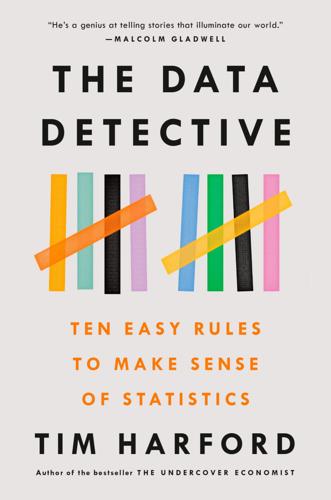
The Data Detective: Ten Easy Rules to Make Sense of Statistics
by
Tim Harford
Published 2 Feb 2021
Historians of science argue about the seriousness of this cherry-picking, ethically and practically. What seems clear is that if the scientific world had seen all of Millikan’s results, it would have had less confidence that his answer was right. That would have been no bad thing, because it wasn’t. Millikan’s answer was too low.6 The charismatic Nobel laureate Richard Feynman pointed out in the early 1970s that the process of fixing Millikan’s error with better measurements was a strange one: “One is a little bit bigger than Millikan’s, and the next one’s a little bit bigger than that, and the next one’s a little bit bigger than that, until finally they settle down to a number which is higher.
…
Mark Thornton, The Economics of Prohibition (Salt Lake City: University of Utah Press, 1991). 6. Esther Ingliss-Arkell, “Did a Case of Scientific Misconduct Win the Nobel Prize for Physics?,” Gizmodo, April 22, 2014, https://io9.gizmodo.com/did-a-case-of-scientific-misconduct-win-the-nobel-prize-1565949589. 7. Richard Feynman, “Cargo Cult Science,” transcript of speech at Caltech, 1974, http://calteches.library.caltech.edu/51/2/CargoCult.htm. 8. M. Henrion and B. Fischhoff, “Assessing Uncertainty in Physical Constants,” American Journal of Physics 54 (1986), 791–98, https://doi.org/10.1119/1.14447. 9. Author interview with Jonas Olofsson, January 22, 2020. 10.
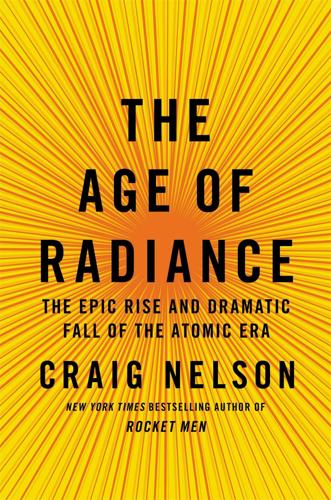
The Age of Radiance: The Epic Rise and Dramatic Fall of the Atomic Era
by
Craig Nelson
Published 25 Mar 2014
Emilio Segrè sent a letter to his wife back in California and included a strand of his hair. She opened the letter, the hair was missing, and that was how the physicists discovered their mail was being read. A number of the émigrés were additionally unhappy to be surrounded by a razor-wire fence, which reminded them of Nazi prison camps. Junior physicist Richard Feynman discovered, however, that workers had put a hole in the Los Alamos fence as a shortcut, and he enjoyed exiting the property through that hole and then coming in through the security entrance, so the guards would always see him arriving, but never departing. The kids, too, discovered every hole the fence had to offer, as well as a treasure pile of toys to play with—lab equipment left out in the trash.
…
He found that the Tennessee reactor employees thought they could use a small amount of water to contain the extract, having no idea the water would then become lethally radiant. They also didn’t realize that storing fuel in adjacent rooms against a shared wall could start a chain reaction. Segrè was horrified, and Oppenheimer sent in Richard Feynman to do a follow-up inspection. Feynman was told by his boss that, if the army refused to listen to the physicist, he should say, “Los Alamos cannot accept the responsibility for the Oak Ridge plant.” That suitably alarmed the army bureaucrats, and the physicists’ recommendations were followed.
…
Oppenheimer’s assistant Anne Wilson: “Feynman got his bongo drums out and led a snake dance through the whole Tech Area.” But a number woke up the following morning with hangovers, from both liquor and remorse. When Robert Wilson asked Oppenheimer why he seemed distressed, he replied, “I just keep thinking about all those poor little people.” Richard Feynman: “One man I remember, Bob Wilson, was just sitting there moping.” Bob Wilson told Feynman, “It’s a terrible thing that we made.” 8 My God, What Have We Done? ON May 25, 1945—two weeks after Germany’s surrender—Leo Szilard had an appointment to discuss the future of nuclear weapons with President Harry Truman at the White House.

Adaptive Markets: Financial Evolution at the Speed of Thought
by
Andrew W. Lo
Published 3 Apr 2017
But any virtue can become a vice when taken to an extreme, and the mathematization of finance was no exception. Finance isn’t physics, despite the similarities between the physics of heat conduction and the mathematics of derivative securities, for example. The difference is human behavior and the role of evolution in its development. The great physicist Richard Feynman, speaking at a Caltech graduation ceremony, once said, “Imagine how much harder physics would be if electrons had feelings.” The financial crisis showed us that investors, portfolio managers, and regulators do have feelings, even if those feelings were mostly disappointment and regret during the last few years.
…
Perhaps the cause was a leak in a liquid oxygen line, or an explosive bolt misfiring, or a flame burning through one of the solid booster rockets … Rumors abounded for weeks before NASA released more data.3 Six days after the disaster, President Reagan signed Executive Order 12546 establishing the Rogers Commission, an impressive fourteen-member panel of experts that included Neil Armstrong, the first person to walk on the moon; Nobel Prize-winning physicist Richard Feynman; Sally Ride, the first American woman in space; and legendary test pilot Chuck Yeager. On June 6, 1986, a little over five months after the disaster, after conducting scores of interviews, analyzing all the telemetry data from the shuttle’s flight, sifting through the physical wreckage recovered from the Atlantic Ocean, and holding several public hearings, the Rogers Commission concluded that the explosion was caused by the failure of the Shuttle’s now-infamous O-rings on the right solid fuel booster rocket.4 The O-rings were large rubber seals around the joints of the booster rocket, rather like the gasket on a faucet.
…
On June 6, 1986, a little over five months after the disaster, after conducting scores of interviews, analyzing all the telemetry data from the shuttle’s flight, sifting through the physical wreckage recovered from the Atlantic Ocean, and holding several public hearings, the Rogers Commission concluded that the explosion was caused by the failure of the Shuttle’s now-infamous O-rings on the right solid fuel booster rocket.4 The O-rings were large rubber seals around the joints of the booster rocket, rather like the gasket on a faucet. However, when exposed to cold temperatures, rubber becomes more rigid, and it no longer provides an effective seal. Richard Feynman demonstrated this in a simple but unforgettable way at a press conference. He dipped a perfectly flexible O-ring in ice water for a few minutes, took it out, and squeezed it. The O-ring broke apart. The Challenger launched on an unseasonably cold day in Florida—it was so cold that ice had built up on the Kennedy Space Center launch pads the night before—and the O-rings had apparently become stiff.
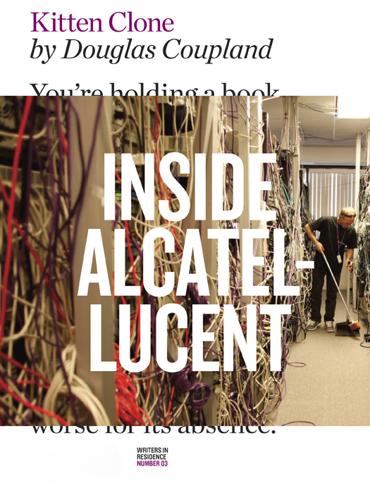
Kitten Clone: Inside Alcatel-Lucent
by
Douglas Coupland
Published 29 Sep 2014
A theoretical model is the quantum Turing machine, also known as the universal quantum computer. Quantum computers share theoretical similarities with non-deterministic and probabilistic computers, like the ability to be in more than one state simultaneously. The field of quantum computing was first introduced by Richard Feynman in 1982. Although quantum computing is still in its infancy, experiments have been carried out in which quantum computational operations were executed on a very small number of qubits (quantum bits). Both practical and theoretical research continues, and many national government and military funding agencies support quantum computing research to develop quantum computers for both civilian and national security purposes, such as cryptanalysis.

The Great Mental Models: General Thinking Concepts
by
Shane Parrish
Published 22 Nov 2019
These are my homage to the idea that we can benefit from understanding how the world works and applying that understanding to keep us out of trouble. The ideas in these volumes are not my own, nor do I deserve any credit for them. They come from the likes of Charlie Munger, Nassim Taleb, Charles Darwin, Peter Kaufman, Peter Bevelin, Richard Feynman, Albert Einstein, and so many others. As the Roman poet Publius Terentius wrote: “Nothing has yet been said that’s not been said before.” I’ve only curated, edited, and shaped the work of others before me. The timeless, broad ideas in these volumes are for my children and their children and their children’s children.
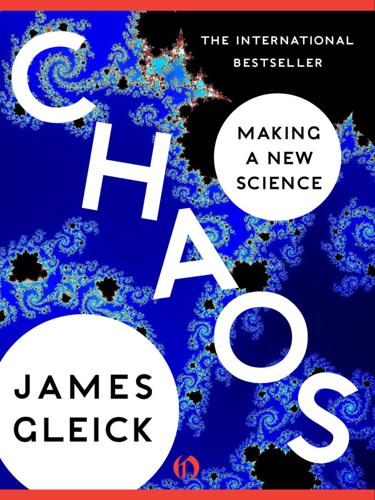
Chaos: Making a New Science
by
James Gleick
Published 18 Oct 2011
Renormalization had entered physics in the 1940s as a part of quantum theory that made it possible to calculate interactions of electrons and photons. A problem with such calculations, as with the calculations Kadanoff and Wilson worried about, was that some items seemed to require treatment as infinite quantities, a messy and unpleasant business. Renormalizing the system, in ways devised by Richard Feynman, Julian Schwinger, Freeman Dyson, and other physicists, got rid of the infinities. Only much later, in the 1960s, did Wilson dig down to the underlying basis for renormalization’s success. Like Kadanoff, he thought about scaling principles. Certain quantities, such as the mass of a particle, had always been considered fixed—as the mass of any object in everyday experience is fixed.
…
“There are rational numbers to mine, fractal sets, and all kinds of truly beautiful consequences,” she says. “So on the one hand, people are horrified, on the other they’re mesmerized.” She does chaos in curved space-time. Einstein would be proud. AS FOR ME, I never returned to chaos, but readers might spot seeds of all my later books in this one. I knew hardly anything about Richard Feynman, but he has a cameo here (see here). Isaac Newton has more than a cameo: he seems to be the antihero of chaos, or the god to be overthrown. I discovered only later, reading his notebooks and letters, how wrong I’d been about him. And for twenty years I’ve been pursuing a thread that began with something Rob Shaw told me, about chaos and information theory, as invented by Claude Shannon.
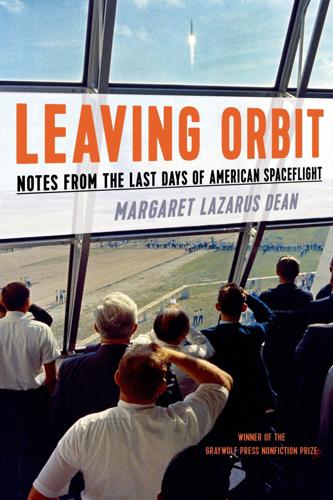
Leaving Orbit: Notes From the Last Days of American Spaceflight
by
Margaret Lazarus Dean
Published 18 May 2015
Months later, the presidential commission tasked with investigating Challenger issued its report. The cause of the explosion had been the solid rocket boosters, whose faulty design combined with the unseasonably cold weather in Florida to create a catastrophic failure. A picture in the paper showed Richard Feynman, a physicist who had worked on the Manhattan Project, smirking and holding up a piece of O-ring he’d been soaking in ice water to show that it became brittle. Sally Ride, also on the commission along with Neil Armstrong, sat a few seats away, looking pissed. She’d trusted her life to Challenger twice.
…
As was expected, the Columbia Accident Investigation Board (CAIB, pronounced “cabe” by insiders) found that the immediate cause of the disaster was a chunk of foam falling onto the tiles and that the organizational cause was a pattern of dismissing problems too easily, the “normalization of deviance” as Diane Vaughan put it so memorably in her study of Challenger. When a shuttle flew with a known issue and came back safely, the tendency among managers was to assume that the issue was not in fact a risk, using the previous success as “evidence.” “Try playing Russian roulette that way,” Richard Feynman remarked after Challenger. CAIB found that after a short period of vigilance, the same error of thinking had crept back into NASA decision making. The board stated in the report that “the causes of the institutional failure responsible for Challenger have not been fixed.” The return-to-flight mission after Columbia was on Discovery, as the return-to-flight mission had been after Challenger.
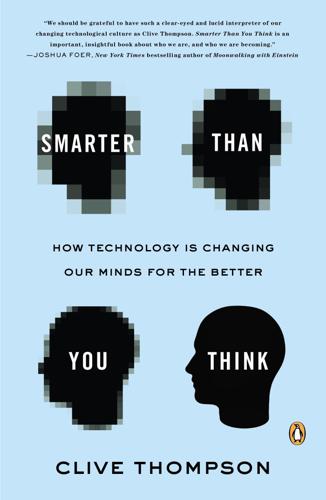
Smarter Than You Think: How Technology Is Changing Our Minds for the Better
by
Clive Thompson
Published 11 Sep 2013
“These resources enable us to pursue manipulations and juxtapositions of ideas and data that would quickly baffle the un-augmented brain,” as Andy Clark, a philosopher of the extended mind, writes. Granted, it can be unsettling to realize how much thinking already happens outside our skulls. Culturally, we revere the Rodin ideal—the belief that genius breakthroughs come from our gray matter alone. The physicist Richard Feynman once got into an argument about this with the historian Charles Weiner. Feynman understood the extended mind; he knew that writing his equations and ideas on paper was crucial to his thought. But when Weiner looked over a pile of Feynman’s notebooks, he called them a wonderful “record of his day-to-day work.”
…
“You can integrate your new ideas more easily, and thus harness your creativity more continuously, if you can quickly and flexibly change your working record,” he wrote. Engelbart was right. Studies show that when we use word processors we’re more iterative; we write our first drafts more quickly but then spend more time revising them. We do more of our thinking on the page, as Richard Feynman would have it, externalizing our thoughts first so that we can ponder them in front of us. Word processors and desktop publishing created a grassroots renaissance in print by making it easier for people to publish tiny, obsessive niche “zines,” the first blast of the DIY creativity that would later become routine on the Web.

The Future Is Faster Than You Think: How Converging Technologies Are Transforming Business, Industries, and Our Lives
by
Peter H. Diamandis
and
Steven Kotler
Published 28 Jan 2020
Affordable solar energy for everyone. Nanotechnology is the outer edge of materials science, the point where matter manipulation gets nano-small—that’s a million times smaller than an ant, eight thousand times smaller than a red blood cell, and two-and-a-half times smaller than a strand of DNA. The concept dates to physicist Richard Feynman’s 1959 speech, “There’s Plenty of Room at the Bottom,” but it was K. Eric Drexler’s 1987 book, Engines of Creation, that really put nanotechnology on the map. Drexler described self-replicating nanomachines—meaning very tiny machines that can build other machines. Because these machines are programmable, they can then be directed to produce more of themselves, or more of whatever else you’d like.
…
See: https://www.nrel.gov/docs/fy19osti/72399.pdf. Perovskite: Brian Wang, “First Commercial Perovskite Solar Late in 2019 and the Road to Moving the Energy Needle,” Next Big Future, February 3, 2019. See: https://www.nextbigfuture.com/2019/02/first-commercial-perovskite-solar-late-in-2019-and-the-road-to-moving-the-energy-needle.html. Richard Feynman’s 1959 speech, “There’s Plenty of Room at the Bottom”: Richard P. Feynman, “There’s Plenty of Room at the Bottom,” Engineering and Science, 1960. K. Eric Drexler’s 1987 book: Eric Drexler, Engines of Creation: The Coming Era of Nanotechnology (Anchor Library of Science) (Anchor Books, 1987). Researchers at Harvard built a nanoscale 3-D printer: Dan Ferber, “Printing Tiny Batteries, Wyss Institute,” June 18, 2013.

Super Thinking: The Big Book of Mental Models
by
Gabriel Weinberg
and
Lauren McCann
Published 17 Jun 2019
There was a lack of proper checks and balances at NASA. That was the root cause, the real reason the Challenger disaster occurred. As you can see, you can ask as many questions as you need in order to get to the root cause—five is just an arbitrary number. Nobel Prize–winning physicist Richard Feynman was on the Rogers Commission, agreeing to join upon specific request even though he was then dying of cancer. He uncovered the organizational failure within NASA and threatened to resign from the commission unless its report included an appendix consisting of his personal thoughts around root cause, which reads in part: It appears that there are enormous differences of opinion as to the probability of a failure with loss of vehicle and of human life.
…
That’s because mental models unlock the ability to think at higher levels. We hope that you’ve enjoyed reading about them, and that our book has helped you in your super thinking journey. Since many of these concepts may be new to you, you will need to practice using them to get the most out of them. As Richard Feynman famously wrote in his 1988 book, What Do You Care What Other People Think?, “I learned very early the difference between knowing the name of something and knowing something.” A related mental model is the cargo cult, as explained by Feynman in his 1974 Caltech commencement speech: In the South Seas there is a cargo cult of people.
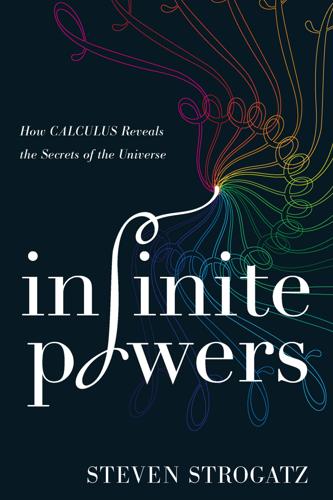
Infinite Powers: How Calculus Reveals the Secrets of the Universe
by
Steven Strogatz
Published 31 Mar 2019
We might not even have the Declaration of Independence. It’s a curiosity of history that the world was changed forever by an arcane branch of mathematics. How could it be that a theory originally about shapes ultimately reshaped civilization? The essence of the answer lies in a quip that the physicist Richard Feynman made to the novelist Herman Wouk when they were discussing the Manhattan Project. Wouk was doing research for a big novel he hoped to write about World War II, and he went to Caltech to interview physicists who had worked on the bomb, one of whom was Feynman. After the interview, as they were parting, Feynman asked Wouk if he knew calculus.
…
This, to me, is the greatest mystery of all: Why is the universe comprehensible, and why is calculus in sync with it? I have no answer, but I hope you’ll agree it’s worth contemplating. In that spirit, let me take you to the Twilight Zone for three final examples of the eerie effectiveness of calculus. Eight Decimal Places The first example takes us back to where we started, with Richard Feynman’s quip that calculus is the language God talks. The example is related to Feynman’s own work on an extension of quantum mechanics called quantum electrodynamics, or QED for short. QED is the quantum theory of how light and matter interact. It merges Maxwell’s theory of electricity and magnetism with Heisenberg’s and Schrödinger’s quantum theory and Einstein’s special theory of relativity.
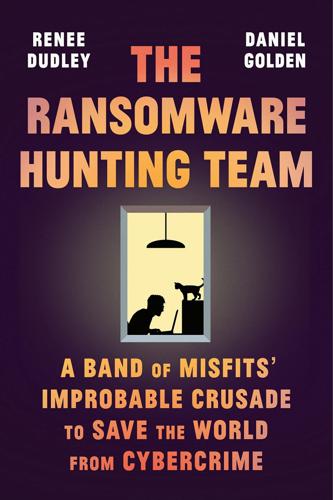
The Ransomware Hunting Team: A Band of Misfits' Improbable Crusade to Save the World From Cybercrime
by
Renee Dudley
and
Daniel Golden
Published 24 Oct 2022
I think that’s why I do really well in data analysis. The connections will just pop out. It’s almost like a dopamine hit every time you make a connection.” Many creative people—including famous artists, musicians, and scientists—have had the same type of synesthesia. The Nobel Prize–winning physicist Richard Feynman wrote that he saw mathematical equations “with light-tan j’s, slightly violet-bluish n’s, and dark brown x’s flying around.” Daniel had two roles on the team. One was finding malware samples. He wrote what are known as YARA rules, directing VirusTotal to search its gigantic database of malware for samples meeting the criteria.
…
“individuals whose personal information”: Suzanne R. Griffin, senior vice president and general counsel, Butterball, LLC, “Notice of Data Security Incident,” October 29, 2021. 5. THE PRICE OF OBSESSION Tang: Because Tang was a minor at the time, we are withholding her last name to protect her privacy. Richard Feynman wrote: Quoted in Chris Sasaki, “Colourful Language: U of T Psychologists Discover Enhanced Language Learning in Synesthetes,” University of Toronto News, May 15, 2019. $30 million in losses: “Two Iranian Men Indicted for Deploying Ransomware to Extort Hospitals, Municipalities, and Public Institutions, Causing over $30 Million in Losses,” U.S.

As the Future Catches You: How Genomics & Other Forces Are Changing Your Work, Health & Wealth
by
Juan Enriquez
Published 15 Feb 2001
And you could look at it on an atom-by-atom scale while figuring out what each atom is made of. Chad A. Mirkin, Seunghun Hong, and Jin Zhu, “Multiple Ink Nanolithography: Toward a Multiple-Pen Nano-Plotter,” Science, 286 (October 15, 1999): 523–25. 2. One of the great minds of the twentieth century, Richard Feynman, predicted this four decades ago. You can read his classic speech to the American Physical Society December 29, 1959, at www.zyvex.com/nanotech/feynman.html. You might also enjoy his book Surely You’re Joking, Mr. Feynman (New York: W.W. Norton, 1985). 3. There are alternative ways to power nano machines that may turn out to be easier to replicate, such as exothermic chemical reactions.

Giving the Devil His Due: Reflections of a Scientific Humanist
by
Michael Shermer
Published 8 Apr 2020
I am skeptical that this version of the multiverse will pan out, however, because the idea of there being multiple versions of me and you out there – and in an infinite universe there would be an infinite number of me and you – seems to me to be even less likely than the theistic alternative “God did it.” Still, as Richard Feynman famously quipped, “no one understands quantum mechanics,”26 so who am I to write off this theory considered legitimate by many quantum physicists? Brane and String Universes. Universes may be birthed when three-dimensional “branes” (a membrane-like structure on which our universe exists) moves through higher-dimensional space and collides with another brane, the result of which is the energized creation of another universe.27 A related multiverse is derived through string theory, which by at least one calculation allows for 10500 possible worlds, all with different self-consistent laws and constants.28 That’s a 1 followed by 500 zeros possible universes.
…
But it does strongly suggest that if your alternative explanation is based primarily on the cherry picking of data to fit only your hypothesis, and if it begins with a conclusion and works backward through the evidence to make it fit what you’d like to be true, it very likely means that you’re subject to the confirmation bias, which is a cognitive feature we are all subject to in which we look for and find confirming evidence for our beliefs and ignore or rationalize disconfirming evidence. Everyone does it. As the great Caltech physicist Richard Feynman once said, “The first principle is that you must not fool yourself – and you are the easiest person to fool.” Evidence for the confirmation bias abounds. In a classic 1981 experiment, for example, the psychologist Mark Snyder tasked subjects to assess the personality of someone whom they were about to meet, but only after they reviewed a profile of the person.
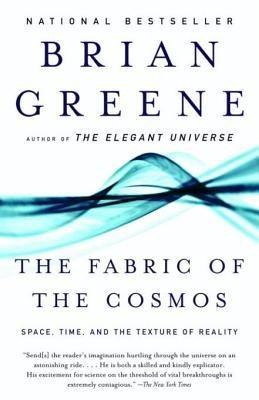
The Fabric of the Cosmos
by
Brian Greene
Published 1 Jan 2003
But as a teenager, and only more so in the decades since, I found that I couldn’t embrace Camus’ assertion that a deeper understanding of the universe would fail to make life more rich or worthwhile. Whereas Sisyphus was Camus’ hero, the greatest of scientists— Newton, Einstein, Niels Bohr, and Richard Feynman—became mine. And when I read Feynman’s description of a rose—in which he explained how he could experience the fragrance and beauty of the flower as fully as anyone, but how his knowledge of physics enriched the experience enormously because he could also take in the wonder and magnificence of the underlying molecular, atomic, and subatomic processes—I was hooked for good.
…
That is, it’s tempting to think of the waves emerging from the two slits as representing two possible histories for an individual electron—going through the left slit or going through the right slit—and since both waves contribute to what we observe on the screen, perhaps quantum mechanics is telling us that both potential histories of the electron contribute as well. Surprisingly, this strange and wonderful idea—the brainchild of the Nobel laureate Richard Feynman, one of the twentieth century’s most creative physicists—provides a perfectly viable way of thinking about quantum mechanics. According to Feynman, if there are alternative ways in which a given outcome can be achieved—for instance, an electron hits a point on the detector screen by traveling through the left slit, or hits the same point on the screen but by traveling through the right slit—then there is a sense in which the alternative histories all happen, and happen simultaneously.
…
So on the journey toward modern cosmology’s insights into time’s arrow, it’s worth our while not to rush through the landscape, but rather, to take a well-considered stroll through cosmic history. III SPACETIME AND COSMOLOGY 8 Of Snowflakes and Spacetime SYMMETRY AND THE EVOLUTION OF THE COSMOS Richard Feynman once said that if he had to summarize the most important finding of modern science in one sentence he would choose “The world is made of atoms.” When we recognize that so much of our understanding of the universe relies on the properties and interactions of atoms—from the reason that stars shine and the sky is blue to the explanation for why you feel this book in your hand and see these words with your eyes—we can well appreciate Feynman’s choice for encapsulating our scientific legacy.
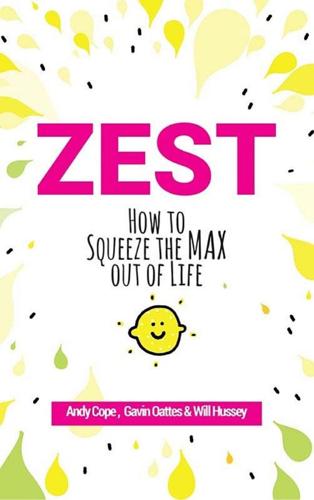
Zest: How to Squeeze the Max Out of Life
by
Andy Cope
,
Gavin Oattes
and
Will Hussey
Published 19 Jul 2019
The YOU we’re interested in is the one who’s aware that you’re a bunch of molecules that’s become aware that it’s a bunch of molecules. The awareness of self. The YOU that contemplates, reminisces, dreams, intuits and rationalizes. Yes, all the stuff that your average sea squirt cannot do. ‘The first principle is that you must not fool yourself – and you are the easiest person to fool.’ Richard Feynman This book is for the YOU who can stand in front of a mirror, look at your reflection and wonder who’s the one that’s aware that you’re looking at you? Who’s the one aware that you’re waving? If we can engage that person, your lovely wobbly imperfections will follow. Kool Rule 2 – You will be presented with lessons For the self-help aficionados you’ll recognize this as classic NLP territory (there are no mistakes, blah blah).
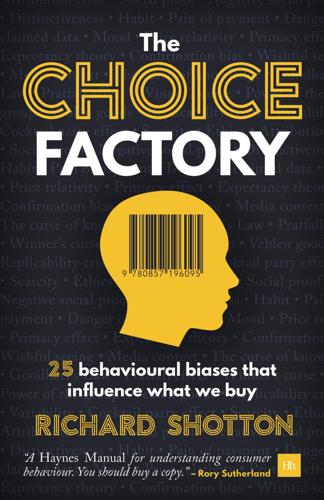
The Choice Factory: 25 Behavioural Biases That Influence What We Buy
by
Richard Shotton
Published 12 Feb 2018
It would be reasonable to expect that those due to speak about the Good Samaritan would be particularly likely to stop. But that wasn’t the case. The sermon topic made not a jot of difference. Context is crucial. But what particular context is not obvious. We need to subject our hypotheses to simple tests to see the effect on our brand, in our market. As the Nobel Laureate, Richard Feynman, said: It doesn’t matter how beautiful your theory is, it doesn’t matter how smart you are. If it doesn’t agree with experiments, it’s wrong. One social psychology theory that is both beautiful and supported by plenty of experimental evidence is social proof. It’s there we turn next. Bias 2: Social Proof Why popular brands become more popular still As you drive to the station you spot a huddle of pedestrians staring up at a tree.
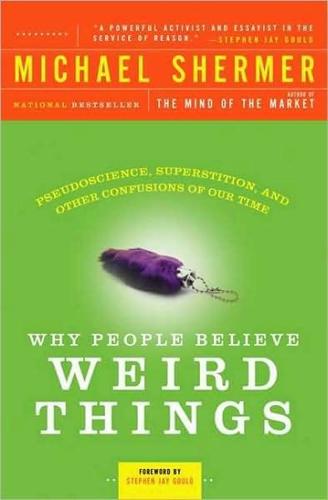
Why People Believe Weird Things: Pseudoscience, Superstition, and Other Confusions of Our Time
by
Michael Shermer
Published 1 Jan 1997
Whether a mistake is made honestly or dishonestly, whether a fraud is unknowingly or knowingly perpetrated, in time it will be flushed out of the system by lack of external verification. The cold fusion fiasco is a classic example of the system's swift exposure of error. Because of the importance of this self-correcting feature, among scientists there is at best what Caltech physicist and Nobel laureate Richard Feynman called "a principle of scientific thought that corresponds to a kind of utter honesty—a kind of leaning over backwards." Said Feynman, "If you're doing an experiment, you should report everything that you think might make it invalid—not only what you think is right about it: other causes that could possibly explain your results" (1988, p. 247).
…
The stories are all true, but cryonicists ignore all the revolutionary new ideas that were wrong. Unfortunately for cryonicists, past success does not guarantee future progress in any field. Cryonics presently depends on nanotechnology, the construction of tiny computer-driven machines. As Eric Drexler (1986) has shown, and Richard Feynman demonstrated as early as 1959, "There's plenty of room at the bottom" for molecular-size technologies. But theory and application are two different things, and a scientific conclusion cannot be based on what might be, no matter how logical it may seem or who endorses it. Until we have evidence, our judgment must remain, appropriately enough, suspended.
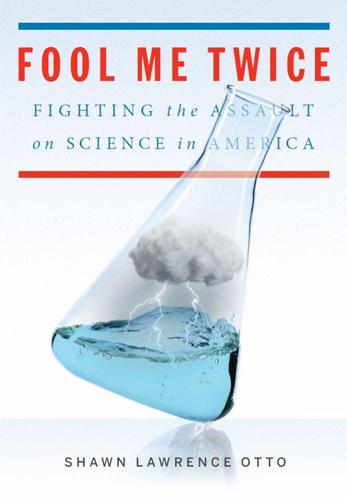
Fool Me Twice: Fighting the Assault on Science in America
by
Shawn Lawrence Otto
Published 10 Oct 2011
But people do not consider only facts when making decisions, when investing in the stock market, when choosing a mate, when buying a house—or when voting. This is an important difference between scientists—who are trained to set aside emotions and to adjust their worldview to a careful, detailed consideration of the evidence—and everybody else. Nobel Prize-winning physicist Richard Feynman put it very well when he said, “The only way to have real success in science … is to describe the evidence very carefully without regard to the way you feel it should be. If you have a theory, you must try to explain what’s good about it and what’s bad about it equally.”41 Bacon said the same thing, essentially, in Novum Organum.
…
For example, almost every advertisement you see is obviously designed, in some way or another, to fool the customer: The print that they don’t want you to read is small; the statements are written in an obscure way. It is obvious to anybody that the product is not being presented in a scientific and balanced way. Therefore, in the selling business, there’s a lack of integrity. —RICHARD FEYNMAN, 19881 THE SHADOW AAAS: THE ARMCHAIR ARMY OF ANTISCIENTISTS Freedom is the main driver of individualism in its relationship to democracy and to science, and that is the core message scientists need to stay focused on. That makes it ironic that many of the most pitched battles over science are being fought by people who proclaim the strength of their values of individualism and freedom quite loudly.
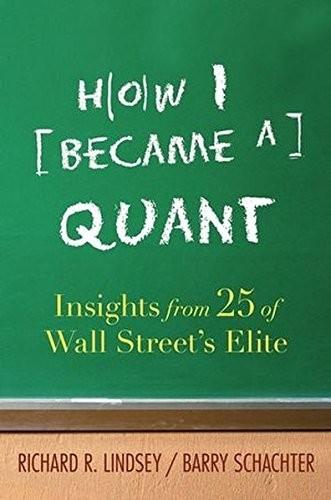
How I Became a Quant: Insights From 25 of Wall Street's Elite
by
Richard R. Lindsey
and
Barry Schachter
Published 30 Jun 2007
Putting It to the Test I graduated from MIT on schedule in the spring of 1987 and, having no thoughts other than to pursue my PhD, I found myself at Princeton that fall. I was surrounded by more Nobel-prize-winning physicists than I had ever imagined. This, after all, was the land of Albert Einstein and I myself was following in the footsteps on the great physicist Richard Feynman (he had also gone to MIT as an undergraduate). By October, I was as well-entrenched in class work as in research at Princeton’s premier radio-astronomy lab, where I was studying the nuances of millisecond pulsars. I had arrived. In fact, the intellectual aura at Princeton was somewhat intimidating; and as a first-year graduate student I was keenly aware some professors were known to grill students not just in class, but also during afternoon tea breaks, and even in the courtyard.
…
But after a couple of days they told me they couldn’t do it. I was struck by this because they were supposed to be the best. Well, given the situation and the fact that the pressure was off, I decided to take a stab at it. In general, I had no hope of solving these sorts of problems. I had read Richard Feynman’s autobiography Surely You Must be Joking Mr. Feynman, and in the book he recounts how he had a reputation for solving really hard integrals just like the one I was saddled with. He claimed that his reputation came largely from knowing a certain trick that no one else knew. I thought, wouldn’t it be cool if this worked for this problem?
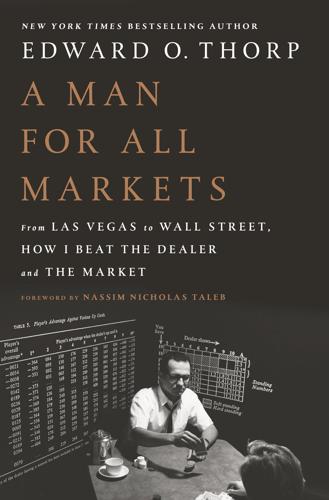
A Man for All Markets
by
Edward O. Thorp
Published 15 Nov 2016
The book I picked, A Survey of Modern Algebra by Birkhoff and MacLane, was legendary in the education of mathematicians. Each day I learned the material, then lectured on it the next. Vivian and I were invited to a house party by one of Tom Scott’s female friends from NCR. We were introduced to her boyfriend, Richard Feynman, who was sitting in an alcove, playing the bongo drums. A thirty-eight-year-old professor at Caltech, he was already regarded as one of the world’s most brilliant physicists. Feynman later won a Nobel Prize and subsequently commanded national attention when he publicly explained the tragic Challenger disaster that killed seven astronauts, using a glass of ice water and a rubber ring.
…
Assuming the truth of the story, even one of the world’s greatest physicists may not have realized that he needed a much larger bankroll to cover the risk he was taking. Understanding and dealing correctly with the trade-off between risk and return is a fundamental, but poorly understood, challenge faced by all gamblers and investors. If anyone knew whether physical prediction at roulette was possible, it should be Richard Feynman. I asked him, “Is there any way to beat the game of roulette?” When he said there wasn’t, I was relieved and encouraged. This suggested that no one had yet worked out what I believed was possible. With this incentive, I began a series of experiments. One evening not long after we married, Vivian’s parents arrived for dinner and I wasn’t there.

Presentation Zen Design: Simple Design Principles and Techniques to Enhance Your Presentations
by
Garr Reynolds
Published 14 Aug 2010
Even though the data is very simple, it takes more work to understand the numbers. The numbers in this simple bar chart are easy to read quickly, but the numbers become harder to see when a picture graph is used to show the same information. (Images in slides from iStockphoto.com.) You can always recognize truth by its beauty and simplicity. —Richard Feynman, physicist Stephen Few’s Graph Design IQ Test Stephen Few is one of the leading authorities in the field of data visualization and business intelligence. Through his company, Perceptual Edge, he focuses on the effective analysis and presentation of quantitative business information. Stephen is a remarkable presenter and a highly sought after speaker, trainer, and consultant.
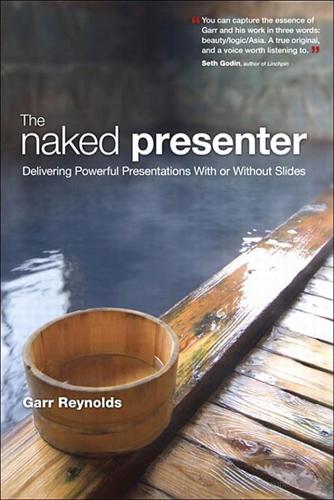
The Naked Presenter: Delivering Powerful Presentations With or Without Slides
by
Garr Reynolds
Published 29 Jan 2010
These barriers might include reading off notes, standing behind a lectern, failing to make good eye contact, speaking too softly, or using jargon or language that is formal, stiff, or fails to appeal to the audience’s emotion and natural curiosity. Now, some do believe that technical professionals and scientists are necessarily dry, boring speakers, unable to communicate the relevance of their work to the greater public. But this is not so. Richard Feynman, for example, was a brilliant Nobel Prize–winning scientist who was a passionate teacher and communicator, able to engage students and general audiences with great enthusiasm and clarity. Carl Sagan, of course, was known for his ability to talk clearly and passionately about the cosmos. Today, one of my favorite communicators—Neil deGrasse Tyson—is also a scientist.
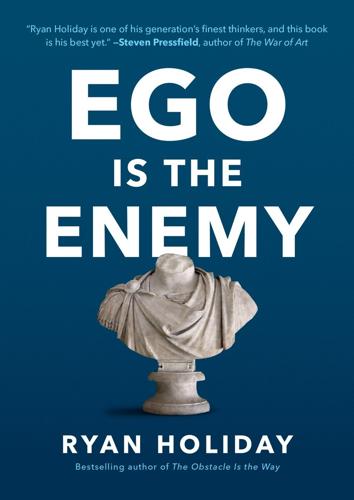
Ego Is the Enemy
by
Ryan Holiday
Published 13 Jun 2016
I hope you will be less invested in the story you tell about your own specialness, and as a result, you will be liberated to accomplish the world-changing work you’ve set out to achieve. INTRODUCTION The first principle is that you must not fool yourself—and you are the easiest person to fool. —RICHARD FEYNMAN Maybe you’re young and brimming with ambition. Maybe you’re young and you’re struggling. Maybe you’ve made that first couple million, signed your first deal, been selected to some elite group, or maybe you’re already accomplished enough to last a lifetime. Maybe you’re stunned to find out how empty it is at the top.
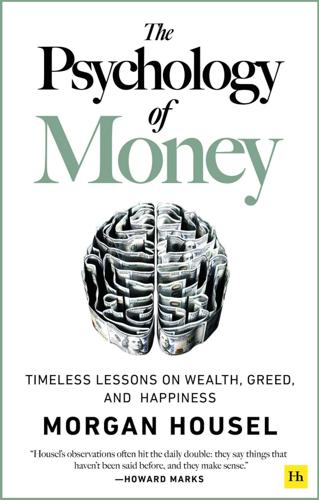
The Psychology of Money: Timeless Lessons on Wealth, Greed, and Happiness
by
Morgan Housel
Published 7 Sep 2020
And doctors—kidneys operate the same way in 2020 as they did in 1020. But investing is not a hard science. It’s a massive group of people making imperfect decisions with limited information about things that will have a massive impact on their wellbeing, which can make even smart people nervous, greedy and paranoid. Richard Feynman, the great physicist, once said, “Imagine how much harder physics would be if electrons had feelings.” Well, investors have feelings. Quite a few of them. That’s why it’s hard to predict what they’ll do next based solely on what they did in the past. The cornerstone of economics is that things change over time, because the invisible hand hates anything staying too good or too bad indefinitely.
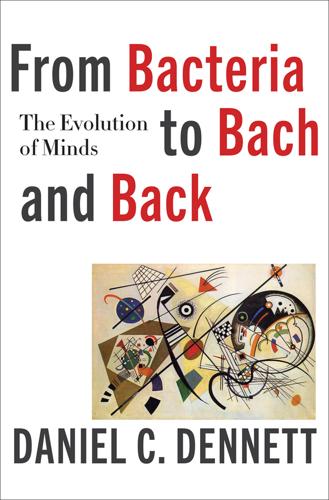
From Bacteria to Bach and Back: The Evolution of Minds
by
Daniel C. Dennett
Published 7 Feb 2017
Is arithmetic a sound system of calculation? Probably—so very probably that you can cheerfully bet your life on it. “Look Ma, no hands!” Civilization advances by extending the number of important operations we can perform without thinking about them. —Alfred North Whitehead What I cannot create, I do not understand. —Richard Feynman I have argued that the basic, bottom-up, clueless R&D done by natural selection has gradually created cranes—labor-saving products that make design work more effective—which have opened up Design Space for further cranes, in an accelerating zoom into the age of intelligent design, where top-down, reflective, reason-formulating, systematic, foresighted R&D can flourish.
…
Architects have begun using genetic algorithms to optimize the functional properties of buildings—for instance their strength, safety, use of materials, and use of light and energy. In scientific research, machine learning is being harnessed to solve, by brute force, problems that are simply beyond human analysis. It is noteworthy that the late Richard Feynman, brilliant theoretical physicist that he was, spent many of his last days exploring the use of supercomputers to solve problems in physics that defied his wizardry with equations. And he lived to see his maxim rendered more or less obsolete. While it may still be true that what you cannot create you cannot understand, creating something is no longer the guarantee of understanding that it used to be.
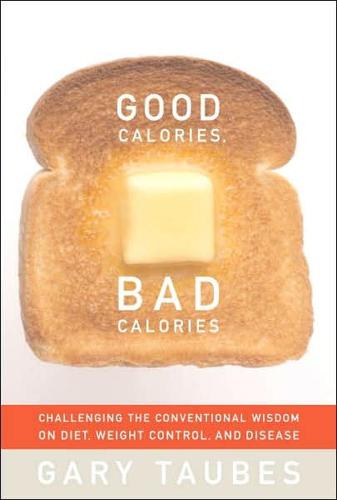
Good Calories, Bad Calories: Challenging the Conventional Wisdom on Diet, Weight Control, and Disease
by
Gary Taubes
Published 25 Sep 2007
I tried to do so using what I consider the fundamental requirement of good science: a relentless honesty in describing precisely what was done in any particular work, and a similar honesty in interpreting the results without distorting them to reflect preconceived opinions or personal preferences. “If science is to progress,” as the Nobel Prize–winning physicist Richard Feynman wrote forty years ago, “what we need is the ability to experiment, honesty in reporting results—the results must be reported without somebody saying what they would like the results to have been—and finally—an important thing—the intelligence to interpret the results. An important point about this intelligence is that it should not be sure ahead of time what must be.”
…
“Questions should be pursued about biological mechanisms that might help explain low [total cholesterol]: disease associations,” noted the report from the 1990 NHLBI workshop. Nonetheless, public-health recommendations to eat low-fat diets and lower cholesterol would remain inviolate and unconditional. In 1964, when the physicist Richard Feynman presented what would become a renowned series of lectures at Cornell University, he observed that it was a natural condition of scientists to be biased or prejudiced toward their beliefs. That bias, Feynman said, would ultimately make no difference, “because if your bias is wrong a perpetual accumulation of experiments will perpetually annoy you until they cannot be disregarded any longer.”
…
In this respect, it amplifies that famous opening line of Aristotle’s Metaphysics: “All men by nature desire to know.” Perhaps, but men of science by culture desire to know that what they know is really so. ROBERT MERTON, Behavior Patterns of Scientists, 1968 The first principle is that you must not fool yourself—and you are the easiest person to fool. RICHARD FEYNMAN, in his Commencement Address at Caltech, 1974 ON FEBRUARY 7, 2003, THE EDITORS OF Science published a special issue dedicated to the critical concerns of obesity research. It included four essays written by prominent authorities, all communicating the message of the toxic-environment hypothesis of the obesity epidemic and the belief that obesity is caused by “consuming more food energy than is expended in activity.”
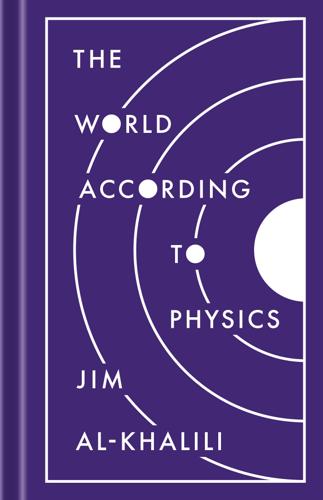
The World According to Physics
by
Jim Al-Khalili
Published 10 Mar 2020
Quantum mechanics is seen, quite rightly, as the most fascinating, yet at the same time most mind-boggling and frustrating scientific theory ever devised by humankind. In a particular segment of my lecture at the Ri, I discuss the famous ‘two-slit experiment’, which describes what the American physicist Richard Feynman called the ‘central mystery of quantum mechanics’. After outlining just how astonishing the results of the two-slit experiment are—subatomic particles, fired one by one through a screen with two narrow slits in it, behaving as though they each travel through both slits at once, and giving rise to an interference pattern on a second screen—I issued a challenge to my audience.
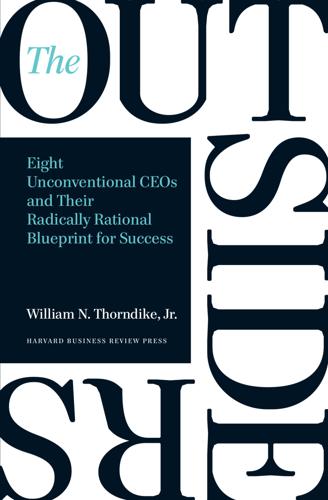
The Outsiders: Eight Unconventional CEOs and Their Radically Rational Blueprint for Success
by
William Thorndike
Published 14 Sep 2012
Instead, he attended MIT, where he earned bachelor’s, master’s, and PhD degrees in electrical engineering. Singleton programmed the first student computer at MIT as part of his doctoral thesis, and in 1939 won the Putnam Medal as the top mathematics student in the country (future winners would include the Nobel Prize–winning physicist Richard Feynman). He was also an avid chess player who was 100 points shy of the grandmaster level. After graduation from MIT in 1950, he worked as a research engineer at North American Aviation and Hughes Aircraft. He was then recruited by the legendary former Whiz Kid Tex Thornton, to Litton Industries, where, in the late 1950s, he invented an inertial guidance system that is still used in commercial and military aircraft.
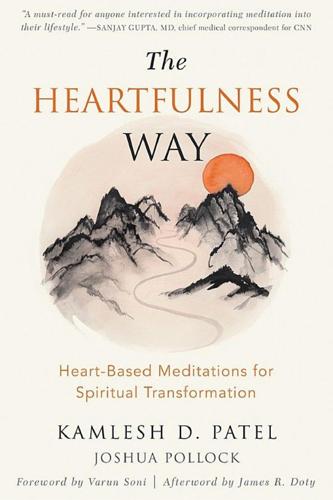
The Heartfulness Way: Heart-Based Meditations for Spiritual Transformation
by
Kamlesh D. Patel
and
Joshua Pollock
Published 31 May 2018
On top of that samskara, he now has a new one: the fear of snakes. “The formation of samskaras is progressive, you see. New ones are offshoots of previous ones. It is like the process by which we learn. If you don’t know the alphabet, you can’t possibly read Shakespeare. If you don’t know some physics, you can’t understand Richard Feynman. Similarly, what we make of the world around us depends upon our previous experiences.” “But not every impression comes as a result of our experiences,” I said. “For instance, in your example, a snakebite caused a person to develop a phobia of snakes. But phobias don’t always arise out of personal experience.
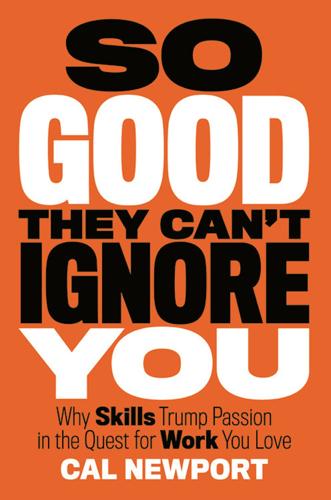
So Good They Can't Ignore You: Why Skills Trump Passion in the Quest for Work You Love
by
Cal Newport
Published 17 Sep 2012
The research driving Rule #2 taught me that these plateaus are dangerous because they cut off your supply of career capital and therefore cripple your ability to keep actively shaping your working life. As my quest continued, therefore, it became clear that I needed to introduce some practical strategies into my own working life that would force me to once again make deliberate practice a regular companion in my daily routine. According to popular legend, Richard Feynman, the Nobel Prize–winning theoretical physicist, scored only a slightly above-average IQ of 125 when he was tested in high school. In his memoirs, however, we find hints of how he rose from modest intelligence to genius, when he talks about his compulsion to tear down important papers and mathematical concepts until he could understand the concepts from the bottom up.

Logically Fallacious: The Ultimate Collection of Over 300 Logical Fallacies (Academic Edition)
by
Bo Bennett
Published 29 May 2017
Although I have met many people who seem not to have their own brain. This form of reasoning is invalid, therefore, fallacious. Exception: None. Quantum Physics Fallacy* Description: Using quantum physics in an attempt to support your claim, when in no way is your claim related to quantum physics. Perhaps the greatest mind in quantum physics, Richard Feynman, once said, “I think I can safely say that nobody understands quantum mechanics.” And he may be right. People recognize that this is perhaps the most bizarre, paradoxical, and incomprehensible area of study, that is also a respectable science. So, if you can manage to connect the truth of your argument to quantum physics, it would be unlikely that there would be many people who know enough about quantum physics to assert that your connection is invalid, thus your argument gains credibility out of ignorance.
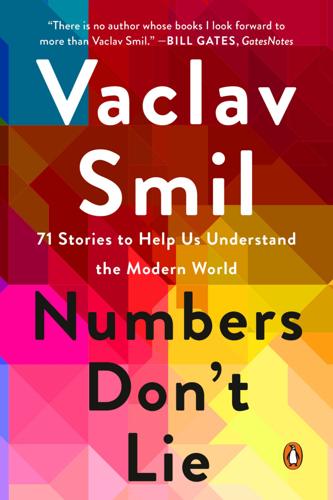
Numbers Don't Lie: 71 Stories to Help Us Understand the Modern World
by
Vaclav Smil
Published 4 May 2021
That represents an aggregate growth of eight orders of magnitude since 1965, averaging about 37 percent a year, with the number of components on a given area doubling about every two years. This means that in comparison with the latest capabilities, the equivalent performance during the mid-1960s would have required components 100 million times larger. As physicist Richard Feynman famously said, there’s plenty of room at the bottom. Moore’s Curse: Why technical progress takes longer than you think In 1965, Gordon Moore—at that time the director of R&D at Fairchild Semiconductor—noted that “the complexity for minimum component costs has increased at a rate of roughly a factor of two per year . . .
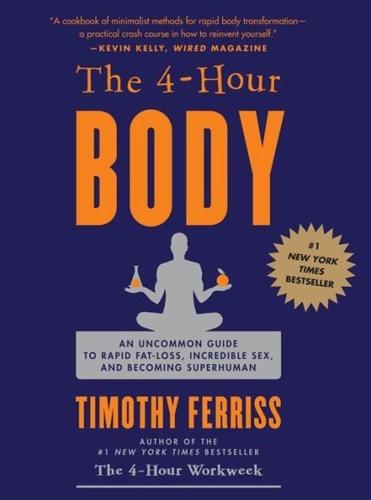
The 4-Hour Body: An Uncommon Guide to Rapid Fat-Loss, Incredible Sex, and Becoming Superhuman
by
Timothy Ferriss
Published 1 Dec 2010
Useful for both sports training and minimizing stage fright. End of Chapter Notes 5. I know nothing of this type of behavior, of course. ON LONGER AND BETTER LIFE LIVING FOREVER Vaccines, Bleeding, and Other Fun There is nothing in biology yet found that indicates the inevitability of death. —Richard Feynman, co-recipient of 1965 Nobel Prize in Physics Not life, but good life, is to be chiefly valued. —Socrates This will be the shortest chapter on life-extension ever written. Let it begin, as all good short chapters do, with a story of two monkeys: Canto and Owen. Housed at the University of Wisconsin, these two rhesus monkeys are as close to identical as possible, with one exception.
…
Since I am not a woman, this test was found from a non-Hunter source: http://www.anylabtestnow.com/Tests/Female_Tests.aspx MUSCLES OF THE BODY (PARTIAL) THE VALUE OF SELF-EXPERIMENTATION All life is an experiment. The more experiments you make the better. —Ralph Waldo Emerson It doesn’t matter how beautiful your theory is, it doesn’t matter how smart you are. If it doesn’t agree with experiment, it’s wrong. —Richard Feynman This chapter was written by Dr. Seth Roberts, professor emeritus of psychology at the University of California–Berkeley and professor of psychology at Tsinghua University. His work has appeared in the New York Times Magazine and The Scientist, and he is on the editorial board of the journal Nutrition.

The Singularity Is Nearer: When We Merge with AI
by
Ray Kurzweil
Published 25 Jun 2024
Also, the size of the human brain limits its total processing power to, at most, about 1014 operations per second, according to my estimate in The Singularity Is Near—which is within an order of magnitude of Hans Moravec’s estimate based on a different analysis.[49] The US supercomputer Frontier can already top 1018 operations per second in an AI-relevant performance benchmark.[50] Because computers can pack transistors more densely and efficiently than the brain’s neurons, and because they can both be physically larger than the brain and network together remotely, they will leave unaugmented biological brains in the dust. The future is clear: minds based only on the organic substrates of biological brains can’t hope to keep up with minds augmented by nonbiological precision nanoengineering. The first reference to nanotechnology was made by the physicist Richard Feynman (1918–1988) in his seminal 1959 lecture “There’s Plenty of Room at the Bottom,” in which he described the inevitability of creating machines at the scale of individual atoms, as well as the profound implications of doing so.[51] As Feynman said: “The principles of physics, as far as I can see, do not speak against the possibility of maneuvering things atom by atom….
…
BACK TO NOTE REFERENCE 48 Ray Kurzweil, The Singularity Is Near (New York: Viking, 2005), 125; Moravec, Mind Children, 59. BACK TO NOTE REFERENCE 49 “June 2022,” Top500.org, accessed October 20, 2022, https://www.top500.org/lists/top500/2022/06. BACK TO NOTE REFERENCE 50 For an essay closely adapted from Feynman’s December 29, 1959, lecture, see Richard Feynman, “There’s Plenty of Room at the Bottom,” Engineering and Science 23, no. 5 (February 1960): 22–26, 30–36, http://calteches.library.caltech.edu/47/2/1960Bottom.pdf. BACK TO NOTE REFERENCE 51 Feynman, “There’s Plenty of Room at the Bottom,” 22–26, 30–36. BACK TO NOTE REFERENCE 52 John von Neumann, Theory of Self-reproducing Automata (Urbana, IL: University of Illinois Press, 1966), https://archive.org/details/theoryofselfrepr00vonn_0/mode/2up; John G.

Hit Refresh: The Quest to Rediscover Microsoft's Soul and Imagine a Better Future for Everyone
by
Satya Nadella
,
Greg Shaw
and
Jill Tracie Nichols
Published 25 Sep 2017
In a quantum world, some researchers speculate that there will be no barrier between our brains and computing. It’s a long way off, but might consciousness one day merge with computation? “If quantum mechanics hasn’t profoundly shocked you, you haven’t understood it yet,” the Danish Nobel physicist Niels Bohr once said. A later Nobel physicist, Richard Feynman, proposed the notion of quantum computing, unleashing today’s global pursuit to harness quantum mechanics for computation. Among those racing to understand it are Microsoft, Intel, Google, and IBM as well as startups like D-Wave and even governments with hefty national defense budgets. The shared hope is that quantum computing will utterly transform the physics of computing itself.
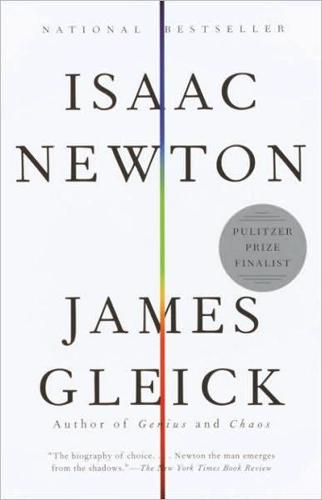
Isaac Newton
by
James Gleick
Published 1 Jan 2003
—Financial Times James Gleick ISAAC NEWTON James Gleick is an author, reporter, and essayist. His writing on science and technology—including Chaos, Genius, Faster, and What Just Happened—has been translated into thirty languages. He lives in New York. ALSO BY JAMES GLEICK Chaos: Making a New Science Genius: The Life and Science of Richard Feynman Faster: The Acceleration of Just About Everything What Just Happened: A Chronicle from the Information Frontier Isaac Newton at forty-six, portrait by Sir Godfrey Kneller, 1689 (illustration credit Frontispiece) FIRST VINTAGE BOOKS EDITION, JUNE 2004 Copyright © 2003 by James Gleick All rights reserved under International and Pan-American Copyright Conventions.

The Secret War Between Downloading and Uploading: Tales of the Computer as Culture Machine
by
Peter Lunenfeld
Published 31 Mar 2011
How meaning manifests itself via the culture machine often links directly back into the specific histories of the individual media being simulated, and their traditions of authorship and reception. What follows here catalogs some of the strategies that these media have followed in this new era. T SIDEBAR The Soviet Man Who Fell to Earth Of all the delightful thought experiments that theoretical physics has given birth to, from Erwin Schrödinger’s cat to Richard Feynman’s Brownian ratchet, my favorite is Albert Einstein’s “twins paradox.”4 This story of two brothers explains the 49 CHAPTER 3 relativity of space and time. The first brother travels into space, while the other stays on Earth. The space farer is on a fast rocket and goes on a ten-year journey.
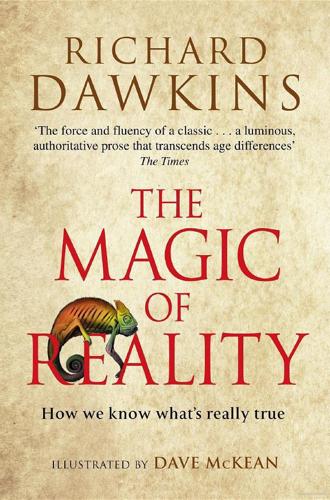
The Magic of Reality: How We Know What's Really True
by
Richard Dawkins
Published 3 Oct 2011
And before you know where you are, the ‘approximately’ and the ‘somewhere around’ get left out of the story as it does the rounds until it becomes: ‘She died at exactly 3 a.m., and that is exactly the moment when my cousin’s friend’s wife’s granddaughter was dreaming about her.’ Sometimes we can actually pin down the explanation of a weird coincidence. A great American scientist called Richard Feynman tragically lost his wife to tuberculosis, and the clock in her room stopped at precisely the moment she died. Goose-pimples! But Dr Feynman was not a great scientist for nothing. He worked out the true explanation. The clock was faulty. If you picked it up and tilted it, it tended to stop. When Mrs Feynman died, the nurse needed to record the time for the official death certificate.
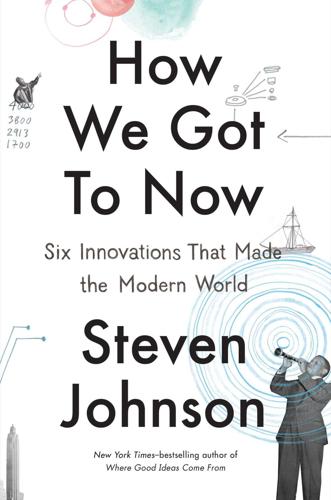
How We Got to Now: Six Innovations That Made the Modern World
by
Steven Johnson
Published 28 Sep 2014
It may be more intuitive to keep historical narratives on the scale of individuals or nations, but on some fundamental level, it is not accurate to remain between those boundaries. History happens on the level of atoms, the level of planetary climate change, and all the levels in between. If we are trying to get the story right, we need an interpretative approach that can do justice to all those different levels. The physicist Richard Feynman once described the relationship between aesthetics and science in a similar vein: I have a friend who’s an artist and has sometimes taken a view which I don’t agree with very well. He’ll hold up a flower and say “Look how beautiful it is,” and I’ll agree. Then he says “I as an artist can see how beautiful this is but you as a scientist take this all apart and it becomes a dull thing,” and I think that he’s kind of nutty.
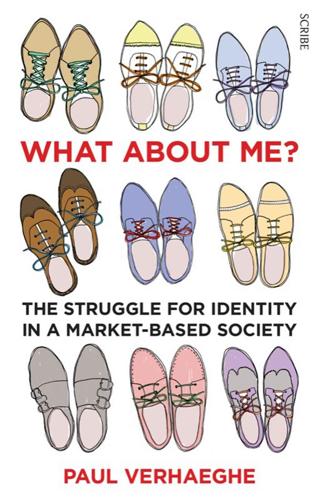
What About Me?: The Struggle for Identity in a Market-Based Society
by
Paul Verhaeghe
Published 26 Mar 2014
The leap from proteins to behaviour is gigantic, and as things stand we have no idea how to bridge the divide. The metaphorical ‘explanations’ that we take to be true merely illustrate the dominance of a certain scientific conviction during a certain period. As the Nobel prize–winning physicist Richard Feynman so elegantly put it, there’s a ‘difference between knowing the name of something and knowing something’. As is so often the case, it’s easier to say what something isn’t. Decisions are steered by gut feelings, but not according to some algorithmic system that responds to input in a set way. If that were true, our behaviour would be extremely predictable, and that clearly isn’t the case.
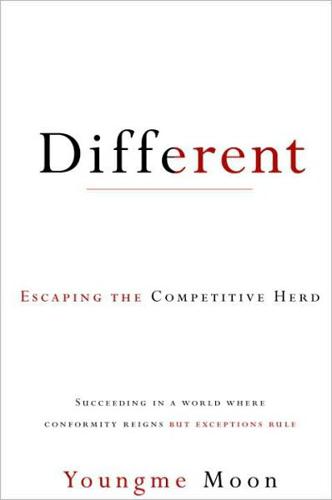
Different: Escaping the Competitive Herd
by
Youngme Moon
Published 5 Apr 2010
Imagine if you were to go to a dinner party only to discover that al of the guests had decided to present their stories in PowerPoint format. Yes, the evening would be informative, but it would also be a bore. When I was in col ege, I remember reading a book by the Nobel Prize–winning physicist Richard Feynman, entitled Surely You’re Joking, Mr. Feynman! What was interesting about the book was that it appeared to be nothing more than a compilation of rambling anecdotes—about his personal life, his teaching, his work. And yet the weight of these anecdotes crept up on you, so that by the time you finished the book it was impossible to regard it as anything less than a finely honed indictment of the scientific discipline.
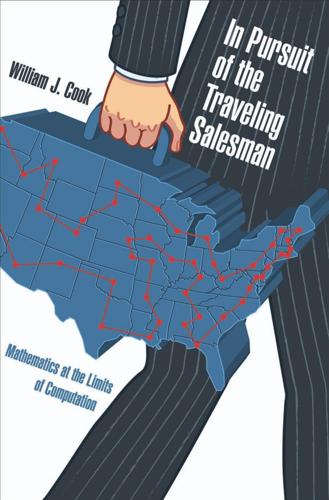
In Pursuit of the Traveling Salesman: Mathematics at the Limits of Computation
by
William J. Cook
Published 1 Jan 2011
Quantum Computers DNA, bacteria, amoeba, and optical TSP solvers all have an all-tours-atonce aspect, but they also require resources that grow exponentially with the number of cities. For a genuine Saunt Grod’s machine, we may need to leave behind biology and classical physics. Indeed, a more likely candidate arises through the adoption of properties of quantum mechanics, first proposed for use in computing devices by Richard Feynman. The basic component of a quantum computing device is the qubit, an unusual analog of the 0/1-bits used to represent information on classical computers. A qubit can hold the value 0 or the value 1, but it can also take on both these values simultaneously. Some magic via quantum mechanics gives the real possibility of examining all TSP tours at once: if we have 100 qubits, then together they can simultaneously encode 2100 possibilities.
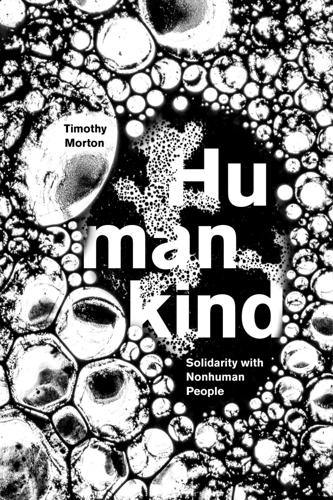
Humankind: Solidarity With Non-Human People
by
Timothy Morton
Published 14 Oct 2017
Spectral humankind, in recovery from the Severing, is able to talk to Severed humankind, its very own self. And it does this from a futural mode that is truly a dimension that haunts and scoops out the present from the inside. Because the non-Severed symbiotic real is … well, real. It is ongoing. Quanta are described by Richard Feynman as “tiny jiggling things,” and it’s quantum data that humans need. They need to find it in a black hole, which is a terribly serious-seeming, non-wiggly thing. But if gravity is like the other forces, it must be quantized. It must come in tiny jiggling blobs of energy—gravitons. Perhaps gravity is not grave after all.
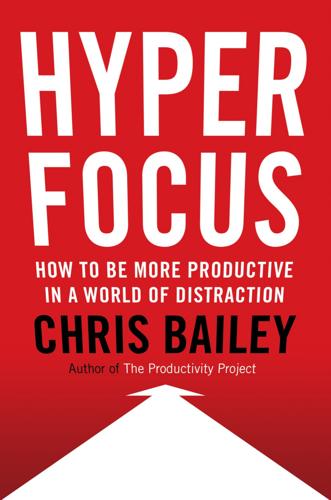
Hyperfocus: How to Be More Productive in a World of Distraction
by
Chris Bailey
Published 31 Jul 2018
Archimedes figured out how to calculate the volume of an irregular object when he noticed his bathwater overflowing. Newton came up with his theory of gravity when he saw an apple fall from a tree—probably the best-known insight trigger in history. For his habitual scatterfocus routine, renowned physicist and Nobel laureate Richard Feynman would sip 7UP at a topless bar, where he could “‘watch the entertainment,’ and, if inspiration struck, scribble equations on cocktail napkins.” CONNECTING EVEN MORE DOTS Simply entering habitual scatterfocus mode will enable you to experience the remarkable benefits I’ve covered so far.
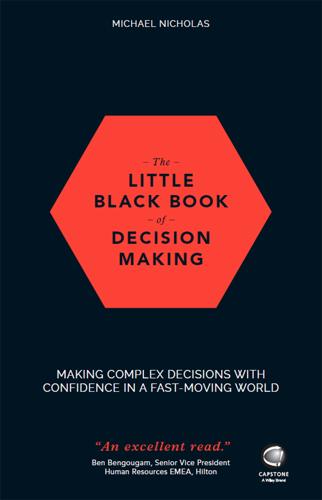
The Little Black Book of Decision Making
by
Michael Nicholas
Published 21 Jun 2017
The consensus of its members was that the disintegration of the vehicle began after the failure of a seal between two segments of the right solid rocket booster (SRB). Specifically, two rubber O-rings designed to prevent hot gases from leaking through the joint during the rocket motor's propellant burn failed due to cold temperatures on the morning of the launch. One of the commission's members, theoretical physicist Richard Feynman, even demonstrated during a televised hearing how the O-rings became less resilient and subject to failure at the temperatures that were experienced on the day by immersing a sample of the material in a glass of iced water. There is no evidence that any other component of the space shuttle contributed to the failure.
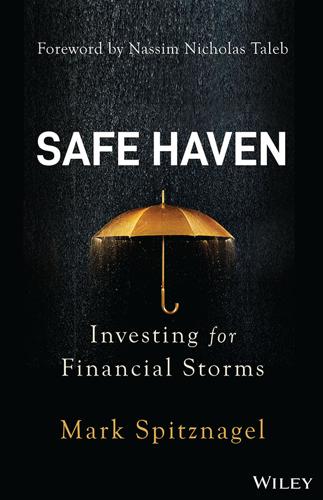
Safe Haven: Investing for Financial Storms
by
Mark Spitznagel
Published 9 Aug 2021
We need to measure our success as investors by the practical scoreboard that counts, rather than the theoretical ones that don't. And there is just one scoreboard that counts, just one bullseye. But we are often lured away from such practical objectives by gratuitous mathematical formulas. Modern quantitative finance suffers from a certain science or physics envy. After all, according to the American physicist Richard Feynman, “Physics is like sex: sure, it may give some practical results, but that's not why we do it.” Well, practical results are precisely why we do what we do in investing and risk mitigation: to maximize the growth rate of wealth by lowering risk. And the best practices of the scientific method can actually help us with this.

Whistleblower: My Journey to Silicon Valley and Fight for Justice at Uber
by
Susan Fowler
Published 18 Feb 2020
I asked him what I needed to study in order to know everything that scientists knew about the universe, and I truly meant everything. He encouraged me to study physics, and told me about the mathematics and physics courses I would need to take for a physics major. Before I left, he suggested I read Richard Feynman’s Lectures on Physics. I didn’t understand everything in Feynman’s Lectures, but I understood enough that I knew I needed to study physics. Eager and excited, I tried to sign up for physics courses the following semester, but wasn’t able to, because I didn’t have any of the prerequisites. I went to the registrar and asked if I could register for math and physics courses and double major in philosophy and physics.
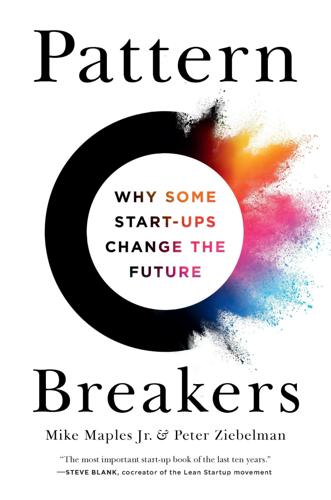
Pattern Breakers: Why Some Start-Ups Change the Future
by
Mike Maples
and
Peter Ziebelman
Published 8 Jul 2024
That’s the topic we will turn to next. Part II Pattern-Breaking Actions Unconventional Tactics to Make Breakthroughs Real 8 BEFORE YOU CROSS THE RUBICON The Implementation Stress Test We are trying to prove ourselves wrong as quickly as possible, because only in that way can we find progress. —Richard Feynman, theoretical physicist Let’s recap our journey so far. Breakthrough ideas come from authentically living in the future and understanding it far better than most, noticing powerful inflections you encounter there, and discovering a nonobvious insight that can lead to a radical change in how people will someday think, feel, and act.
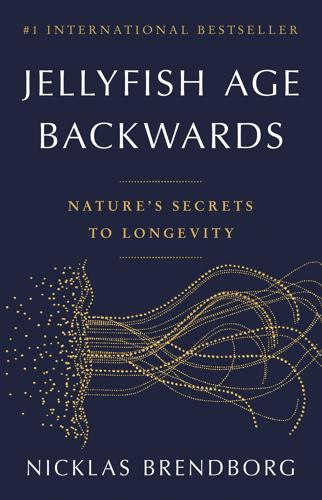
Jellyfish Age Backwards: Nature's Secrets to Longevity
by
Nicklas Brendborg
Published 17 Jan 2023
A study claiming that chocolate is actually healthy will be celebrated on the rooftops. Meanwhile, the twenty contradicting studies will be forgotten. It’s a lot easier to convince people of something that is convenient or pleasurable; our rationalising brain will grasp at any opportunity to justify eating more chocolate. But as the famous physicist Richard Feynman said: ‘The first principle is that you must not fool yourself – and you are the easiest person to fool.’ Alongside these obvious problems, however, there are also some more subtle issues that we need to be aware of if we want to eat our way to a long life. During the Second World War, the American and Japanese militaries built airbases on several South Pacific islands.
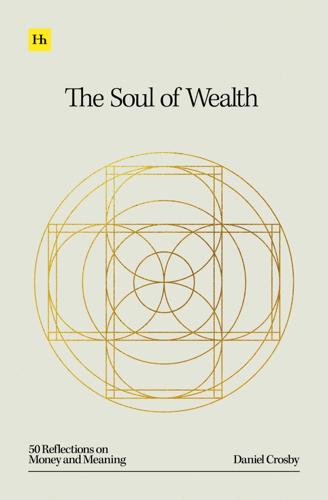
The Soul of Wealth
by
Daniel Crosby
Published 19 Sep 2024
Just as in addiction recovery, the first step is acknowledging that there is a problem, yet those who are overconfident often overlook the very factors that hinder their progress. Fortunately, there exists a dependable approach to reveal our blind spots—one that’s free, simple, and as old as time itself: teaching. Famed physicist Richard Feynman had a powerful method underscoring the difference between what we think we know and what we actually know. Feynman was a Nobel laureate esteemed for his contributions to quantum mechanics and quantum electrodynamics. I’d say this guy knew his craft cold. He was invited to teach at Caltech in the 1960s, and took them up on the offer.

Atomic Accidents: A History of Nuclear Meltdowns and Disasters: From the Ozark Mountains to Fukushima
by
James Mahaffey
Published 15 Feb 2015
They had been given the talk, but it had mentioned only the problem of stacking metal bricks, and they had no idea that water diluting the active substance only made it easier to produce a runaway reaction. The accumulating stores of wet uranium at Oak Ridge were on the verge of disaster. Oppenheimer responded to Segré’s grim report by dispatching his best man, Richard Feynman, immediately to the scene. Feynman was only 27 years old, the youngest group leader in the mass of heavy thinkers gathered at Los Alamos. Working under the director of the theoretical division, Hans Bethe, he was one of the few natural-born Americans on the T-section payroll. He grew up in Far Rockaway, New York, and earned his physics degrees at MIT and Princeton.
…
It was probably closer to 40,000 rem or 400 sieverts, which would drop an elephant. 57 If you are amazed by some of the detailed information available concerning Soviet nuclear work, read an example of glasnost in the Proceedings of ICNC’95, Vol. 1, pp. 4.44-4.47, “Criticality Measurements at VNIITF Review,” V.A. Teryokhin, V.V. Pereshogin, and Yu.A. Sokolov. Chapter 3 A Bit of Trouble in the Great White North “A scientist need not be responsible for the entire world. Social irresponsibility might be a reasonable stance.” —advice given to young physicist Richard Feynman by mathematician Johnny von Neumann The decade of the nineteen-fifties is often cited as a dull period of time, lacking the excitement and colorful excesses of the following decade, the sixties. The sixties exploded with John Kennedy, the Beatles, recreational pharmaceuticals, space travel, and hippies.
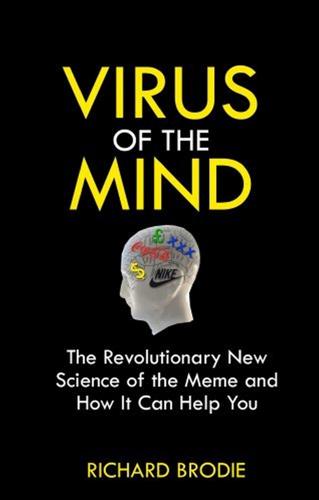
Virus of the Mind
by
Richard Brodie
Published 4 Jun 2009
Now let’s take a detailed look at the subject that forms the core of evolutionary psychology and eternally one of our favorite topics: sex. ttt 88 C hapter six S ex : The Root of A ll Evolution “Science is a lot like sex. Sometimes something useful comes of it, but that’s not the reason we’re doing it.” — Richard Feynman The most fascinating discovery of the new field of evolutionary psychology is the central role that sex plays, and has played, in shaping our modern behavior and culture. Weaving a twisted path connecting Freud, male chauvinism, puritanism, and womanizing, evolutionary psychology explains the complexity and contradiction inherent in human behavior as never before.

Makers
by
Chris Anderson
Published 1 Oct 2012
Why do all industries not enjoy this pace of improvement? Because semiconductors are still a relatively new field in the long arc of scientific research. They are built on the quantum mechanics and material science breakthroughs of the early twentieth century, a remarkable period of discovery that opened an entirely new domain of physics. As Richard Feynman famously said, “there’s a lot of room at the bottom,” at the atomic level of matter, and we’re still just beginning to plumb it. What is the analogy for manufacturing? Nothing so grand as a new physics. Instead, it is simply the combination of the technologies that the original Moore’s Law brought us: computers, digital information, the Internet, and, most important of all, connected people.
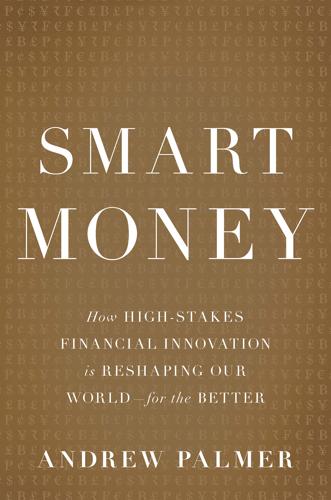
Smart Money: How High-Stakes Financial Innovation Is Reshaping Our WorldÑFor the Better
by
Andrew Palmer
Published 13 Apr 2015
The hypothesis posits that market prices incorporate all the publicly available information on a given security and that people respond rationally to this information. The desire to make simplifying assumptions is understandable in finance—“Can you imagine how hard physics would be if electrons had feelings?” is the question Richard Feynman, a physicist, once asked—but this one takes the cake. Humans are not always rational, and markets are swayed by sentiment as much as logic. Instead of the efficient-market hypothesis, Lo champions something called the “adaptive-market hypothesis,” which takes the world as it is rather than as it should be.

The (Honest) Truth About Dishonesty: How We Lie to Everyone, Especially Ourselves
by
Dan Ariely
Published 27 Jun 2012
We’re storytelling creatures by nature, and we tell ourselves story after story until we come up with an explanation that we like and that sounds reasonable enough to believe. And when the story portrays us in a more glowing and positive light, so much the better. Cheating Myself In a commencement speech at Cal Tech in 1974, the physicist Richard Feynman told graduates, “The first principle is that you must not fool yourself—and you are the easiest person to fool.” As we have seen so far, we human beings are torn by a fundamental conflict—our deeply ingrained propensity to lie to ourselves and to others, and the desire to think of ourselves as good and honest people.
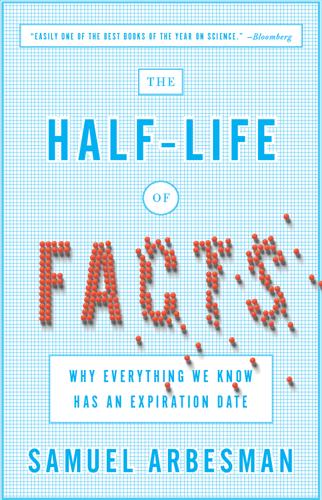
The Half-Life of Facts: Why Everything We Know Has an Expiration Date
by
Samuel Arbesman
Published 31 Aug 2012
The Erdo˝s-Rényi random graph, written about by Paul Erdo˝s and Alfréd Rényi in 1960, was first examined in 1941 by Paul Flory, the chemist and Nobel laureate. As Stigler’s Law of Eponymy states: “No scientific law is named after its discoverer.” Naturally, Stephen Stigler attributes this law to Robert Merton. Extreme cases of this can especially be found during times of war. Richard Feynman, the celebrated physicist, shared the Nobel Prize with two other physicists, including Sin-Itiro Tomonaga. Tomonaga’s work was conducted in Japan during World War II, so even though Feynman later reached similar results, Tomonaga’s work at the same time did not spread to the scientific world or to the West.
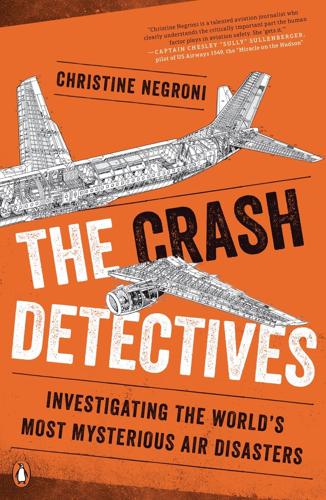
The Crash Detectives: Investigating the World's Most Mysterious Air Disasters
by
Christine Negroni
Published 26 Sep 2016
This book is a part of that evolution as I hypothesize about MH-370 and other disasters that have mystified the world. PART ONE Mystery I have approximate answers and possible beliefs and different degrees of uncertainty about different things. —NOBEL PRIZE–WINNING THEORETICAL PHYSICIST RICHARD FEYNMAN The Clipper On the last leg of a journey halfway around the world, Pan American Airways captain Leo Terletsky began to worry. And when Captain Terletsky worried, everybody else on the flight deck worried, too. “His anxiety caused him to shout at copilots, issue orders and immediately countermand them.
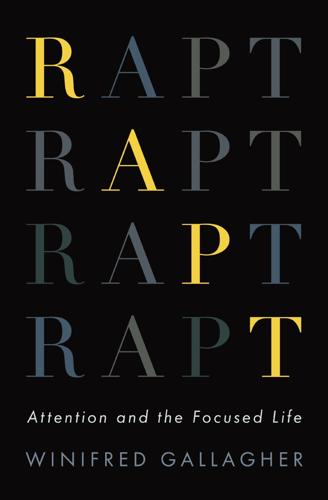
Rapt: Attention and the Focused Life
by
Winifred Gallagher
Published 9 Mar 2009
Given a hard problem to figure out—the nature of gravity, perhaps—most people might think about it for a while, then get tired and forget about it. A genius such as Isaac Newton, however, has enough “mental energy” to pay rapt attention to the same thing for a long time without wavering: “I keep the subject constantly before me and wait until the first dawnings open little by little before me into the full light.” His modern successor, Richard Feynman, had a similarly protean absorption in his subject. Upon presenting their presumably new, hard-won theories, his colleagues often found that the legendary physicist had done the math many years before and not even bothered to publish the results. As one peer put it, “Feynman had signed the guest book and already left.”
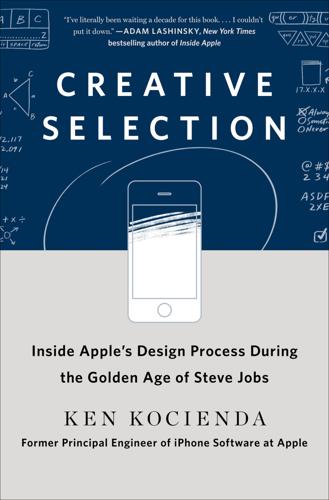
Creative Selection: Inside Apple's Design Process During the Golden Age of Steve Jobs
by
Ken Kocienda
Published 3 Sep 2018
Form should follow function, even though this might seem like a strange notion for pixels on a screen, but it’s not if you believe the appearance of a product should tell you what it is and how to use it. Objects should explain themselves. It’s impossible to overstate how much this matters, and to illustrate, I’ll draw a comparison. Near the beginning of Atoms in Motion, Richard Feynman’s first lecture introducing his two-year introductory course on physics, this famous scientist, Nobel laureate, and free-thinker extraordinaire offers his idea about the importance of atoms: If, in some cataclysm, all of scientific knowledge were to be destroyed, and only one sentence passed on to the next generations of creatures, what statement would contain the most information in the fewest words?
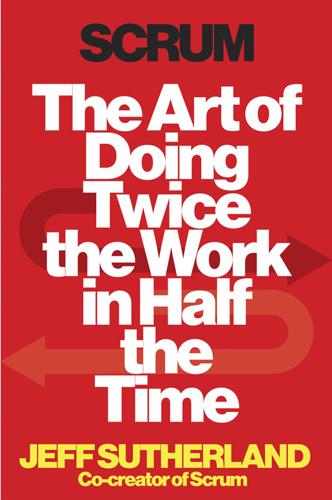
Scrum: The Art of Doing Twice the Work in Half the Time
by
Jeff Sutherland
and
Jj Sutherland
Published 29 Sep 2014
When they implemented the same procedures back in Japan, they immediately saw quality drop, the failure rate go up, and their ability to deliver sink like a stone. They quickly abandoned the process, saying it was likely to produce catastrophic error. The Rogers Commission that examined the 1986 Challenger disaster agreed. As physicist Richard Feynman famously wrote in Appendix F of the Commission’s report: “It would appear that, for whatever purpose, be it for internal or external consumption, the management of NASA exaggerates the reliability of its product, to the point of fantasy.” 4 The fact is, when you look at the best teams—like the ones that existed at Toyota or 3M when Takeuchi or Nonaka wrote their paper, or the ones at Google or Salesforce.com or Amazon today—there isn’t this separation of roles.
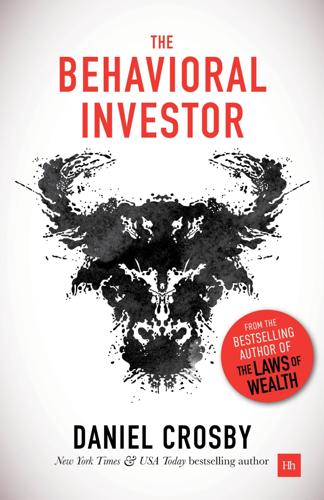
The Behavioral Investor
by
Daniel Crosby
Published 15 Feb 2018
The pair have used this technique to moderate beliefs about everything from single payer healthcare to, well, toilets and have found that, “As a rule, strong feelings about issues do not emerge from deep understanding.” This exercise is commonly referred to as the Feynman Technique and is named for the theoretical physicist of the same name. Richard Feynman, known for his work in quantum mechanics, set forth a simple, three-part formula for gaining greater knowledge: Figure out what you don’t know. Educate yourself. Teach it to a child or novice. Feynman’s technique, elegant in its simplicity, speaks both to the human tendency to overestimate our own capabilities and to conflate complexity with understanding.

The New Nomads: How the Migration Revolution Is Making the World a Better Place
by
Felix Marquardt
Published 7 Jul 2021
Again, it struck me: simply by trying his luck in a different land, Romain had completely changed his life. There was something deeper going on than finding a job in a more booming economy. By moving around our countries or the world, we change our perspective on things, and on ourselves. The late theoretical physicist Richard Feynman was one of the most celebrated scientists of his time, but he was also one of science’s most original thinkers. Feynman had an incredible talent for vulgarisation: the ability to explain very complicated ideas in layman’s terms. One of the things he was obsessed with was the nature of knowledge, what the ancient Greeks named epistemology.
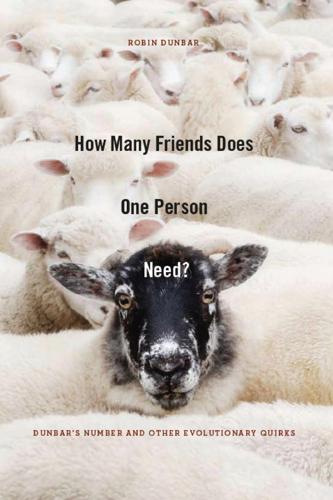
How Many Friends Does One Person Need? Dunbar’s Number and Other Evolutionary Quirks
by
Robin Dunbar
and
Robin Ian MacDonald Dunbar
Published 2 Nov 2010
On the literary side, we have zoologist John Treherne who, after publishing two successful books of historical biography (one on the iconic American gangsters Bonnie and Clyde), went on to produce a couple of well-received novels. His last novel, Dangerous Precincts, was an historical study of ecclesiastical intrigue and scandal set in the 1920s. And what about Richard Feynman (of Surely You’re Joking, Mr Feynman? fame): wit, raconteur, sometime poet – oh, and yes, Nobel laureate in physics too. Not to mention, of course, a long line of widely acclaimed writers of science fiction from Isaac Asimov to Arthur C. Clark. And then there is the reproductive biologist and TV personality Robert Winston: early in his career, he dropped out of science for a few years and became a theatre director, winning in the process the National Directors’ Award at the Edinburgh Festival in 1969.
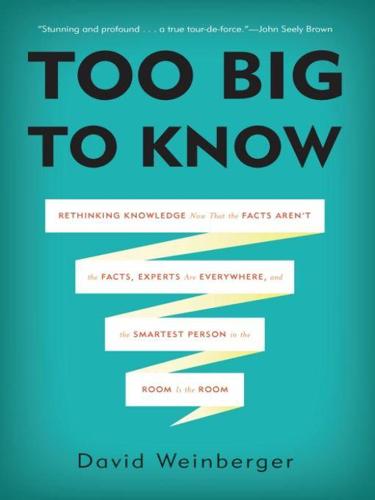
Too Big to Know: Rethinking Knowledge Now That the Facts Aren't the Facts, Experts Are Everywhere, and the Smartest Person in the Room Is the Room
by
David Weinberger
Published 14 Jul 2011
The report concludes with recommendations in nine areas to remedy engineering faults, procedural flaws, and political pressures on NASA. It is easy to see why this report is held in such high regard. The commission was headed by former Secretary of State William Rogers and included generals, physicists (including Richard Feynman), astronauts (including Sally Ride and Neil Armstrong), test pilots (Chuck Yeager), and rocket scientists. It took a broad look at the causes of the failure and produced an evidence-based document that led to needed improvements in NASA’s processes. The report saved lives. And it did so by embodying the very best of traditional expertise: A relative handful of highly trained and credentialed experts came together, followed a careful process, agreed on conclusions, wrote them down, and published them.

The Drunkard's Walk: How Randomness Rules Our Lives
by
Leonard Mlodinow
Published 12 May 2008
Only after a colleague arranged for a computer simulation in which Erdös watched hundreds of trials that came out 2 to 1 in favor of switching did Erdös concede he was wrong.6 How can something that seems so obvious be wrong? In the words of a Harvard professor who specializes in probability and statistics, “Our brains are just not wired to do probability problems very well.”7 The great American physicist Richard Feynman once told me never to think I understood a work in physics if all I had done was read someone else’s derivation. The only way to really understand a theory, he said, is to derive it yourself (or perhaps end up disproving it!). For those of us who aren’t Feynman, re-proving other people’s work is a good way to end up untenured and plying our math skills as a checker at Home Depot.
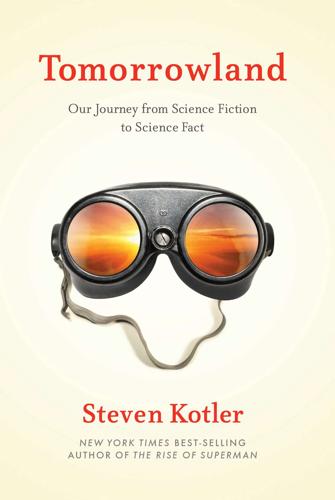
Tomorrowland: Our Journey From Science Fiction to Science Fact
by
Steven Kotler
Published 11 May 2015
But we do know that with biotechnology accelerating exponentially, sooner or later, we are going to find out. 4. Immortality is one thing — playback is another. See, Cochrane’s idea is not simply to capture a life. He also wants to make that life available to others. Education is the real point of the Soul Catcher. And it will be an education unlike any other. Take the late, great physicist Richard Feynman, considered one of the most brilliant minds in recent history. According to biographers, Feynman’s genius was not linear and orderly but rather radical and intuitive. In his mind, A + B did not equal C. It equaled Z. How Feynman’s brain produced such leaps is unknown. But if the physicist had been hooked up to the Soul Catcher — which would record his life — and the Soul Catcher was further connected to some sort of total experience playback device, this might make his A + B = Z intuition not just knowable, but experienceable — meaning teachable.
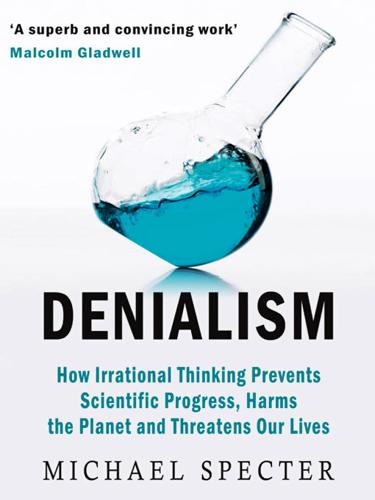
Denialism: How Irrational Thinking Hinders Scientific Progress, Harms the Planet, and Threatens Our Lives
by
Michael Specter
Published 14 Apr 2009
By 1986, America had become so confident in its ability to control the rockets we routinely sent into space that on that particular January morning, along with its regular crew, NASA strapped a thirty-seven-year-old high school teacher named Christa McAuliffe from Concord, New Hampshire, onto what essentially was a giant bomb. She was the first participant in the new Teacher in Space program. And the last. The catastrophe was examined in merciless detail at many nationally televised hearings. During the most remarkable of them, Richard Feynman stunned the nation with a simple display of show-and-tell. Feynman, a no-nonsense man and one of the twentieth century’s greatest physicists, dropped a rubber O-ring into a glass of ice water, where it quickly lost resilience and cracked. The ring, used as a flexible buffer, couldn’t take the stress of the cold, and it turned out neither could one just like it on the shuttle booster rocket that unusually icy day in January.
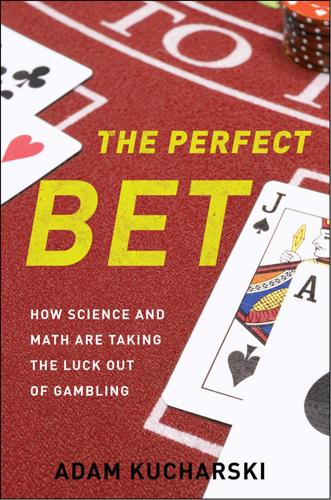
The Perfect Bet: How Science and Math Are Taking the Luck Out of Gambling
by
Adam Kucharski
Published 23 Feb 2016
Gamblers are increasingly using scientific ideas to develop successful betting strategies. In many cases, the concepts are traveling full circle: methods that originally emerged from academic curiosity about wagers are now feeding back into real-life attempts to beat the house. THE FIRST TIME PHYSICIST Richard Feynman visited Las Vegas in the late 1940s, he went from game to game, working out how much he could expect to win (or, more likely, lose). He decided that although craps was a bad deal, it wasn’t that bad: for every dollar he bet, he could expect to lose 1.4 cents on average. Of course, that was the expected loss over a large number of attempts.
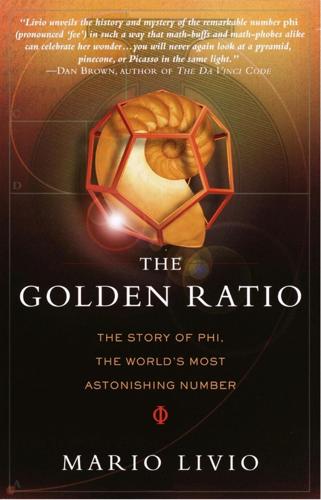
The Golden Ratio: The Story of Phi, the World's Most Astonishing Number
by
Mario Livio
Published 23 Sep 2003
Impacts of astronomical bodies (comets or asteroids) several miles in diameter caused the dinosaurs to perish and paved the way for the dominance of the mammals. The evolution of theories of the universe was also sporadically punctuated by quantum leaps in understanding. Newton's theory of gravitation and Einstein's General Relativity (“I still can't see how he thought of it,” said the late physicist Richard Feynman) are two perfect examples of such spectacular advances. How can we explain these miraculous achievements? The truth is that we can't. That is, no more than we can explain how, in a world of chess that was used to victories by margins of half a point or so, in 1971 Bobby Fischer suddenly demolished both chess grandmasters Mark Taimanov and Bent Larsen by scores of six points to nothing on his way to the world championship.
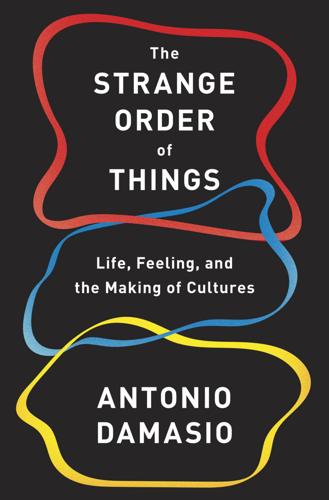
The Strange Order of Things: The Biological Roots of Culture
by
Antonio Damasio
Published 6 Feb 2018
Finkel, “Rich Medium Composition Affects Escherichia coli Survival, Glycation, and Mutation Frequency During Long-Term Batch Culture,” Applied and Environmental Microbiology 81, no. 13 (2015): 4442–50. 9. Pierre Louis Moreau de Maupertuis, “Accord des différentes lois de la nature qui avaient jusqu’ici paru incompatibles,” Mémoires de l’Académie des Sciences (1744): 417–26; Richard Feynman, “The Principle of Least Action,” in The Feynman Lectures on Physics: Volume II, chap. 19, accessed Jan. 20, 2017, http://www.feynmanlectures.caltech.edu/II_toc.html. 10. Edward O. Wilson has written extensively on the complex social life of insects. His book The Social Conquest of the Earth (New York: Liveright, 2012) provides an overview of this spectacular field of research. 11.
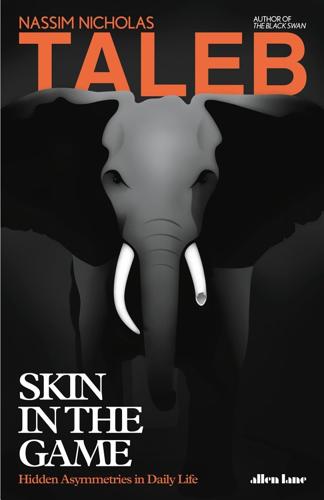
Skin in the Game: Hidden Asymmetries in Daily Life
by
Nassim Nicholas Taleb
Published 20 Feb 2018
Stampedes happen in cinemas—say, when someone shouts “fire”—because those who want to be out do not want to stay in, exactly the same unconditionality we saw with kosher observance or panic selling. Science acts similarly. As we saw earlier, the minority rule is behind Karl Popper’s thinking. But Popper is too stern, so let us leave him for later and, for now, discuss the more entertaining and jovial Richard Feynman, the most irreverent and playful scientist of his day. His book of anecdotes, What Do You Care What Other People Think?, conveys the idea of the fundamental irreverence of science, which proceeds through a similar mechanism as the kosher asymmetry. How? Science isn’t the sum of what scientists think, but exactly as with markets, it is a procedure that is highly skewed.
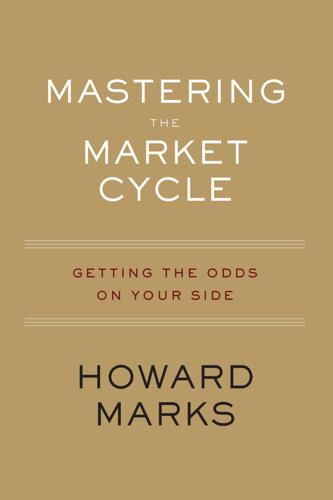
Mastering the Market Cycle: Getting the Odds on Your Side
by
Howard Marks
Published 30 Sep 2018
In fact, economies, business and markets consist of nothing but transactions between people. And people don’t make their decisions scientifically. Some take history, facts and data into account, and some approach their decisions as “economic men.” But even the most unemotional and stoic among them are subject to human influences and the loss of objectivity. Richard Feynman, the noted physicist, wrote, “Imagine how much harder physics would be if electrons had feelings!” That is, if electrons had feelings, they couldn’t be counted on to always do what science expects of them, so the rules of physics would work only some of the time. The point is that people do have feelings, and as such they aren’t bound by inviolable laws.
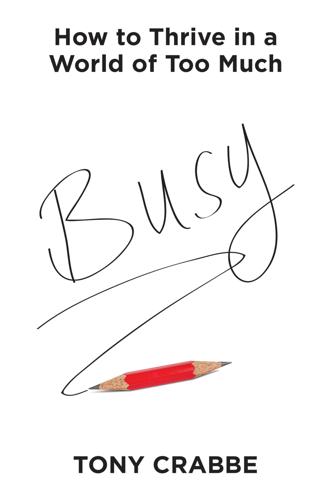
Busy
by
Tony Crabbe
Published 7 Jul 2015
EXPERIMENT Live Up to Your Brand How could you make the next email you write, or the next report, or the next meeting you attend a chance to live true to your brand? High-Leverage Signals What creative ideas could you come up with to subtly reinforce your brand? Chapter 8 Walk Your Own Path (Fixing Radios by Thinking) Richard Feynman became one of the greatest theoretical physicists of the twentieth century and won the Nobel Prize. As a twelve-year-old, he set up a little lab in his room, bought his first radio and, rather than listening to it, he took it apart. He soon became quite good at fixing radios. This was in the early 1930s, during the Great Depression, so a boy who could fix radios cheaply was useful.

The End of Medicine: How Silicon Valley (And Naked Mice) Will Reboot Your Doctor
by
Andy Kessler
Published 12 Oct 2009
“I think it probably will, for 20, 30 years, anyway,” I said. “Sure. That’s what Ray Kurzweil is saying, about a singularity coming. He’s got a terrific presentation of this argument and it’s got lots of insights about the whole range of technology. But it is fundamentally based, I believe, on Richard Feynman’s mistake way back in 1957 or so when he gave his famous speech ‘There’s a lot of room at the bottom.’” “Mistake?” I asked. “Incidentally, I discovered that the real author of Moore’s law and any law of accelerating returns is Henry Adams.” “Who?” I had never heard of him. George always finds these things.
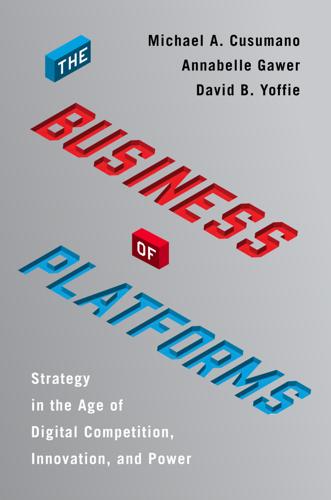
The Business of Platforms: Strategy in the Age of Digital Competition, Innovation, and Power
by
Michael A. Cusumano
,
Annabelle Gawer
and
David B. Yoffie
Published 6 May 2019
The nascent businesses and ecosystems are even more dependent on advances in science and technology, but the platforms should become more relevant in the future and remain so for many decades to come. QUANTUM COMPUTERS: AN INNOVATION PLATFORM FOR NEXT-GENERATION COMPUTING In 1981, Nobel laureate Richard Feynman challenged the physics and computing communities to build a computer mimicking how nature actually works—a quantum computer. Universities and then companies started research.15 By 2015, McKinsey consultants estimated there were 7,000 researchers working on quantum computing, with a combined budget of $1.5 billion.16 By 2018, dozens of universities, approximately thirty major companies, and more than a dozen start-ups had notable R&D efforts.17 The state of the technology today resembles conventional computing in the late 1940s and early 1950s.

Seeking SRE: Conversations About Running Production Systems at Scale
by
David N. Blank-Edelman
Published 16 Sep 2018
Last decade, no one suspected that we would achieve these incredible results with respect to machine perception problems. Now, it turns out that all you need is sufficiently large parametric models trained with gradient descent on sufficiently many examples. It’s not complicated, it’s just a lot of it. Richard Feynman, in the 1972 interview, Take the World from a Different Point of View So that gives us a fairly good idea of why we now can do deep learning in such a reachable way and who to blame for the whole thing — gamers and games. Next, we’ll explore three different machine learning techniques: decision trees, neural networks, and long short-term memory networks.
…
Printed, reprinted, edited, and copied in dozens of places in subsequent years, but currently canonically available at jofreeman.com. If you read only one article, read this one. The Mythical Man-Month by Fred Brooks, 1975. Of course. Covers Conway’s Law and a lot more. The Rogers Commission report on the Challenger disaster, published in 1986. But mostly Appendix F, being the “personal observations” of Richard Feynman, who could not reach any agreement with the rest of the committee and threatened to remove his endorsement from the report if his chapter was not included. (In homage, and out of the same necessities, there are a handful of Obama-era internal policy papers that include an appendix singly authored by one Mikey Dickerson.
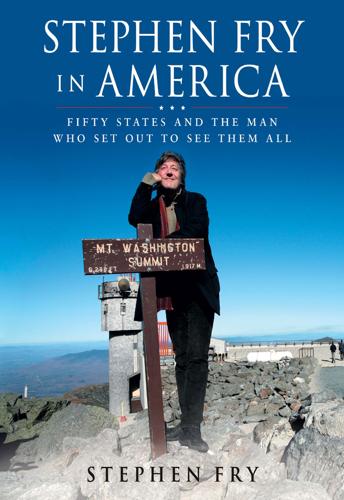
Stephen Fry in America
by
Stephen Fry
Published 1 Jan 2008
However I have always been excited by Big Science, by the minds, insights and achievements of great physicists. After a morning of faded hippies, bad art and tacky artefacts, it comes as a relief to know that the discipline and hard-headed reality of science have their place in New Mexico too. One of my all-time heroes is the Nobel Prizewinning Richard Feynman: my heart beats faster and my eyelids flutter at the very mention of his name. He worked in Los Alamos in the late forties as a very, very young man. In one of his essays he writes about taking a cab through New York on his way back from Los Alamos to Princeton. He sees men working on new skyscrapers and wants to shout out at them, ‘Don’t bother!
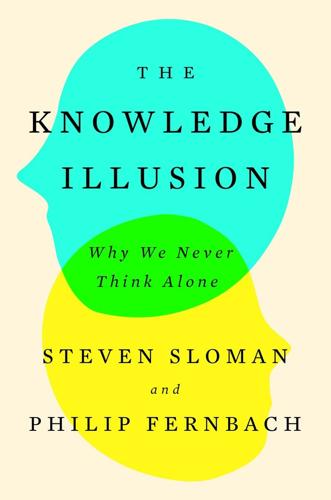
The Knowledge Illusion
by
Steven Sloman
Published 10 Feb 2017
No one in the world should have understood the dangers of radioactivity better than Graves. Eight years before Castle Bravo, in 1946, Graves was one of eight men in a room in Los Alamos, the nuclear laboratory in New Mexico, while another researcher, Louis Slotin, performed a tricky maneuver the great physicist Richard Feynman nicknamed “tickling the dragon’s tail.” Slotin was experimenting with plutonium, one of the radioactive ingredients used in nuclear bombs, to see how it behaved. The experiment involved closing the gap between two hemispheres of beryllium surrounding a core of plutonium. As the hemispheres got closer together, neutrons released from the plutonium reflected back off the beryllium, causing more neutrons to be released.

Mistakes Were Made (But Not by Me): Why We Justify Foolish Beliefs, Bad Decisions, and Hurtful Acts
by
Carol Tavris
and
Elliot Aronson
Published 6 May 2007
Which is what I mean when I say God is in the truth.38 Chapter 4 Good Intentions, Bad Science: The Closed Loop of Clinical Judgment It doesn't matter how beautiful the guess is, or how smart the guesser is, or how famous the guesser is; if the experiment disagrees with the guess, then the guess is wrong. That's all there is to it. —physicist Richard Feynman IF HOLLY RAMONA FELT dissonance at the verdict that convicted her therapists of implanting false memories in her, how do you imagine her therapists felt? Would they be inclined to say, "Oh dear, Holly, we apologize for being so dreadfully mistaken in our treatment of your depression and eating disorders.
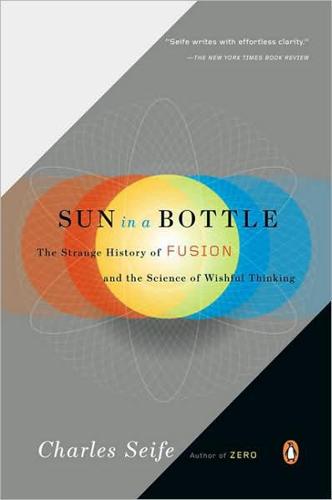
Sun in a Bottle: The Strange History of Fusion and the Science of Wishful Thinking
by
Charles Seife
Published 27 Oct 2009
Other facilities, such as one at Oak Ridge in Tennessee and another at Hanford in Washington, were crucial to figuring out the best way to separate bombworthy uranium-235 from the much more common uranium-238 and how to manufacture plutonium-239.2 However, the big minds roamed at Los Alamos: Oppenheimer, Hans Bethe, Richard Feynman, Stanislaw Ulam, John von Neumann, Enrico Fermi, and Edward Teller. Teller, a Hungarian émigré and, arguably, a better theoretician than Oppenheimer, was brought to the University of Chicago in mid-1942 by the Manhattan Project just as it was getting under way. When Teller arrived, nobody assigned him a task, so he set to work trying to design the ultimate weapon, more powerful even than the one the project’s scientists were trying to build.
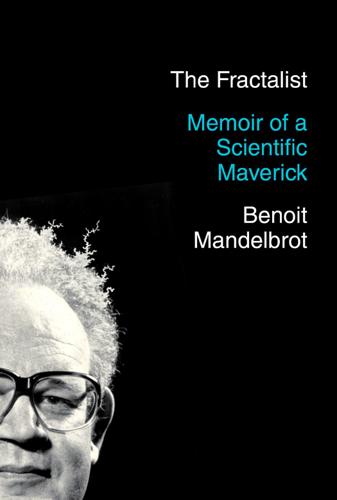
The Fractalist
by
Benoit Mandelbrot
Published 30 Oct 2012
My Keplerian Dream Acquires a Bit of Focus To have witnessed the birth of a field from close by was an experience I never forgot. It provided exhilarating proof that someone with my bent might have a chance after all. There was much talk of physics having dominated the first half of the twentieth century, leaving the second half for biology. Even Richard Feynman tried his hand in Delbrück’s lab. I never seriously thought of moving over, but I felt energized and kept looking for analogous openings closer to my strengths. The timing was ideal because several new developments that had been “bottled up” by war conditions were being revealed in a kind of fireworks I saw on no other occasion.
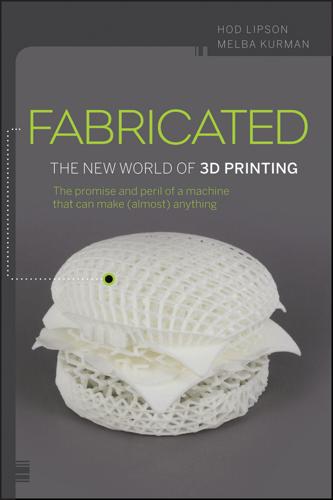
Fabricated: The New World of 3D Printing
by
Hod Lipson
and
Melba Kurman
Published 20 Nov 2012
The days of “word processing for drawings” are history; modern AutoCAD is a powerful design tool that models in three dimensions. Keeping track of x, y, and z coordinates Design software must seamlessly capture the continuous and geometric essence of the analog physical world and reduce it into discrete binary units. World-renowned physicist Richard Feynman recalled in his memoir a conversation that captured this non-symbolic, non-verbal nature of geometry: One time, we were discussing something—we must have been eleven or twelve at the time—and I said, “But thinking is nothing but talking to yourself.” “Oh, yeah?” Bennie said, “Do you know the crazy shape of the crankshaft in a car?”
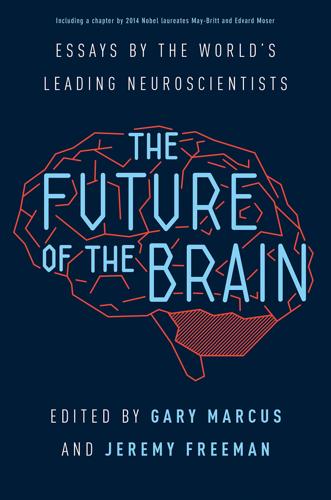
The Future of the Brain: Essays by the World's Leading Neuroscientists
by
Gary Marcus
and
Jeremy Freeman
Published 1 Nov 2014
The European effort starts with fine-grained details about individual neurons and the synapses between them and tries to work upward, from a detailed understanding of the logic of neural wiring toward an understanding of how that wiring underwrites behavior. Eliasmith starts closer to behavior, trying to build a more abstract model that captures behavior and psychological mechanisms while remaining faithful to known facts about neural organization. WHOLE BRAIN SIMULATION Sean Hill Richard Feynman famously said, “What I cannot create, I do not understand.” To truly understand the brain we need the tools to create it, in brain atlases, computer models, and simulations. In this essay I will talk about the Human Brain Project (HBP, www.humanbrainproject.eu), which has recently been awarded European Commission funding (~one billion euros over ten years) to provide a series of information-technology-based platforms aimed specifically at enabling a global collaboration between neuroscientists and driving innovation in neuroscience, medicine, and computing (see color plate 8).
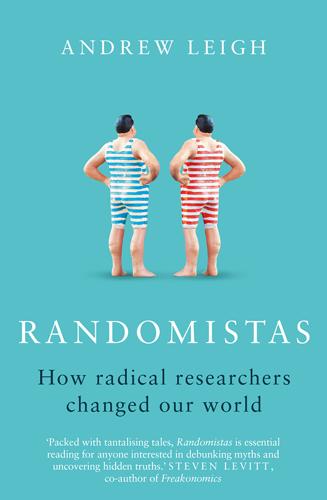
Randomistas: How Radical Researchers Changed Our World
by
Andrew Leigh
Published 14 Sep 2018
The scientific values of honesty, open criticism, experimentation, willingness to change once-advocated theories in the face of experimental and other evidence.’8 As we have seen, this approach is epitomised by the founders of TOMS, who donated 60 million pairs of shoes to children in developing nations, encouraged a randomised evaluation and then changed their philanthropic approach in response to the disappointing results. It’s not always easy to follow the scientific path. As physicist Richard Feynman once observed, ‘The first principle is that you must not fool yourself – and you are the easiest person to fool.’9 Great scientists present all the evidence, not just the data that supports their pet theories. The best scientists publish results regardless of how they turn out. Feynman contrasted scientific integrity with ‘cargo cult science’.
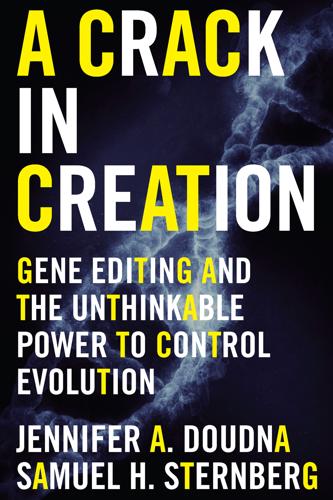
A Crack in Creation: Gene Editing and the Unthinkable Power to Control Evolution
by
Jennifer A. Doudna
and
Samuel H. Sternberg
Published 15 Mar 2017
Thinking about the metaphorical distance I had traveled, I had to laugh. And then I gave it a try. It’s been a roller-coaster ride, one whose twists and turns I could not have imagined at the outset. I’ve experienced the pure joy of discovery; the “pleasure of finding things out,” as physicist Richard Feynman put it. I have marveled with my son about the ways that bacteria program proteins to work like armed guards that recognize and destroy invading viruses. I have relished being a student again, learning about topics like human development and the medical, social, political, and ethical issues that attend human reproduction.
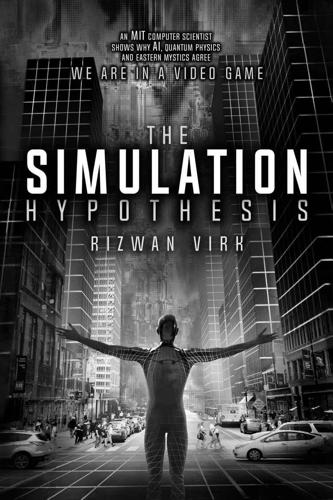
The Simulation Hypothesis
by
Rizwan Virk
Published 31 Mar 2019
Just as we created GPUs in order to help us render more sophisticated video games, we can assume that any civilization that moves toward the simulation point and wanted to run ancestor simulations would create processors that were optimized for the task at hand. We stand today on the threshold of a new type of computing—quantum computing, which represents perhaps the first really radical shift in actual computing since the dawn of computer science in the 1950s and 1960s. Quantum computers, first proposed by physicist Richard Feynman, who suggested that if we were going to simulate the physical universe, we should use quantum particles and not classical computers. While the idea seemed like science fiction initially, the technology is rapidly progressing, with several early working models available even now. At the heart of quantum computers are the principles of quantum physics—in particular, quantum indeterminacy and superposition.
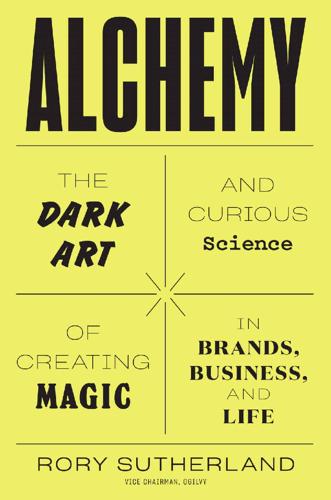
Alchemy: The Dark Art and Curious Science of Creating Magic in Brands, Business, and Life
by
Rory Sutherland
Published 6 May 2019
For all we obsess about scientific methodology, Geim knows it is far more common for a mixture of luck, experimentation and instinctive guesswork to provide the decisive breakthrough; reason only comes into play afterwards. The bureaucrats to whom he must justify his activities, however, demand reasons right from the beginning to justify funding, but the idea that there is a robust scientific process that will reliably lead to progress seems unfounded. Here is the brilliant American physicist Richard Feynman, in a Lecture in 1964, describing his method: ‘In general, we look for a new law by the following process. First, we guess it . . . Then we compute the consequences of the guess, to see what, if this law we guess is right, to see what it would imply and then we compare the computation results to . . . experience, compare it directly with observations to see if it works . . .
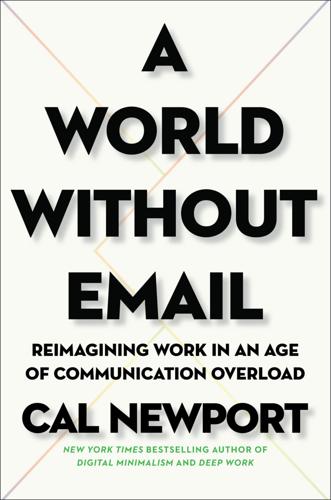
A World Without Email: Reimagining Work in an Age of Communication Overload
by
Cal Newport
Published 2 Mar 2021
This latter point is critical, as it leads to inequities that are often overlooked. As I argued in the opening to chapter 5, when you run an office haphazardly, a Hobbesian dynamic arises in which those who are most brash and disagreeable get away with doing less work, while their more reasonable peers become overloaded. The late Nobel Prize–winning physicist Richard Feynman famously told an interviewer that his strategy for minimizing committee work was to do it really poorly so that people would eventually stop asking him for help. Few people would be comfortable with such brazen misanthropy. Do we really want to reward those who are? An important study on this topic, published by a research team headed by Linda Babcock of Carnegie Mellon University, documented how this dynamic disproportionately affects women.15 In both field and laboratory studies, the researchers found that women are more likely to volunteer for “non-promotable” service tasks than men.
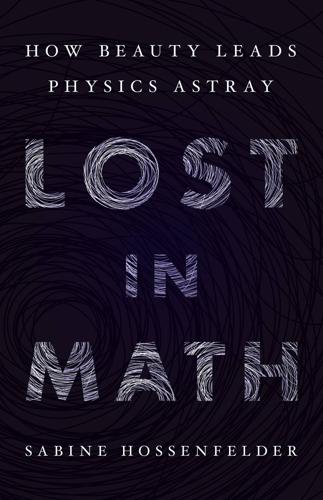
Lost in Math: How Beauty Leads Physics Astray
by
Sabine Hossenfelder
Published 11 Jun 2018
It’s one of the cracks in the foundations that physicists attempt to peer through, but so far they have failed to see anything in support of the new theories they designed to explain dark energy. Meanwhile, in the field of quantum foundations, our colleagues want to improve a theory that has no shortcomings whatsoever. They act based on the conviction that something is wrong with mathematical structures that don’t correspond to measurable entities. It irks them that, as Richard Feynman, Niels Bohr, and other heroes of last century’s physics complained, “nobody understands quantum mechanics.” Researchers in quantum foundations want to invent better theories, believing, as everyone else does, they are on the right crack. Alas, all experiments have upheld the predictions of the not-understandable theory from the last century.
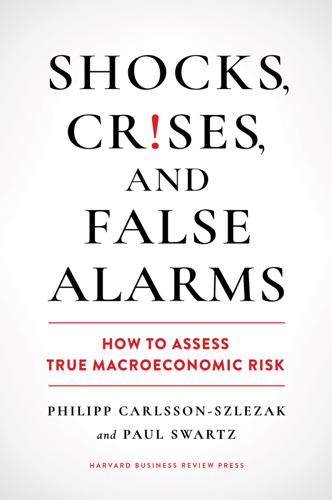
Shocks, Crises, and False Alarms: How to Assess True Macroeconomic Risk
by
Philipp Carlsson-Szlezak
and
Paul Swartz
Published 8 Jul 2024
“In physics you’re playing against God, and He doesn’t change His laws very often. In finance you’re playing against God’s creatures, agents who value assets based on their ephemeral opinions.” Emanuel Derman, Models. Behaving. Badly.: Why Confusing Illusion with Reality Can Lead to Disaster, on Wall Street and in Life (New York: Free Press, 2011). Richard Feynman is claimed to have said jokingly, “Imagine if protons had feelings,” after the stock market crash of 1987. 13. Letter from John Maynard Keynes to economist Roy Harrod, July 4, 1938, https://economicsociology.org/2018/04/03/what-is-economics-read-keynes-definition/. 14. We are reminded of Ludwig von Mises’s words in Human Action (1949), where he uses understanding in the way we use judgment: “Understanding is not a privilege of the historians.

How to Spend a Trillion Dollars
by
Rowan Hooper
Published 15 Jan 2020
$ $ $ IT IS THIS POTENTIAL that has proponents claiming that in this century we will start to get real control over the fundamentals of biology, and that synthetic biology is the field that will make the most profound changes to the way we live. To do this, we will need to define the set of rules – it will be a complex set, for sure – for building a living system. Synthetic biologists are inspired by the physicist Richard Feynman, who said, ‘What I cannot create, I do not understand.’ The aim is to build modules for different aspects of cell function: for energy, metabolism, motility, sensing. We should be able to put these components together and build a variety of living systems. ‘To the extent that we can build a computer or very complex system with inert nonliving matter, can we apply the same approach and level of sophistication to living matter?’
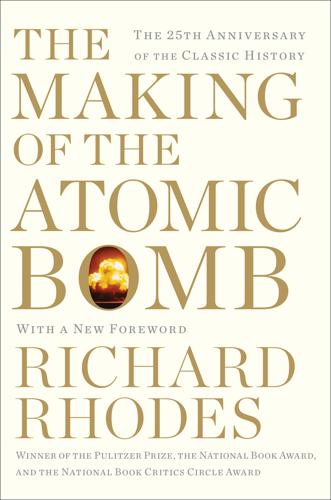
The Making of the Atomic Bomb
by
Richard Rhodes
Published 17 Sep 2012
The practice of science was not itself a science; it was an art, to be passed from master to apprentice as the art of painting is passed or as the skills and traditions of the law or of medicine are passed.98, 99 You could not learn the law from books and classes alone. You could not learn medicine. No more could you learn science, because nothing in science ever quite fits; no experiment is ever final proof; everything is simplified and approximate. The American theoretical physicist Richard Feynman once spoke about his science with similar candor to a lecture hall crowded with undergraduates at the California Institute of Technology. “What do we mean by ‘understanding’ something?” Feynman asked innocently.100 His amused sense of human limitation informs his answer: We can imagine that this complicated array of moving things which constitutes “the world” is something like a great chess game being played by the gods, and we are observers of the game.
…
Hence his daring proposal: The idea was that the compound of uranium-235, which by then had arrived on the site, enough to make an explosive device, should indeed be assembled to make one, but leaving a big hole so that the central portion was missing; that would allow enough neutrons to escape so that no chain reaction could develop.2263 But the missing portion was to be made, ready to be dropped through the hole so that for a split second there was the condition for an atomic explosion, although only barely so. Brilliant young Richard Feynman laughed when he heard Frisch’s plan and named it: he said it would be like tickling the tail of a sleeping dragon.2264 The Dragon experiment it became. At a remote laboratory site in Omega Canyon that Fermi also used, Frisch’s group built a ten-foot iron frame, the “guillotine,” that supported upright aluminum guides.
…
Ernest Lawrence was there, Hans Bethe, Teller, Serber, Edwin McMillan, James Chadwick come to see what his neutron was capable of and a crowd of other men, including Trinity staff no longer needed down on the plain. “With the darkness and the waiting in the chill of the desert the tension became almost unendurable,” one of them remembers.2419 The shortwave radio requisitioned to advise them of the schedule refused to work until after Allison began broadcasting the countdown. Richard Feynman, a future Nobel laureate who had entered physics as an adolescent via radio tinkering, tinkered the radio to life. Men began moving into position. “We were told to lie down on the sand,” Teller protests, “turn our faces away from the blast, and bury our heads in our arms. No one complied. We were determined to look the beast in the eye.”2420 The radio went dead again and they were left to watch for the warning rockets to be fired from S-10000.
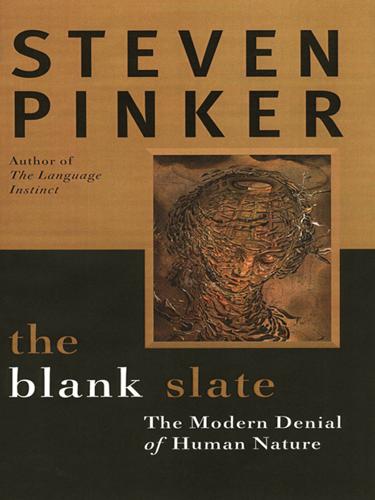
The Blank Slate: The Modern Denial of Human Nature
by
Steven Pinker
Published 1 Jan 2002
Stephen Jay Gould’s 1981 bestseller The Mismeasure of Man was written to debunk “the abstraction of intelligence as a single entity, its location within the brain, its quantification as one number for each individual, and the use of these numbers to rank people in a single series of worthiness, invariably to find that oppressed and disadvantaged groups—races, classes, or sexes—are innately inferior and deserve their status.”18 The philosopher Hilary Putnam argued that the concept of intelligence is part of a social theory called “elitism” that is specific to capitalist societies: Under a less competitive form of social organization, the theory of elitism might well be replaced by a different theory—the theory of egalitarianism. This theory might say that ordinary people can do anything that is in their interest and do it well when (1) they are highly motivated, and(2) they work collectively.19 In other words, any of us could become a Richard Feynman or a Tiger Woods if only we were highly enough motivated and worked collectively. I find it truly surreal to read academics denying the existence of intelligence. Academics are obsessed with intelligence. They discuss it endlessly in considering student admissions, in hiring faculty and staff, and especially in their gossip about one another.
…
or “How does the damn particle manage to pass through two slits at the same time?” Even the physicists who discovered the nature of reality claim not to understand their theories. Murray Gell-Mann described quantum mechanics as “that mysterious, confusing discipline which none of us really understands but which we know how to use.”58 Richard Feynman wrote, “I think I can safely say that no one understands quantum mechanics…. Do not keep asking yourself, if you can possibly avoid it, ‘But how can it be like that?’…Nobody knows how it can be like that.”59 In another interview, he added, “If you think you understand quantum theory, you don’t understand quantum theory!”
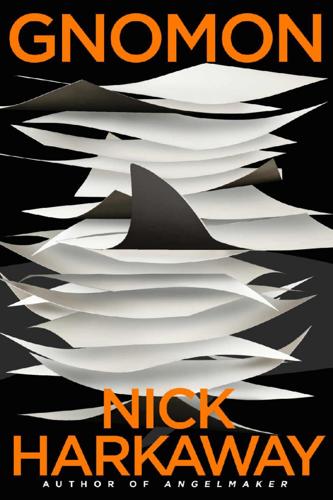
Gnomon
by
Nick Harkaway
Published 18 Oct 2017
Certainly, no one has ever died under the machine before, that we know of, although that may be a bit of a lie because they seem to have a protocol. There’s a crash cart coming now. It’s as if a magic door has opened in the world and all the doctors who have ever existed are coming to save me. I think I’m thinking in parallel. Everything happens twice, once to her and once to me. On an old black-and-white television screen I see Richard Feynman. He is talking about counting in your head. Do you see numbers, or do you hear them? But at the same time, I see the jinn, Gnomon, emerging from the panels of the Chamber of Isis like a crab from a hole— SCIO TE, SPIRITUM. SCIO TE, DE MILLE OCULOS. SCIO TE. The alarm howls. The doctors come.
…
No one knows why it’s suddenly on everyone’s lips. There’s no Usage Zero, no Elbridge Gerry. One day it’s meaningless, the next it’s in the dictionary. And you mostly don’t hear it any more: like ‘copacetic’ and ‘runcible’, it exists only because we say it does, for as long as we say it does. Like Burton itself. They started us on Richard Feynman, the mathematician. Feynman noticed – among his many more startling insights – that different people counted silently in different ways. Some, apparently, whispered to themselves but never spoke, while others saw numbers. The ones who whispered could be distracted by words, and most especially by shouted sums, but the ones who visualised could not.

Fooled by Randomness: The Hidden Role of Chance in Life and in the Markets
by
Nassim Nicholas Taleb
Published 1 Jan 2001
I reckon that I outgrew the desire to generate random runs every time I want to explore an idea—but by dint of playing with a Monte Carlo engine for years I can no longer visualize a realized outcome without reference to the nonrealized ones. I call that “summing under histories,” borrowing the expression from the colorful physicist Richard Feynman who applied such methods to examine the dynamics of subatomic particles. Using my Monte Carlo to make and remake history reminded me of the experimental novels (the so-called new novels) by such writers as Alain Robbe-Grillet, popular in the 1960s and 1970s. There the same chapter would be written and revised, the writer each time changing the plot like a new sample path.
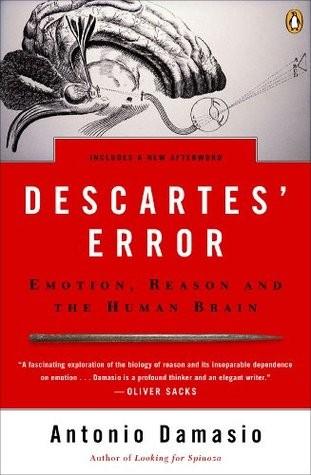
Descartes' Error: Emotion, Reason and the Human Brain
by
António R. Damásio
Published 1 Jan 1994
In this regard, it is interesting to observe that some insightful mathematicians and physicists describe their thinking as dominated by images. Often the images are visual, and they even can be somatosensory. Not surprisingly, Benoit Mandelbrot, whose life work is fractal geometry, says he always thinks in images.14 He relates that the physicist Richard Feynman was not fond of looking at an equation without looking at the illustration that went with it (and note that both equation and illustration were images, in fact). As for Albert Einstein, he had no doubts about the process: The words or the language, as they are written or spoken, do not seem to play any role in my mechanism of thought.
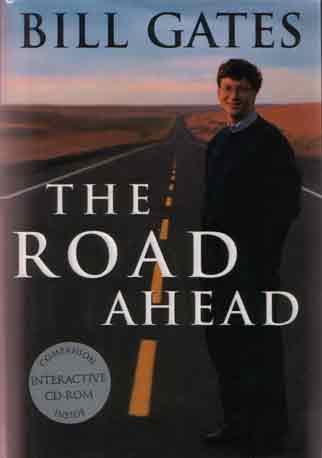
The Road Ahead
by
Bill Gates
,
Nathan Myhrvold
and
Peter Rinearson
Published 15 Nov 1995
In most cases watching a lecture on video is much less interesting than actually being in the room with the teacher. But sometimes the value of being able to hear a particular teacher outweighs the loss of interactivity. A few years ago, a friend and I discovered in the University of Washington's catalog videotapes of a series of lectures by the distinguished physicist Richard Feynman. We were able to watch the lectures on vacation ten years after Feynman gave the talks at Cornell. We might have gotten more from the lectures if we had been in the lecture hall or been able to ask him questions via a videoconference. But the clarity of his thinking explained many of the concepts of physics better than any book or any instructor I've ever had.
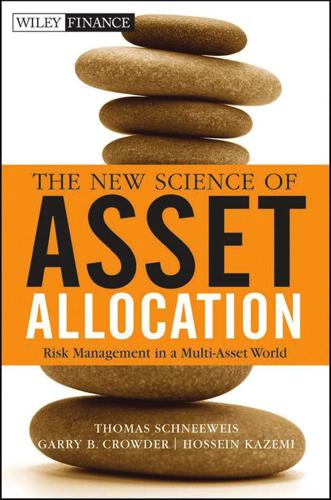
The New Science of Asset Allocation: Risk Management in a Multi-Asset World
by
Thomas Schneeweis
,
Garry B. Crowder
and
Hossein Kazemi
Published 8 Mar 2010
He walked up and put his face within inches of the graph. “And from here,” he pointed out, “this graph looks real ugly!” The same could be said for the process of investment and the market in which investment products exist. Moreover, the search costs of finding, monitoring, and assessing risk and return are extensive, continuous, and variable. Richard Feynman of physics fame (remember the O-ring and the Challenger story in which Feynman, instead of a lengthy discussion, simply put the rubber O-ring into a cold class of water, pulled it out, showed how inflexible it was when too cold, and thereby showed how cold temperature made it fail—end of story) has pointed out that what works at the “macro” may not work at the “micro” and that “things on a small scale behave nothing like things on a large scale.”
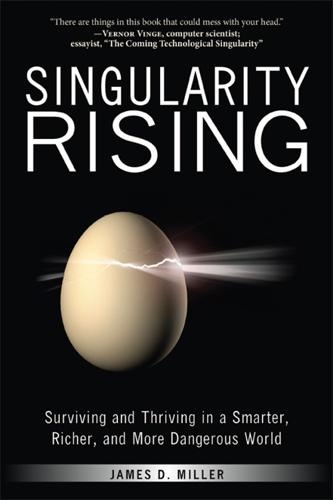
Singularity Rising: Surviving and Thriving in a Smarter, Richer, and More Dangerous World
by
James D. Miller
Published 14 Jun 2012
Ashkenazi Jews account for half of the twentieth century’s, world chess champions. American Jews are also overrepresented in other areas, such as business (where they account for about a fifth of CEOs) and academia (where they make up about 22 percent of Ivy League students).223 Many of the twentieth century’s greatest scientists, including Albert Einstein, Ed Witten, Richard Feynman, and John von Neumann (my favorite) are Ashkenazi. The Jews’ disproportionate intelligence appears to be a relatively recent phenomenon, as this population group seems to have made no significant contributions to mathematics or science in the classical era.224 European monarchs between AD 800 and 1700 effectively put their Jewish subjects through a eugenics program.
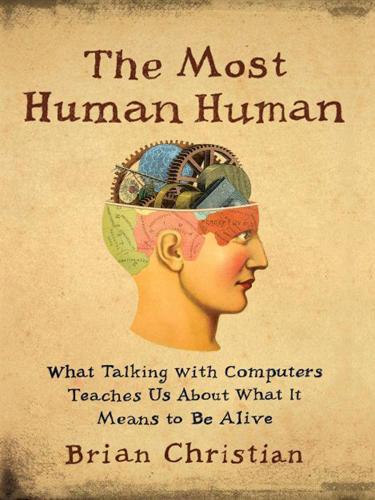
The Most Human Human: What Talking With Computers Teaches Us About What It Means to Be Alive
by
Brian Christian
Published 1 Mar 2011
These original, human computers were behind the calculations for everything from the first accurate predictions for the return of Halley’s comet—early proof of Newton’s theory of gravity, which had only been checked against planetary orbits before—to the Manhattan Project, where Nobel laureate physicist Richard Feynman oversaw a group of human computers at Los Alamos. It’s amazing to look back at some of the earliest papers in computer science, to see the authors attempting to explain, for the first time, what exactly these new contraptions were. Turing’s paper, for instance, describes the unheard-of “digital computer” by making analogies to a human computer: “The idea behind digital computers may be explained by saying that these machines are intended to carry out any operations which could be done by a human computer.”
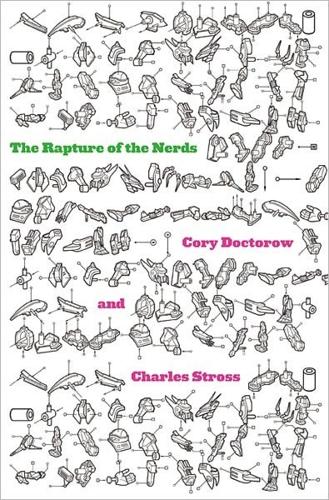
The Rapture of the Nerds
by
Cory Doctorow
and
Charles Stross
Published 3 Sep 2012
They could induct you into their LARP. It’s a grind to level up, but by the time you hit senate level, you could probably wipe the floor with 639,219 in a straight fight. She is a classic case of geek hubris: You see them all over—once they learn how to accelerate their thought processes, they all think they’re Richard Feynman.” “Don’t wanna be a politician.” Huw is still finding it hard to think in the teapot; the merciless clarity she achieved as leader of the army of Huw on the outside has been replaced by the lumpen thought processes of a Monmouth Today reader, all livestock auctions, agricultural suppliers, and fear of an urban planet.

Bold: How to Go Big, Create Wealth and Impact the World
by
Peter H. Diamandis
and
Steven Kotler
Published 3 Feb 2015
The rules are an incentive competition’s DNA—they will determine the competition’s success or failure and its validity over time. Rules that are made invalid by changing technology or political/social conditions are problematic. Rules that are naive or easily broken can lead to negative or empty results. Consider the case of Nobel laureate Richard Feynman’s famous prizes announced during his 1959 lecture “There’s Plenty of Room at the Bottom.” Feynman offered two $1,000 prizes, one for the first person to build a working motor within a one-millimeter cube and the second for the first person to write the information from a book page on a surface 1/25,000 smaller in linear scale.24 The rules for his first prize were poorly conceived.
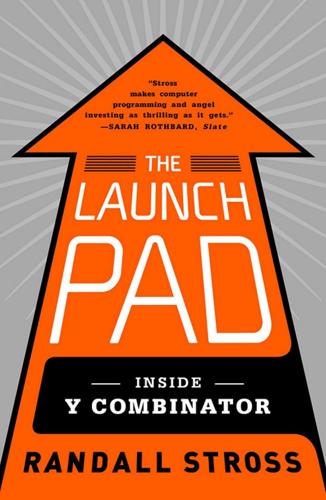
The Launch Pad: Inside Y Combinator, Silicon Valley's Most Exclusive School for Startups
by
Randall Stross
Published 4 Sep 2013
Graham personally wrote the code for Hacker News, an area on the Y Combinator Web site that aggregates links to news stories from around the Web suggested by users who are most interested in programming and software startups and who comment on the stories. Hackers are, by nature, unruly, says Graham. This sometimes leads to their poking around inside technology where they are not supposed to go. Hacking predates computing, he points out, citing the way physicist Richard Feynman amused himself when working on the Manhattan Project by breaking into safes containing classified documents.5 One meaning of the verb form “to hack” refers to finding a clever way to beat a system. Applicants to Y Combinator are asked, “Please tell us about the time you most successfully hacked some (non-computer) system to your advantage.”
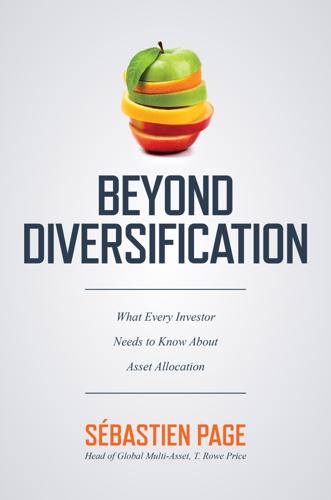
Beyond Diversification: What Every Investor Needs to Know About Asset Allocation
by
Sebastien Page
Published 4 Nov 2020
While this perspective has led to a number of important breakthroughs in economics, “physics envy” has also created a false sense of mathematical precision in some cases. At the top of their paper, they picked a brilliant quote. It gets at the heart of the issue, which is that asset prices are set by humans. The quote is from the famous physicist and Nobel laureate Richard Feynman: “Imagine how much harder physics would be if electrons had feelings!” I keep a related reminder on my office wall: a cartoon of two scientists in front of a blackboard full of complicated equations, with the following quote, spoken by one of the scientists: “Oh, if only it were so simple!” That cartoon has a bit of sentimental value for me.
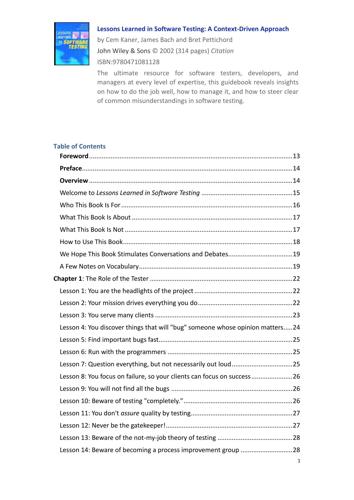
Lessons-Learned-in-Software-Testing-A-Context-Driven-Approach
by
Anson-QA
At the point that you stop even reporting minor bugs (some companies pressure their staff to report only "worthwhile" errors), you'll find yourself and your company tolerating more and more serious ones. Down that road (unless you're in a monopoly position in your market), lies product failure. This progressive toleration of larger errors was an important factor in the Challenger disaster, as Richard Feynman vividly shows in his book What Do You Care What Other People Think (Feynman 89). Lesson 73: Keep clear the difference between severity and priority Severity refers to the impact or consequence of the bug. Priority indicates when your company wants it fixed. Severity doesn't change unless you learn more about hidden consequences.
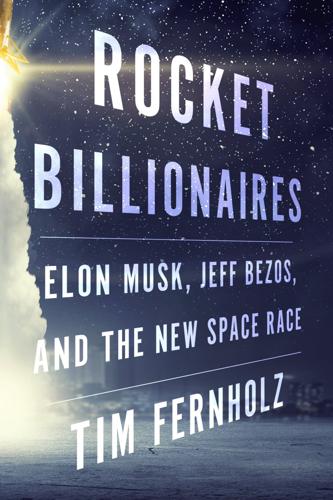
Rocket Billionaires: Elon Musk, Jeff Bezos, and the New Space Race
by
Tim Fernholz
Published 20 Mar 2018
That was especially true of those missions intended to launch satellites or space probes, with no real human exploration component. Since the shuttle was designed expressly for human spaceflight, this conclusion required the government to find new rockets to launch satellites without people on board. Noble Prize–winning physicist Richard Feynman, a member of the distinguished panel investigating the disaster, famously demonstrated the tiny flaw that had led to Challenger’s loss. He dunked rubber O-rings, used in the construction of the solid fuel rocket booster, into a pitcher of cold water. At lower temperatures, the tight-fitting seals became brittle and stiff, making them likelier to crack under pressure and leak superheated gas.
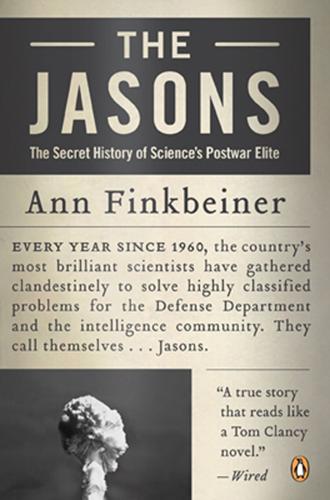
The Jasons: The Secret History of Science's Postwar Elite
by
Ann Finkbeiner
Published 26 Mar 2007
Bethe eventually recommended that Dyson spend time with Robert Oppenheimer at the Institute for Advanced Study. Bethe wrote to Oppenheimer, “I can say without reservation that he is the best I have ever had or observed.” In 1948 Dyson drove from Cleveland to Albuquerque in a secondhand Oldsmobile with Richard Feynman, also at Cornell and fresh out of the Manhattan Project. “As we drove through Cleveland and St. Louis, [Feynman] was measuring in his mind’s eye distances from ground zero, ranges of lethal radiation and blast and fire damage,” Dyson wrote. “I felt as if I were taking a ride with Lot through Sodom and Gomorrah.”
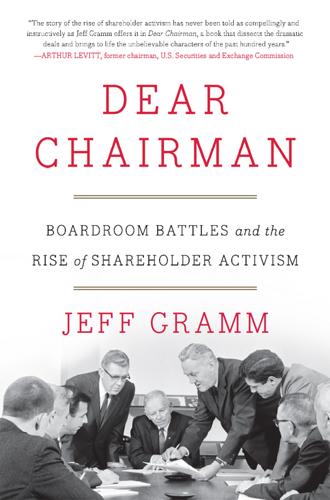
Dear Chairman: Boardroom Battles and the Rise of Shareholder Activism
by
Jeff Gramm
Published 23 Feb 2016
The social juxtaposition of a tiny group of people living in great splendor and many more living in abject poverty was anathema to him.”25 When one of the leaders at the synagogue recognized that the cantor’s son was exceptionally smart, he arranged for him to get a scholarship to a private school. Icahn’s parents visited the school but decided against exposing Carl to the values of entitled private school children. They kept him in public school. Icahn was an excellent student at Far Rockaway High, which produced three Nobel Prize winners, including Richard Feynman, and MC Serch from 3rd Bass. When Icahn decided he wanted to go to Princeton, his advisor scoffed at the idea and said they wouldn’t even read his application. He applied anyway—“I already put the stamp on it and don’t want to waste it,” he told her—and got in.26 At Princeton, Icahn didn’t take his meals at the Ivy Club and transform himself into a future titan of Wall Street.
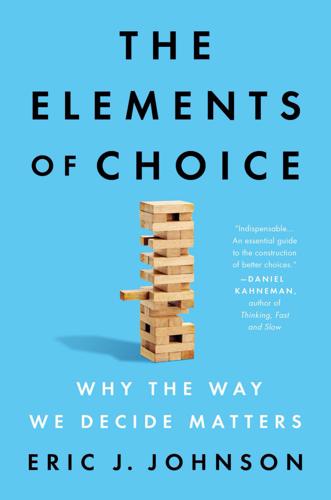
The Elements of Choice: Why the Way We Decide Matters
by
Eric J. Johnson
Published 12 Oct 2021
Changing the scale of numbers can change what is retrieved for comparison when making the decision. While small numbers are easier to compare, large numbers are mind-boggling. This is particularly true of the kinds of numbers in the federal budget, a large document (typically more than 1,400 pages) of large numbers that are staggering and outside our normal experience. Richard Feynman, the twentieth-century physicist, observed, “There are 1011 stars in the galaxy. That used to be a huge number. But it’s only a hundred billion. It’s less than the national deficit! We used to call them astronomical numbers. Now we should call them economical numbers.” One way of coping with large numbers is to make them concrete and personal.

Intern: A Doctor's Initiation
by
Sandeep Jauhar
Published 26 Dec 2007
The story goes up to the point when I decided to pursue a fellowship in cardiology, my specialty, and thus covers the most formative period of my education as a doctor. For me it was a disillusioning time; I spent much of it in a state of crisis and doubt. I had trained as a physicist before entering medical school, and ten years of uncertainty about my choice of a profession came out all at once. In his path-integral formulation of quantum mechanics, Richard Feynman hypothesized that when a particle travels from point A to point B, it traverses many different paths to arrive at its destination. This certainly seemed to apply to my journey into medicine. Because I had lived another, more sedate, professional life, the one I had to endure in the hospital was even more difficult to bear.
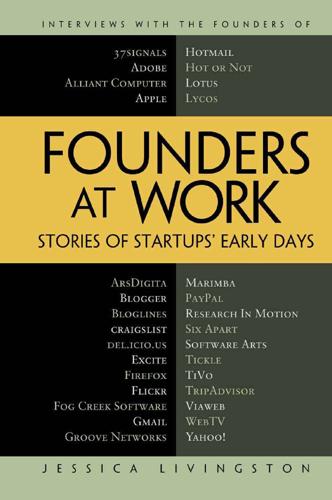
Founders at Work: Stories of Startups' Early Days
by
Jessica Livingston
Published 14 Aug 2008
Thinking Machines had the great fortune of starting with $8 million in the bank, because some very rich individuals really believed in it. It was not venture-funded, and it was founded with the idea that it was going to take years and years and years to actually get something real done. That allowed Thinking Machines to attract a very interesting set of people. Richard Feynman worked there, Stephen Wolfram, Marvin Minsky. I found that I had better access to professors in a company than I did when I was in school. So that was an interesting way of trying to figure out, “What should the company do?” They took a good summer to try to figure that out and, actually, through a bunch of the first year, which is a luxury that most startups don’t have.
…
If you just set out to go and make a lot of money, then the problem is, what happens when you make a lot of money? You’re out of ideas. So the idea of going and putting everything online is something really big and hard. How do you make a library such that everybody has access to everything? I remember talking to Richard Feynman, and we were looking at the Encyclopedia Britannica in one of these 1800s rooms at Thinking Machines. We had an Encyclopedia Britannica, and it had an index that was one volume, then a micropedia, which was about 10 volumes, and then the next level was the macropedia, which was about 30 volumes.

A Devil's Chaplain: Selected Writings
by
Richard Dawkins
Published 1 Jan 2004
It gets worse, to the point where some physicists resort to a vast number of parallel but mutually unreachable worlds, which proliferate to accommodate every alternative quantum event; while other physicists, equally desperate, suggest that quantum events are determined retrospectively by our decision to examine their consequences. Quantum theory strikes us as so weird, so defiant of common sense, that even the great Richard Feynman was moved to remark, ‘I think I can safely say that nobody understands quantum mechanics.’ Yet the many predictions by which quantum theory has been tested stand up, with an accuracy so stupendous that Feynman compared it to measuring the distance between New York and Los Angeles accurately to the width of one human hair.
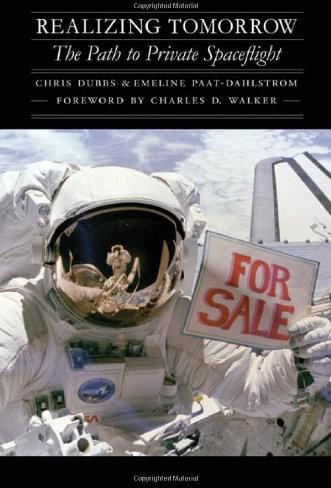
Realizing Tomorrow: The Path to Private Spaceflight
by
Chris Dubbs
,
Emeline Paat-dahlstrom
and
Charles D. Walker
Published 1 Jun 2011
In the eighteenth century Nicholas Leblanc's process for producing soda from seawater was also spurred on by the engineering prize of ioo,ooo francs offered by the French Academy. It would be considered one of the key chemical engineering inventions of all time. During more recent times, the Nobel Prize-winning physicist Richard Feynman offered prizes for developments in nanotechnology. The annual Feynman Prize, given by the Foresight Nanotech Institute, still stimulates developments in that field. According to Diamandis, "Prizes are most effective when progress is blocked and where market forces, government, and non-profits cannot readily solve a problem.

The Wisdom of Crowds
by
James Surowiecki
Published 1 Jan 2004
Six months after the explosion, the Presidential Commission on the Challenger revealed that the O-ring seals on the booster rockets made by Thiokol—seals that were supposed to prevent hot exhaust gases from escaping—became less resilient in cold weather, creating gaps that allowed the gases to leak out. (The physicist Richard Feynman famously demonstrated this at a congressional hearing by dropping an O-ring in a glass of ice water. When he pulled it out, the drop in temperature had made it brittle.) In the case of the Challenger, the hot gases had escaped and burned into the main fuel tank, causing the cataclysmic explosion.
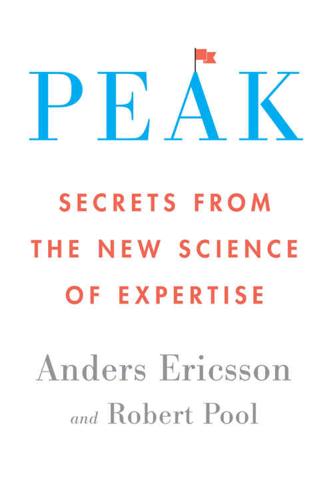
Peak: Secrets From the New Science of Expertise
by
Anders Ericsson
and
Robert Pool
Published 4 Apr 2016
The average IQ of scientists is certainly higher than the average IQ of the general population, but among scientists there is no correlation between IQ and scientific productivity. Indeed, a number of Nobel Prize–winning scientists have had IQs that would not even qualify them for Mensa, an organization whose members must have a measured IQ of at least 132, a number that puts you in the upper 2 percentile of the population. Richard Feynman, one of the most brilliant physicists of the twentieth century, had an IQ of 126; James Watson, the co-discoverer of the structure of DNA, had an IQ of 124; and William Shockley, who received the Nobel Prize in Physics for his role in the invention of the transistor, had an IQ of 125. Although the abilities measured by IQ tests clearly help performance in the science classroom, and students with higher IQs generally perform better in science classes than those with lower IQs—again consistent with Binet’s efforts to measure school learning—among those who have become professional scientists, a higher IQ doesn’t seem to offer an advantage.
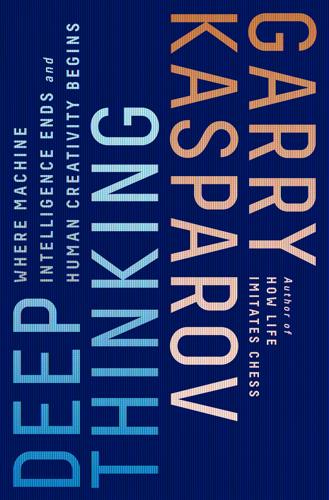
Deep Thinking: Where Machine Intelligence Ends and Human Creativity Begins
by
Garry Kasparov
Published 1 May 2017
The benefits of chess for improving concentration and creativity in kids is documented, so it’s not far-fetched to imagine that the same might true for adults. Or perhaps learning chess as kids gave the brains of all these luminaries a little extra something during their formative years. It was once believed that brain plasticity ceased before adulthood, but that consensus has been overturned in recent years. Nobel Prize winner Richard Feynman wrote extensively about how he thought his eclectic hobbies like playing Brazilian music and lock-picking actually helped him be better at physics instead of distracting him from it. Ken Thompson enjoys piloting himself around in a small plane. And even if it’s too late for you to win that Nobel, it’s never too late to play chess, especially since various studies now tout the benefits of games like chess and other cognitively demanding activities in delaying the onset of dementia.
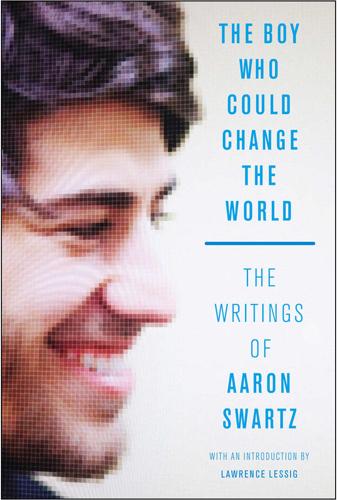
The Boy Who Could Change the World: The Writings of Aaron Swartz
by
Aaron Swartz
and
Lawrence Lessig
Published 5 Jan 2016
Preventing kids from experiencing failure is just childish coddling!), but for now let’s just be concerned with what works. Getting people to be OK with being wrong seems tough, if only because everybody I know has this problem to a greater or lesser degree. There are occasional exceptions—mavericks like Richard Feynman (why do you care what other people think?) often seem fearless, although it’s hard to gauge how much of that was staged—but these just seem random, with no patterns suggesting why. It seems quite likely that a lot of the fear is induced by a goal-oriented educational system, obsessed with grades for work (A, B, C) and grades for students (1st, 2nd, 3rd).
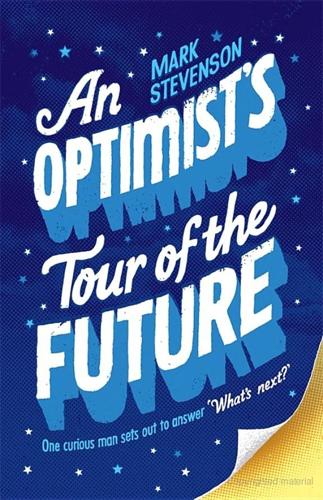
An Optimist's Tour of the Future
by
Mark Stevenson
Published 4 Dec 2010
But the MIT prodigy who dreamed up molecular machines was shoved aside by big science – and now he’s an industry outcast.’ No wonder he doesn’t like talking to writers. Nanotechnology as an idea actually predates Drexler by a quarter of a century. Accepted history is that the field was born in a 1959 lecture entitled ‘There’s Plenty of Room at the Bottom’ by the late great physicist Richard Feynman. For a long time the talk remained a little-quoted curio, but it has gained prominence retrospectively largely due to Drexler popularizing it. During his talk, given to the annual meeting of the American Physical Society at the California Institute of Technology (Caltech), Feynman considered the possibility of writing the contents of the Encyclopaedia Britannica onto the head of a pin and concluded, if one could arrange atoms precisely to form letters, that not only could you get the encyclopaedia on the head of a pin, you could get all the information that mankind had ever recorded in books in a small pamphlet.
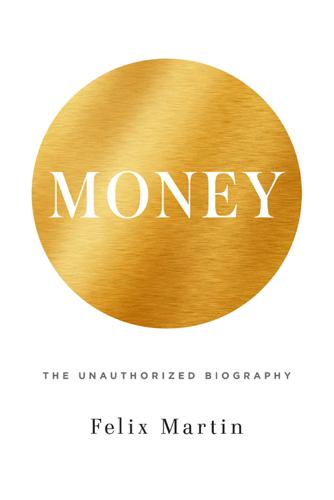
Money: The Unauthorized Biography
by
Felix Martin
Published 5 Jun 2013
And why does it matter if it’s a social technology that doesn’t necessarily depend upon the state?” These were fair questions, I answered. All I had been arguing for ultimately, was a simple change of perspective. But simple changes of perspective can have dramatic consequences. My own powers of persuasion were wilting. So I turned to a favourite story of the great physicist Richard Feynman for help. In one of his famous television lectures on physics, Feynman wanted to convey how, in science, a small change of perspective can sometimes produce a radically different view of the world—and how our preconceptions might make that change of perspective seem counter-intuitive.45 He gave the example of how the static electricity generated by using a plastic comb can be used to levitate a piece of paper.
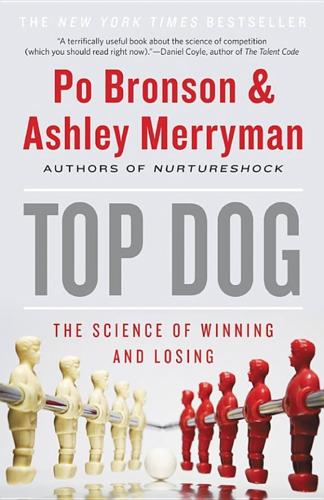
Top Dog: The Science of Winning and Losing
by
Po Bronson
and
Ashley Merryman
Published 19 Feb 2013
Paper Presentation at IACM 18th Annual Conference, Amsterdam, http://bit.ly/O7TNuJ (2005) Gibson, Cristina B., & Dana M. McDaniel, “Moving beyond Conventional Wisdom: Advancements in Cross-Cultural Theories of Leadership, Conflict, and Teams,” Perspectives on Psychological Science, vol. 5(4), pp. 450–462 (2010) Gleick, James, Genius: The Life of Science of Richard Feynman, New York: Vintage Books (1993) Hong, Sung-Mook, & Salvatora Faedda, “Refinement of the Hong Psychological Reactance Scale,” Educational and Psychological Measurement, vol. 56(1), pp. 173–182 (1996) Kearns Goodwin, Doris, Team of Rivals, New York: Simon & Schuster (2005) Kozlowski, Steve W.
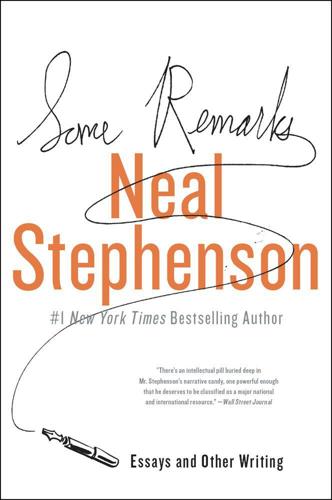
Some Remarks
by
Neal Stephenson
Published 6 Aug 2012
The change in point of view from physical trajectories in Cartesian space to action in state space is nonetheless significant. It is a further step away from the reductionist and toward the global approach. It seems to inject a teleological aspect that is not present in the older formulation, and so has occasioned some introspection among philosophically inclined scientists. In his Lectures on Physics, Richard Feynman interpolated a single, anomalous chapter on the topic, simply because of his abiding fascination with it. It allows the physicist to predict the behavior of a complex system without having to work out the detailed interactions among its physical atoms. It leads to important results from thermodynamics and it is directly applicable to quantum mechanics.
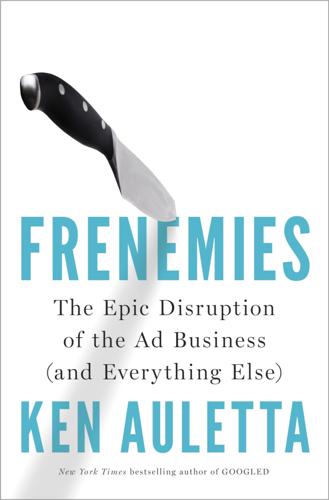
Frenemies: The Epic Disruption of the Ad Business
by
Ken Auletta
Published 4 Jun 2018
The Four: The Hidden DNA of Amazon, Apple, Facebook, and Google. New York: Portfolio|Penguin, 2017. Gates, Bill. Business @ the Speed of Thought: Using a Digital Nervous System. New York: Warner Books, 1999. Gates, Bill. The Road Ahead. New York: Viking, 1995. Gleick, James. Genius: The Life and Science of Richard Feynman. New York: Vintage Books, 1993. Goodrum, Charles, and Helen Dalrymple. Advertising in America: The First 200 Years. New York: Harry N. Abrams, 1990. Goodson, Scott. Uprising: How to Build a Brand—and Change the World—by Sparking Cultural Movements. New York: McGraw-Hill, 2011. Greenberg, David.
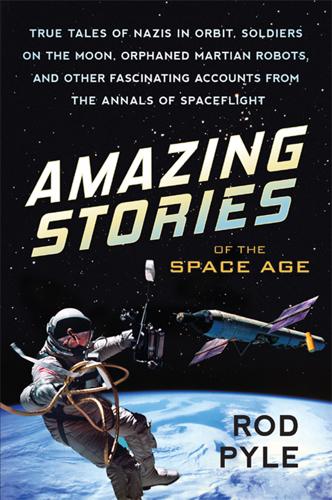
Amazing Stories of the Space Age
by
Rod Pyle
Published 21 Dec 2016
With fuel raining down from the top of the ET, and with structural loads shifting and the aerodynamics of the vehicle compromised, the shuttle broke up and the fuel ignited, creating a huge fireball. While the crew cabin of the orbiter was blown clear, and continued ascending until it arced into the ocean, survival was impossible. There was no abort system for that phase of the flight—when the SRBs were burning, you were along for the ride no matter what. As the famed physicist Richard Feynman, who was a member of the investigation board, pointed out, the O-rings had not been tested below 50°F. They became brittle when cold, as he famously demonstrated by immersing a piece of one in a glass of ice water and snapping it in two. He ended his summary with, “For a successful technology, reality must take precedence over public relations, for nature cannot be fooled.”5 There was no better summary of the relaxed safety culture that had taken hold at NASA prior to the accident.
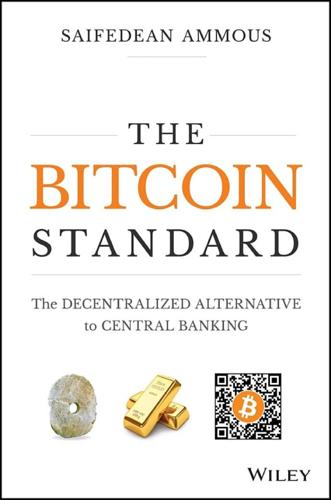
The Bitcoin Standard: The Decentralized Alternative to Central Banking
by
Saifedean Ammous
Published 23 Mar 2018
“Bitcoin is not important, but the underlying blockchain technology is what holds promise” is a mantra that has been repeated ad nauseam between 2014 and 2017 by banking executives, journalists, and politicians, who all share one thing in common: a lack of understanding of how Bitcoin actually works. (See Figure 22.) Figure 22 Blockchain decision chart. The fixation with blockchain technology is a great example of “cargo cult science,” an idea popularized by physicist Richard Feynman. The story goes that the U.S. military established airplane landing strips to aid in military operations on an island in the South Pacific Ocean during World War II. The airplanes would usually bring gifts to the local inhabitants of the island, who used to enjoy them immensely. After the war ended and the airplanes stopped landing on the strip, the locals tried their best to bring the airplanes and their cargo back.
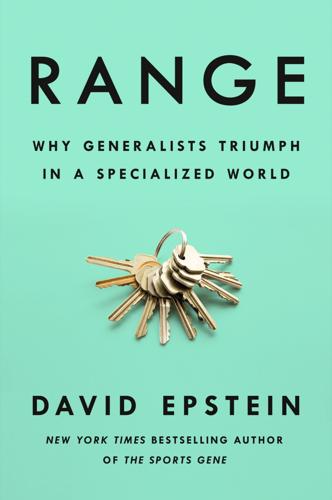
Range: Why Generalists Triumph in a Specialized World
by
David Epstein
Published 1 Mar 2019
Decades later, an astronaut who flew on the space shuttle, both before and after Challenger, and then became NASA’s chief of safety and mission assurance, recounted what the “In God We Trust, All Others Bring Data” plaque had meant to him: “Between the lines it suggested that, ‘We’re not interested in your opinion on things. If you have data, we’ll listen, but your opinion is not requested here.’” Physicist and Nobel laureate Richard Feynman was one of the members of the commission that investigated the Challenger, and in one hearing he admonished a NASA manager for repeating that Boisjoly’s data did not prove his point. “When you don’t have any data,” Feynman said, “you have to use reason.” These are, by definition, wicked situations.
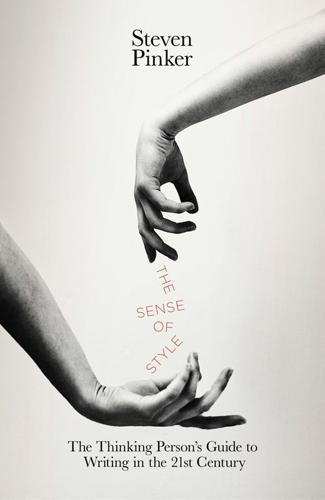
The Sense of Style: The Thinking Person's Guide to Writing in the 21st Century
by
Steven Pinker
Published 1 Jan 2014
The authors write as if everyone knows what the “rabbit illusion” is, but I’ve been in this business for nearly forty years and had never heard of it. Nor does their explanation enlighten. How are we supposed to visualize “a stimulus,” “poststimulus events,” and “the way in which a stimulus is ultimately perceived”? And what does any of this have to do with rabbits? Richard Feynman once wrote, “If you ever hear yourself saying, ‘I think I understand this,’ that means you don’t.” Though the article had been written for the likes of me, the best I could say after reading this explanation was, “I think I understand this.” So I did a bit of digging and uncovered a Cutaneous Rabbit Illusion, in which if you close your eyes and someone taps you a few times on the wrist, then on the elbow, and then on the shoulder, it feels like a string of taps running up the length of your arm, like a hopping rabbit.
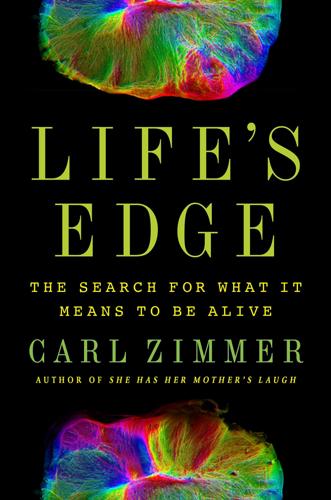
Life's Edge: The Search for What It Means to Be Alive
by
Carl Zimmer
Published 9 Mar 2021
But their research remained little more than a game of trial and error for decades. Ordinary physics seemed unable to explain it, and there was no rhyme or reason to why some substances were superconductive and not others. Albert Einstein tried to explain superconductivity with an elegant theory, which turned out to be wrong. So did Niels Bohr, Richard Feynman, and other leading figures in twentieth-century physics. Finally, in the 1950s, John Bardeen, Leon N. Cooper, and Robert Schrieffer came up with a theory that made sense of the senseless. Resistance is the result of electrons hopping around in a disorderly way, sending off the energy of a current in all directions.
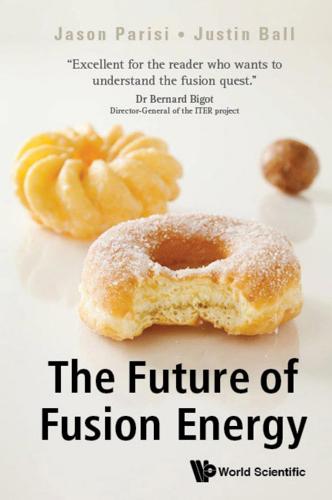
The Future of Fusion Energy
by
Jason Parisi
and
Justin Ball
Published 18 Dec 2018
Notice that the turbulence is very elongated along the magnetic field lines and narrow across them. Turbulence isn’t a new problem (see Leonardo da Vinci’s study in Figure 4.22). Understanding its behavior is important for designing cars, predicting weather, building bridges, and much more. The famous Nobel prize-winning physicist Richard Feynman described it as the most important unsolved problem of classical physics. Another great physicist, Horace Lamb, is reported to have said, “I am an old man now, and when I die and go to Heaven there are two matters on which I hope for enlightenment. One is quantum electrodynamics and the other is the turbulent motion of fluids.
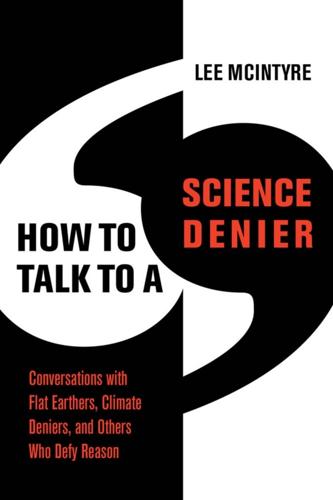
How to Talk to a Science Denier: Conversations With Flat Earthers, Climate Deniers, and Others Who Defy Reason
by
Lee McIntyre
Published 14 Sep 2021
Esther Inglis-Arkell, “A Historic Experiment Shows Why We Might Not Want to Debate Fanatics,” Gizmodo, August 27, 2014, https://io9.gizmodo.com/a-historic-experiment-shows-why-we-might-not-want-to-de-1627339811 For a similar, more contemporary story, see Jim Underdown, “The Salton Sea Flat Earth Test: When Skeptics Meet Deniers,” Skeptical Inquirer 42, no. 6 (November/December 2018), https://skepticalinquirer.org/2018/11/the-salton-sea-flat-earth-test-when-skeptics-meet-deniers/. 25. For more on science deniers’ mistaken conceptions of science, see chapter 2 of my book The Scientific Attitude. 26. This point is elegantly made by Nobel Prize–winning physicist Richard Feynman in one of his lectures, “The Essence of Science”: https://www.youtube.com/watch?v=LIxvQMhttq4. 27. There is actually a hypothesis for the last one … a competitor to Flat Earthism that is perhaps even more ludicrous. Beckett Mufson, “Apparently, Some People Think the Earth Is Shaped Like a Donut,” Vice, November 13, 2018, https://www.vice.com/en_us/article/mbyak8/apparently-some-people-believe-the-earth-is-shaped-like-a-donut-1. 28.

Screenplay: The Foundations of Screenwriting
by
Syd Field
Published 17 Dec 2007
Build toward the Plot Point at the end of the act. Experiment with it. The cards are for you—find your own method to make them work for your story. Do it. 13 Screenplay Form “Sometimes, the laws of Nature are so simple, we have to rise above the complexity of scientific thought to see them.” —Richard Feynman Nobel Prize–winning physicist Several years ago, I was conducting one of my seven-week screenwriting workshops, and one of the participants was a prominent television news reporter for the NBC Evening News. A graduate of NYU, he had an advanced journalism degree from Stanford and had worked his way up the corporate ladder to become skilled and proficient in his chosen career.

How the Mind Works
by
Steven Pinker
Published 1 Jan 1997
On another planet, or on this one if we could rewind the tape of evolution and let it happen again, they could just as easily go the other way. Physicists used to think that this was true for everything in the universe. Wolfgang Pauli wrote, “I do not believe that the Lord is a weak left-hander,” and Richard Feynman bet fifty dollars to one (he was unwilling to bet a hundred) that no experiment would ever reveal a law of nature that looked different through the looking glass. He lost. The cobalt 60 nucleus is said to spin counterclockwise if you look down on its north pole, but that description by itself is circular because “north pole” is simply what we call the end of the axis from which a rotation looks counterclockwise.
…
They absorb tens of thousands of problems and solutions, so no challenge is completely new and they can draw on a vast repertoire of motifs and strategies. They keep an eye on the competition and a finger to the wind, and are either discriminating or lucky in their choice of problems. (The unlucky ones, however talented, aren’t remembered as geniuses.) They are mindful of the esteem of others and of their place in history. (The physicist Richard Feynman wrote two books describing how brilliant, irreverent, and admired he was and called one of them What Do You Care What Other People Think?) They work day and night, and leave us with many works of subgenius. (Wallace spent the end of his career trying to communicate with the dead.) Their interludes away from a problem are helpful not because it ferments in the unconscious but because they are exhausted and need the rest (and possibly so they can forget blind alleys).
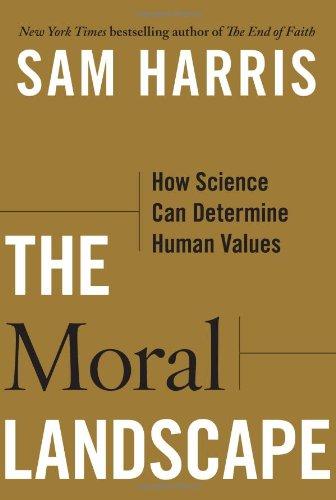
The Moral Landscape: How Science Can Determine Human Values
by
Sam Harris
Published 5 Oct 2010
As was the case with Harris’s previous books, readers are bound to come away with previously firm convictions about the world challenged, and a vital new awareness about the nature and value of science and reason in our lives.” —Lawrence M. Krauss, Foundation Professor and Director of the Origins Project at Arizona State University and author of The Physics of Star Trek and Quantum Man: Richard Feynman’s Life in Science ALSO BY SAM HARRIS The End of Faith Letter to a Christian Nation Free Press A Division of Simon & Schuster, Inc. 1230 Avenue of the Americas New York, NY 10020 www.SimonandSchuster.com Copyright © 2010 by Sam Harris All rights reserved, including the right to reproduce this book or portions thereof in any form whatsoever.

The Master Algorithm: How the Quest for the Ultimate Learning Machine Will Remake Our World
by
Pedro Domingos
Published 21 Sep 2015
It also helps that we don’t really have to specify an algorithm ourselves all the way down to individual transistors; we can use preexisting algorithms as building blocks, and there’s a huge number of them to choose from. Algorithms are an exacting standard. It’s often said that you don’t really understand something until you can express it as an algorithm. (As Richard Feynman said, “What I cannot create, I do not understand.”) Equations, the bread and butter of physicists and engineers, are really just a special kind of algorithm. For example, Newton’s second law, arguably the most important equation of all time, tells you to compute the net force on an object by multiplying its mass by its acceleration.
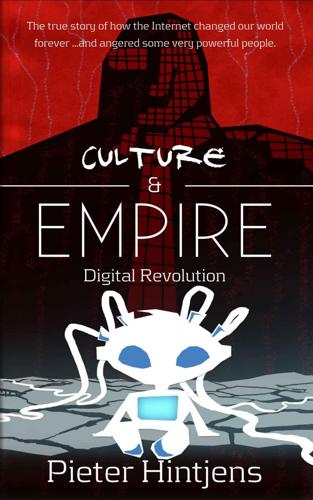
Culture & Empire: Digital Revolution
by
Pieter Hintjens
Published 11 Mar 2013
It is a vast challenge, like an incoming tidal wave, which I trust the generations to come will appreciate we understood, and were prepared to face. There is no 1% and 99%. There is only 100%. We are one planet, one species, and we live or die together. Postface Thank you for downloading or buying this book. I hope it was as fun to read, and as disturbing, as it was to write. As Richard Feynman said, "Our imagination is stretched to the utmost, not, as in fiction, to imagine things which are not really there, but just to comprehend those things which are there." Please do move beyond reading, to action. Here are some things you can do today: Discuss "Culture & Empire: Digital Revolution" on your blog, on Amazon.com, or on hintjens.com.

The Evolution of Everything: How New Ideas Emerge
by
Matt Ridley
Certainly, when doubters make the arguments above they are often met with a series of largely religious arguments: that they are ‘deniers’ of the truth, that their position is morally wrong because it ignores the needs of posterity, or that they should accept the majority consensus. But the whole point of science, the whole thrust of the Enlightenment, is the rejection of arguments from authority. Science, said Richard Feynman, is the belief in the ignorance of experts. Observation and experiment trump scripture. To hear even some scientists, at least in the field of climate, insisting that there is only one true voice of authority, is to be reminded of religion, not enlightenment. Besides, there is near scientific unanimity only that there will be some warming, not that it will be dangerous.
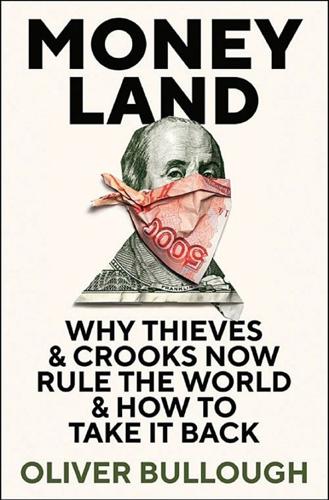
Moneyland: Why Thieves and Crooks Now Rule the World and How to Take It Back
by
Oliver Bullough
Published 5 Sep 2018
Most importantly, if you can structure your assets so they are held in the United States, your government will never find out about them (I’ll show you how later), whereas they will find out about everything owned at home. There will be plenty more about this pick and mix approach to legislation later: it’s the subject of this book. The physicist Richard Feynman supposedly once said: ‘If you think you understand quantum mechanics, you don’t understand quantum mechanics.’ I feel the same way about the way offshore structures have warped the fabric of the world. But if this dizzying realisation sends me out of the house and away from my screen, there’s no escaping it.
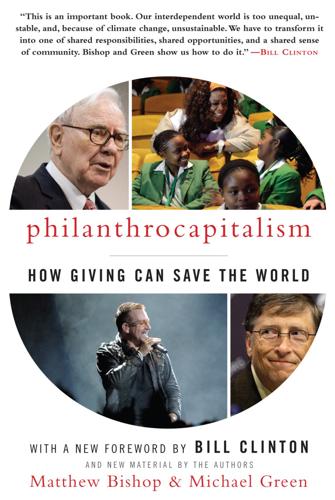
Philanthrocapitalism
by
Matthew Bishop
,
Michael Green
and
Bill Clinton
Published 29 Sep 2008
Developing guidelines for such hard-to-measure prizes is one reason why the foundation says it needs $50 million for its operating costs, which will support a staff of forty “prize experts” who will identify suitable prizes, write the rules, and try to generate public excitement. In one notorious case, a nanotechnology prize was devised by legendary physicist Richard Feynman for designing a micro-engine. The prize was won but the successful solution was not replicable, and was thus of no use. The X Prize Foundation plans to prescreen all applicants, to reduce the risk of them coming up with prize-winning solutions that won’t generate the intended social impact. That risks deterring the sort of out-of-the-box thinkers that prizes may be the best means to attract, however, though the X Prize Foundation says that it “wants to attract mavericks” and by May 2007 had already received over three hundred expressions of interest in its new automotive prize.
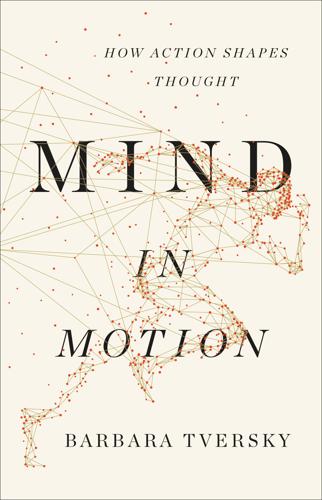
Mind in Motion: How Action Shapes Thought
by
Barbara Tversky
Published 20 May 2019
Places tell us what they are and what we can do in them. Meaning arrives without words, too fast for words. We use that meaning to understand what is happening and to orchestrate our own behavior. And we use it to imagine worlds that have never been. Just as meanings can be wordless, so can thinking, an insight Richard Feynman came to as a child: When I was a kid growing up in Far Rockaway, I had a friend named Bernie Walker. We both had “labs” at home, and we would do various “experiments.” One time, we were discussing something—we must have been eleven or twelve at the time—and I said, “But thinking is nothing but talking to yourself inside.”
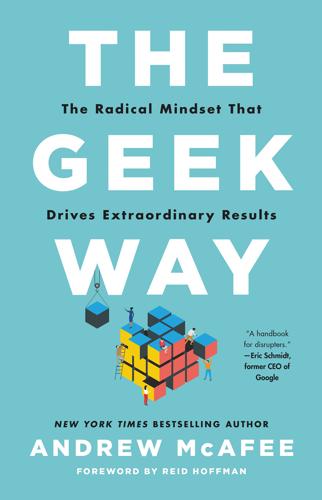
The Geek Way: The Radical Mindset That Drives Extraordinary Results
by
Andrew McAfee
Published 14 Nov 2023
So there’s a clear ultimate answer to that age-old riddle: the egg came first. 13 Also, the mere fact that elders have lived a long time in a challenging environment indicates that they know what they’re doing, and should be listened to. CHAPTER 4 Science The Press Secretary Versus the Iron Rule It does not make any difference how beautiful your guess is. It does not make any difference how smart you are, who made the guess, or what his name is—if it disagrees with experiment it is wrong. That is all there is to it. —Richard Feynman Management scholar Margaret Neale has what every public speaker wants: a foolproof live demonstration. That’s almost an oxymoron. Anything that can go wrong in front of an audience usually does, and many demos flop or fail. But when Neale takes the stage carrying a glass bottle full of paper clips, she knows what’s going to happen: she’s going to reveal to the audience members how bad they are at a simple task, and how most of them are bad in the same odd way.

The Coming Wave: Technology, Power, and the Twenty-First Century's Greatest Dilemma
by
Mustafa Suleyman
Published 4 Sep 2023
That helps with the task ahead, where they will need to create and maintain resilient social systems, welfare nets, security architectures, and governance mechanisms capable of surviving severe stress. But they also need to know, in detail, what is happening: right now they’re operating blind in a hurricane. The physicist Richard Feynman famously said, “What I cannot create, I do not understand.” Today this couldn’t be more true of governments and technology. I think the government needs to get way more involved, back to building real technology, setting standards, and nurturing in-house capability. It needs to compete for talent and hardware in the open market.
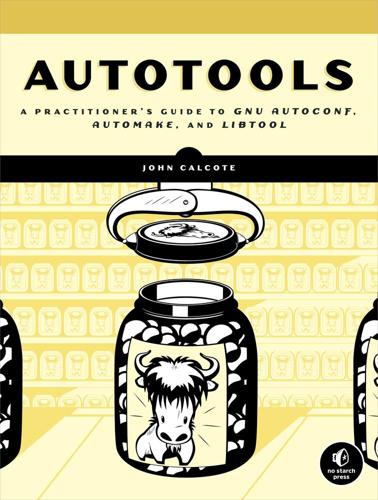
Autotools
by
John Calcote
Published 20 Jul 2010
I can't really emphasize this enough: Chapter 2 is one of the most important chapters in this book. Chapter 2. UNDERSTANDING THE GNU CODING STANDARDS I don't know what's the matter with people: they don't learn by understanding, they learn by some other way—by rote or something. Their knowledge is so fragile! — Richard Feynman Surely You're Joking, Mr. Feynman! In Chapter 1, I gave an overview of the GNU Autotools and some resources that can help reduce the learning curve required to master them. In this chapter, we're going to step back a little and examine project organization techniques that you can apply to any project, not just one that uses the Autotools.
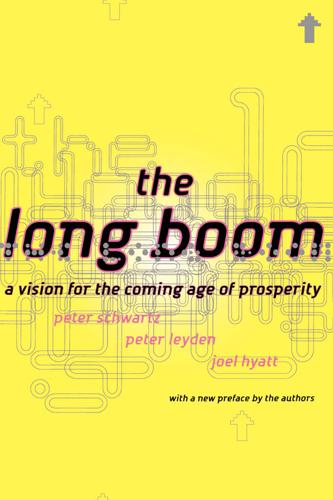
The Long Boom: A Vision for the Coming Age of Prosperity
by
Peter Schwartz
,
Peter Leyden
and
Joel Hyatt
Published 18 Oct 2000
He went on to describe a new field where virtually nothing had been done but that held enormous potential: working with individual atoms, designing new kinds of microscopic tools to work at that level, and devising new ways of manufacturing in the vast spaces in the world of the very, very small. The more he talked, the more jaws dropped. Nobody had really thought about the possibility of working at that scale. It seemed impossible. But there was the great Richard Feynman saying that there was nothing in the laws of known physics that would prevent us from working down there. As he put it, "We are not doing it simply because we haven't gotten around to it." He fur ther goaded them with "In the year 2000, when they look back at this age, they will wonder why it was not until the year 1960 that anybody began seriously to move in this direction."
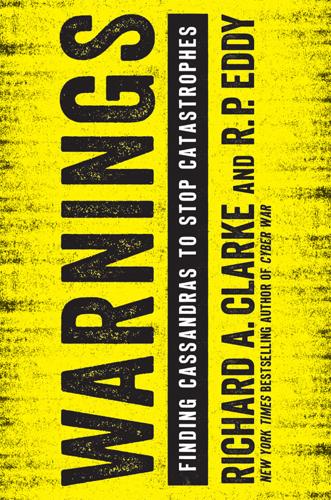
Warnings
by
Richard A. Clarke
Published 10 Apr 2017
After the hearing, surrounded by reporters, Hansen said, “It is time to stop waffling so much and say that the evidence is pretty strong that the greenhouse effect is here.” The next day his words were the New York Times “Quotation of the Day.”7 We were curious about what it took for Hansen to see global warming first, and in particular, if it required a lot of individual resolve or belief in himself. He referenced the physicist and Nobel Laureate Richard Feynman: “Well, I’m not a person who has a great deal of self-confidence. And I’ve considered that an advantage; Feynman says that ‘You have to be very skeptical of any conclusion, especially your own because you are the easiest person to fool.’ Often you start out, you want some answer, you think you know some answer and you try to persuade yourself.
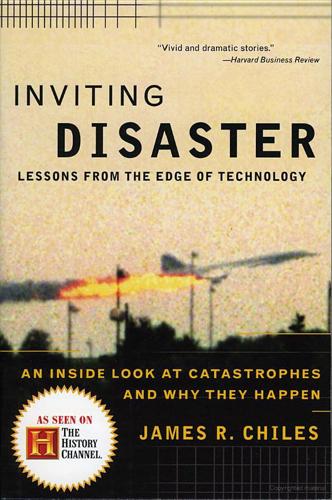
Inviting Disaster
by
James R. Chiles
Published 7 Jul 2008
The worst damage occurred during the January 1985 cold-weather launch of the Discovery, when five O-rings sustained heat damage. You may have seen the effect of cold weather on rubber. A garden hose left out in winter weather turns as stiff as a pipe regardless of whether it has water in it. During the post-accident investigation, physicist Richard Feynman would demonstrate the principle by dipping a segment of an O-ring into a glass of ice water. In August 1985 top officials from Marshall flew to Utah to talk over the problem with Morton Thiokol management. Roger Boisjoly, a seal engineer with Thiokol, got the assignment to put together a “Seal Task Force” to come up with a quick solution.
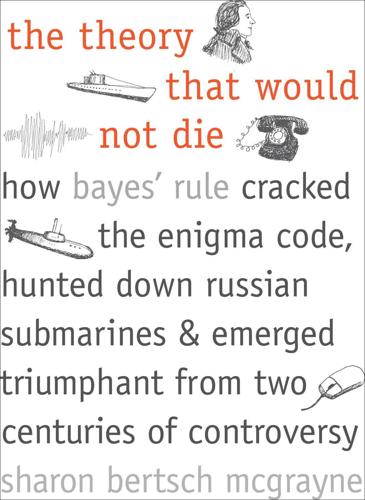
The Theory That Would Not Die: How Bayes' Rule Cracked the Enigma Code, Hunted Down Russian Submarines, and Emerged Triumphant From Two Centuries of Controversy
by
Sharon Bertsch McGrayne
Published 16 May 2011
In the autumn of 1953, when Jay Orear, one of Fermi’s graduate students, was struggling with a problem involving three unknown quantities, Fermi told him to use a simple analytic method that he called Bayes’ theorem and that he had derived from C. F. Gauss. A year later, when Fermi died at the age of 53, Bayes’ rule lost a stellar supporter in the physical sciences. Fermi was not the only important physicist to use Bayesian methods during this period. A few years later, at Cornell University, Richard Feynman suggested using Bayes’ rule to compare contending theories in physics. Feynman would later dramatize a Bayesian study by blaming rigid O-rings for the Challenger shuttle explosion. During this exciting period in 1950s Chicago, Savage and Allen Wallis founded the university’s statistics department, and Savage attracted a number of young stars in the field.

Code: The Hidden Language of Computer Hardware and Software
by
Charles Petzold
Published 28 Sep 1999
The final for loop prints out all the prime numbers, which are the values of i where a[i] is true. Sometimes people squabble over whether programming is an art or a science. On the one hand, you have college curricula in Computer Science, and on the other hand, you have books such as Donald Knuth's famous The Art of Computer Programming series. "Rather," wrote physicist Richard Feynman, "computer science is like engineering—it is all about getting something to do something." If you ask 100 different people to write a program that prints out prime numbers, you'll get 100 different solutions. Even those programmers who use the Sieve of Eratosthenes won't implement it in precisely the same way that I did.
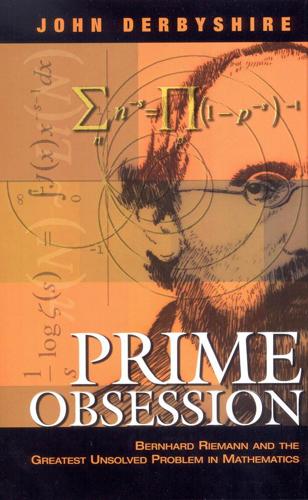
Prime Obsession:: Bernhard Riemann and the Greatest Unsolved Problem in Mathematics
by
John Derbyshire
Published 14 Apr 2003
Hard proofs are in desperately short supply in this area. In part this is because, following the link established by Montgomery, so much of the recent thinking about the RH has been done by physicists and applied mathematicians. Sir Michael Berry110 likes to quote the Nobel Prize-winning physicist Richard Feynman in this context, “A great deal more is known than has been proved.” In part it is also because the RH is a very, very tough problem. There is such an immense quantity of literature on the RH now that you have to keep reminding yourself of the truth that very little is known for certain about the zeros of the zeta function, and even with all the rising interest during the past few years, results that are mathematically watertight still come only occasionally, at long intervals.

Who Owns the Future?
by
Jaron Lanier
Published 6 May 2013
But also, the very thought of slogging through someone else’s procedures to gain abstract approval seemed unacceptably retro and irrelevant. I must admit I was utterly dependent on the very institutions I neglected, for despite my not being a student, they introduced me to inspirational figures and mentors. Without MIT or Caltech, I imagine figures like Marvin Minsky or Richard Feynman would have been employed deep in the bunkers of Los Alamos or Bell Labs at the time, which were places less likely to be generous about having a weird kid roaming the hallways without official license. Everyone in the high-tech world appreciates the universities deeply. Yet we are happy to rush headlong into flattening the levees that sustain them, just as we did with music, journalism, and photography.

More Everything Forever: AI Overlords, Space Empires, and Silicon Valley's Crusade to Control the Fate of Humanity
by
Adam Becker
Published 14 Jun 2025
Storrs Hall, an engineer, author, and colleague of Drexler’s, in 2021.111 To illustrate this, Hall made an estimate, based on Drexler’s work, of how long it would take to reconstruct all the “capital stock” of the United States—“to rebuild every single building, factory, highway, railroad, bridge, airplane, train, automobile, truck, and ship,” as Hall put it—starting with a single kilogram of “mature nanotechnology.” Hall’s answer, relying on the exponential growth of Drexler-style nanomachines, was one week.112 Drexler wasn’t the first person to think about the possibility of such small machines. The physicist Richard Feynman gave a talk on the idea in 1959, and a few years later Marvin Minsky wrote about it in one of the essays he contributed to The Scientist Speculates. But Drexler was the first to give a detailed picture of what such nanobots might mean for expanding the capabilities of humanity. His vision of a limitless technology fueled a profusion of dreams and desires.

These Strange New Minds: How AI Learned to Talk and What It Means
by
Christopher Summerfield
Published 11 Mar 2025
Skip Notes *1 For example, here is an argument from one 2021 paper: ‘We believe unchecked use of the Computational Metaphor contributes to […] harms by falsely attributing human-like capabilities to AI-labelled technologies, and aiding in a disregard for the complexity of social and human experiences’ (Baria and Cross, 2021). *2 The rude comments about biology and maths are both paraphrases of quotes by famous physicists (Ernest Rutherford and Richard Feynman respectively). *3 Lobina, 2023. 19. Duck or Parrot? A popular exceptionalist argument is that neural networks are incapable of ever knowing anything because they are just statistical models. Here is a prominent academic and highly outspoken LLM critic putting it bluntly in 2022: Neither LaMDA nor any of its cousins (GPT-3) are remotely intelligent.

The Optimist: Sam Altman, OpenAI, and the Race to Invent the Future
by
Keach Hagey
Published 19 May 2025
But, like all neural networks, they are largely black boxes: as of this writing, even experts don’t truly understand how they work. These dynamics, unleashed by the combination of Sutskever’s insight and Radford’s language research, would come to define the generative AI boom. “There’s this thing that Ilya and I used to talk about, the Feynman method of being a genius,” Brockman said, referring to the famous physicist Richard Feynman, who worked on the Manhattan Project and won the Nobel Prize. “The Feynman method is you have a set of problems you care about, you kind of know what the missing piece is, and you wait for yourself or some other researcher to invent one of those missing pieces. Then you just take the missing piece, you plug it in, and you’re a genius.
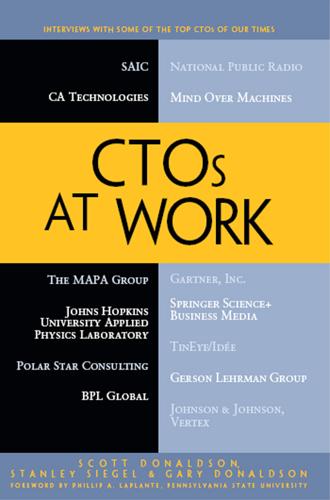
CTOs at Work
by
Scott Donaldson
,
Stanley Siegel
and
Gary Donaldson
Published 13 Jan 2012
That was a major point I would say as well; playing with his early HP calculators, learning how to program them was certainly an influencing point. My partner in my first company, who handled most of the finance, while I worried about the computer science side of things, was a large influence in learning how to put a company together and how to run it. Other influences? I would say reading Richard Feynman's autobiographies was something that I think influenced a lot of technical people, including myself. These were terrific books telling the story of a brilliant physicist and his random path through life. There were many random events that influenced his life, and reading his stories would always show so much humor and so much pleasure in what he was doing that I wanted to get a lot of pleasure out of what I work on and work on things that I have control over.
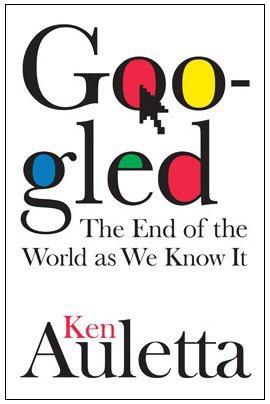
Googled: The End of the World as We Know It
by
Ken Auletta
Published 1 Jan 2009
Perhaps this was but one reflection of an unsettled home; his parents divorced when he was eight, and his father married a colleague at Michigan State. Carl, nine years older, left home after high school to get a computer science degree. He later was a founder of eGroups.com, an Internet company sold to Yahoo in 2000 for about four hundred million dollars. Just as Sergey was fascinated by Richard Feynman, Larry was inspired at age twelve by a biography of Nikola Tesla, whose pioneering work led to the development of electricity, power grids, X-rays, and wireless communication. Tesla was an extraordinary but unsung scientist, an Edison without the fame or wealth and who, despite his discoveries, died bitter and destitute.
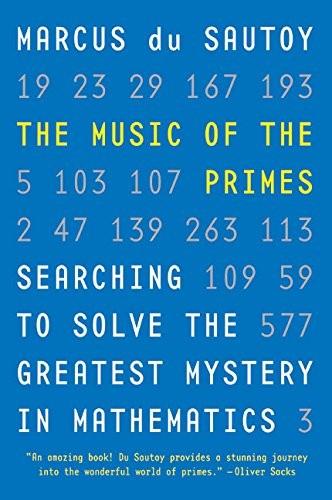
The Music of the Primes
by
Marcus Du Sautoy
Published 26 Apr 2004
Something else was bugging him: ‘I was a little bit troubled because I thought there was a message in what I had done and I didn’t know what the message was.’ However, it wasn’t Selberg who was to help Montgomery to interpret the message, but another member of the Princeton mafia. Dyson, the frog prince of physics The British physicist Freeman Dyson made his name just after the war by championing the maverick scientist Richard Feynman. After finishing his degree in Cambridge, Dyson won a fellowship to study physics at Cornell University. It was there that he met the young Feynman, who was developing a very unique and personal take on quantum physics. At first, many dismissed what Feynman had to say because they couldn’t understand the very personal language he was using.
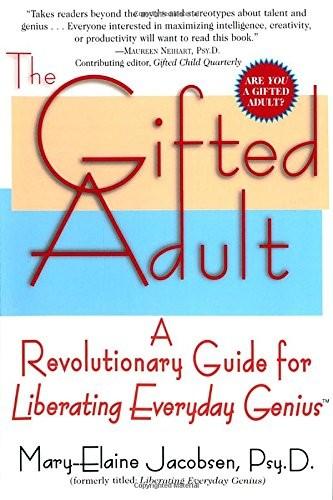
The Gifted Adult: A Revolutionary Guide for Liberating Everyday Genius(tm)
by
Mary-Elaine Jacobsen
Published 2 Nov 1999
Other scholars reported that many were celibate (Descartes), others were fatherless (Dickens) or motherless (Darwin). In the end, the piles of data illuminated nothing. Academics also tried to measure the links between intelligence and genius. But intelligence is not enough. Run-of-the-mill physicists have IQs much higher than Nobel Prize–winner Richard Feynman, widely acclaimed for his extraordinary genius, whose IQ was a merely respectable 122. Genius is not about scoring 1600 on the Scholastic Aptitude Test, mastering 14 languages at the age of seven, finishing Mensa exercises in record time, having an extraordinarily high IQ, or even being smart.… Too many people fail to answer opportunity’s knock at the door because they have to finish some preconceived plan.
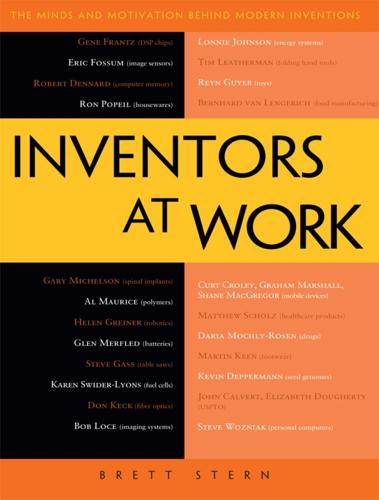
Inventors at Work: The Minds and Motivation Behind Modern Inventions
by
Brett Stern
Published 14 Oct 2012
There will be a new challenge, whether it’s trying to motivate my team, or a new project, or trying to operate in the chaos of invention. That’s what it’s all about. Stern: Do you have any professional heroes? People that you look up to? Deppermann: I think my number one is Steve Jobs. That should be pretty self-explanatory. Thomas Edison is one, and Richard Feynman, the physicist. It’s pretty interesting to see how people got to where they are. But also understanding what their thought processes were when they had their backs against the wall, trying to solve something. And if you look at the ones that are really successful, they failed a lot. I got a kick out of reading something about Abraham Lincoln and all the failures he had before he became president.
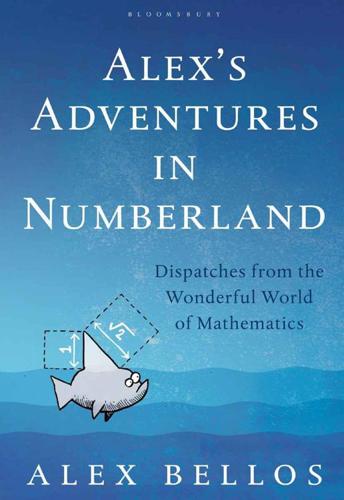
Alex's Adventures in Numberland
by
Alex Bellos
Published 3 Apr 2011
The first 0 comes in position 32, which is much later than expected if the digits are randomly distributed. The first time a digit is repeated six times consecutively is 999999 at the 762nd decimal place. The likelihood of six 9s occurring so early if they occur randomly is less than 0.1 percent. This sequence is known as the Feynman point, since physicist Richard Feynman once remarked that he wanted to memorize pi until that point and finish by saying ‘nine, nine, nine, nine, nine, nine, and so on’. The next time pi throws up six consecutive identical digits happens in position 193,034 and they are also 9s. Is this a message from beyond, and if so what is it saying?
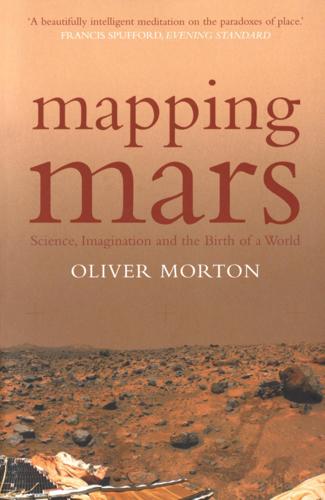
Mapping Mars: Science, Imagination and the Birth of a World
by
Oliver Morton
Published 15 Feb 2003
This is not quite the nineteenth-century assertion that “rain follows the plow”—an assertion that proved horribly untrue in the dust-bowl years—but it’s not terribly far off. Others suggest planetary engineering might be undertaken as a grand ecological experiment; Martyn Fogg’s book opens with a striking quotation from the physicist Richard Feynman, “What I cannot create, I do not understand.” Reengineering might be a moral act, an observant restitution on behalf of the hidden Martian biota, an ecopoiesis for bacteria and plants, rather than a terraforming for humans. It might be a spiritual act, the creation of a new wilderness as solace or penance.

AI 2041: Ten Visions for Our Future
by
Kai-Fu Lee
and
Qiufan Chen
Published 13 Sep 2021
Tackling a problem of this scale requires quantum computers, which will operate using the same quantum properties as the molecules they’re trying to simulate. QC can simultaneously simulate new compounds as new drugs, and model complex chemical reactions to it, to determine their efficacy. As the famous physicist Richard Feynman said in 1980, “If you want to make a simulation of nature, you’d better make it quantum mechanical.” QC will be able to model many complex natural phenomena that classical computers cannot fathom, even beyond drug discovery: for example, figuring how to counteract climate change, predicting pandemic risks, inventing new materials, exploring space, modeling our brains, and understanding quantum physics.
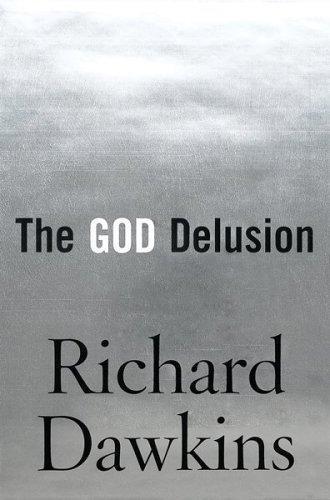
The God Delusion
by
Richard Dawkins
Published 12 Sep 2006
Where other science-fiction writers played on the oddness of science to arouse our sense of the mysterious, Douglas Adams used it to make us laugh (those who have read The Hitchhiker’s Guide to the Galaxy might think of the ‘infinite improbability drive’, for instance). Laughter is arguably the best response to some of the stranger paradoxes of modern physics. The alternative, I sometimes think, is to cry. Quantum mechanics, that rarefied pinnacle of twentieth-century scientific achievement, makes brilliantly successful predictions about the real world. Richard Feynman compared its precision to predicting a distance as great as the width of North America to an accuracy of one human hair’s breadth. This predictive success seems to mean that quantum theory has got to be true in some sense; as true as anything we know, even including the most down-to-earth common-sense facts.
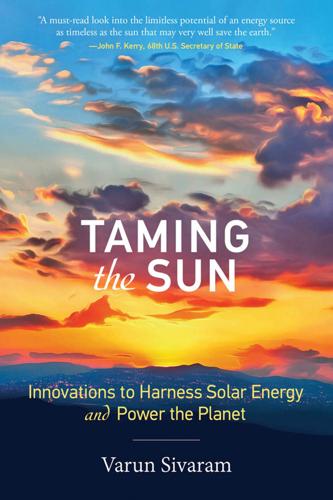
Taming the Sun: Innovations to Harness Solar Energy and Power the Planet
by
Varun Sivaram
Published 2 Mar 2018
Researchers are toying with more radical ways to improve organic solar cell efficiencies—such as relying on a quantum effect in which electrons are teleported out of the cell, obviating the need to fix all the potholes in an electron’s path—but those prospects are way down the road.36 Another exciting material for solar cells, “quantum dots,” could harness many more aspects of quantum mechanics. As the celebrated (and irreverent) physicist Richard Feynman quipped, “Nobody understands quantum mechanics.” Physics gets weird on the scale of nanometers (for reference, a nanometer is about the width of two silicon atoms)—and that weirdness is exactly what quantum dot solar cells would harness. Quantum dots are semiconductor particles that are only a few nanometers in diameter.
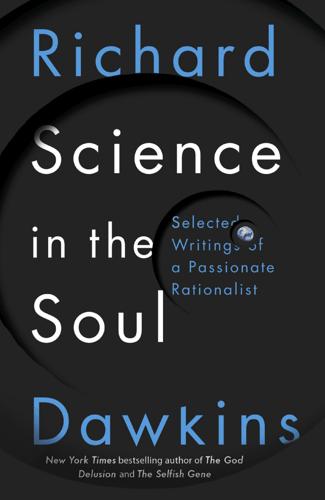
Science in the Soul: Selected Writings of a Passionate Rationalist
by
Richard Dawkins
Published 15 Mar 2017
Twentieth-century science can hurl a projectile along the right trajectory to intercept it, precisely computing and exploiting the gravitational slings of the solar system.*7 Quantum theory itself, whatever the indeterminacy at its heart, is spectacularly accurate in the experimental accuracy of its predictions. The late Richard Feynman assessed this accuracy as equivalent to knowing the distance between New York and Los Angeles to the width of one human hair. Here is no licence for anything-goes, intellectual flappers, with their quantum theology and quantum you-name-it. Cultural relativism is the most pernicious of these myths of twentieth-century retreat from Victorian certainty.
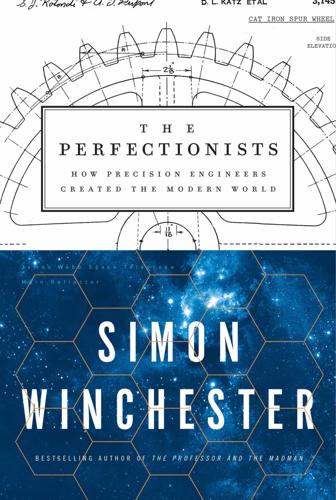
The Perfectionists: How Precision Engineers Created the Modern World
by
Simon Winchester
Published 7 May 2018
* Except, perhaps, to the makers of the Antikythera mechanism, mentioned in chapter 1, which, though it has the look of a high-precision instrument, manages to be wholly lacking in accuracy. It was made, however, more than two thousand years ago, so its makers can perhaps be forgiven. * Even Richard Feynman, everyone’s favorite twentieth-century polymath, who won the 1965 Nobel Prize for Physics, famously asserted, “I think I can safely say that nobody understands quantum mechanics.” * The f number of a lens, seldom explained, is essentially a measure of how much light can get from the outside world into the inside of a camera.

Evil Genes: Why Rome Fell, Hitler Rose, Enron Failed, and My Sister Stole My Mother's Boyfriend
by
Barbara Oakley Phd
Published 20 Oct 2008
In point of fact, it is mind-boggling that Duesberg would not be aware of, and obviously uninterested in looking at, that very well-known and relevant data. Incidentally, the foreword to Duesberg's book, Inventing the AIDS Virus, was written by Nobel Prize–winner Kary Mullis, who has also written of his abduction by aliens from his California forest hideaway. As Richard Feynman noted in a commencement address to CalTech: “The first principle is that you must not fool yourself—and you are the easiest person to fool. So you have to be very careful about that.” The reason it's so hard to be sure that “crackpots” aren't actually all they're cracked up to be is that occasionally, a seeming eccentric is proven correct.

Operation Chaos: The Vietnam Deserters Who Fought the CIA, the Brainwashers, and Themselves
by
Matthew Sweet
Published 13 Feb 2018
Not the relatively prestigious one he had abandoned—alma mater of Rosemary Clooney and Doris Day—but a place where his classmates, most two years his junior, were the children of farmers and employees at the Procter & Gamble factory. He thrived there. “In those days,” he said, “the system gave you second chances.” It also recognized talent. In 1954, Mike enrolled at Caltech, where he attended lectures by the physicist Richard Feynman. But the life did not suit him. He quit after a single term and began a bumpy four-college ride through an education system with limited sympathy for his preferred passions: by day, hermit-like occupation of the library among the shelves of Russian and German literature; by night, wandering around campus with a flask of gin and tonic, arguing about Kant and Hegel.
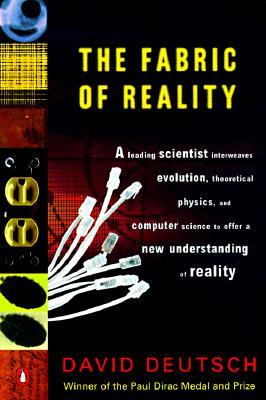
The Fabric of Reality
by
David Deutsch
Published 31 Mar 2012
All this is a far cry from multiplication where, as we have seen, the task of multiplying a pair of 250-digit numbers is a triviality on anyone's home computer. No one can even conceive of how one might factorize thousand-digit numbers, or million-digit numbers. At least, no one could conceive of it, until recently. In 1982 the physicist Richard Feynman considered the computer simulation of quantum-mechanical objects. His starting-point was something that had already been known for some time without its significance being appreciated, namely that predicting the behaviour of quantum-mechanical systems (or, as we can describe it, rendering quantum-mechanical environments in virtual reality) is in general an intractable task.
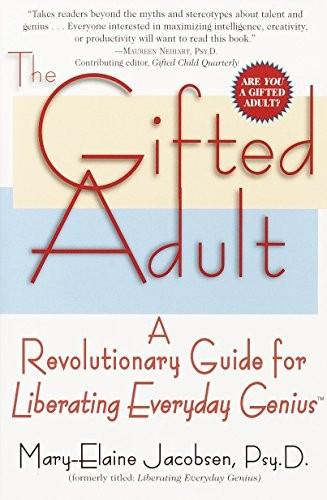
The Gifted Adult: A Revolutionary Guide for Liberating Everyday Genius(tm)
by
Mary-Elaine Jacobsen
Published 18 Feb 2015
Other scholars reported that many were celibate (Descartes), others were fatherless (Dickens) or motherless (Darwin). In the end, the piles of data illuminated nothing. Academics also tried to measure the links between intelligence and genius. But intelligence is not enough. Run-of-the-mill physicists have IQs much higher than Nobel Prize–winner Richard Feynman, widely acclaimed for his extraordinary genius, whose IQ was a merely respectable 122. Genius is not about scoring 1600 on the Scholastic Aptitude Test, mastering 14 languages at the age of seven, finishing Mensa exercises in record time, having an extraordinarily high IQ, or even being smart.… Too many people fail to answer opportunity’s knock at the door because they have to finish some preconceived plan.
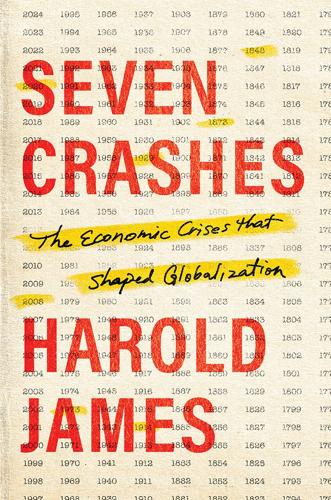
Seven Crashes: The Economic Crises That Shaped Globalization
by
Harold James
Published 15 Jan 2023
The results came too late, though, to produce any reelection boost for Donald Trump: Pfizer submitted its request for emergency approval of the vaccine by the Food and Drug Administration (FDA) on November 20, 2020, a fortnight after the election, and Moderna on November 30 (the approvals came on December 11 and December 18, respectively). The underlying technologies that offered solutions were not completely novel. Nanotechnology, the process used to deliver a genetic sequence of viral proteins to host cells, was probably inspired by a rather whimsical lecture by the later Nobelist Richard Feynman in 1959, titled “There’s Plenty of Room at the Bottom.” A decisive instrument, the scanning tunneling microspore, was pioneered in 1981, and in the 1990s research on nanotechnology exploded. In 2020 there was a clear problem, the question of vaccine delivery, that the technique addressed. The amounts spent by governments in promoting the rapid development of the vaccine, and in buying the products in advance, were probably the most effective government program ever measured in terms of the resulting savings for society, but also for the government.
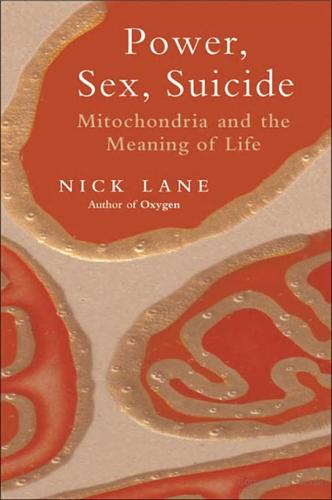
Power, Sex, Suicide: Mitochondria and the Meaning of Life
by
Nick Lane
Published 14 Oct 2005
All these chemicals (including, interestingly, aspirin and, indeed, ecstasy) uncouple the oxidation of glucose from the production of ATP in a similar fashion, but did not seem to share any kind of chemical common denominator. Uncoupling could not be explained in conventional terms. By the early 1960s, the field had begun to sink into a slough of despond. As Racker put it (in words reminiscent of Richard Feynman’s celebrated dictum on quantum mechanics): ‘Anyone who is not thoroughly confused just doesn’t understand the problem.’ Respiration generated energy in the form of ATP, but in a manner that did not defer to the basic rules of chemistry, indeed that seemed to flout them. What was going on? Even though these strange findings were crying out for a radical rethink, nobody was prepared for the shocking answer supplied by Peter Mitchell in 1961. 5 Proton Power Peter Mitchell was an outsider to the field of bioenergetics.
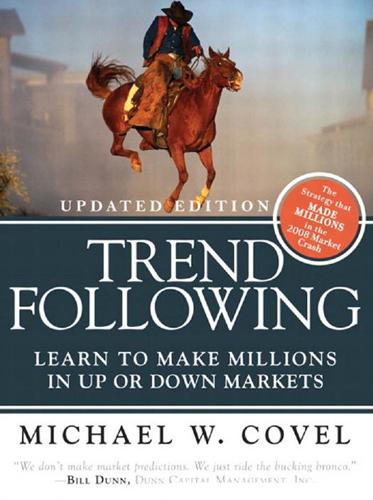
Trend Following: How Great Traders Make Millions in Up or Down Markets
by
Michael W. Covel
Published 19 Mar 2007
They are like surfboard riders, who study the movements of the waves, not in order to understand why they behave as they do, but simply in order to be on hand whenever they surge, to catch them at their crest, or as soon thereafter as possible to ride them as far as they possible can, and to dissemble before they change direction. Morton S. Baratz25 By honest I don’t mean that you only tell what’s true. But you make clear the entire situation. You make clear all the information that is required for somebody else who is intelligent to make up their mind. Richard Feynman Trend Following (Updated Edition): Learn to Make Millions in Up or Down Markets volatility and band-style breakouts. The average holding periods ranged from two weeks to one year. The results gave almost identical performance characteristics in periods covering the late 1980s, early 1990s, and late 1990s.

Exploding the Phone: The Untold Story of the Teenagers and Outlaws Who Hacked Ma Bell
by
Phil Lapsley
Published 5 Feb 2013
“Had that not worked I would have either had to make another theory or see why that wouldn’t work,” he says. Not simply trial and error but guided trial and error. Although Jojo didn’t know it at the time, the adults had a name for this. They called it the scientific method. Years later, Nobel Prize–winning physicist Richard Feynman would write, “The principle of science, the definition, almost, is the following: the test of all knowledge is experiment.” For Joe the telephone was much more than just an intellectual playground. It was a warm electronic bosom, a source of comfort. It was never too busy to spend time with him.
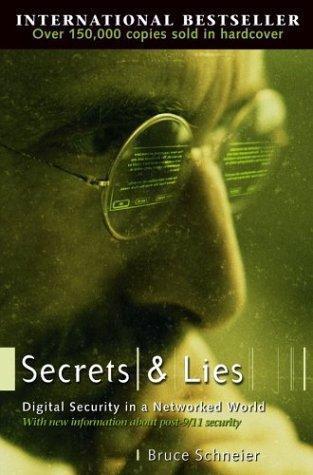
Secrets and Lies: Digital Security in a Networked World
by
Bruce Schneier
Published 1 Jan 2000
And their real work was secret knowledge:The phone network was a vast maze of information. They wanted to know the system better than the designers, and they wanted the ability to modify it to their will. Understanding how the phone system worked— that was the true prize. Other early hackers were ham-radio hobbyists and model-train enthusiasts. Richard Feynman was a hacker; read any of his books. Computer hackers follow these evolutionary lines. Or, they are the same genus operating on a new system. Computers, and networks in particular, are the new landscape to be explored. Networks provide the ultimate maze of steam tunnels, where a new hacking technique becomes a key that can open computer after computer.
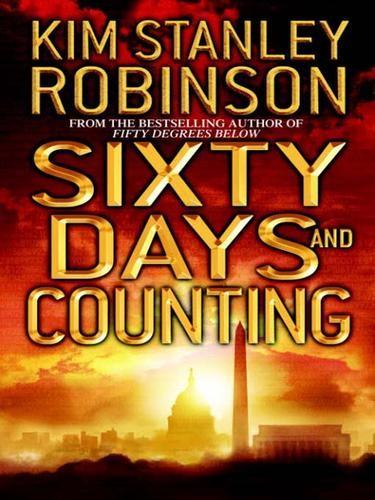
Sixty Days and Counting
by
Kim Stanley Robinson
Published 27 Feb 2007
They dug in, and Yann talked and drew on a whiteboard and clicked on the mouse, and typed like a madman, speed-talking all the while, free-associating as well as running a quick tutorial for Frank in his latest thinking, Frank squinting, frowning, asking questions, nodding, scribbling himself, asking more questions. Yann was now the leader of the pack, no doubt about it. It was as it would have been watching Richard Feynman chalkboarding quantum chromodynamics for the first time. A new understanding of some aspect of the unfolding of the world in time. Here they were in the heart of science, the basic activity, the mathematics of alchemy, discovered in the equations, matched against reality, and examined for its own internal logic as math.

The Shifts and the Shocks: What We've Learned--And Have Still to Learn--From the Financial Crisis
by
Martin Wolf
Published 24 Nov 2015
No other industry has the capacity to create such widespread economic and social damage and, for this very reason, no other industry benefits from such large implicit subsidies. Andrew Haldane of the Bank of England has elucidated the costs. He has argued that the present value of lost output caused by the recent financial crises may be ‘anywhere between one and five times annual GDP. As Nobel-prize winning physicist Richard Feynman observed, to call these numbers “astronomical” would be to do astronomy a disservice: there are only hundreds of billions of stars in the galaxy. “Economical” might be a better description.’60 Furthermore, adds Mr Haldane, the state provides a huge implicit subsidy to the financial sector, by insuring it against failure: ‘For UK banks, the average annual subsidy for the top five banks over these years [2007–09] was over £50 billion – roughly equal to UK banks’ annual profits prior to the crisis.
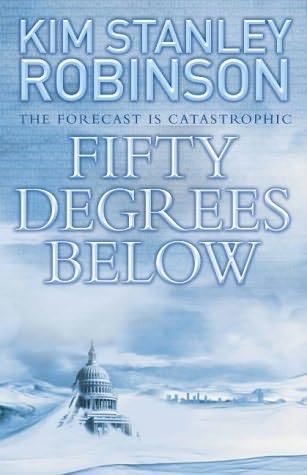
Fifty Degrees Below
by
Kim Stanley Robinson
Published 25 Oct 2005
We should have a scientist candidate for president, some emeritus biggie who can talk, explaining what the scientific approach would be, and why. A candidate using ecological theory, systems theory, what-have-you, in-out throughputs, some actual economics. . . .” Diane was shaking her head. “Who exactly would that be?” “I don’t know, Richard Feynman?” “Deceased.” “Stephen Hawking.” “British, and paralyzed. Besides, you know those emeritus guys. There isn’t a single one of them who could go through the whole process without, I don’t know. . . .” “Exploding?” Anna suggested. “Yes.” “Make up a candidate,” Anna said. “What science would do if it were in the White House.”
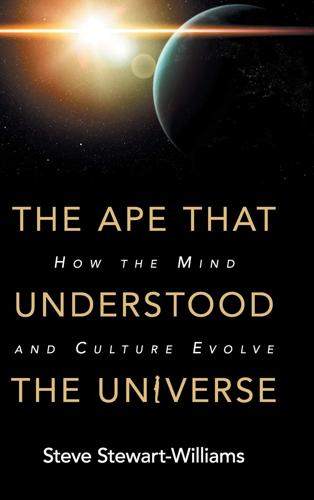
The Ape That Understood the Universe: How the Mind and Culture Evolve
by
Steve Stewart-Williams
Published 12 Sep 2018
Plato and Aristotle were almost certainly more intelligent than most people living today. And yet most people living today have a vastly more accurate view of the universe than these Ancient Greek philosophers. Indeed, most preschool children have a more accurate view, because most know that the world is a spinning rock orbiting a great ball of fire (to paraphrase the physicist Richard Feynman). In a certain sense, then, today’s preschoolers are smarter than the greatest sages of the ancient world. This has nothing to do with biological evolution, and everything to do with our ability to stockpile knowledge and add to the common pool of knowledge over time. Of course, human biology makes culture possible in the first place.
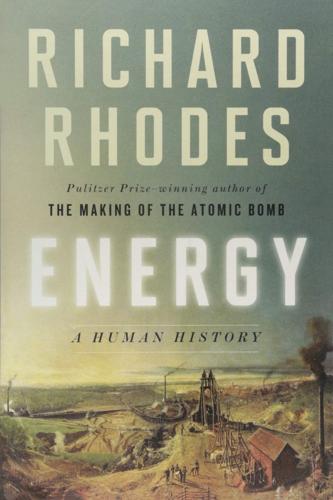
Energy: A Human History
by
Richard Rhodes
Published 28 May 2018
It was pleasant to believe, for example, that much of Nature was forever beyond the tampering reach of man.”4 It’s difficult at this distance to appreciate the immediacy of concern that thoughtful people felt for the human future in the aftermath of two world wars that together had accounted for the violent deaths of at least eighty million human beings. Years later, interviewing the physicist Richard Feynman, I asked him about that time. (I was not yet aware of his beloved wife Arline’s death from tuberculosis in June 1945, two months before the war ended, or of the grief that consumed him afterward—that part of his life story had not been revealed yet.) Feynman told me he’d been sitting in a Times Square bar one day in the summer of 1946, looking out through the darkened windows onto the passing crowd.

Model Thinker: What You Need to Know to Make Data Work for You
by
Scott E. Page
Published 27 Nov 2018
How can we not expect any single model of human behavior to be wrong? It must be. Our aim is to construct many models that as an ensemble will be useful. 5. Normal Distributions: The Bell Curve I couldn’t claim that I was smarter than sixty-five other guys—but the average of sixty-five other guys, certainly. —Richard Feynman Distributions constitute part of the core knowledge base for any modeler. Later, we use distributions to construct and analyze models of path dependence, random walks, Markov processes, search, and learning. We also require a working knowledge of distributions to measure inequality in power, income, and wealth and to perform statistical tests.

Lifespan: Why We Age—and Why We Don't Have To
by
David A. Sinclair
and
Matthew D. Laplante
Published 9 Sep 2019
And so, at the fundamental level, life is rather simple: we exist by the grace of an order created from chaos. When we toast to life, we really should be toasting to enzymes. By studying life at this level, we’ve also learned something rather important—something the Nobel Prize–winning physicist Richard Feynman expressed succinctly: “There is nothing in biology yet found that indicates the inevitability of death. This suggests to me that it is not at all inevitable and that it is only a matter of time before biologists discover what it is that is causing us the trouble.”5 It’s true: there are no biological, chemical, or physical laws that say life must end.

Radical Uncertainty: Decision-Making for an Unknowable Future
by
Mervyn King
and
John Kay
Published 5 Mar 2020
In 1986, the space shuttle Challenger exploded on launch, killing all seven astronauts on board. It was the first of two fatal accidents in the Space Shuttle programme; the second happened seventeen years later when Columbia disintegrated on re-entry into the Earth’s atmosphere, again killing all seven crew members. The brilliant Nobel Prize-winning physicist Richard Feynman was appointed to the inquiry that followed the Challenger disaster. Feynman insisted that his note of dissent from the inquiry’s bland conclusions be attached to the report. He noted that there had been a wide range of estimates of the probability of a fatal accident arising from a launch – from 1 in 100 from working engineers to 1 in 100,000 from NASA management.

Spies, Lies, and Algorithms: The History and Future of American Intelligence
by
Amy B. Zegart
Published 6 Nov 2021
In a world of ubiquitous data, AI will transform how analysis is done and who will gain the edge. As Gordon put it, “How does an intelligence community not be the best in the world of data? How are we not better at using it, finding it, assessing it, protecting it, insuring it, than everyone else?”128 Trying Not to Fool Ourselves Physicist Richard Feynman once said that analysis is how we try not to fool ourselves.129 He’s right. Estimating the future will always be a hazardous occupation, especially in intelligence. No analyst, however skilled, can ever fully know the internal pressures, thinking, aims, and maneuvers of an adversary. The world outside is hard to predict, and the world inside our own minds is prone to error.
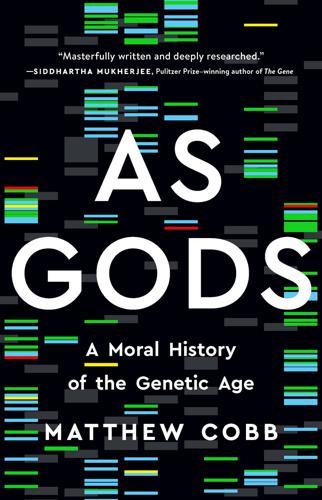
As Gods: A Moral History of the Genetic Age
by
Matthew Cobb
Published 15 Nov 2022
As early as 1891, Jacques Loeb, a German-born US biologist, had a vision of the future: ‘the idea is now hovering before me that man himself can act as a creator, even in living Nature, forming it eventually according to his will’.2 Although it took many decades, that is where we are today. When the great theoretical physicist Richard Feynman died in 1988, he left a slogan written on the chalkboard in his office that has become a watchword for many genetic engineers, and in particular for those who identify as synthetic biologists: ‘What I cannot create, I do not understand.’ By enabling us to create new forms of life, genetic engineering has indeed allowed us to greatly increase our understanding and our mastery.

Scale: The Universal Laws of Growth, Innovation, Sustainability, and the Pace of Life in Organisms, Cities, Economies, and Companies
by
Geoffrey West
Published 15 May 2017
The highly nonintuitive enhancement in nonlinear systems is popularly expressed as “the butterfly effect,” in which the mythical flapping of a butterfly’s wings in Brazil produces a hurricane in Florida. Despite 150 years of intense theoretical and experimental study, a general understanding of turbulence remains an unsolved problem in physics even though we have learned an enormous amount about it. Indeed the famous physicist Richard Feynman described turbulence as “the most important unsolved problem of classical physics.”15 Froude may not have fully recognized just how big a challenge he was facing but he did perceive that for applications to shipbuilding a new strategy was needed. It was in this context that he invented the new methodology of modeling and, by extension, the concept of scaling theory for determining how quantitative results from small-scale investigations could be used to help predict how full-size ships would behave.
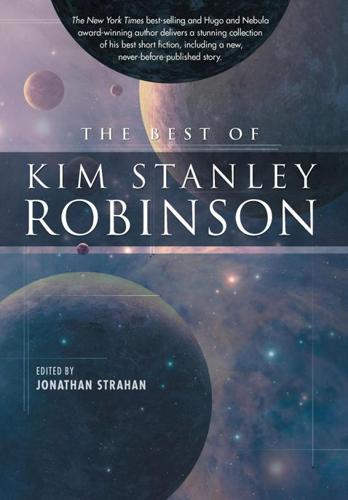
The Best of Kim Stanley Robinson
by
Kim Stanley Robinson
Published 1 Mar 2001
Three days later Nagasaki was bombed. The Japanese surrendered. Truman was re-elected. The Korean War led to the Cold War, the assassination of Kennedy on November 22nd, 1963, the Vietnam War, the collapse of the Soviet bloc in the fall of 1989. Replacing one crew with another made no larger difference. Richard Feynman’s notion of a “sum over histories” proposes that a particle does not move from point A to point B by a single path, as in classical mechanics, but rather by every possible path within the wave. Two numbers describe these possible paths, one describing the size of the wave, the other the path’s position in the crest-to-trough cycle.
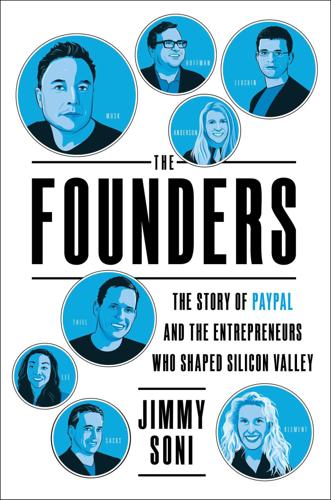
The Founders: The Story of Paypal and the Entrepreneurs Who Shaped Silicon Valley
by
Jimmy Soni
Published 22 Feb 2022
The Hitchhiker’s Guide to the Galaxy soothed Musk’s existential worries by suggesting that framing the right questions was as important as divining the answers. “A lot of times,” Musk explained, “the question is harder than the answer, and if you can properly phrase the question, then the answer is the easy part.” To Musk, physics asked the right questions. After Adams, he started to read the work of Nobel Prize–winning physicist Dr. Richard Feynman, among others. Once Musk started college, he immersed himself in physics further; in his Wharton business classes, he wrote well-received papers on the financial case for ultracapacitors and space-based energy systems. Musk relished physics questions in his classes, but he worried about the reality of physics work after graduation.

The Alignment Problem: Machine Learning and Human Values
by
Brian Christian
Published 5 Oct 2020
But by their first birthday, they are already coming to know what others want.8 Researchers are increasingly making the argument that our approach to instilling human values in machines should take the same tack. Perhaps, rather than painstakingly trying to hand-code the things we care about, we should develop machines that simply observe human behavior and infer our values and desires from that. Richard Feynman famously described the universe as “a great chess game being played by the gods. . . . We do not know what the rules of the game are; all we are allowed to do is to watch the playing.” The technical term for this in AI is “inverse reinforcement learning”—except we are the gods, and it is machines that must observe us and try to divine the rules by which we move.
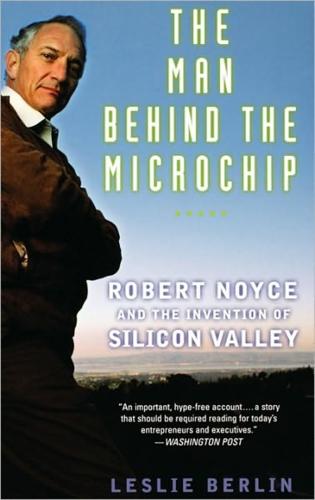
The Man Behind the Microchip: Robert Noyce and the Invention of Silicon Valley
by
Leslie Berlin
Published 9 Jun 2005
You deserve, far beyond most winners, this highest honor of the IEEE.”34 At the White House in 1979, President Carter presented Noyce the National Medal of Science, the highest award granted for scientific achievement in the United States. Noyce was one of 20 recipients that year; sharing the stage with him were such luminaries as quantum physicist Richard Feynman, DNA pioneer Arthur Kornberg, and nuclear physicist (and Noyce’s one-time MIT professor) Victor Weisskopf. Ann Bowers wrote in her 1978 Christmas letter that “all of this [recognition] has made [Noyce] much in demand as a speaker. He seems to be a 246 THE MAN BEHIND THE MICROCHIP model of entrepreneurial endeavor.”

Extreme Money: Masters of the Universe and the Cult of Risk
by
Satyajit Das
Published 14 Oct 2011
Sean Collins, a senior producer with NPR News, quoted in Dan Gardner (2008) Risk—The Science and Politics of Fear, Virgin Books, London: 200. 10. Donald Rumsfeld (28 February 2003) quoted in Hart Seely (2005) Pieces of Intelligence: The Existential Poetry of Donald H. Rumsfeld, Free Press, New York: 57. 11. Ibid: 23. 12. Richard Feynman in a letter to Armando Garcia Jr (11 December 1985). 13. Attributed to Albert Einstein. 14. Attributed to Winston Churchill. 15. On CBS in October 2008, responding to a question to name another Supreme Court decision, she disagreed with other than Roe v. Wade, which legalized abortion in the USA. 16.
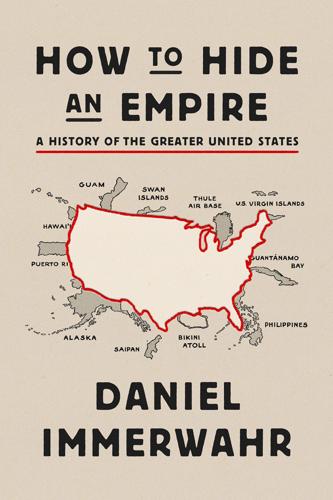
How to Hide an Empire: A History of the Greater United States
by
Daniel Immerwahr
Published 19 Feb 2019
This was the start, the chemist Jacob Rosin predicted, of the “synthetic age.” It would bring “freedom from the plant” and “freedom from the mine.” In other words, as the laboratory replaced the land as the source of materials, the United States would liberate itself from natural resource constraints. In 1959 the physicist Richard Feynman bragged that the time was soon coming when scientists would know “how to synthesize absolutely anything.” Synthesizing anything—that was a lot to ask for. But it wasn’t absurd. Two years before Feynman’s prediction, in 1957, the chemical company Monsanto had installed the “House of the Future,” made entirely from synthetics, at Tomorrowland in Disneyland.

Empire of AI: Dreams and Nightmares in Sam Altman's OpenAI
by
Karen Hao
Published 19 May 2025
Instead of translating languages, as Google had been using Transformers for, he switched it to learn text generation by predicting the most probable next word in a sentence. Early on, OpenAI researchers had hypothesized that generative models would be an important step to reaching AGI. The company explained in a blog post in heavily anthropomorphized terms that the situation was akin to a famous quote from theoretical physicist Richard Feynman: “What I cannot create, I do not understand.” Sutskever had a different way of framing it internally: Training a model to generate something convincing would force it to compress data about the world into its essence. “Intelligence is compression,” Sutskever would say, elaborating in a 2016 memo his strong belief that compression was in fact the only thing needed to achieve artificial general intelligence.
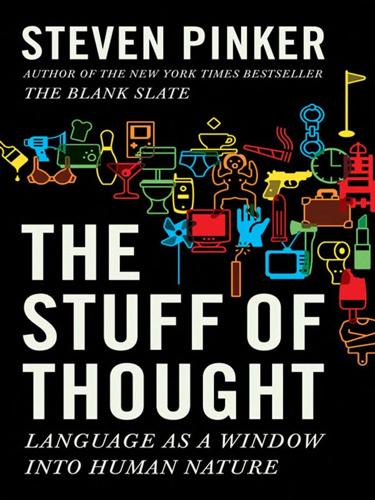
The Stuff of Thought: Language as a Window Into Human Nature
by
Steven Pinker
Published 10 Sep 2007
The intuitive physics embedded in language also contaminates people’s physical reasoning.135 When asked to diagram the forces that impinge on a ball when it is tossed straight up in the air, most college students say that when the ball is on its way up, the force pushing it upward is stronger than the one pulling it down; at the zenith, the two forces are equal; and on the way down, the downward force is stronger. The correct answer is that a single force, gravity, impinges on the object the whole time. When relativity and quantum physics were accepted in the twentieth century, many physicists commented on the violence they do to common sense. Richard Feynman, for example, said, “I think I can safely say that no one understands quantum mechanics. . . . Do not keep asking yourself, if you can possibly avoid it, ‘But how can it be like that?’ . . . Nobody knows how it can be like that.”136 What is less appreciated is that classical Newtonian physics is also deeply counterintuitive.

The Innovators: How a Group of Inventors, Hackers, Geniuses and Geeks Created the Digital Revolution
by
Walter Isaacson
Published 6 Oct 2014
The two officers got out of the car to confront Sergey, but his parents were able to defuse the situation. “My rebelliousness, I think, came out of being born in Moscow. I’d say this is something that followed me into adulthood.”130 Among the books that inspired Brin were the memoirs of the physicist Richard Feynman, who touted the power that comes from joining art to science the way that Leonardo da Vinci did. “I remember he had an excerpt where he was explaining how he really wanted to be a Leonardo, an artist and a scientist,” said Brin. “I found that pretty inspiring. I think that leads to having a fulfilling life.”131 He was able to graduate from high school in three years and do the same at the University of Maryland, where he got an undergraduate degree in math and computer science.
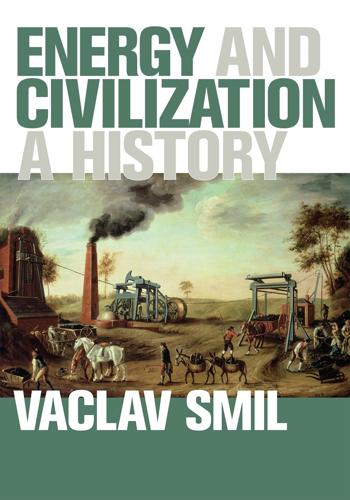
Energy and Civilization: A History
by
Vaclav Smil
Published 11 May 2017
This is what has happened with the idea expressed by the word energy. No other concept has so unified our understanding of experience. But what is energy? Surprisingly, even Nobel Prize winners have great difficulty in giving a satisfactory answer to that seemingly simple question. In his famous Lectures on Physics, Richard Feynman (1918–1988) stressed that “it is important to realize that in physics today, we have no knowledge of what energy is. We do not have a picture that energy comes in little blobs of a definite amount” (Feynman 1988, 4–2). What we do know is that all matter is energy at rest, that energy manifests itself in a multitude of ways, and that these distinct energy forms are linked by numerous conversions, many of them universal, ubiquitous, and incessant, others highly localized, infrequent, and ephemeral (fig. 1.1).
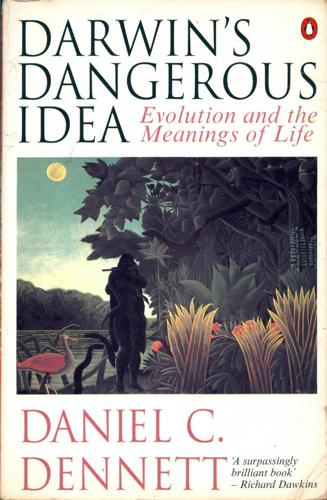
Darwin's Dangerous Idea: Evolution and the Meanings of Life
by
Daniel C. Dennett
Published 15 Jan 1995
He doesn't have to know the details of neurophysiology (though he's interested, unlike many other linguists) in order to reach confident and reliable conclusions about the structure of the processes, and the representations they transform. What we learn at this abstract level is scientifically important in its own right. It is, indeed, the basis of everything important. Nobody has ever put it better than the physicist Richard Feynman: Is no one inspired by our present picture of the universe? This value of science remains unsung by singers: you are reduced to hearing not a song or poem, but an evening lecture about it. This is not yet a scientific age. Perhaps one of the reasons for this silence is that you have to know how to read the music.

Designing Data-Intensive Applications: The Big Ideas Behind Reliable, Scalable, and Maintainable Systems
by
Martin Kleppmann
Published 17 Apr 2017
.: “Orleans: Distributed Vir‐ tual Actors for Programmability and Scalability,” Microsoft Research Technical Report MSR-TR-2014-41, March 2014. [52] “Microsoft Project Orleans Documentation,” Microsoft Research, dotnet.git‐ hub.io, 2015. [53] David Mercer, Sean Hinde, Yinso Chen, and Richard A O’Keefe: “beginner: Updating Data Structures,” email thread on erlang-questions mailing list, erlang.com, October 29, 2007. [54] Fred Hebert: “Postscript: Maps,” learnyousomeerlang.com, April 9, 2014. Summary | 143 PART II Distributed Data For a successful technology, reality must take precedence over public relations, for nature cannot be fooled. —Richard Feynman, Rogers Commission Report (1986) In Part I of this book, we discussed aspects of data systems that apply when data is stored on a single machine. Now, in Part II, we move up a level and ask: what hap‐ pens if multiple machines are involved in storage and retrieval of data? There are various reasons why you might want to distribute a database across multi‐ ple machines: Scalability If your data volume, read load, or write load grows bigger than a single machine can handle, you can potentially spread the load across multiple machines.
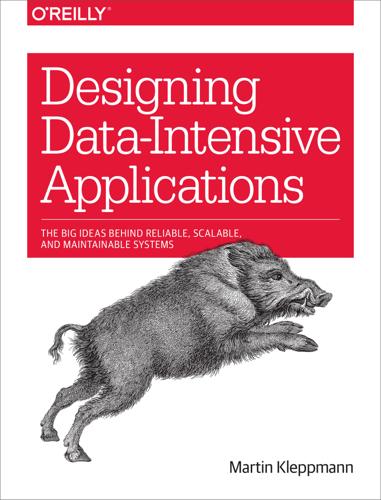
Designing Data-Intensive Applications: The Big Ideas Behind Reliable, Scalable, and Maintainable Systems
by
Martin Kleppmann
Published 16 Mar 2017
[53] David Mercer, Sean Hinde, Yinso Chen, and Richard A O’Keefe: “beginner: Updating Data Structures,” email thread on erlang-questions mailing list, erlang.com, October 29, 2007. [54] Fred Hebert: “Postscript: Maps,” learnyousomeerlang.com, April 9, 2014. Part II. Distributed Data For a successful technology, reality must take precedence over public relations, for nature cannot be fooled. Richard Feynman, Rogers Commission Report (1986) In Part I of this book, we discussed aspects of data systems that apply when data is stored on a single machine. Now, in Part II, we move up a level and ask: what happens if multiple machines are involved in storage and retrieval of data? There are various reasons why you might want to distribute a database across multiple machines: Scalability If your data volume, read load, or write load grows bigger than a single machine can handle, you can potentially spread the load across multiple machines.
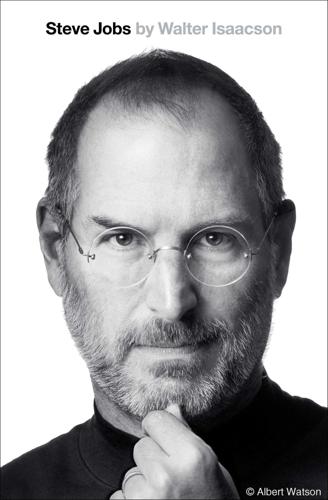
Steve Jobs
by
Walter Isaacson
Published 23 Oct 2011
Each ad featured a black-and-white portrait of an iconic historical figure with just the Apple logo and the words “Think Different” in the corner. Making it particularly engaging was that the faces were not captioned. Some of them—Einstein, Gandhi, Lennon, Dylan, Picasso, Edison, Chaplin, King—were easy to identify. But others caused people to pause, puzzle, and maybe ask a friend to put a name to the face: Martha Graham, Ansel Adams, Richard Feynman, Maria Callas, Frank Lloyd Wright, James Watson, Amelia Earhart. Most were Jobs’s personal heroes. They tended to be creative people who had taken risks, defied failure, and bet their career on doing things in a different way. A photography buff, he became involved in making sure they had the perfect iconic portraits.
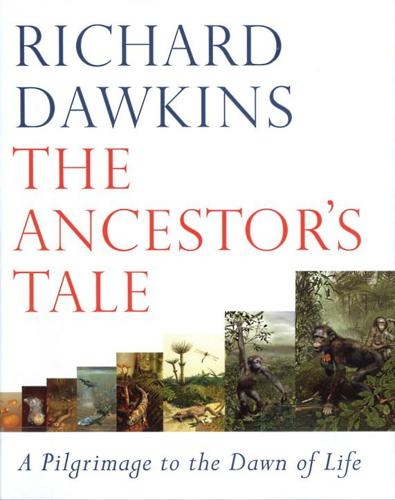
The Ancestor's Tale: A Pilgrimage to the Dawn of Evolution
by
Richard Dawkins
Published 1 Jan 2004
The Hox story shows that animals are not a highly varied, unconnected miscellany of phyla, each with its own fundamental body plan acquired and maintained in lonely isolation. If you forget morphology and look only at the genes, it emerges that all animals are minor variations on a very particular theme. What delight to be a zoologist at such a time. The Rotifer's Tale The brilliant theoretical physicist Richard Feynman is rumoured to have said, 'If you think you understand quantum theory, you don't understand quantum theory.' I am tempted by an evolutionist's equivalent: 'If you think you understand sex, you don't understand sex.' The three modern Darwinians from whom I believe we have the most to learn -- John Maynard Smith, W.

Global Catastrophic Risks
by
Nick Bostrom
and
Milan M. Cirkovic
Published 2 Jul 2008
Where did I even get those numbers in the first place? I once met a lawyer who had made up his own theory of physics. I said to the lawyer: 'You cannot invent your own physics theories without knowing math and studying for years; physics is hard.' He replied: 'But if you really understand physics you can explain it to your grandmother, Richard Feynman told me so.' And I said to him: 'Would you advise a friend to argue his own court case?' At this he fell silent. He knew abstractly that physics was difficult, but I think it had honestly never occurred to him that physics might be as difficult as lawyering. One of many biases not discussed in this chapter describes the biasing effect of not knowing what we do not know.

Enlightenment Now: The Case for Reason, Science, Humanism, and Progress
by
Steven Pinker
Published 13 Feb 2018
Don’t let it happen.”15 An endorsement of scientific thinking must first of all be distinguished from any belief that members of the occupational guild called “science” are particularly wise or noble. The culture of science is based on the opposite belief. Its signature practices, including open debate, peer review, and double-blind methods, are designed to circumvent the sins to which scientists, being human, are vulnerable. As Richard Feynman put it, the first principle of science is “that you must not fool yourself—and you are the easiest person to fool.” For the same reason, a call for everyone to think more scientifically must not be confused with a call to hand decision-making over to scientists. Many scientists are naïfs when it comes to policy and law, and cook up nonstarters like world government, mandatory licensing of parents, and escaping a befouled Earth by colonizing other planets.
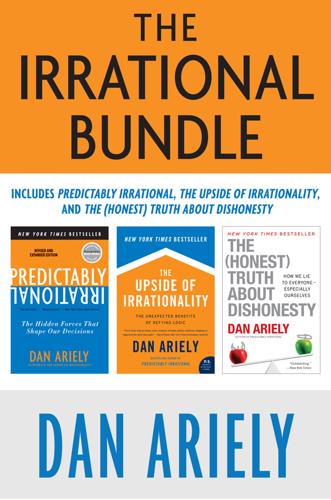
The Irrational Bundle
by
Dan Ariely
Published 3 Apr 2013
We’re storytelling creatures by nature, and we tell ourselves story after story until we come up with an explanation that we like and that sounds reasonable enough to believe. And when the story portrays us in a more glowing and positive light, so much the better. Cheating Myself In a commencement speech at Cal Tech in 1974, the physicist Richard Feynman told graduates, “The first principle is that you must not fool yourself—and you are the easiest person to fool.” As we have seen so far, we human beings are torn by a fundamental conflict—our deeply ingrained propensity to lie to ourselves and to others, and the desire to think of ourselves as good and honest people.
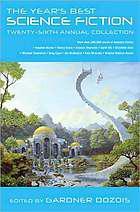
The Year's Best Science Fiction: Twenty-Sixth Annual Collection
by
Gardner Dozois
Published 23 Jun 2009
Erdmann finally said, in a voice that still sounded odd to Carrie. “It’s fairly comfortable. For a sofa.” SIX Not possible. The most ridiculous coincidence. That was all—coincidence. Simultaneity was not cause-and-effect. Even the dimmest physics undergraduate knew that. In his mind, Henry heard Richard Feynman say about string theory, “I don’t like that they’re not calculating anything. I don’t like that they don’t check their ideas. I don’t like that for anything that disagrees with an experiment, they cook up an explanation. . . . The first principle is that you must not fool yourself—and you are the easiest person to fool.”
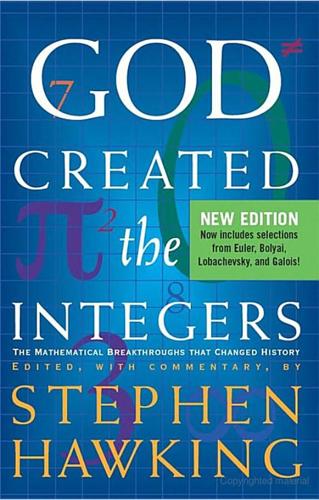
God Created the Integers: The Mathematical Breakthroughs That Changed History
by
Stephen Hawking
Published 28 Mar 2007
CONTENTS Introduction EUCLID (C. 325BC–265BC) His Life and Work Selections from Euclid’s Elements Book I: Basic Geometry—Definitions, Postulates, Common Notions; and Proposition 47, (leading up to the Pythagorean Theorem) Book V: The Eudoxian Theory of Proportion—Definitions & Propositions Book VII: Elementary Number Theory—Definitions & Propositions Book IX: Proposition 20: The Infinitude of Prime Numbers Book IX: Proposition 36: Even Perfect Numbers Book X: Commensurable and Incommensurable Magnitudes ARCHIMEDES (287BC–212BC) His Life and Work Selections from The Works of Archimedes On the Sphere and Cylinder, Books I and II Measurement of a Circle The Sand Reckoner The Methods DIOPHANTUS (C. 200–284) His Life and Work Selections from Diophantus of Alexandria, A Study in the History of Greek Algebra Book II Problems 8–35 Book III Problems 5–21 Book V Problems 1–29 RENÉ DESCARTES (1596–1650) His Life and Work The Geometry of Rene Descartes ISAAC NEWTON (1642–1727) His Life and Work Selections from Principia On First and Last Ratios of Quantities LEONHARD EULER (1707–1783) His Life and Work On the sums of series of reciprocals (De summis serierum reciprocarum) The Seven Bridges of Konigsberg Proof that Every Integer is A Sum of Four Squares PIERRE SIMON LAPLACE (1749–1827) His Life and Work A Philosophical Essay on Probabilities JEAN BAPTISTE JOSEPH FOURIER (1768–1830) His Life and Work Selection from The Analytical Theory of Heat Chapter III: Propagation of Heat in an Infinite Rectangular Solid (The Fourier series) CARL FRIEDRICH GAUSS (1777–1855) His Life and Work Selections from Disquisitiones Arithmeticae (Arithmetic Disquisitions) Section III Residues of Powers Section IV Congruences of the Second Degree AUGUSTIN-LOUIS CAUCHY (1789–1857) His Life and Work Selections from Oeuvres complètes d’Augustin Cauchy Résumé des leçons données à l’École Royale Polytechnique sur le calcul infinitésimal (1823), series 2, vol. 4 Lessons 3–4 on differential calculus Lessons 21–24 on the integral NIKOLAI IVANOVICH LOBACHEVSKY (1792–1856) His Life and Work Geometrical Researches on the Theory of Parallels JÁNOS BOLYAI (1802–1860) His Life and Work The Science of Absolute Space ÉVARISTE GALOIS (1811–1832) His Life and Work On the conditions that an equation be soluble by radicals Of the primitive equations which are soluble by radicals On Groups and Equations and Abelian Integrals GEORGE BOOLE (1815–1864) His Life and Work An Investigation of the Laws of Thought BERNHARD RIEMANN (1826–1866) His Life and Work On the Representability of a Function by Means of a Trigonometric Series (Ueber die Darstellbarkeit eine Function durch einer trigonometrische Reihe) On the Hypotheses which lie at the Bases of Geometry (Ueber die Hypothesen, welche der Geometrie zu Grunde liegen) On the Number of Prime Numbers Less than a Given Quantity (Ueber die Anzahl der Primzahlen unter einer gegebenen Grösse) KARL WEIERSTRASS (1815–1897) His Life and Work Selected Chapters on the Theory of Functions, Lecture Given in Berlin in 1886, with the Inaugural Academic Speech, Berlin 1857 § 7 Gleichmässige Stetigkeit (Uniform Continuity) RICHARD DEDEKIND (1831–1916) His Life and Work Essays on the Theory of Numbers GEORG CANTOR (1848–1918) His Life and Work Selections from Contributions to the Founding of the Theory of Transfinite Numbers Articles I and II HENRI LEBESGUE (1875–1941) His Life and Work Selections from Integrale, Longeur, Aire (Intergral, Length, Area) Preliminaries and Integral KURT GÖDEL (1906–1978) His Life and Work On Formally Undecidable Propositions of Principia Mathematica and Related Systems ALAN TURING (1912–1954) His Life and Work On computable numbers with an application to the Entscheidungsproblem, Proceedings of the London Mathematical Society INTRODUCTION WE ARE LUCKY TO LIVE IN AN AGE LN WHICH WE ARE STILL MAKING DISCOVERIES. IT IS LIKE THE DISCOVERY OF AMERICA-YOU ONLY DISCOVER IT ONCE. THE AGE IN WHICH WE LIVE IS THE AGE IN WHICH WE ARE DISCOVERING THE FUNDAMENTAL LAWS OF NATURE . . . —AMERICAN PHYSICIST RICHARD FEYNMAN, SPOKEN IN 1964 Showcasing excerpts from thirty-one of the most important works in the history of mathematics (four of which have been translated into English for the very first time), this book is a celebration of the mathematicians who helped move us forward in our understanding of the world and who paved the way for our current age of science and technology.